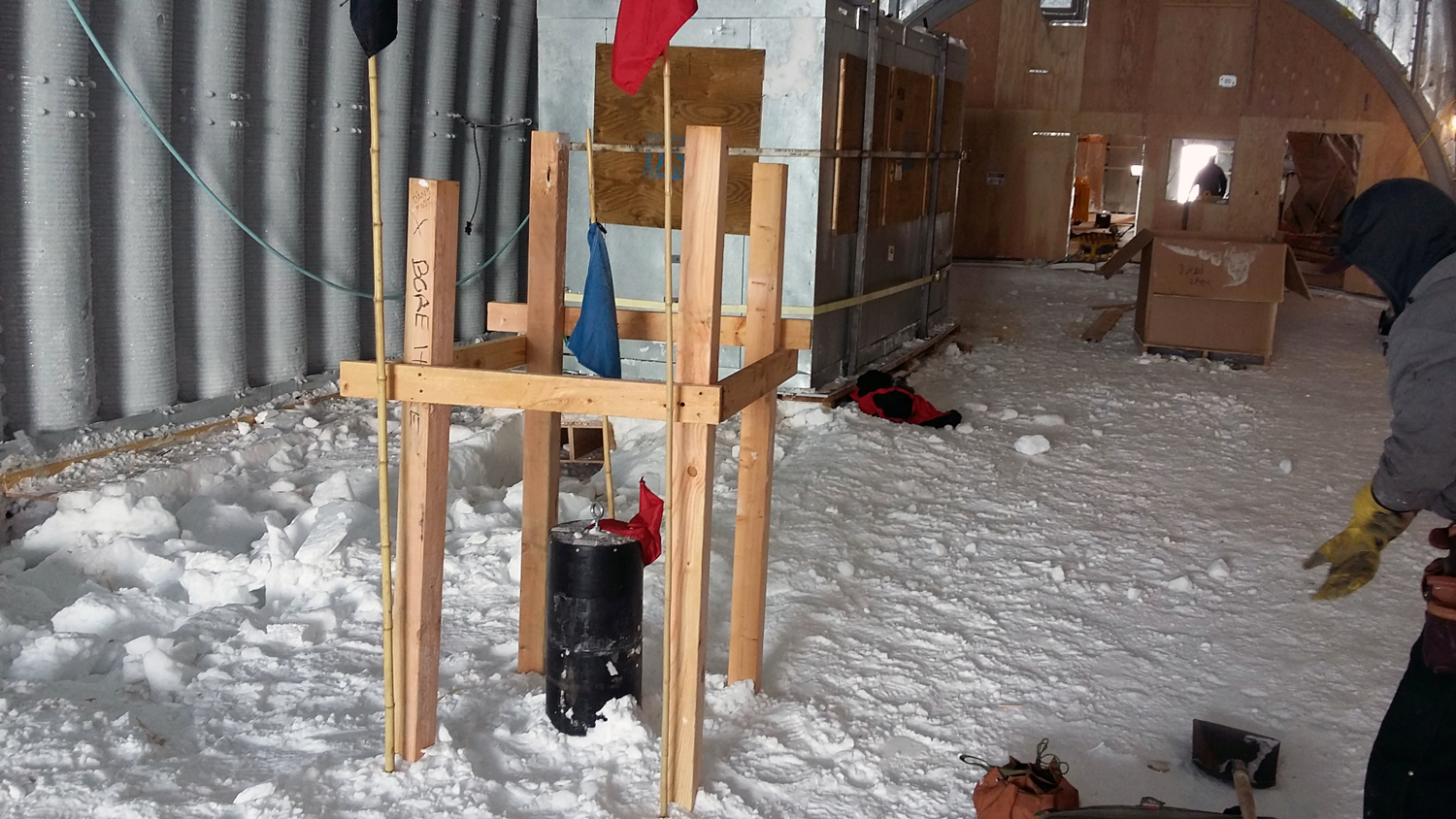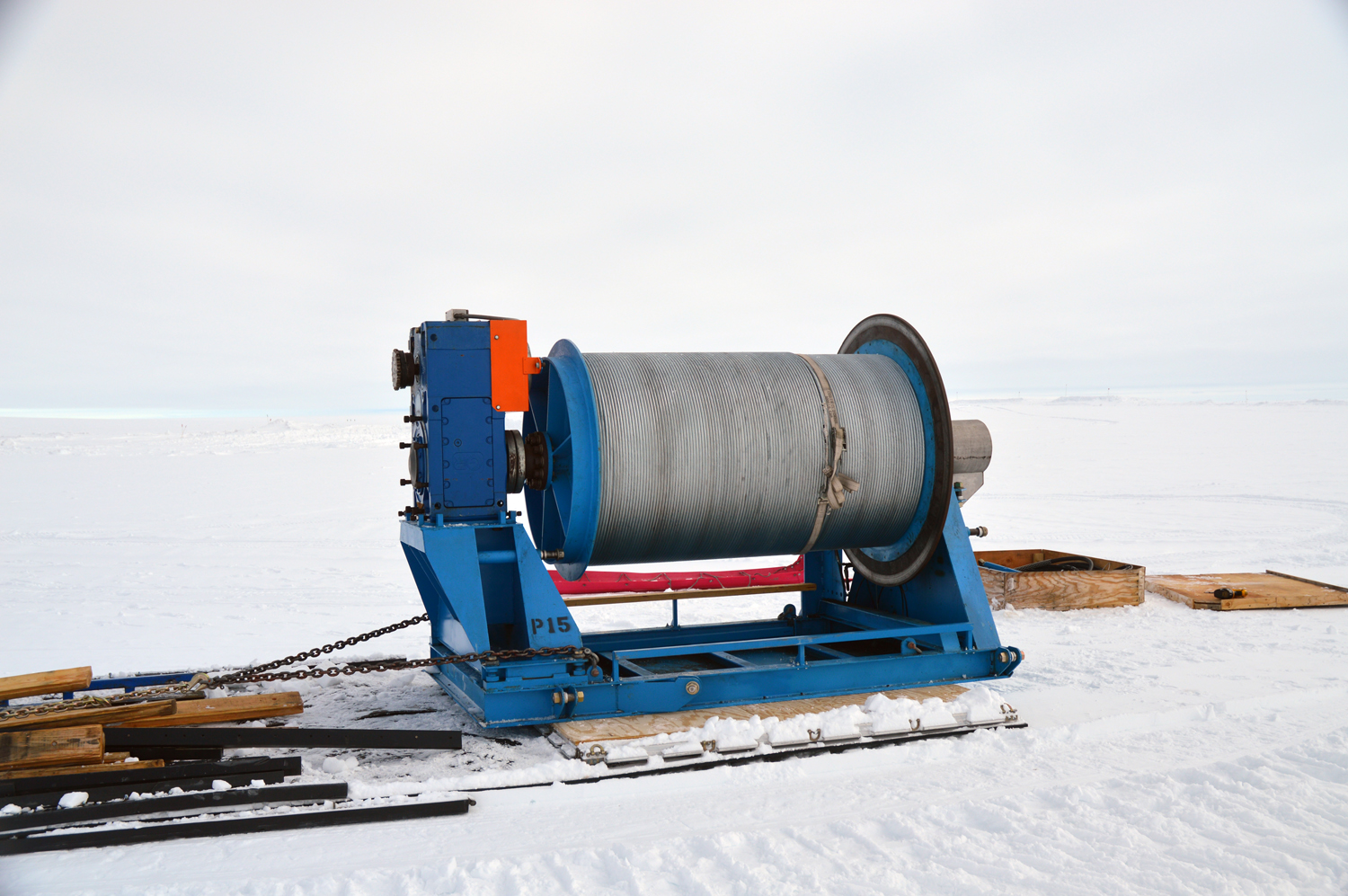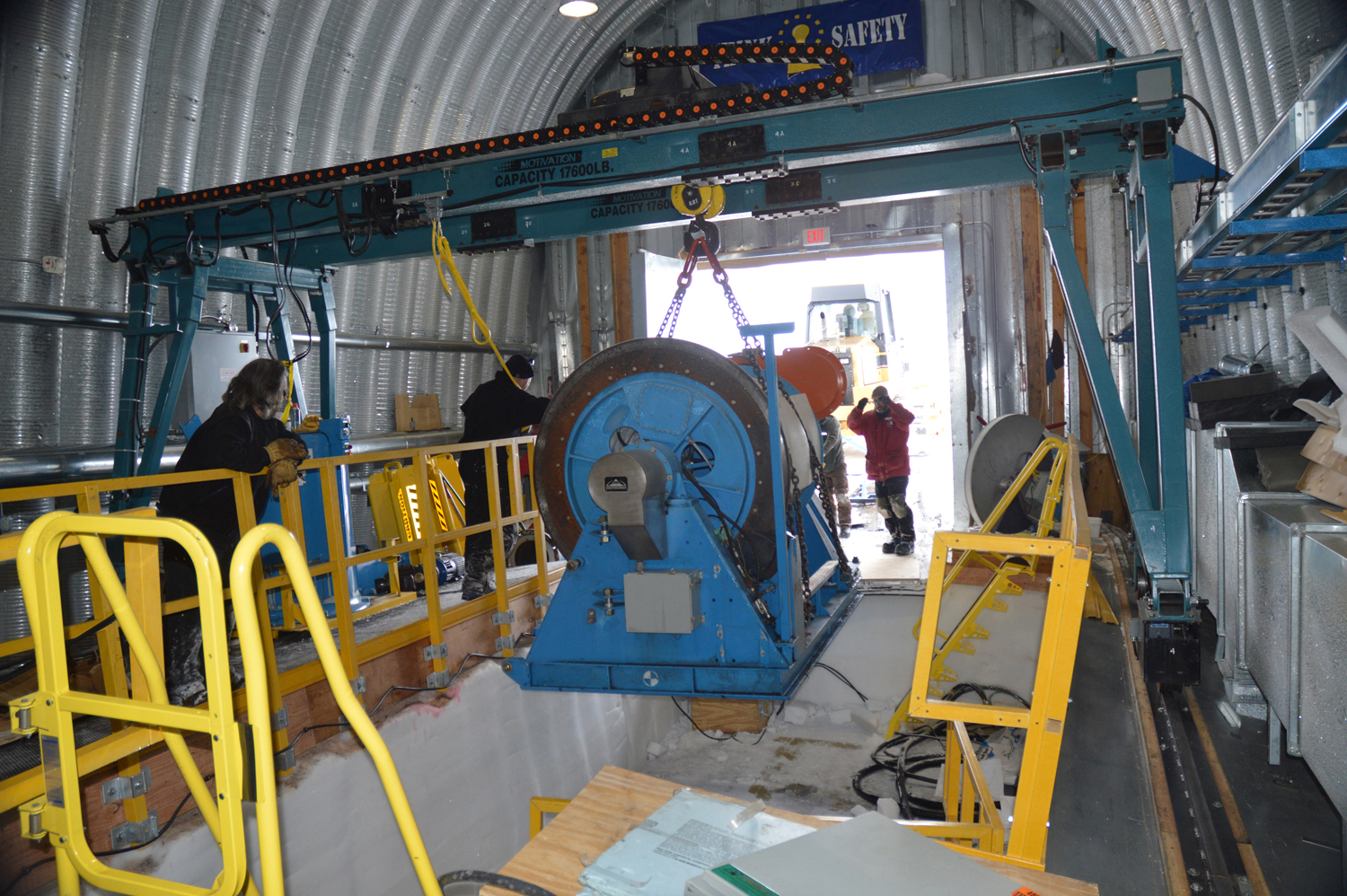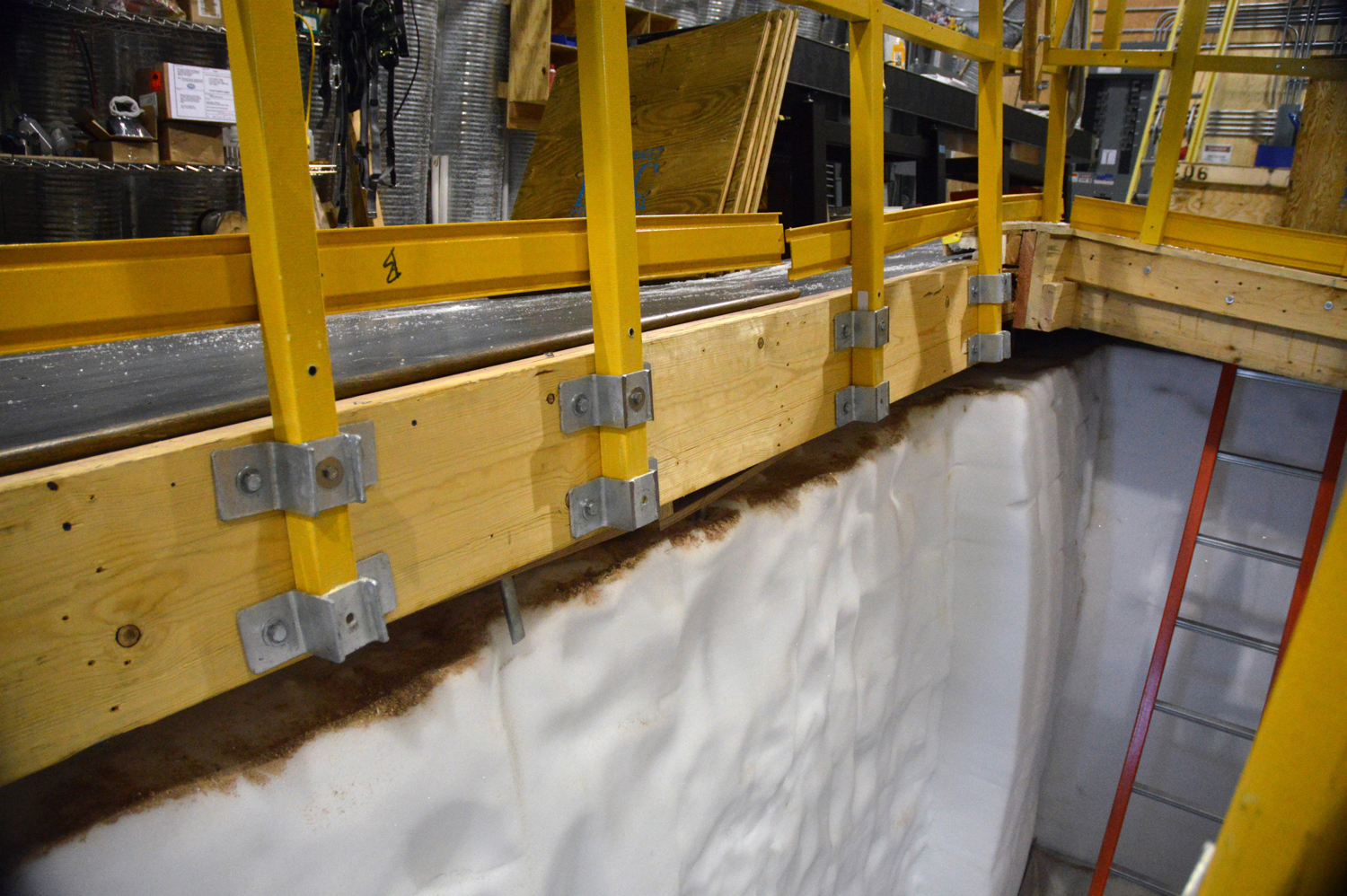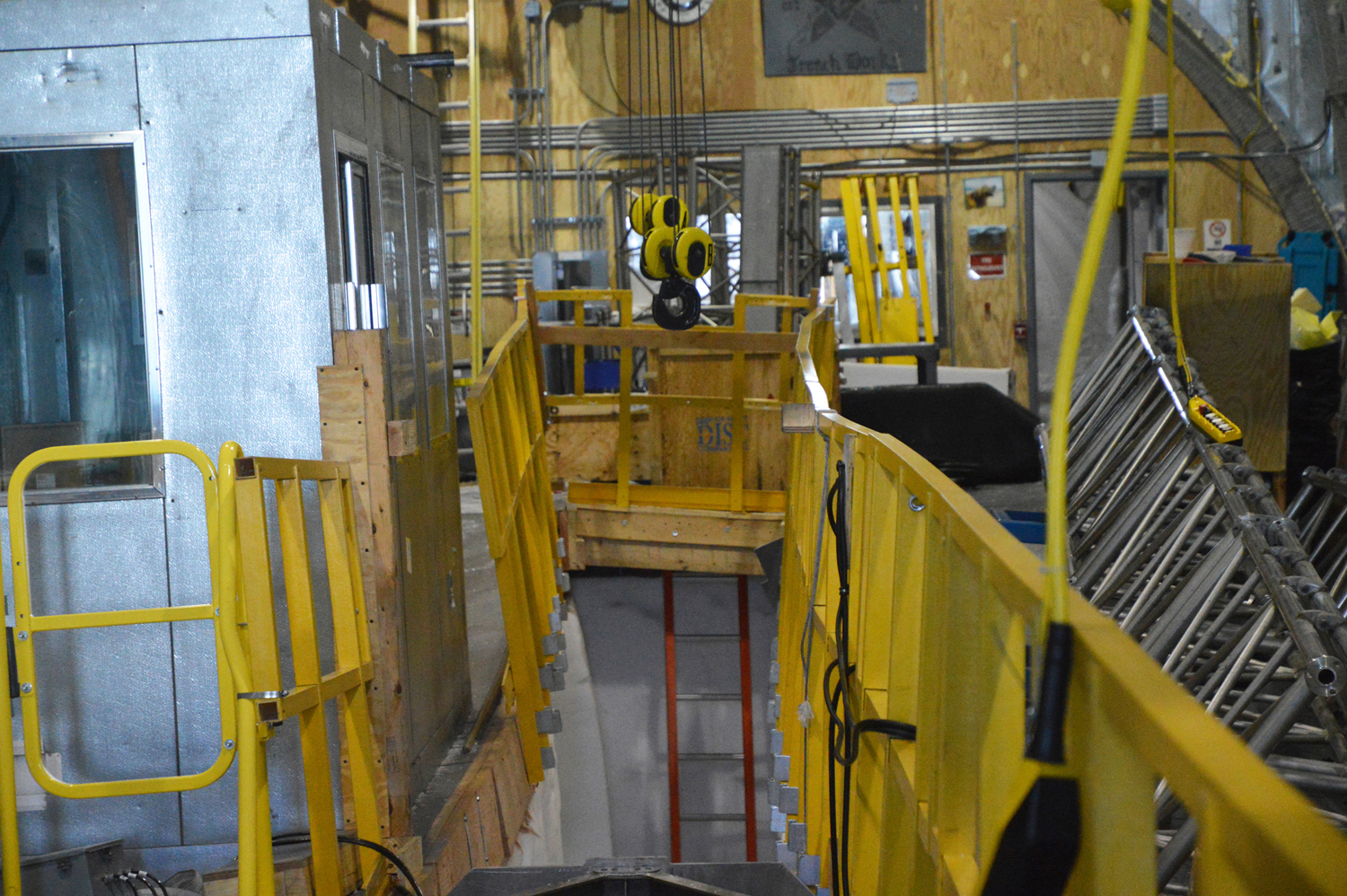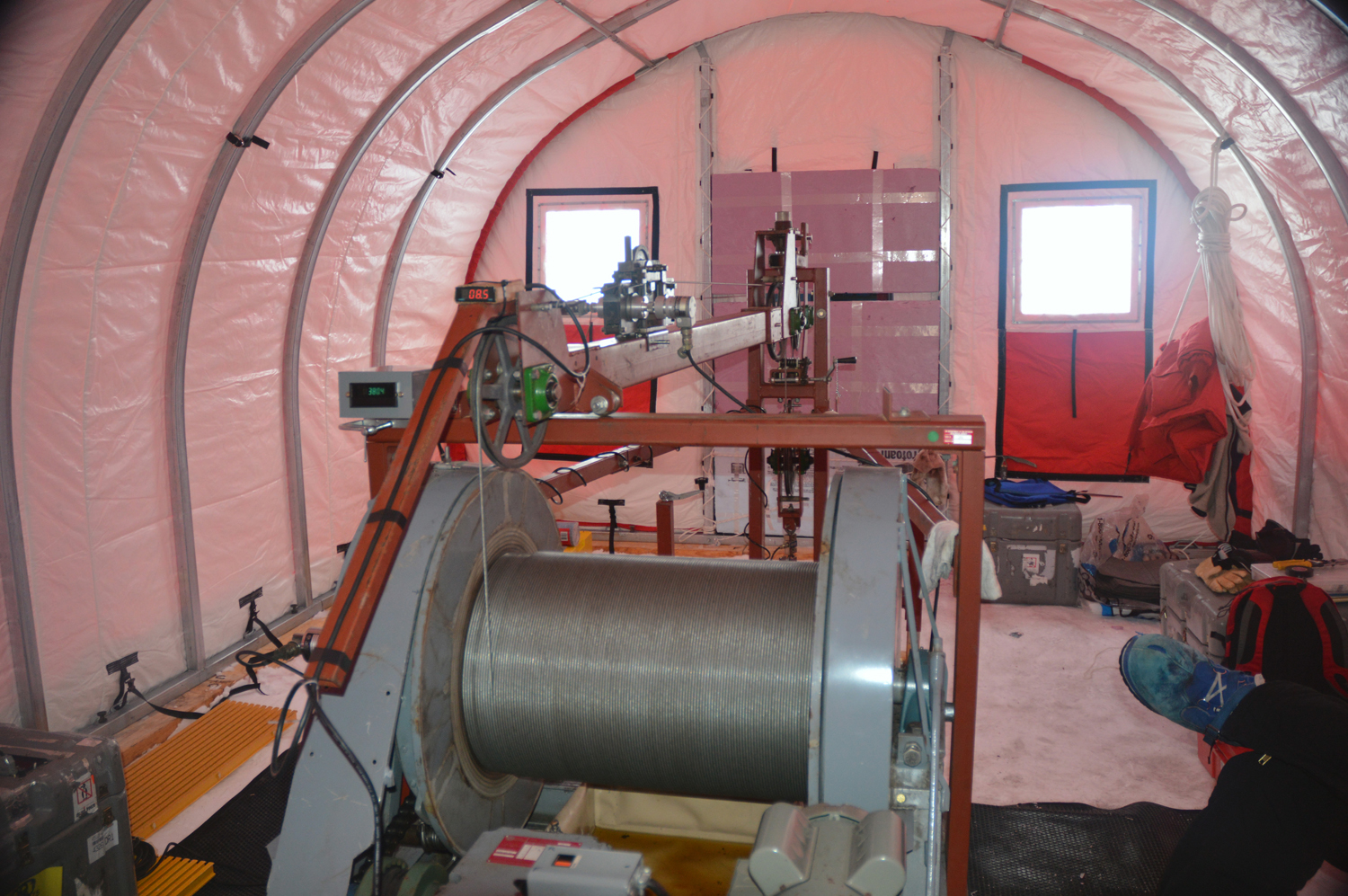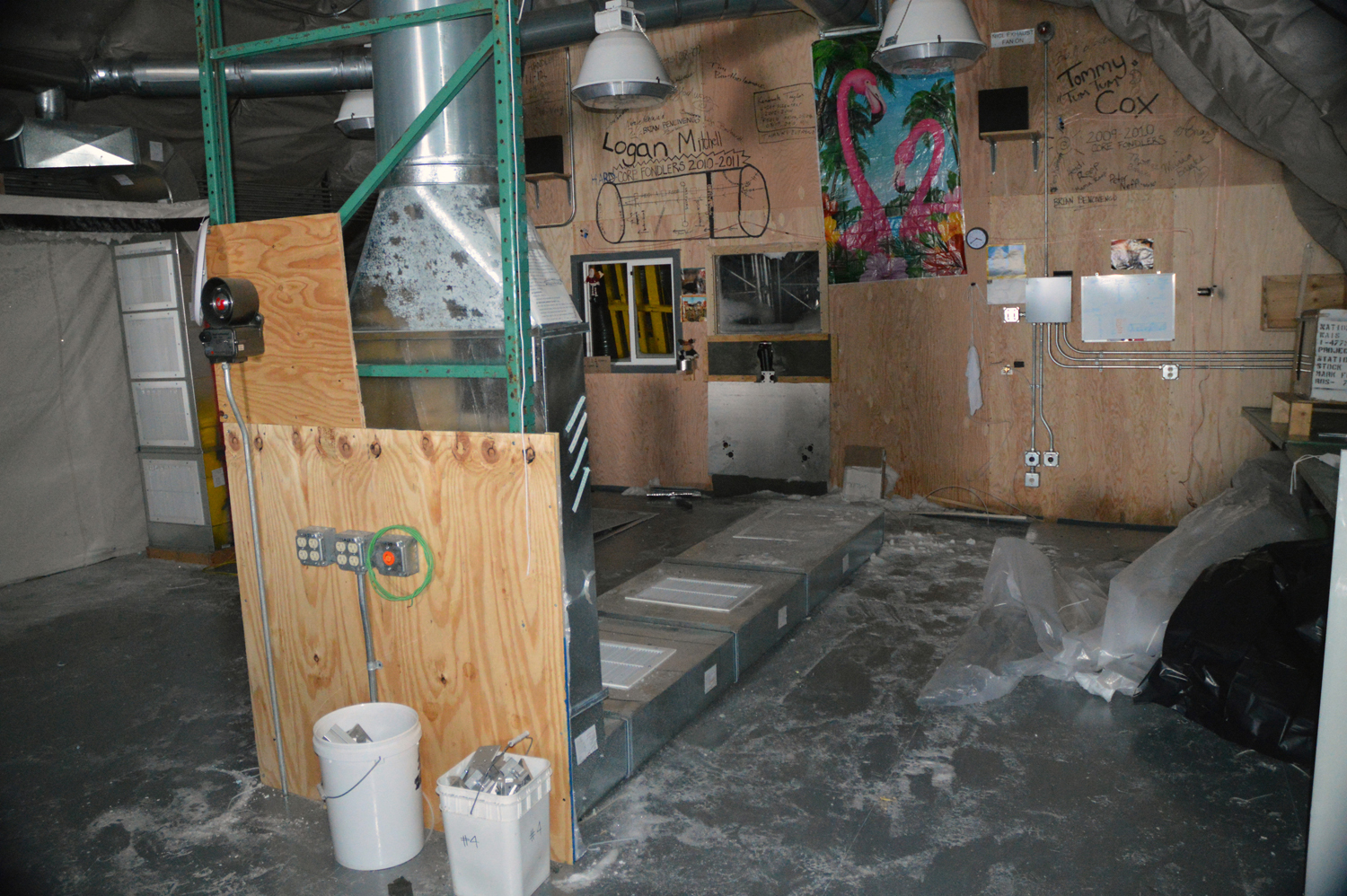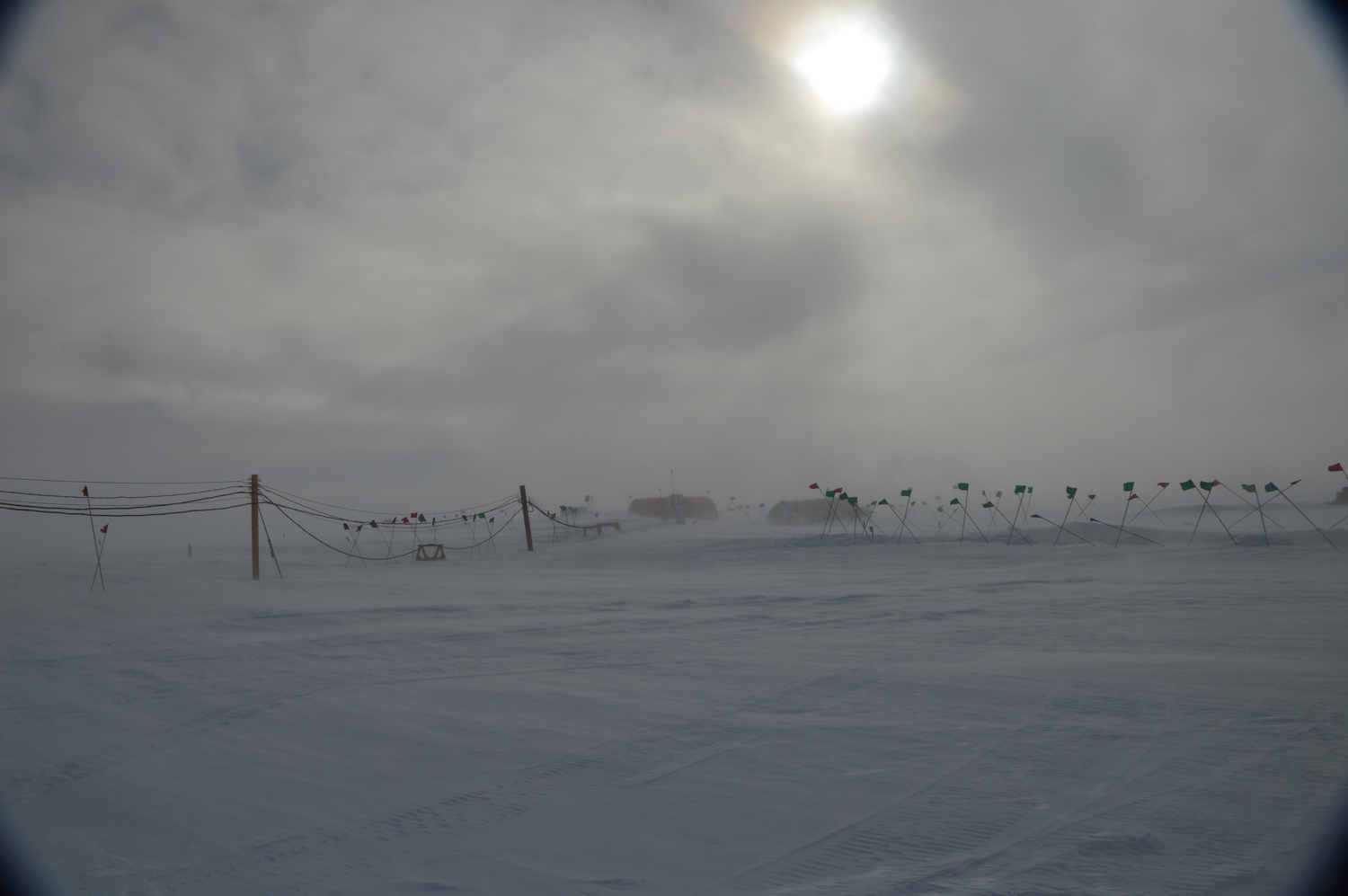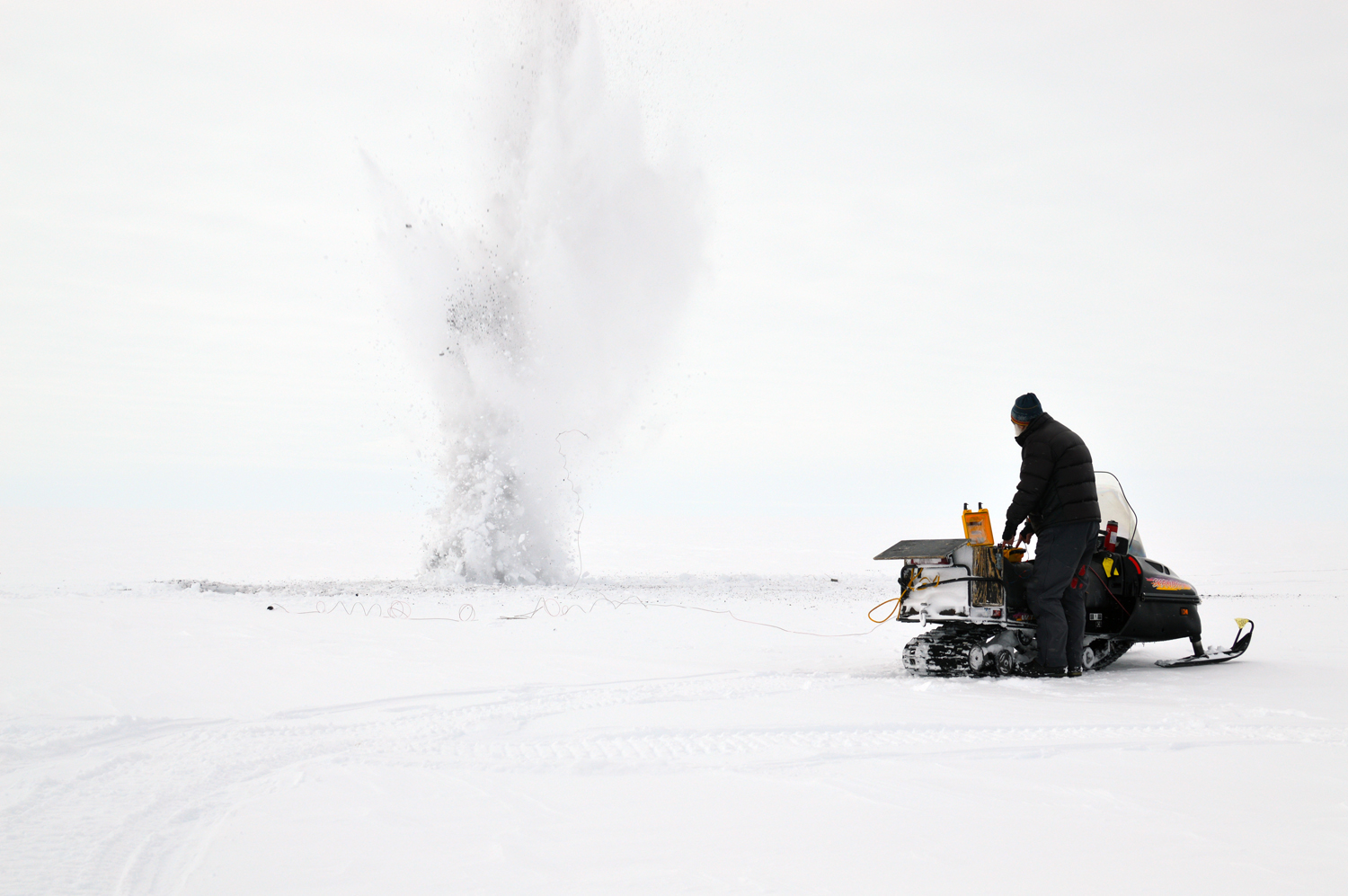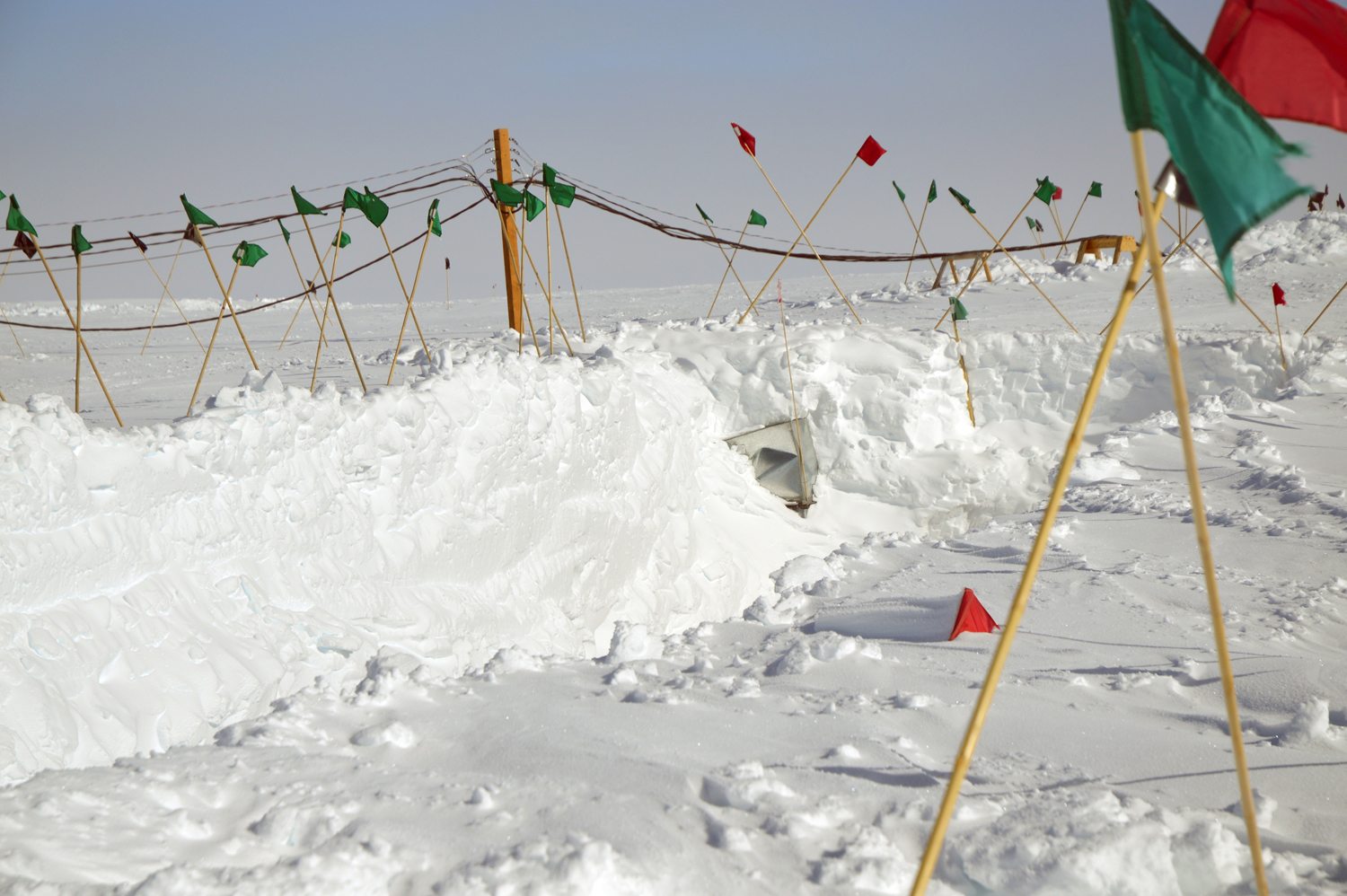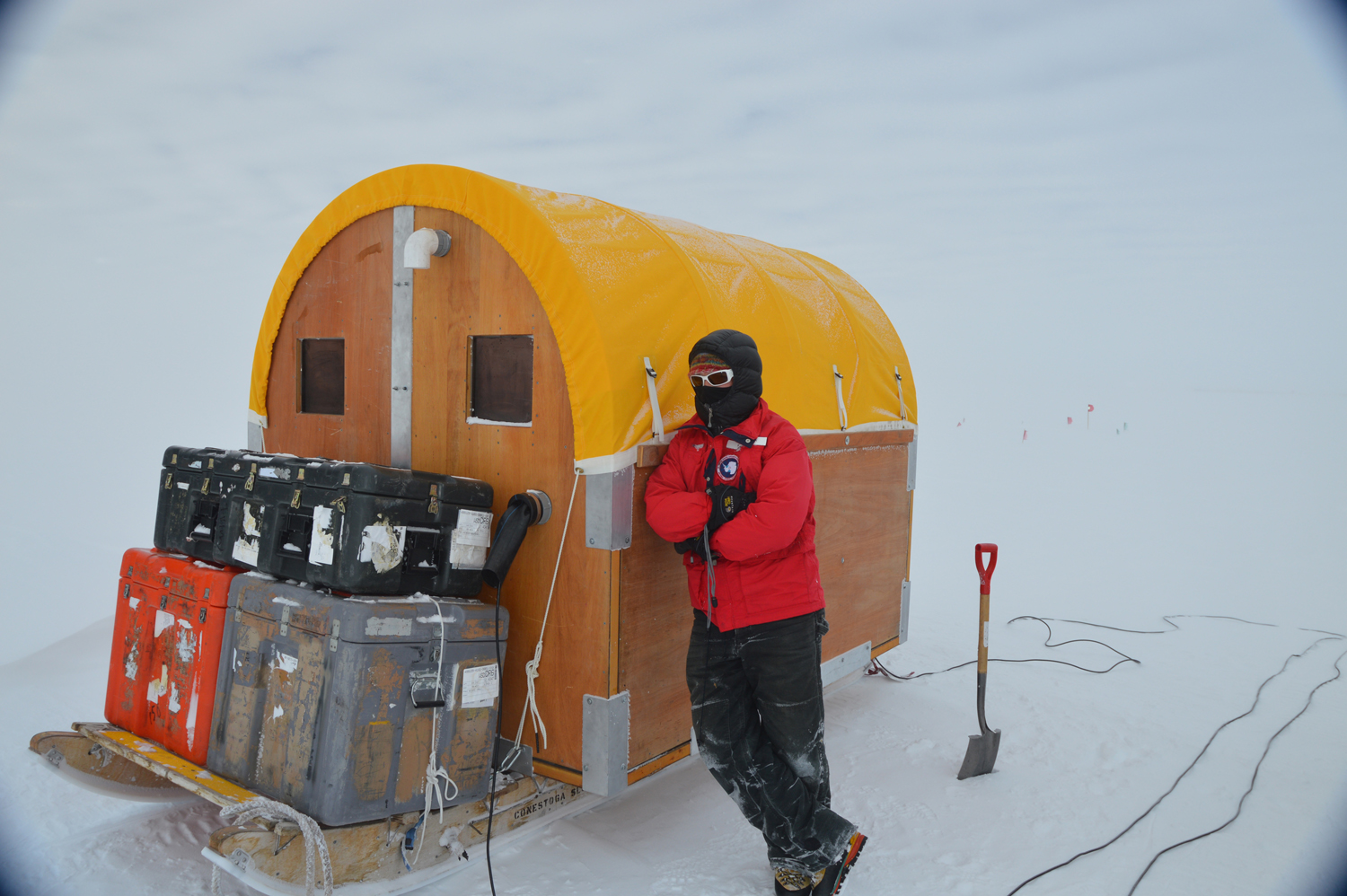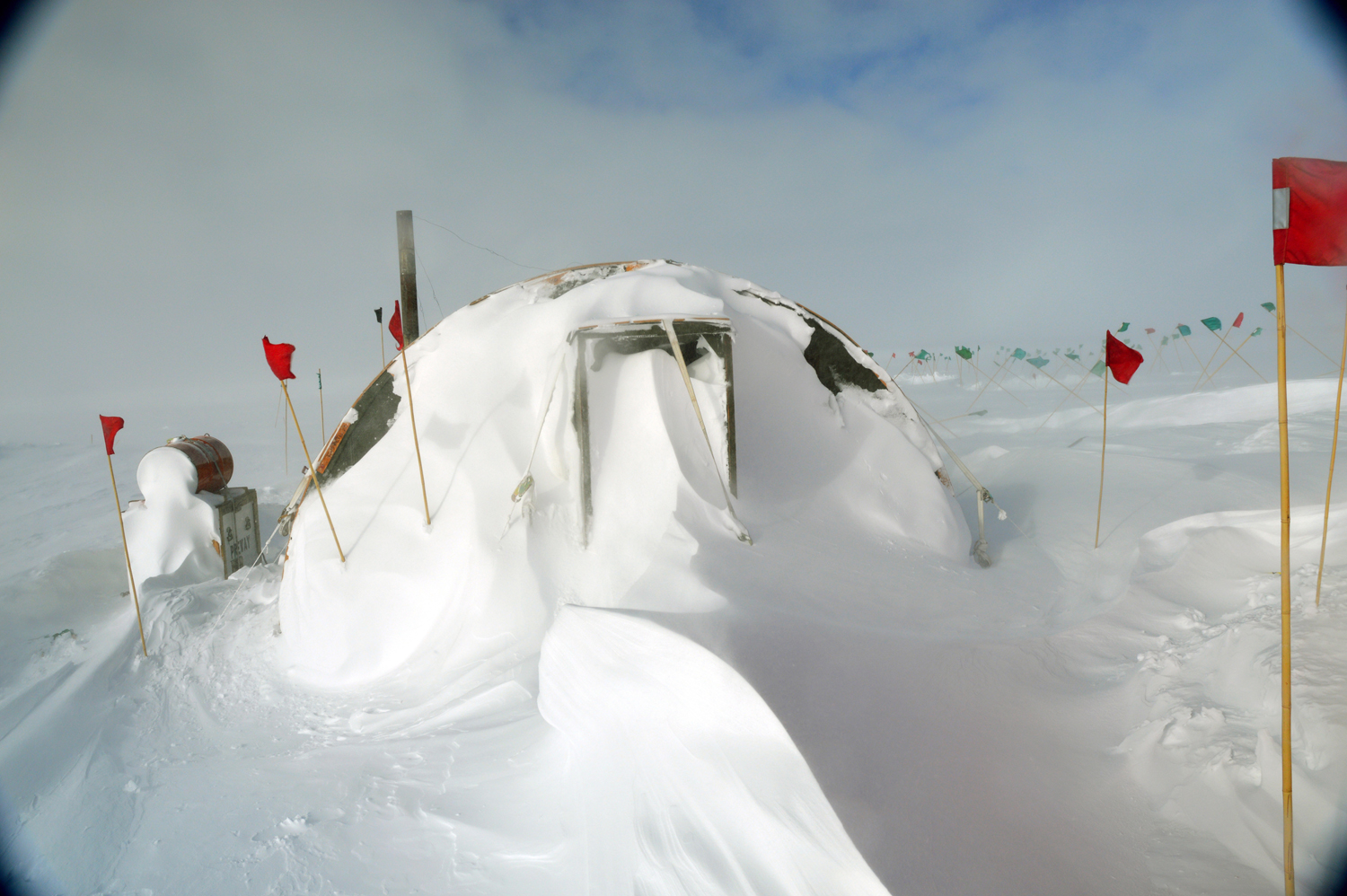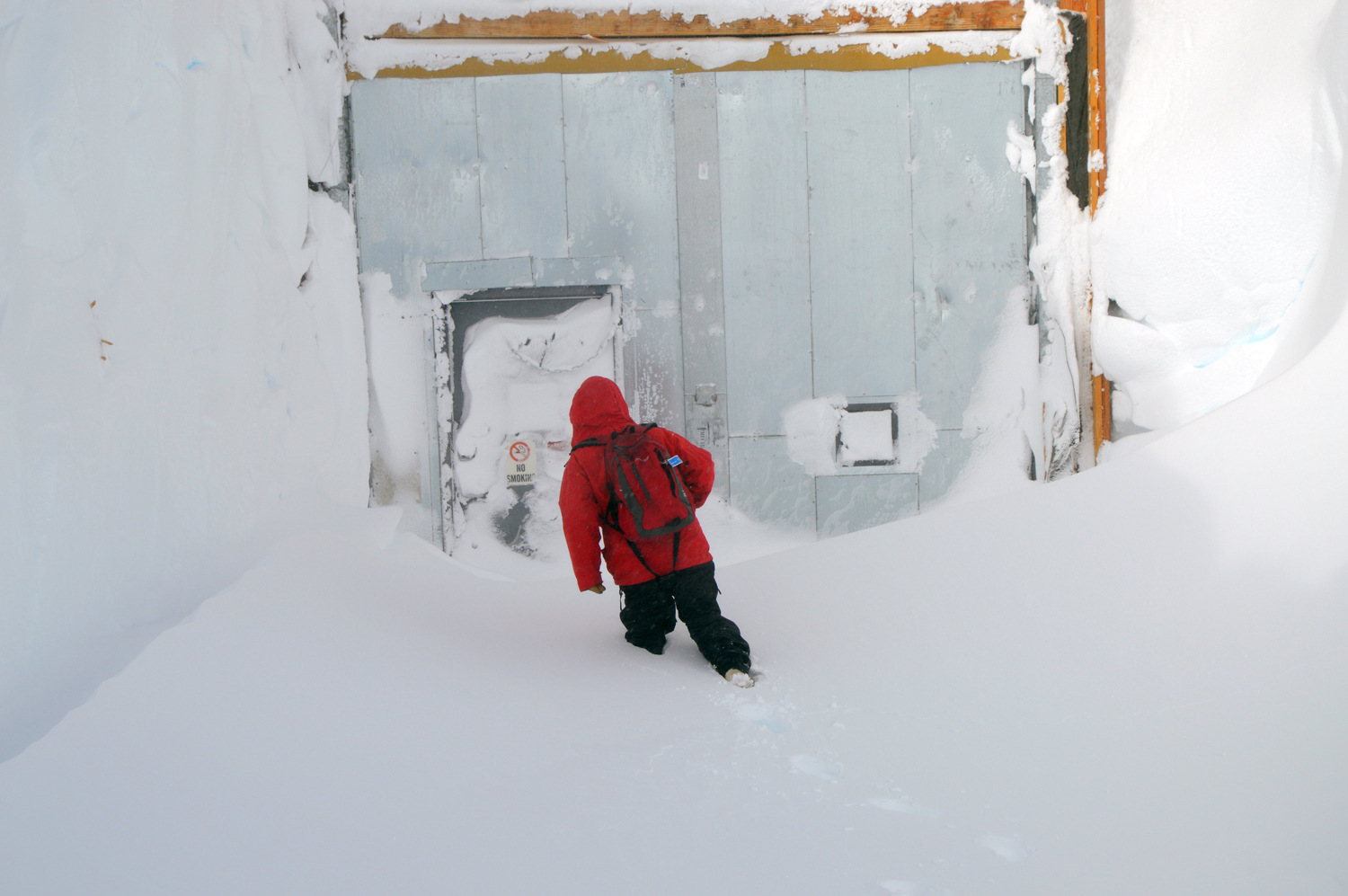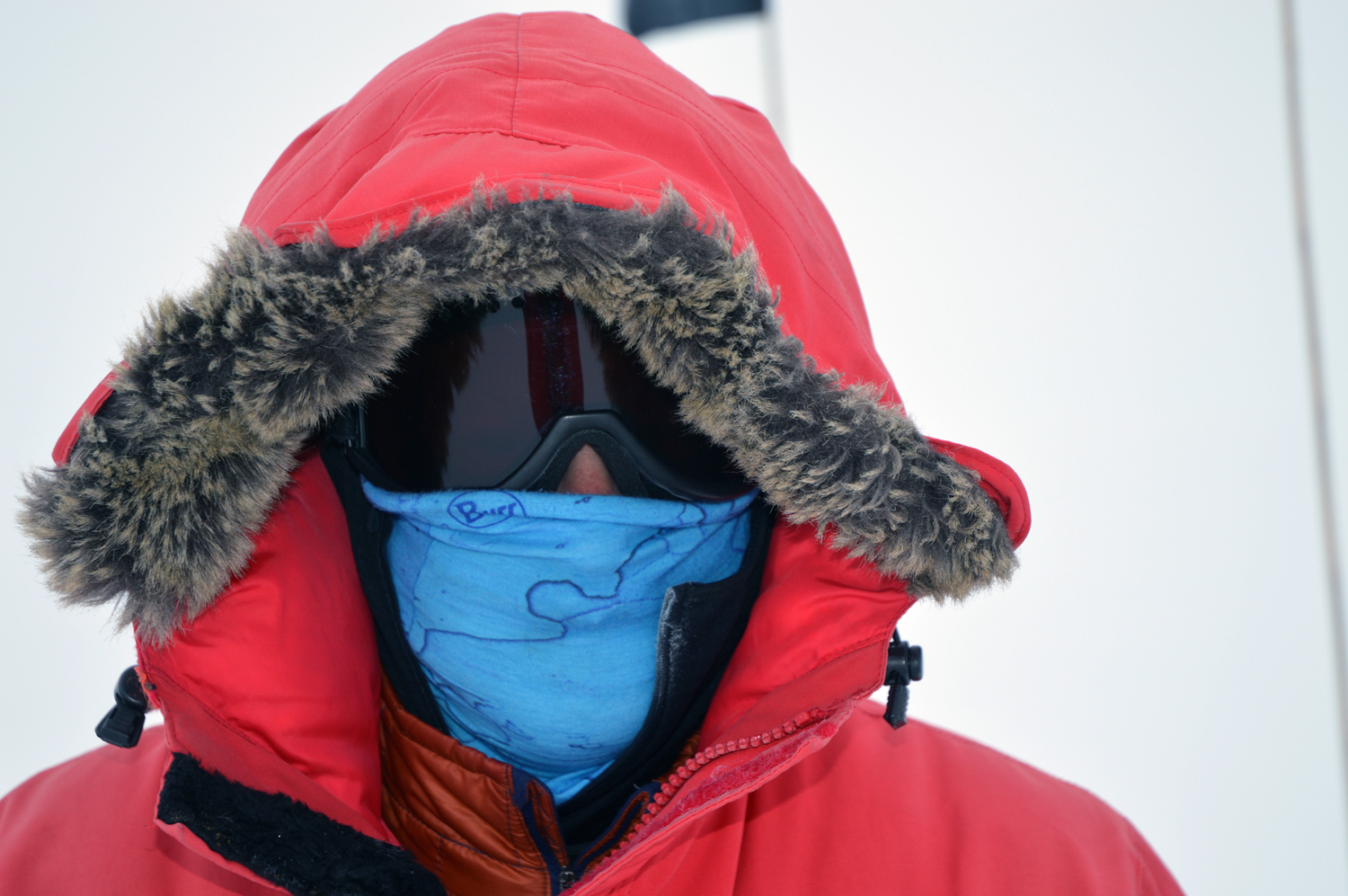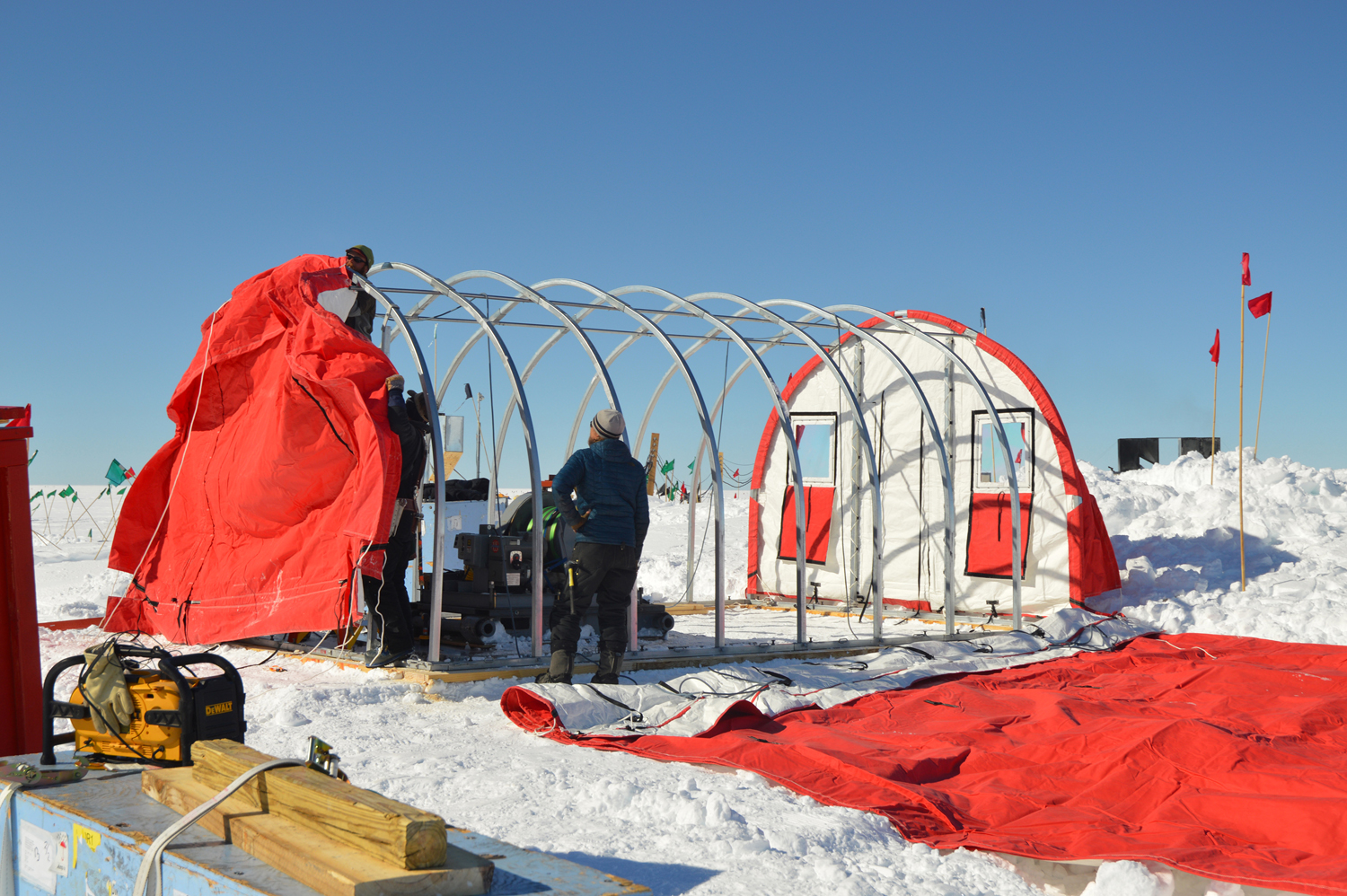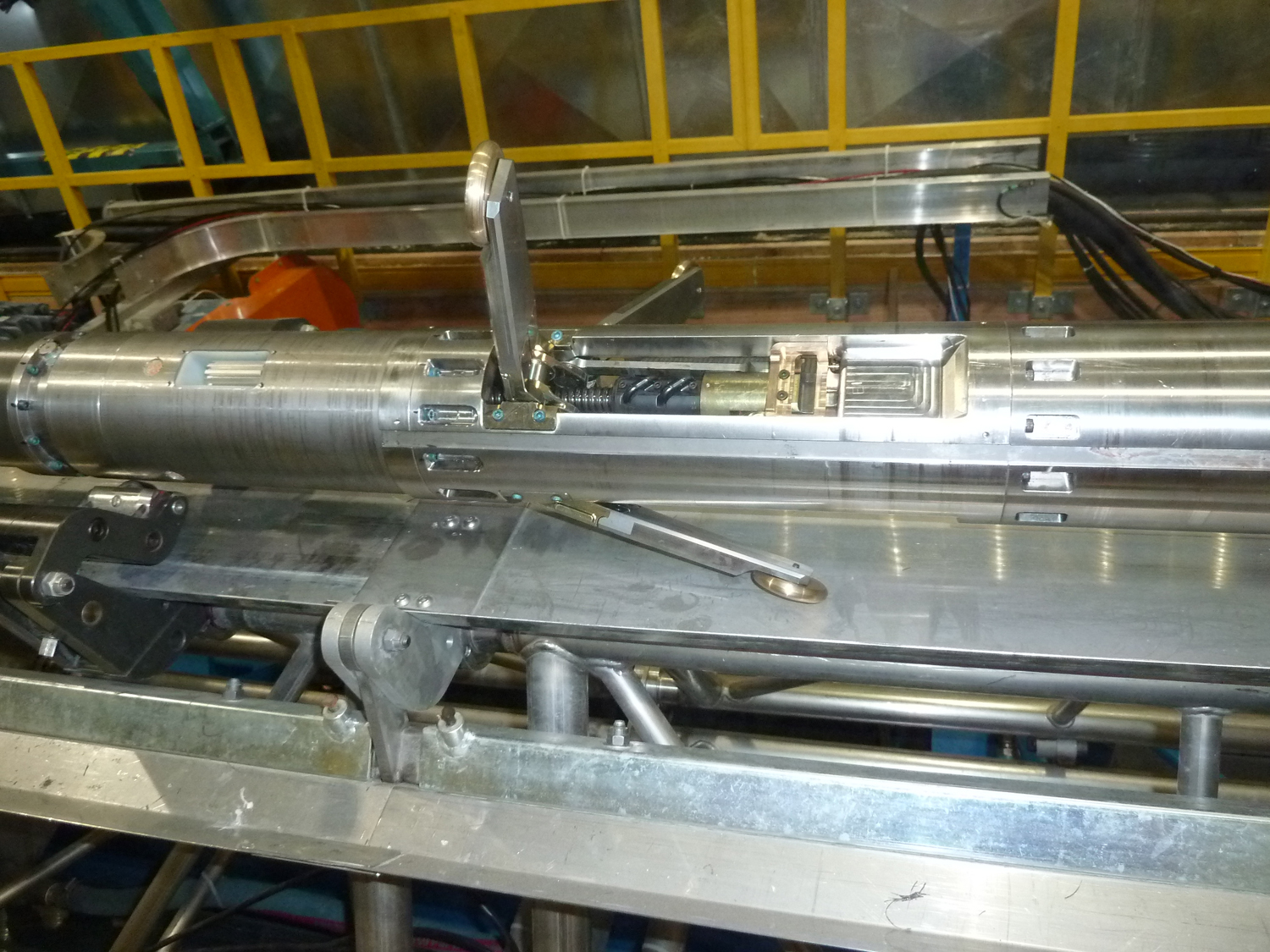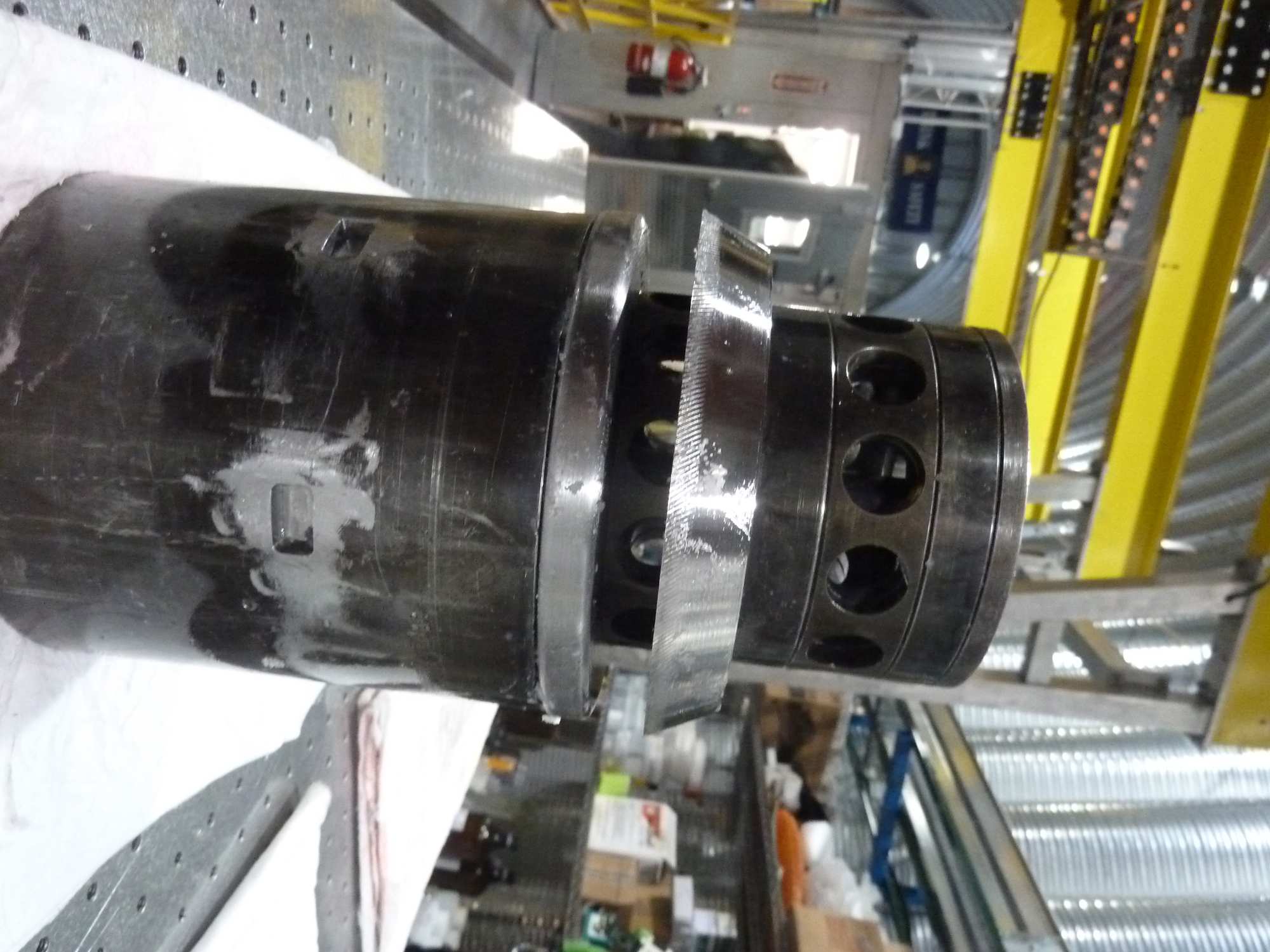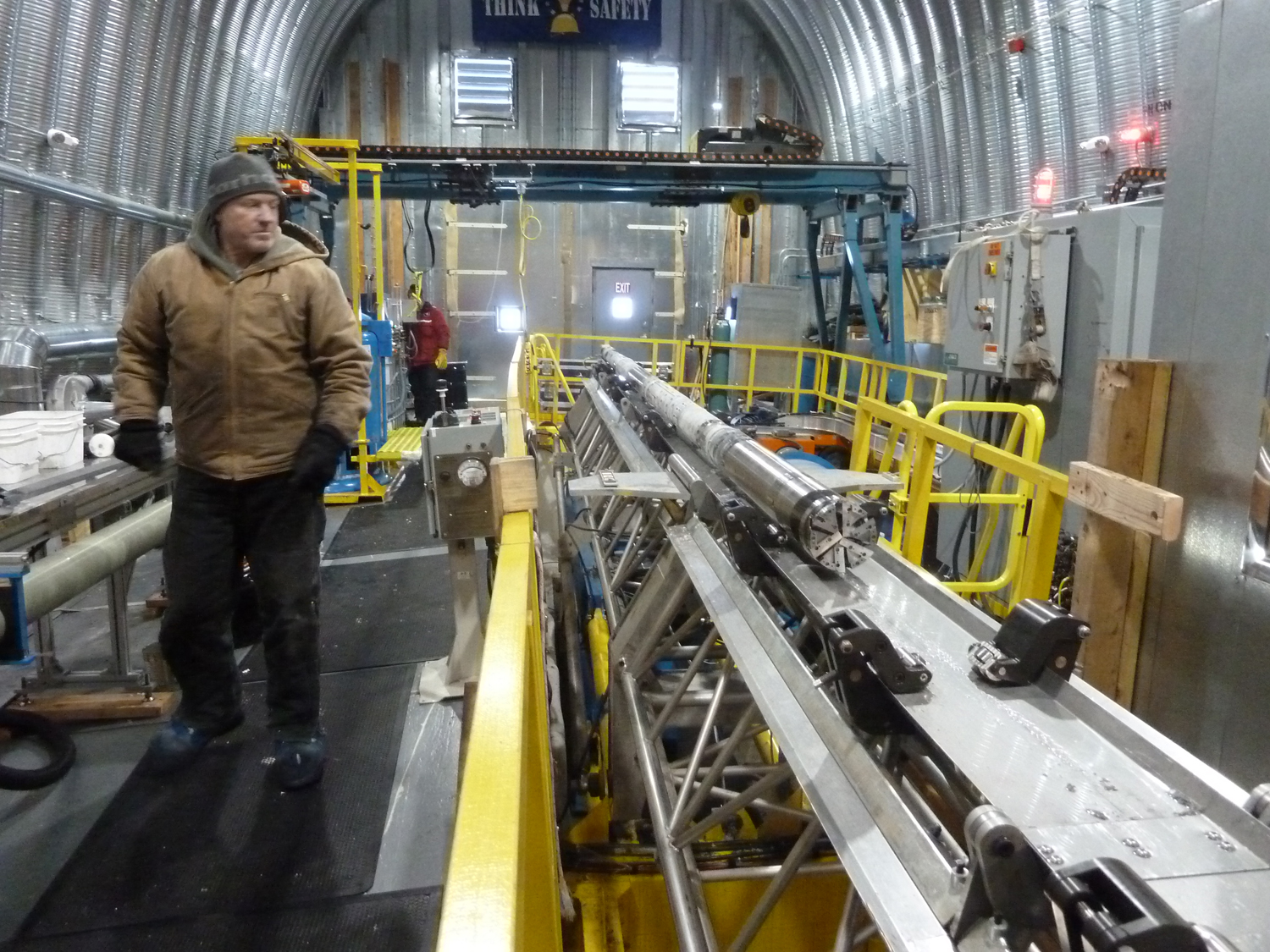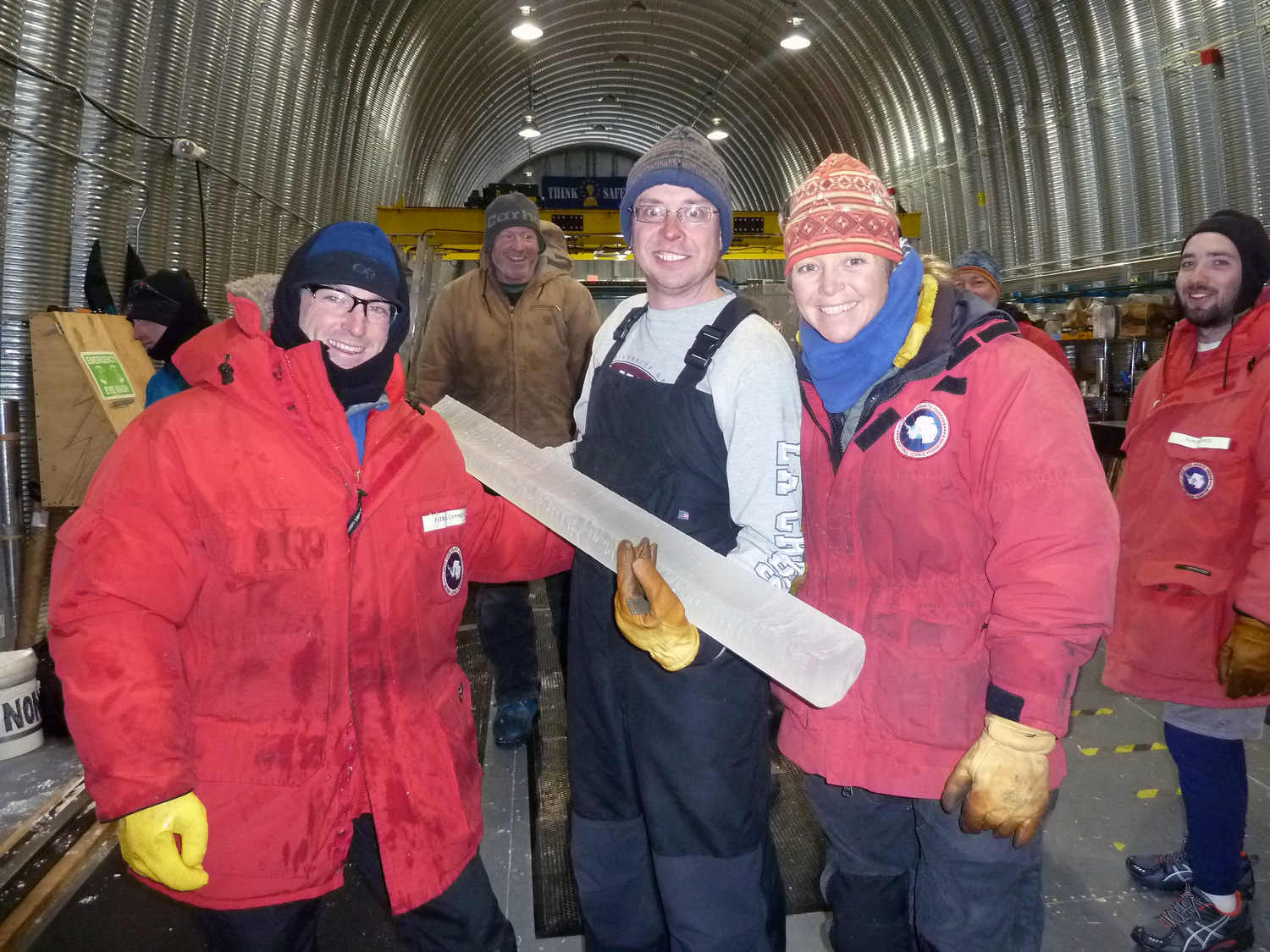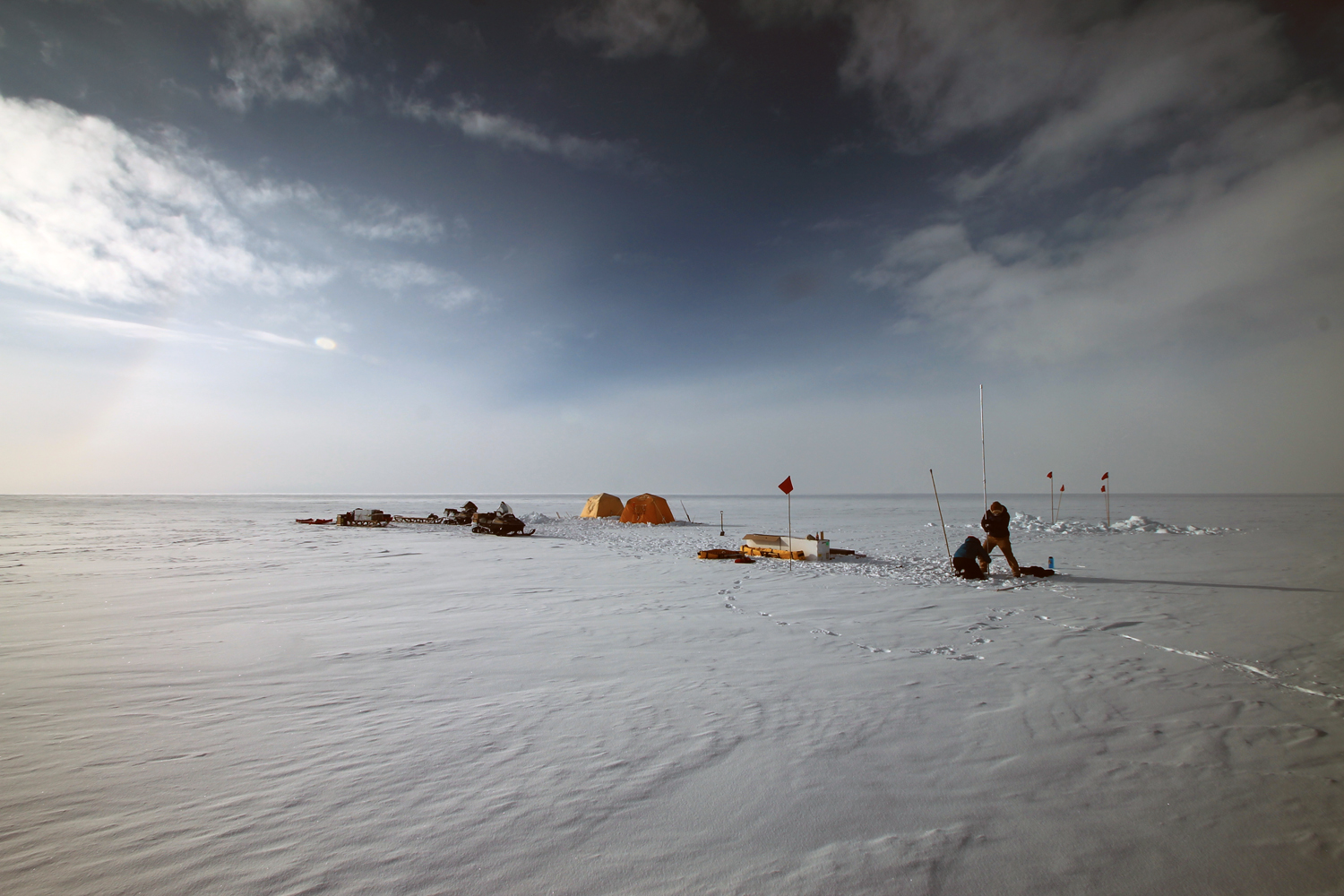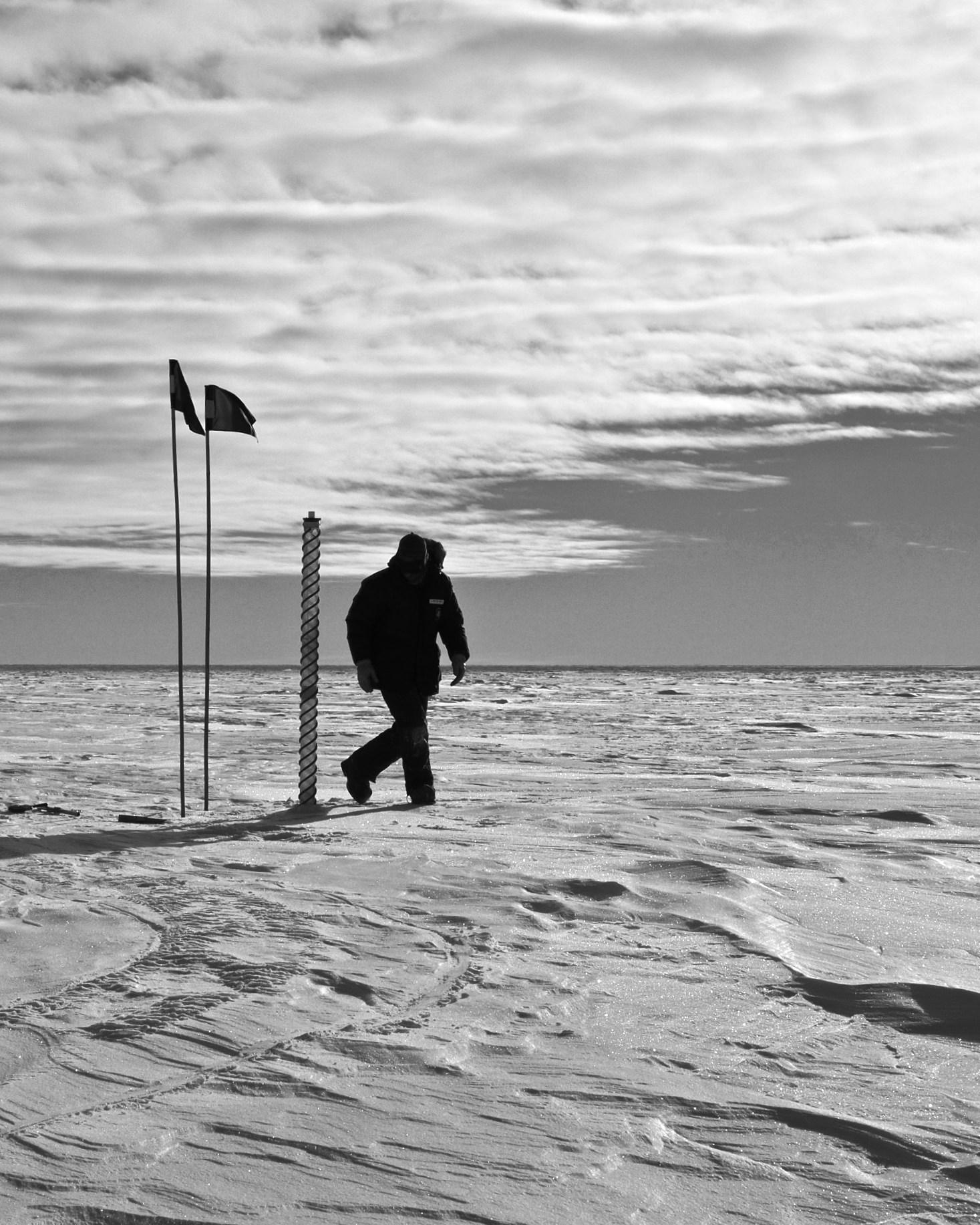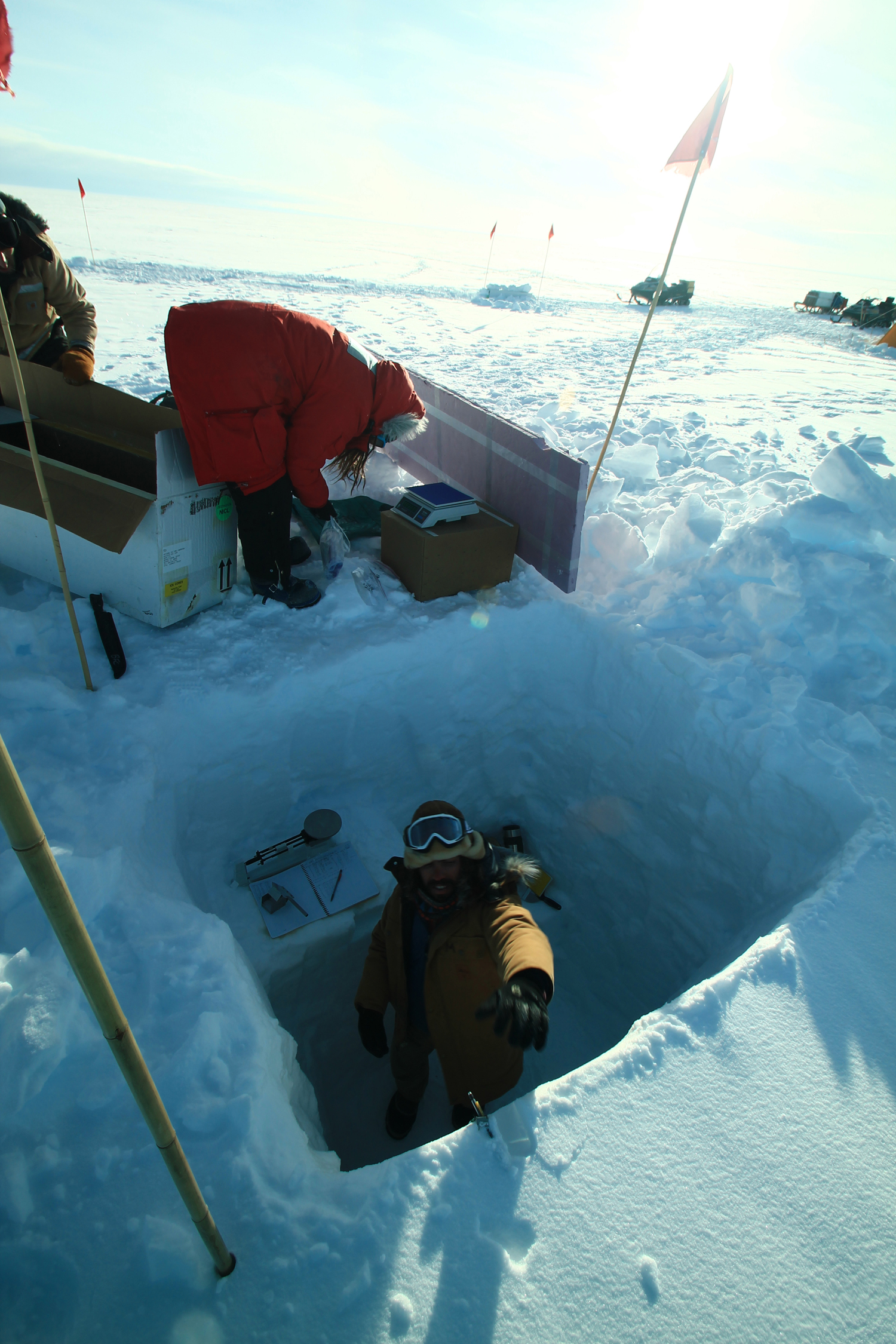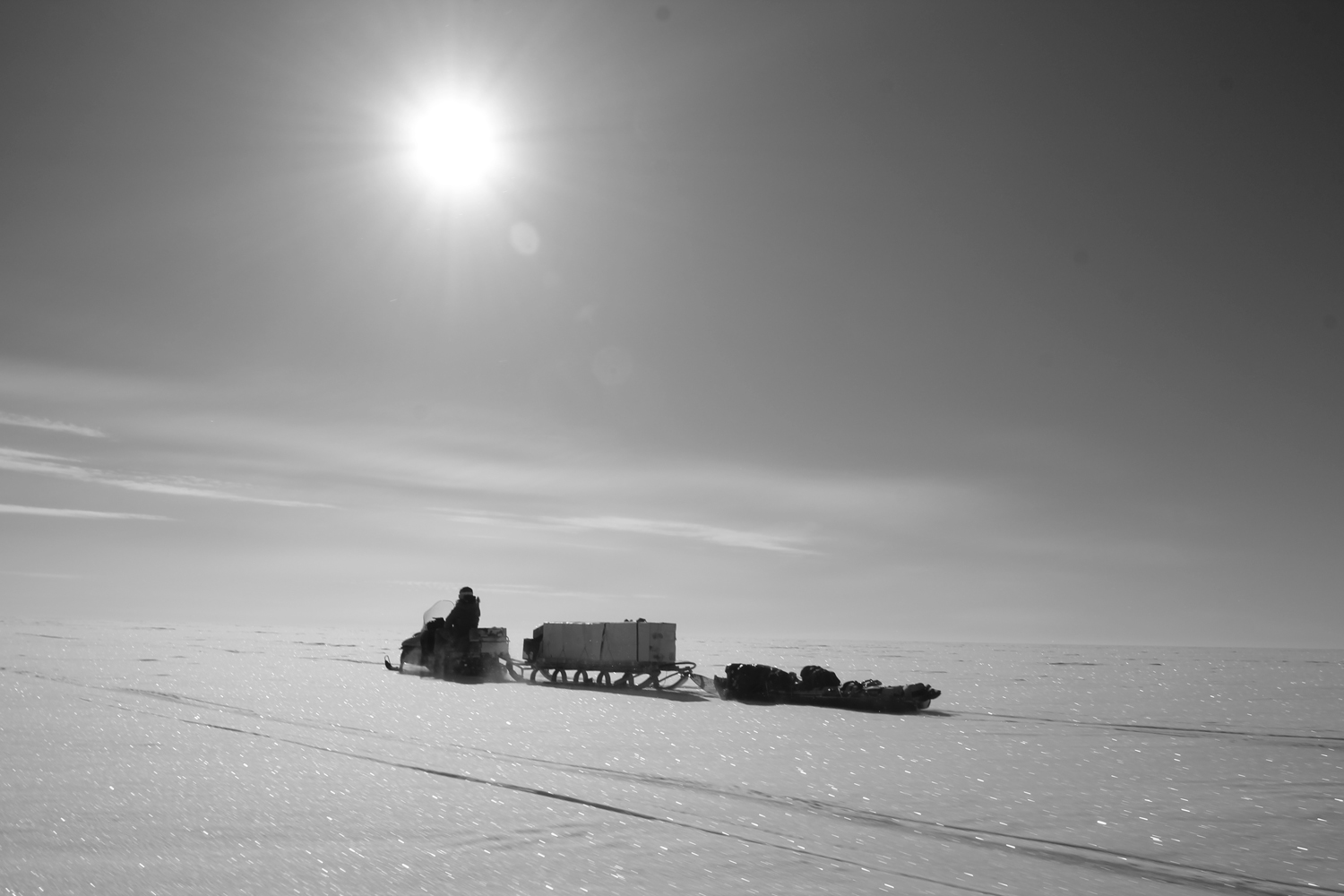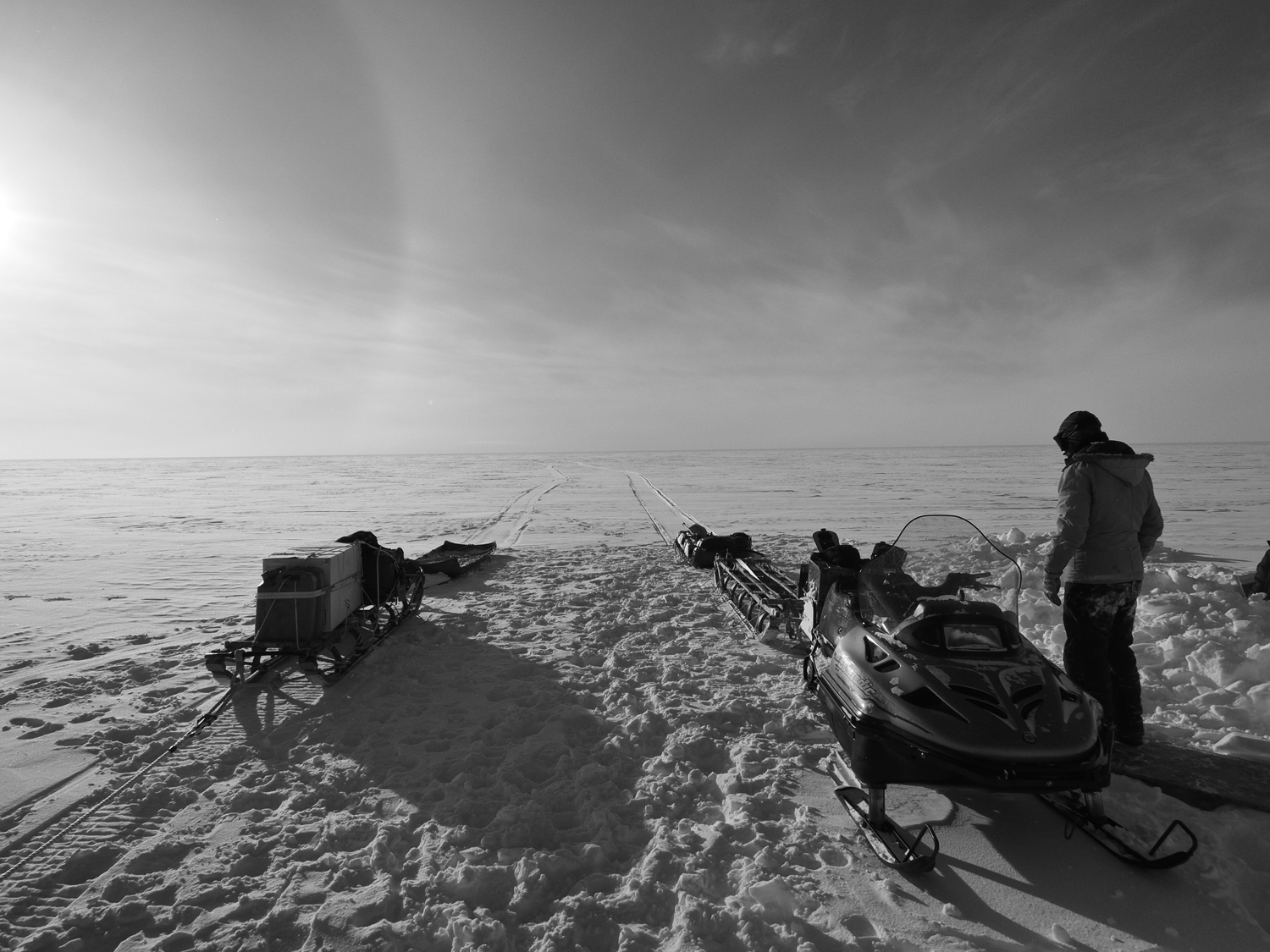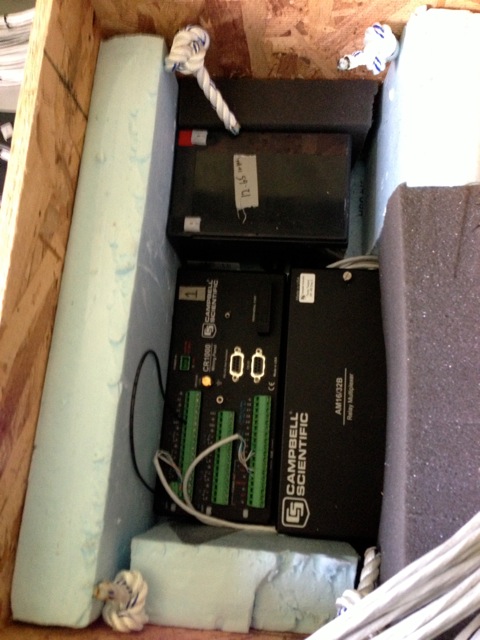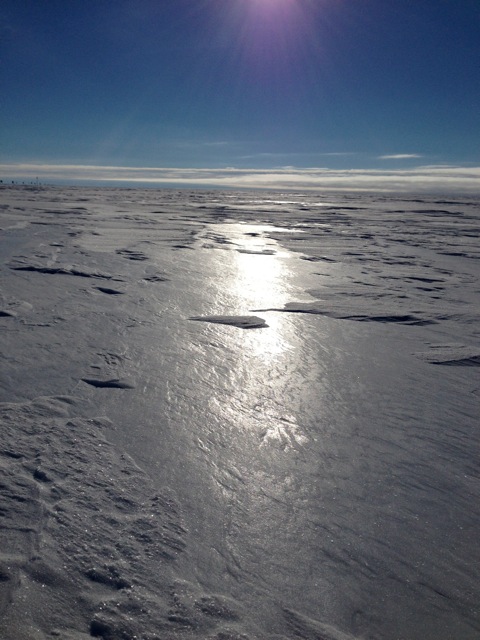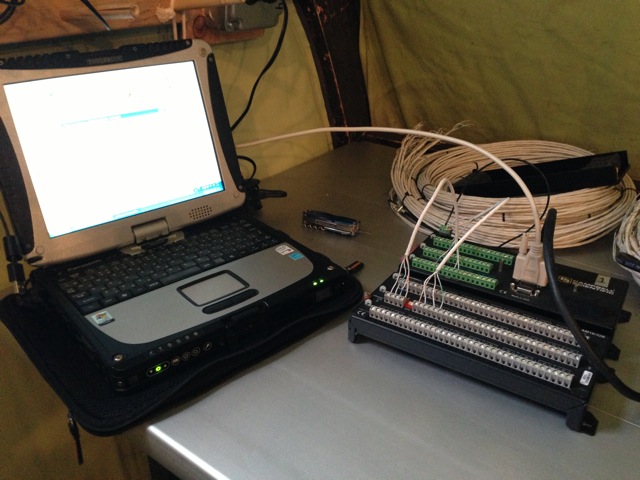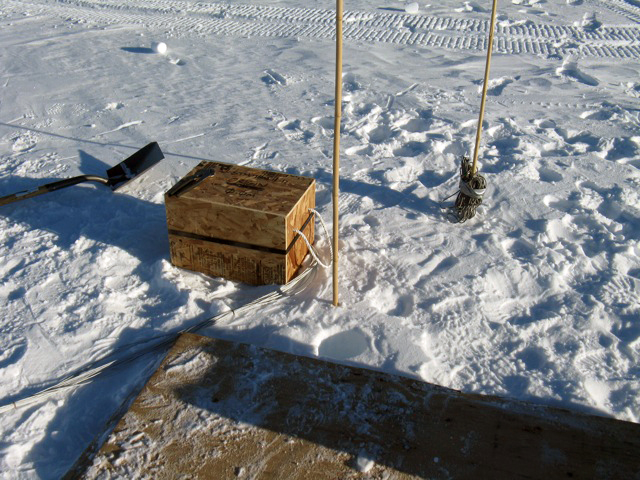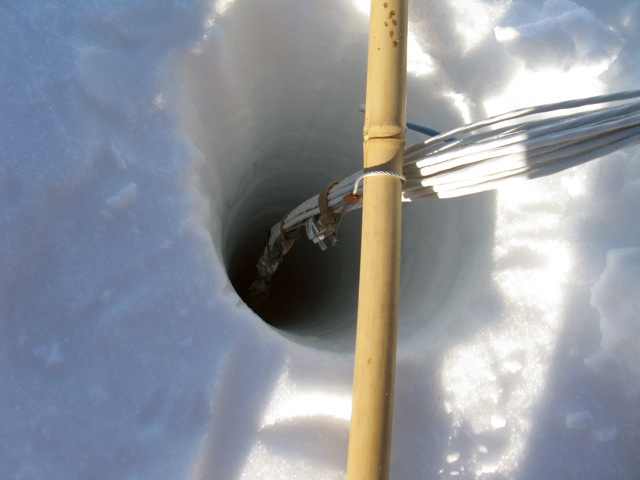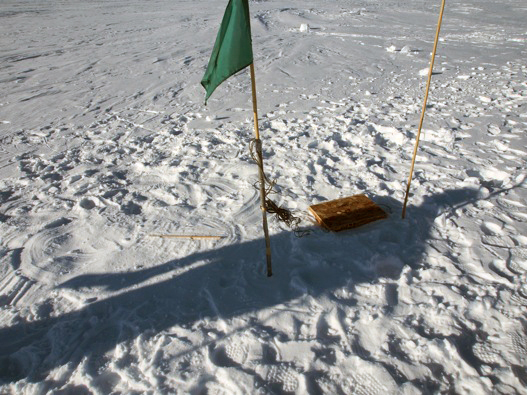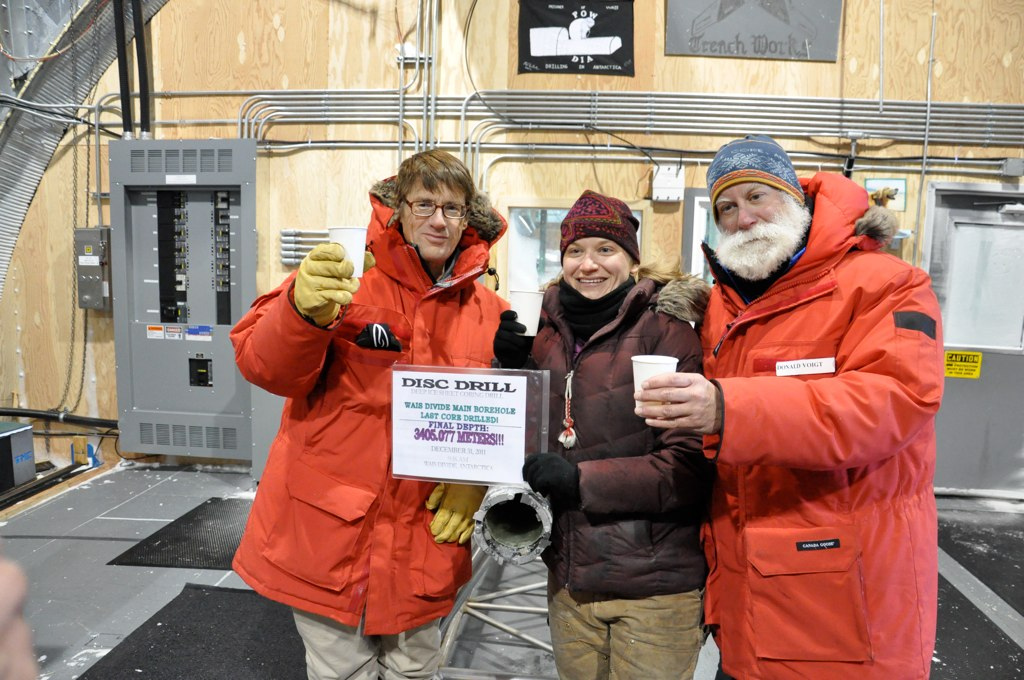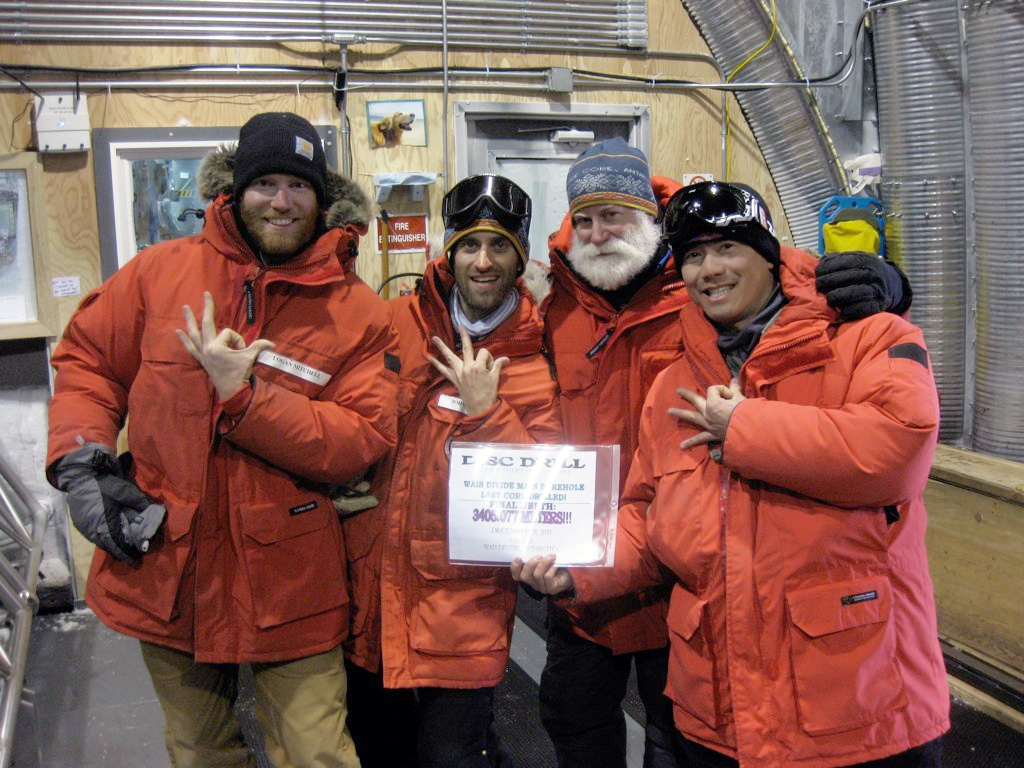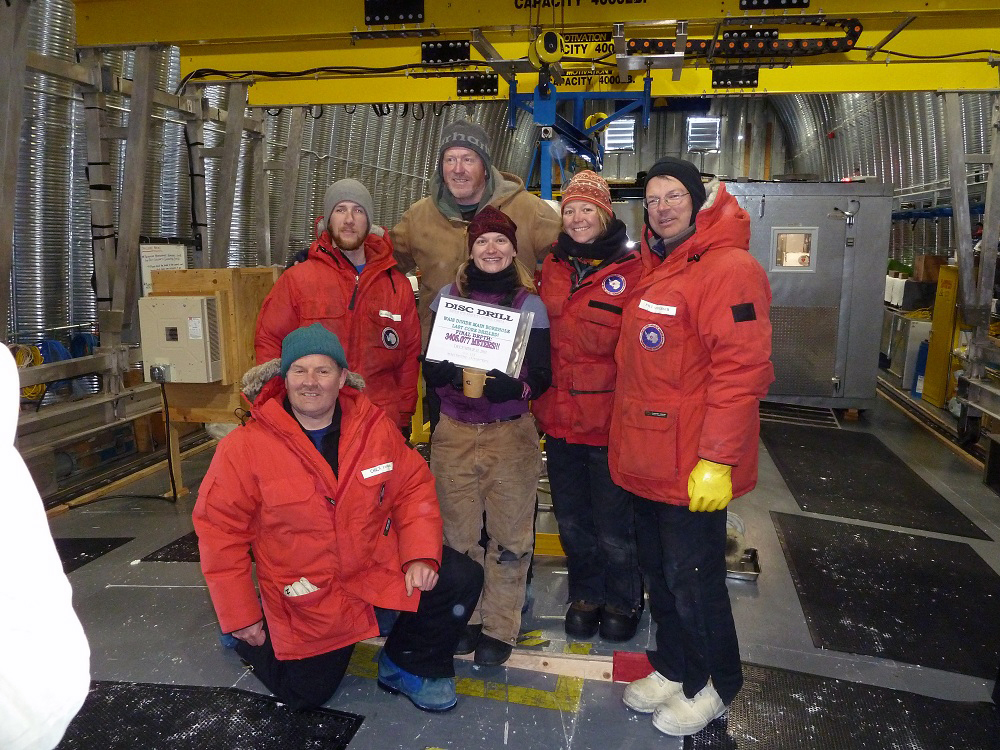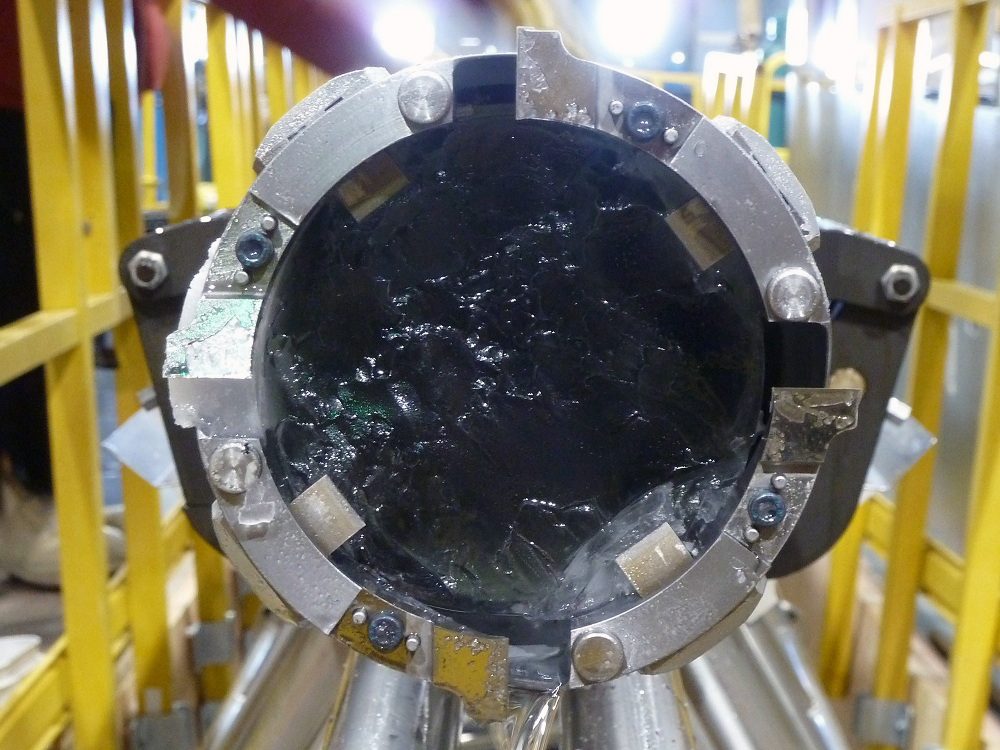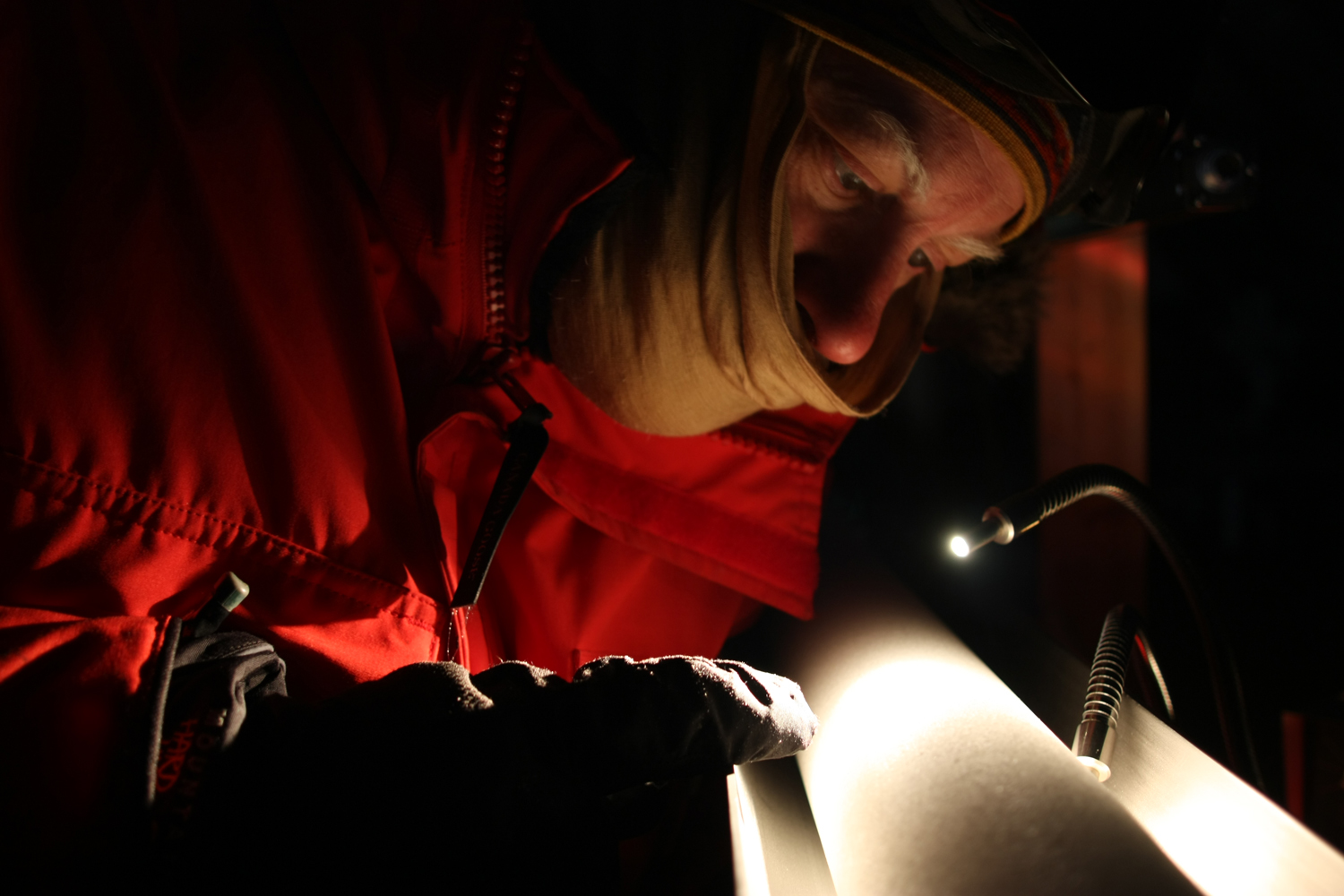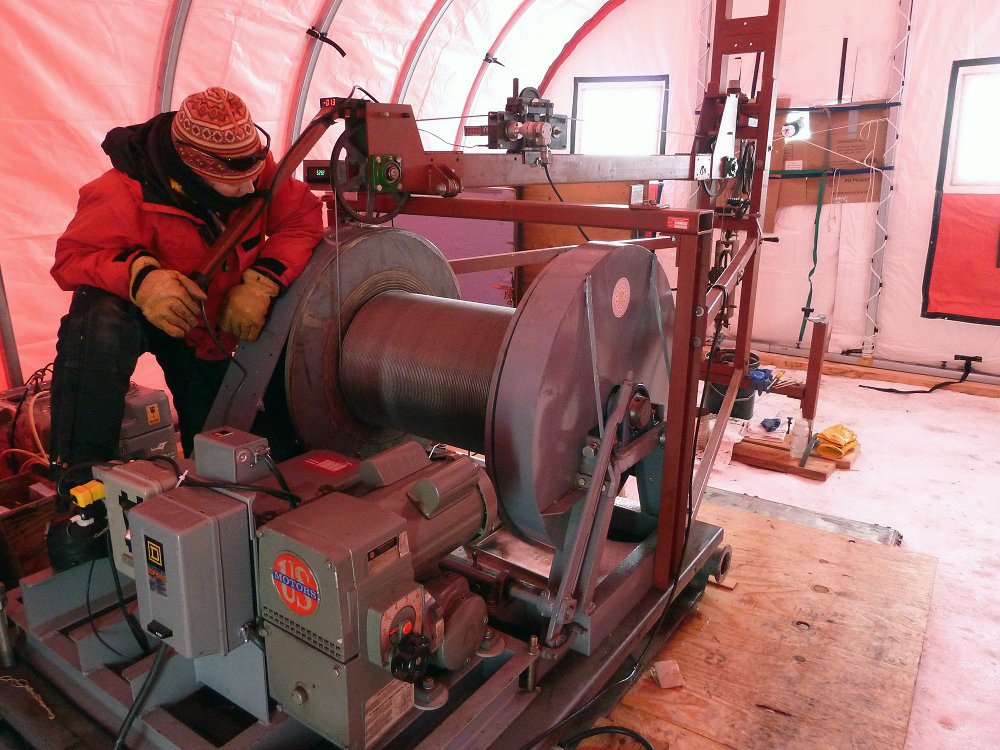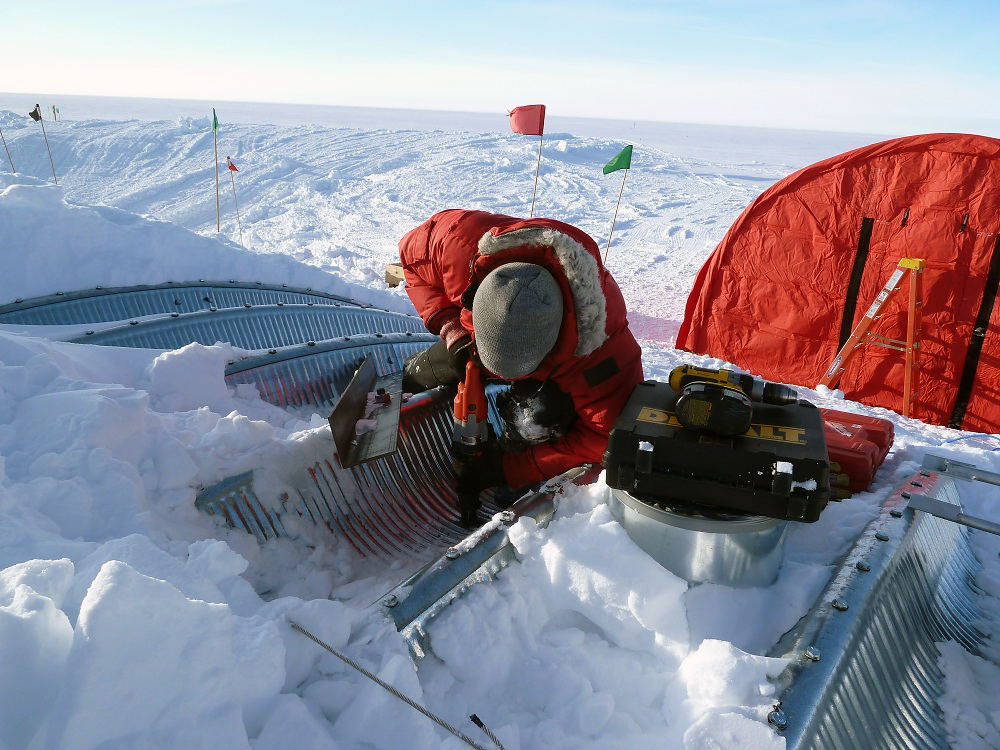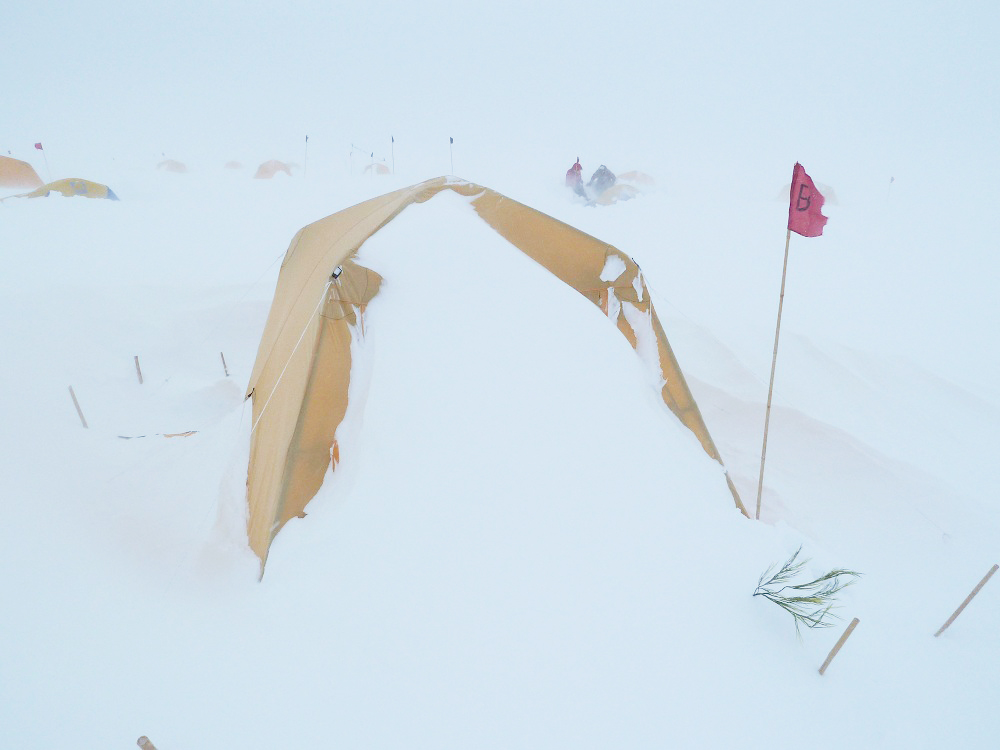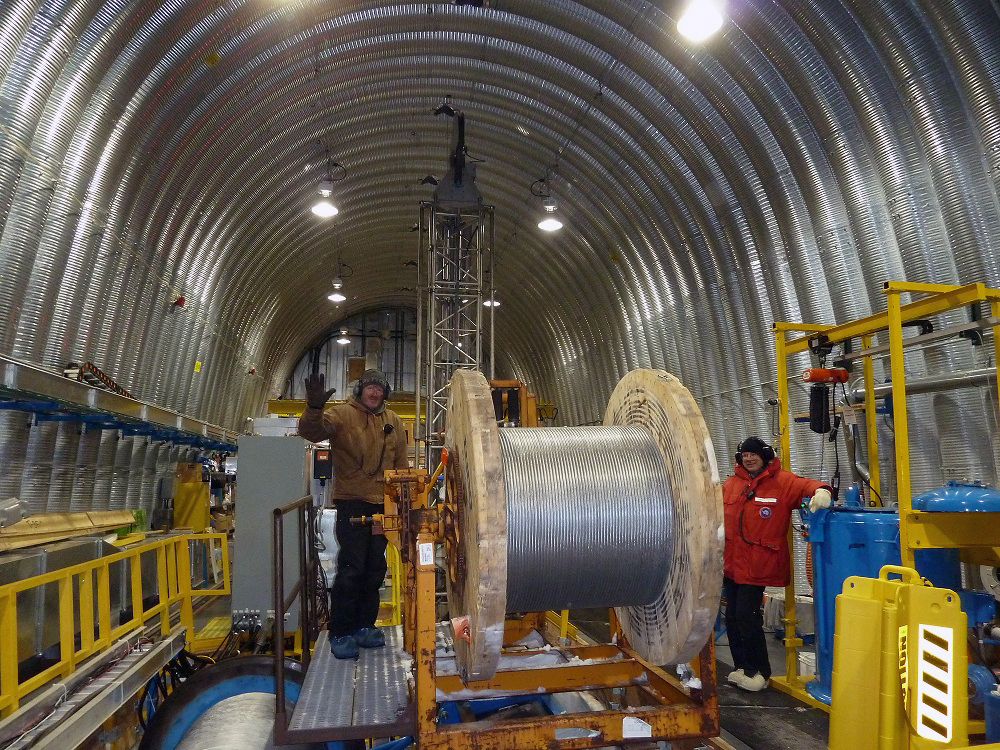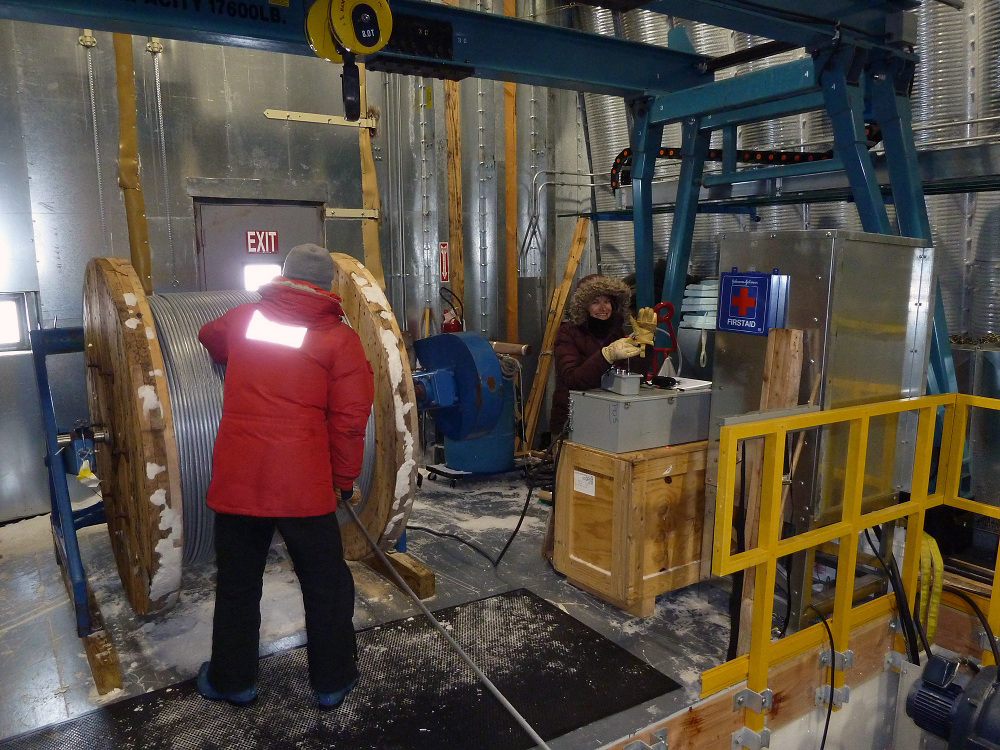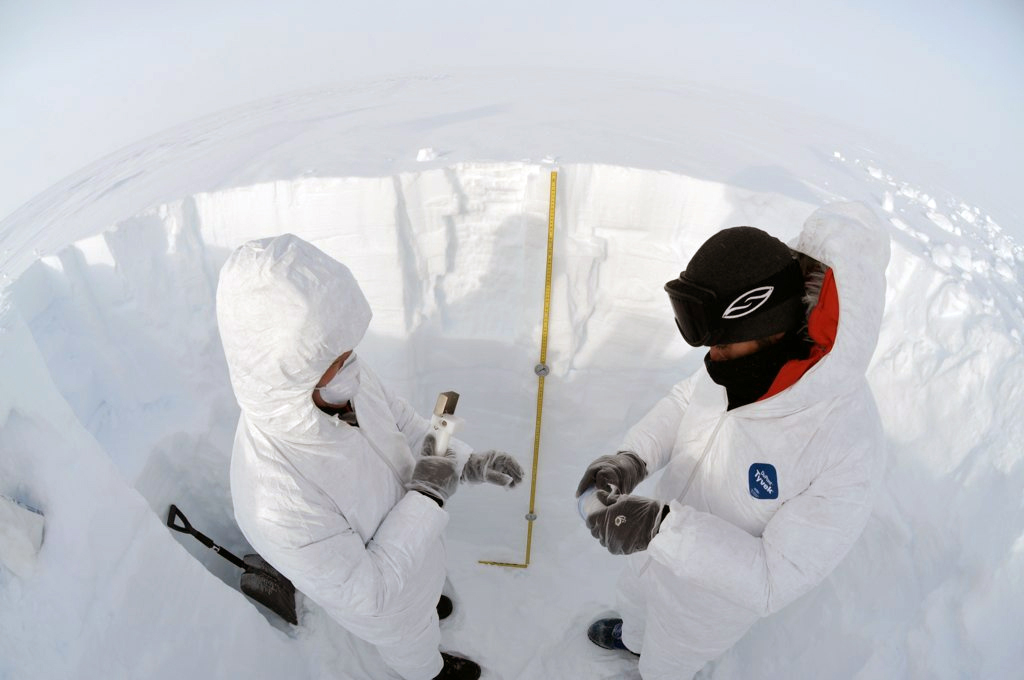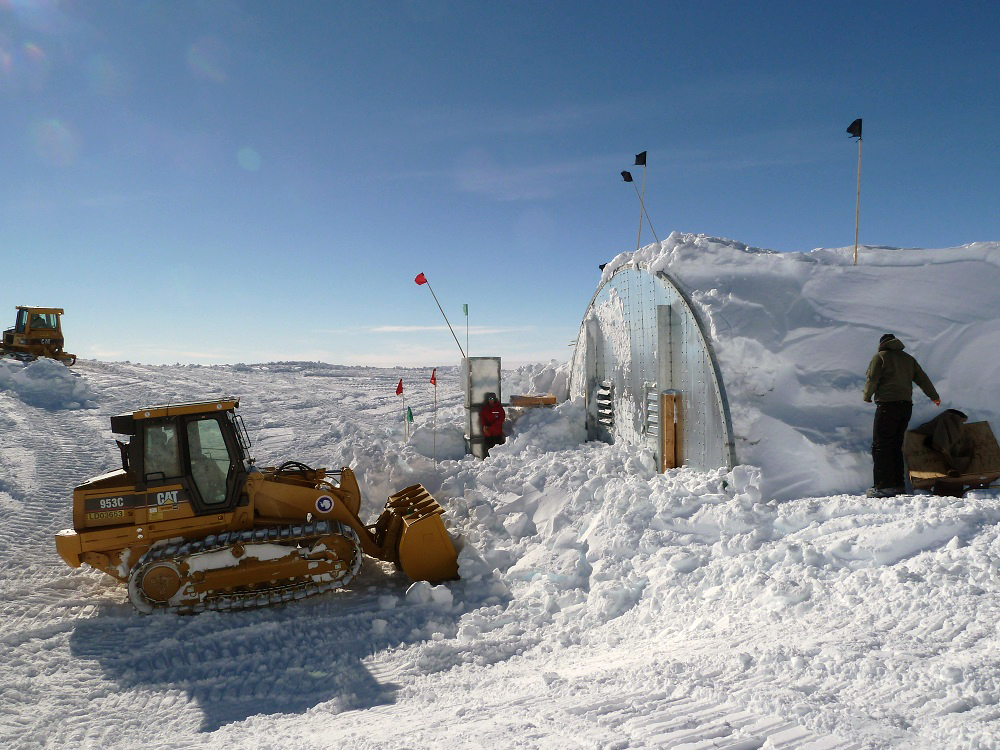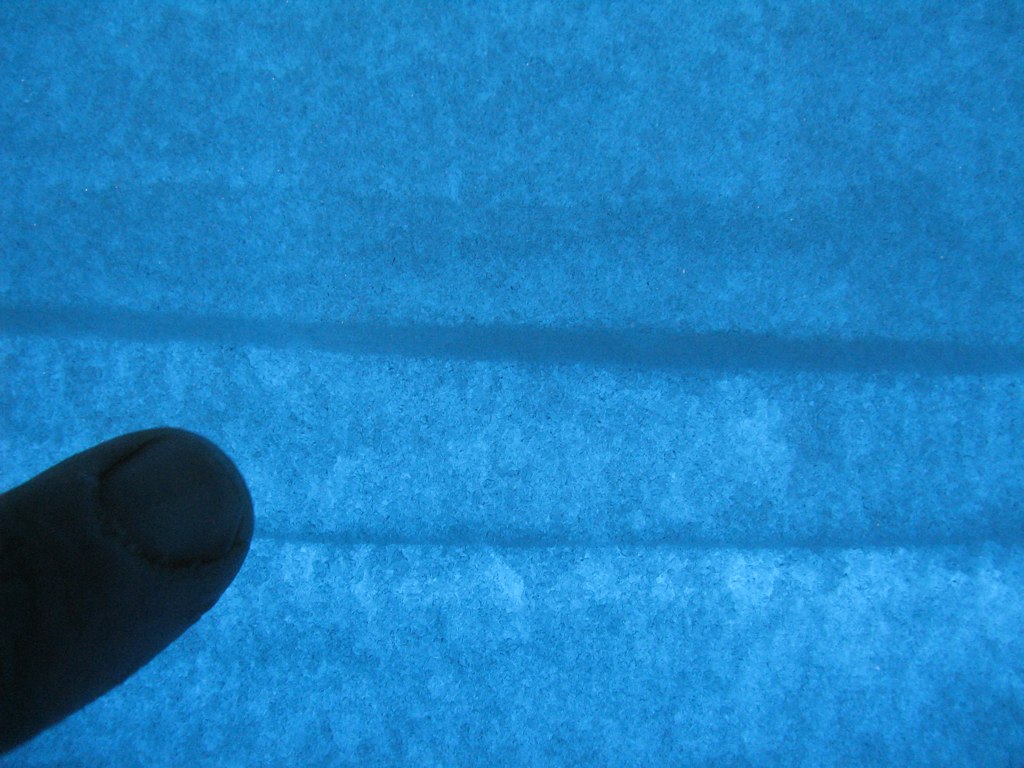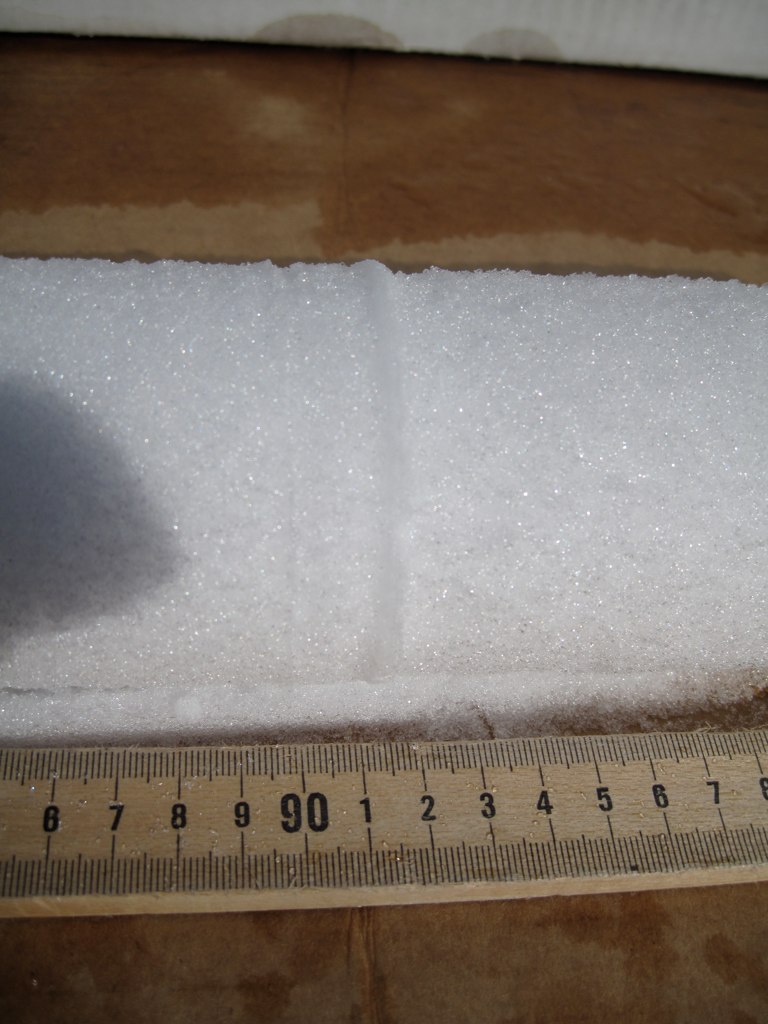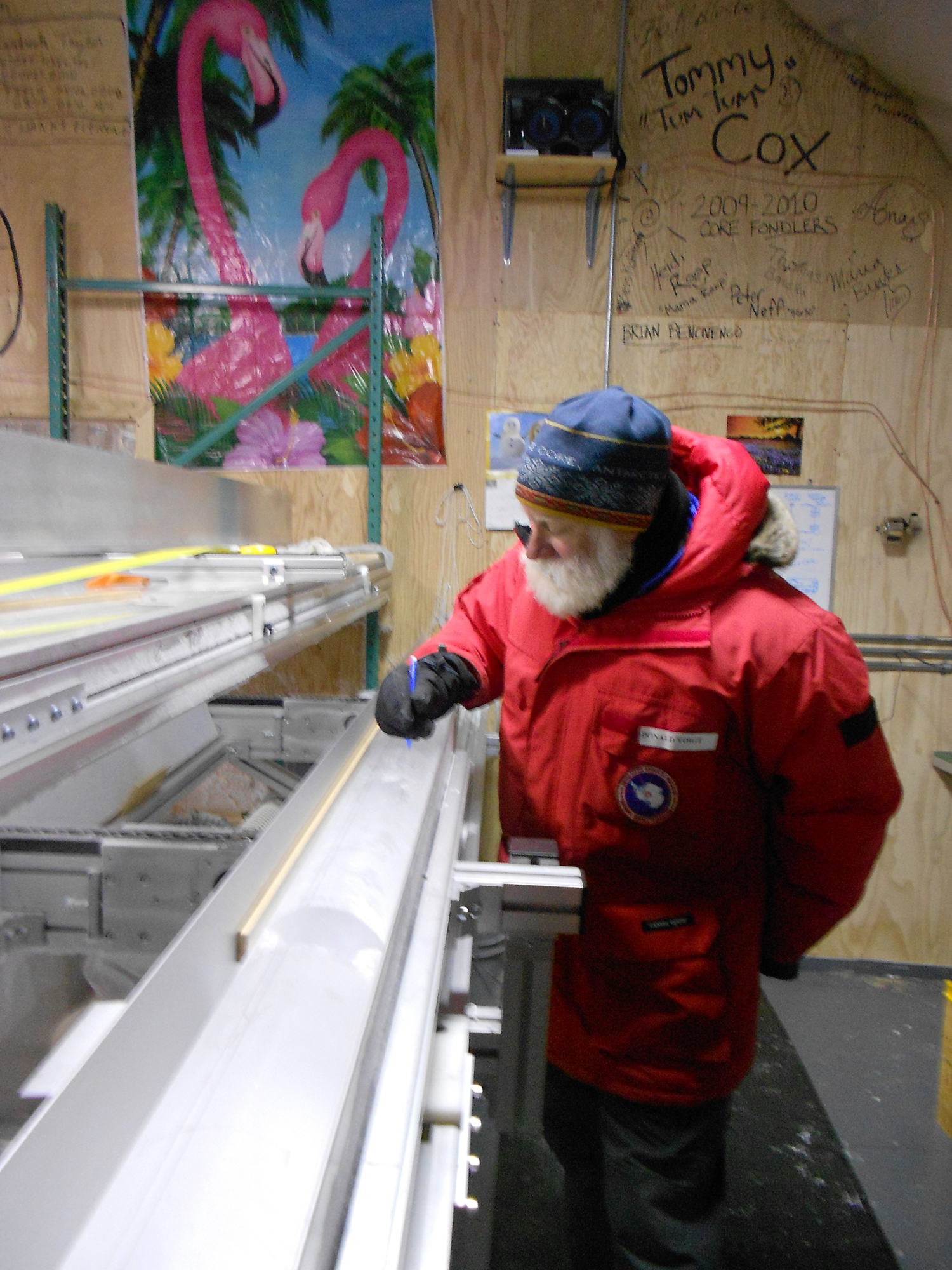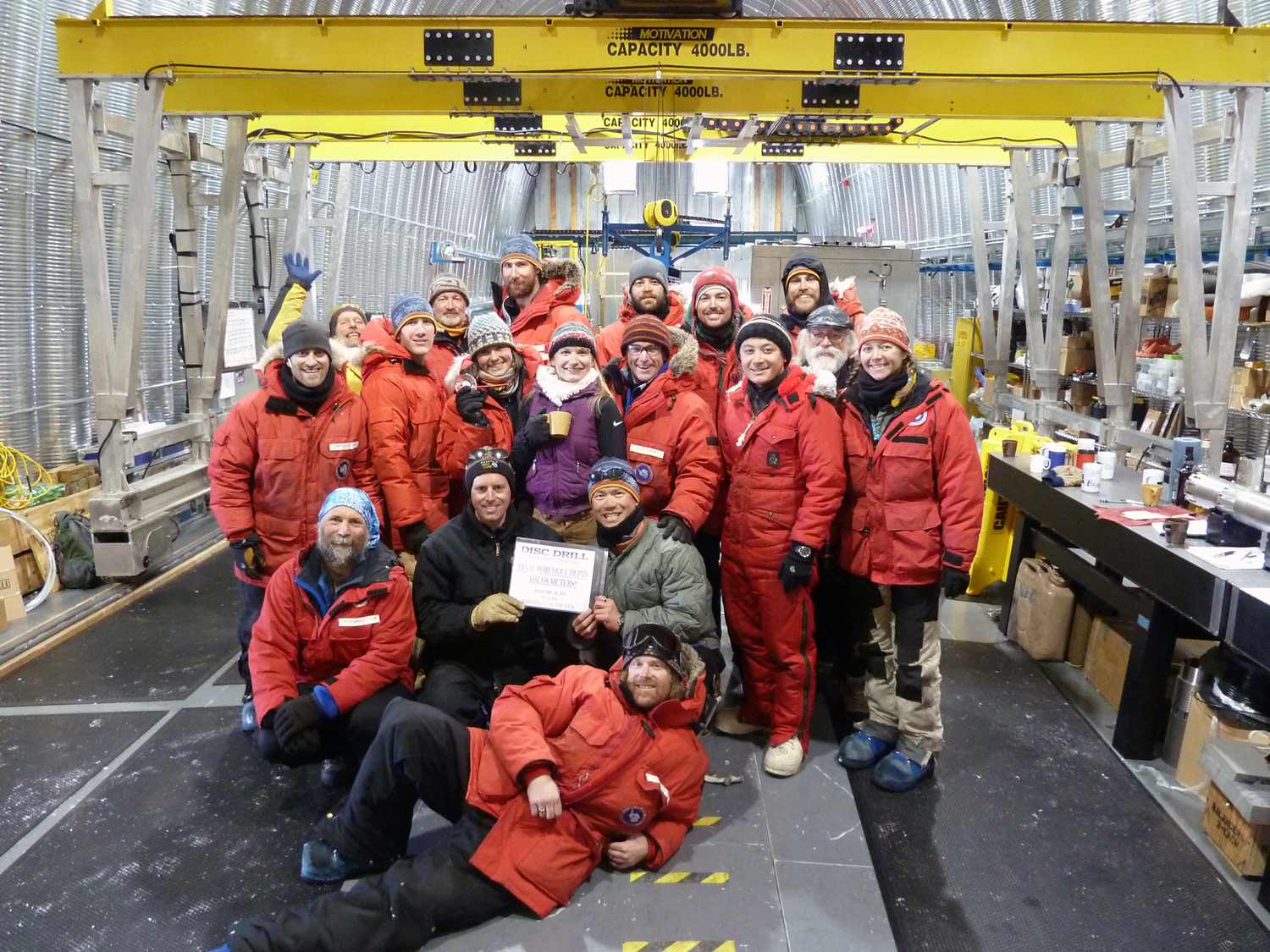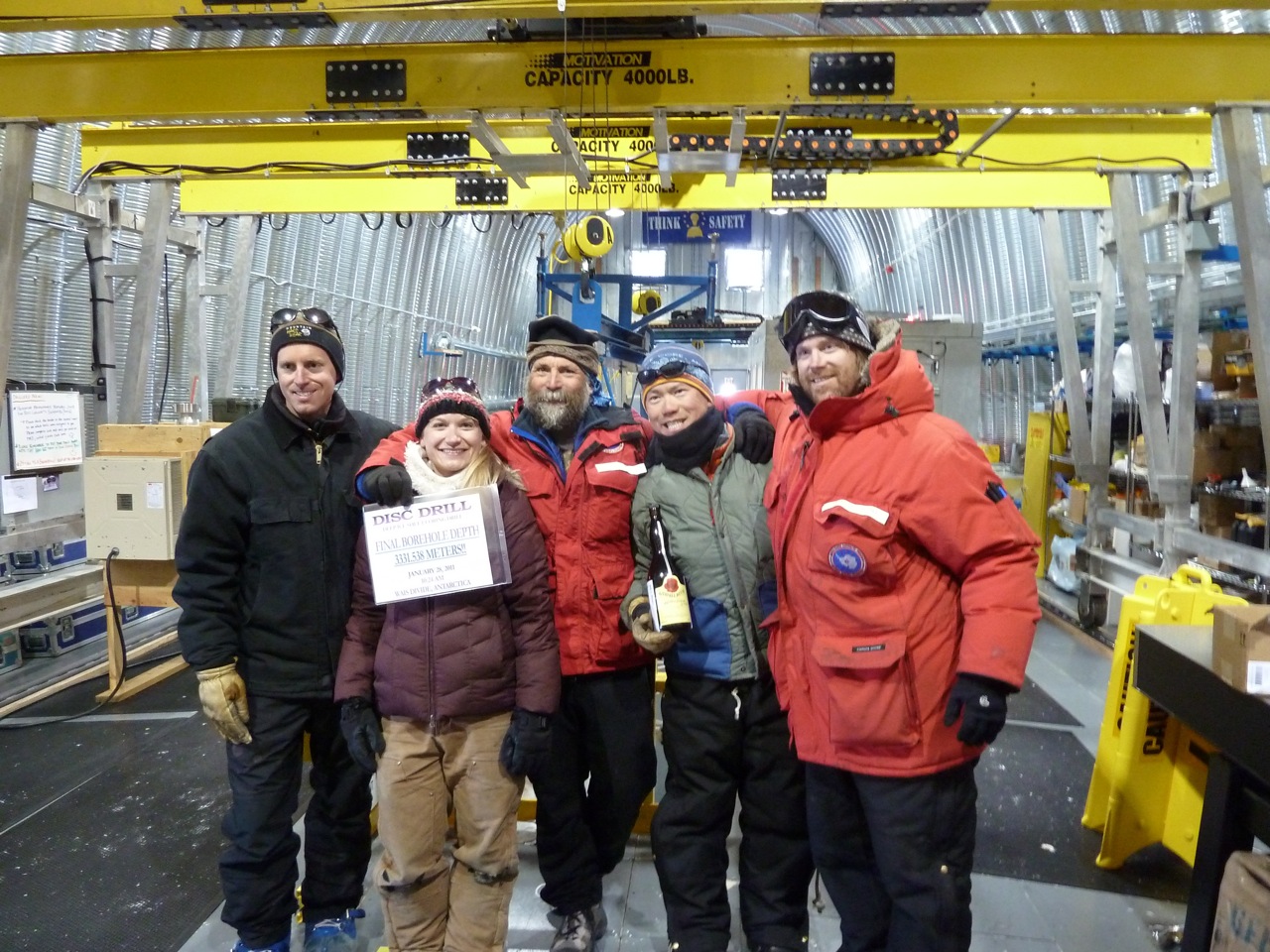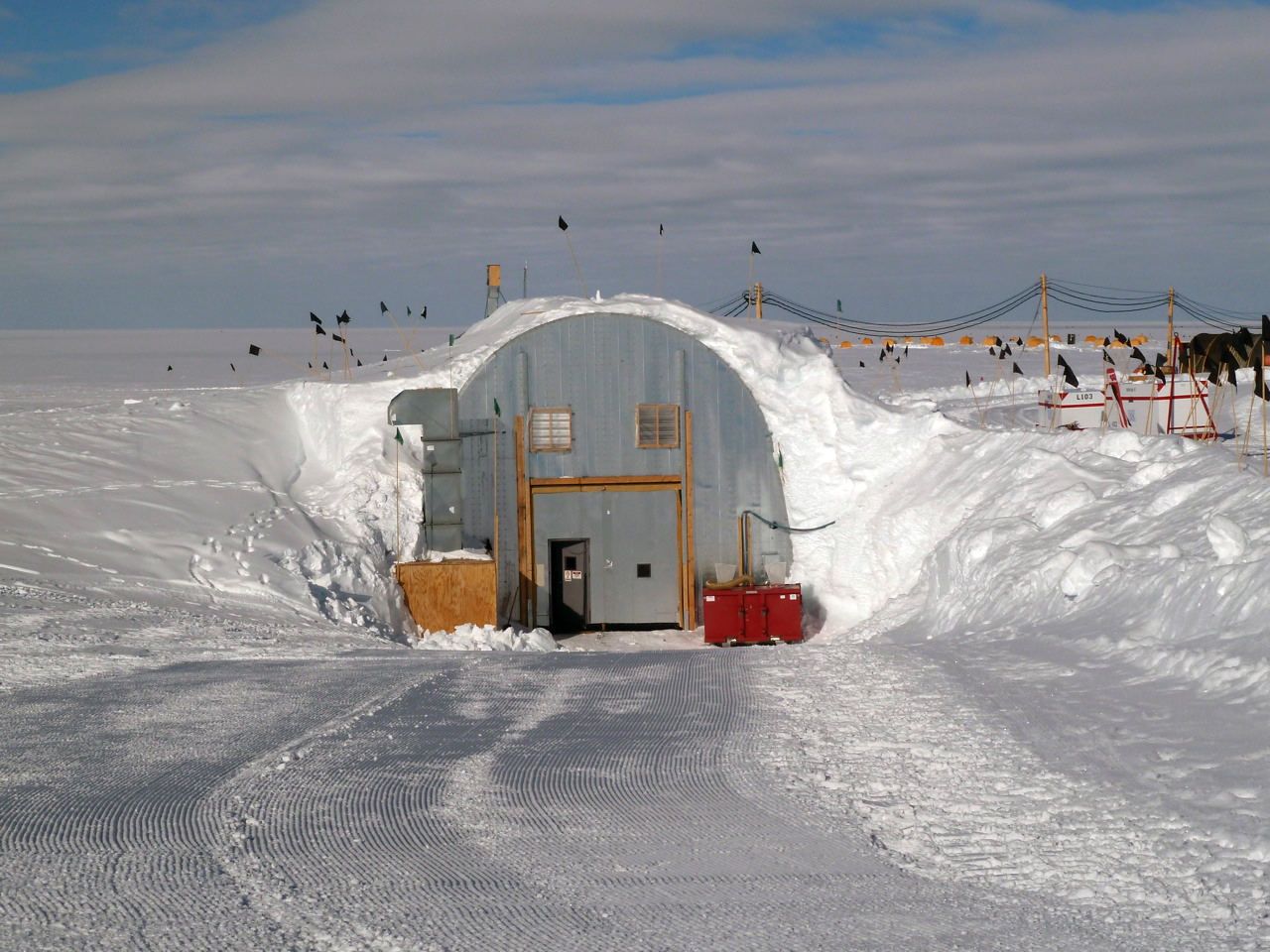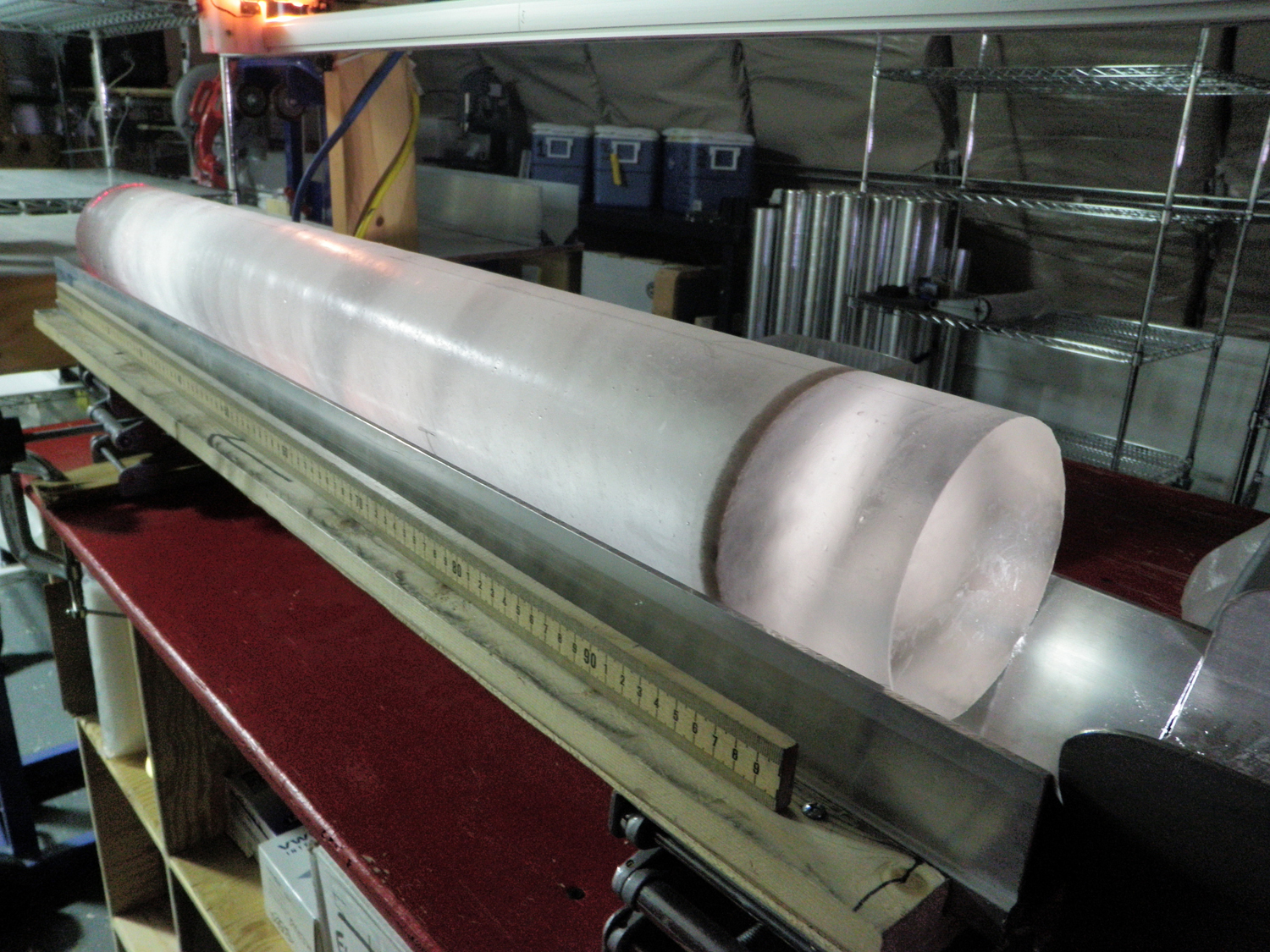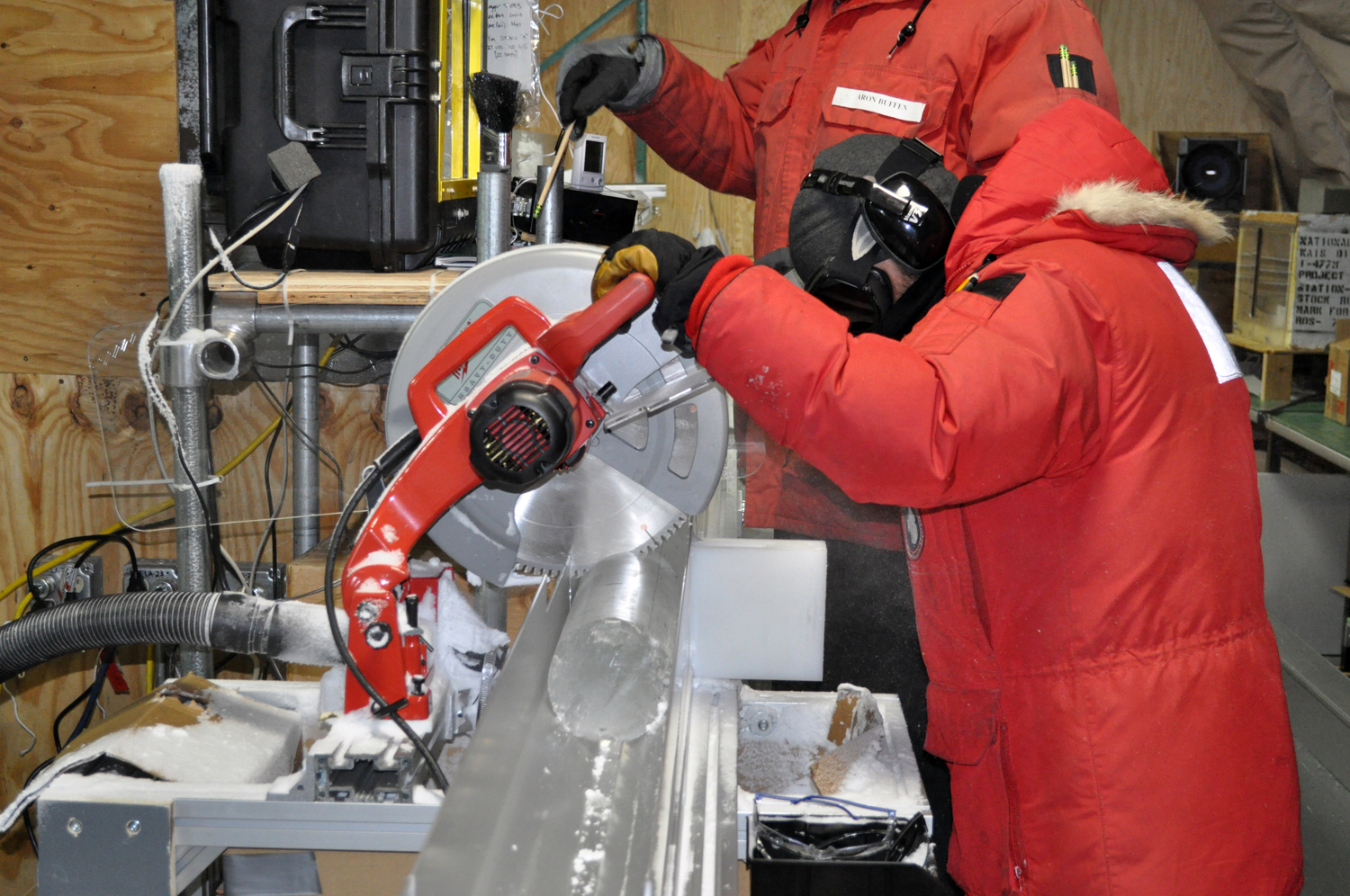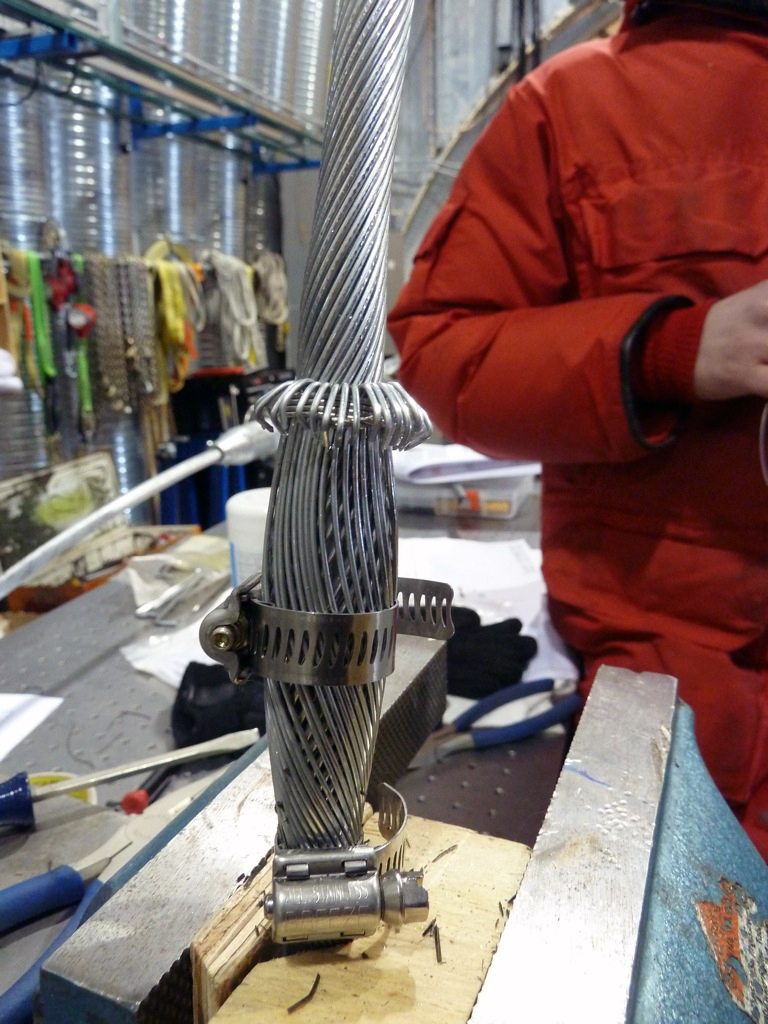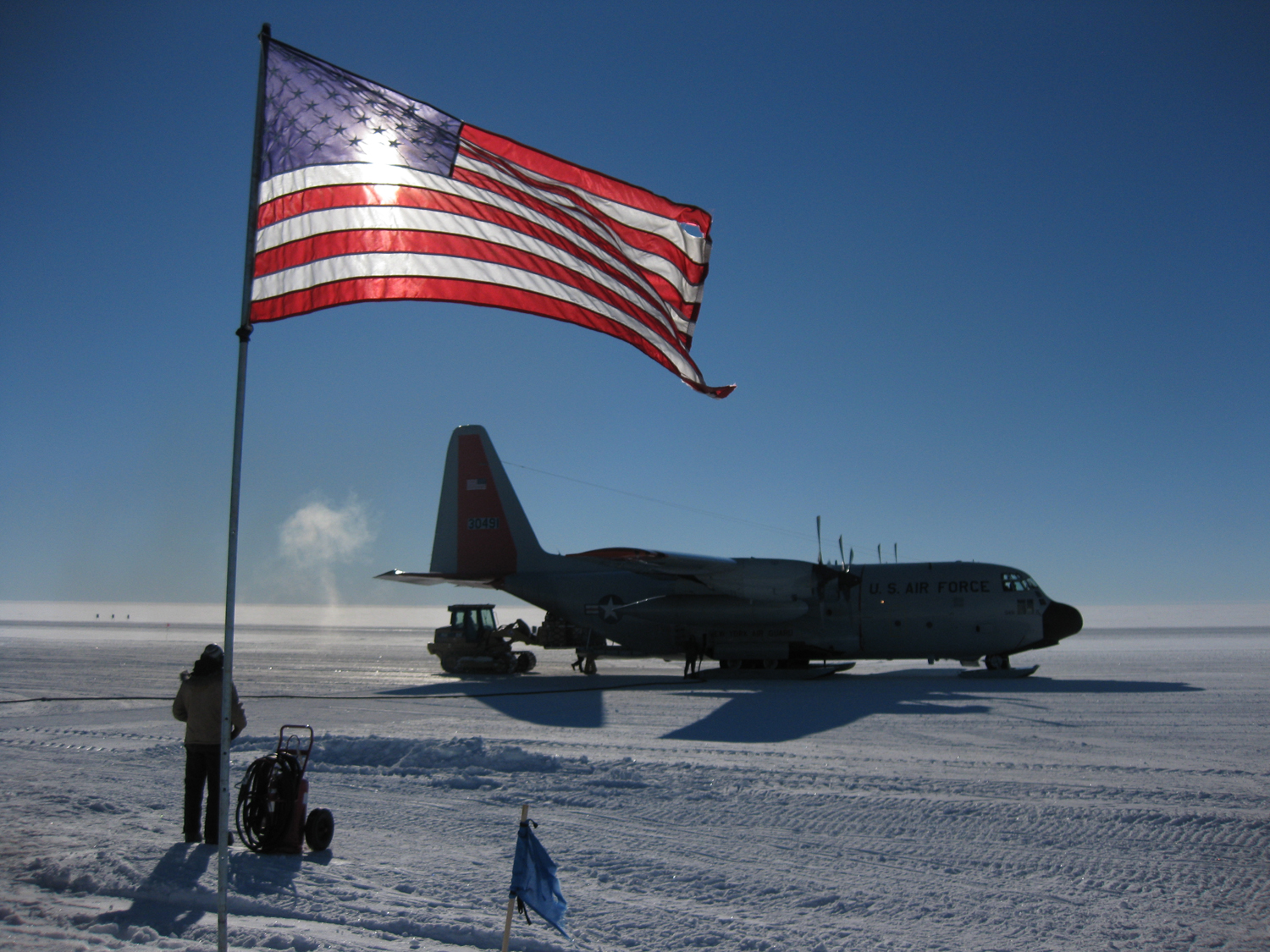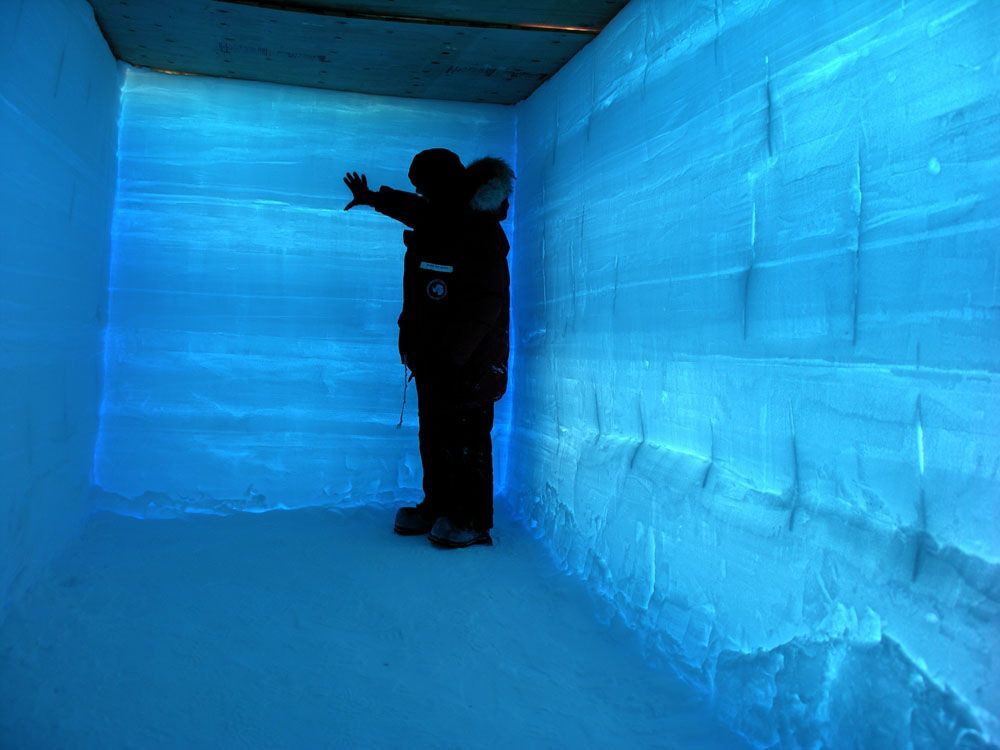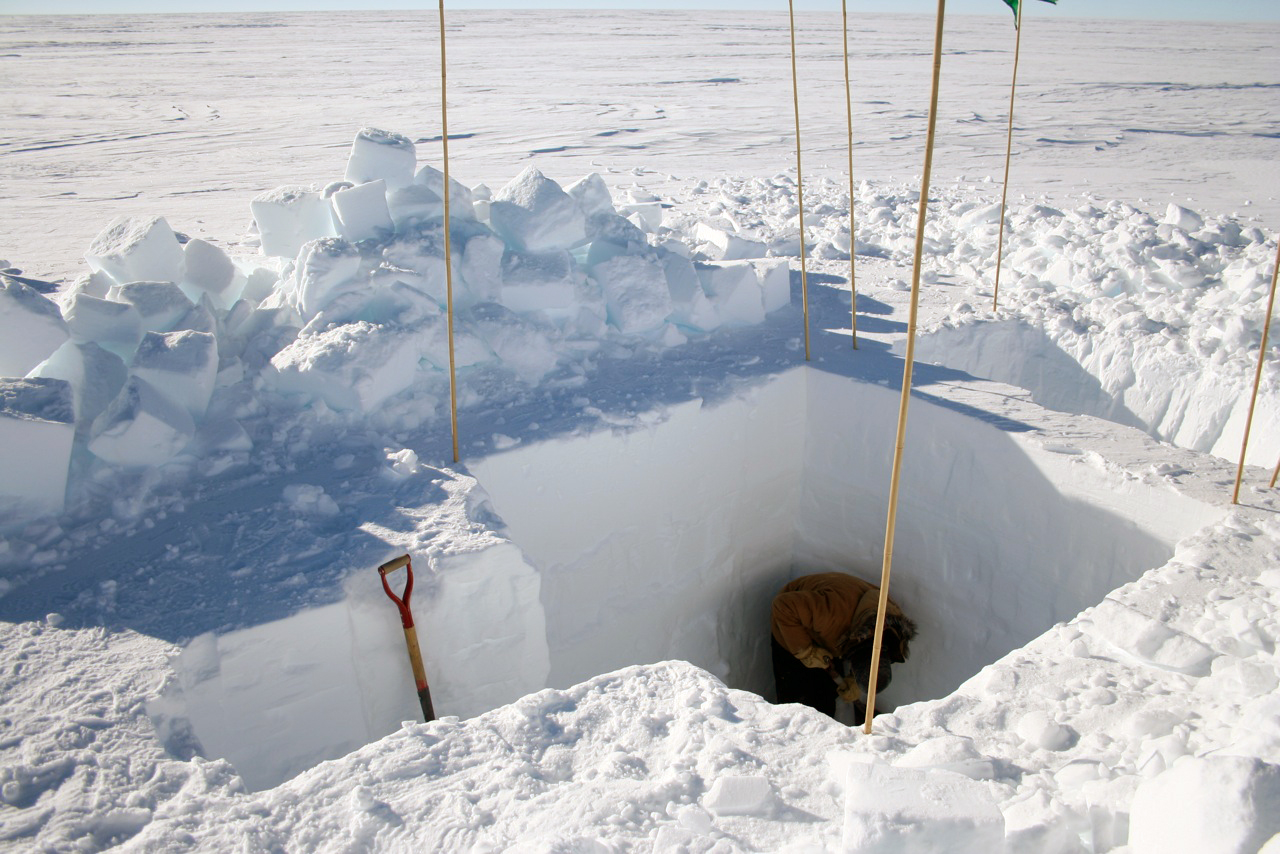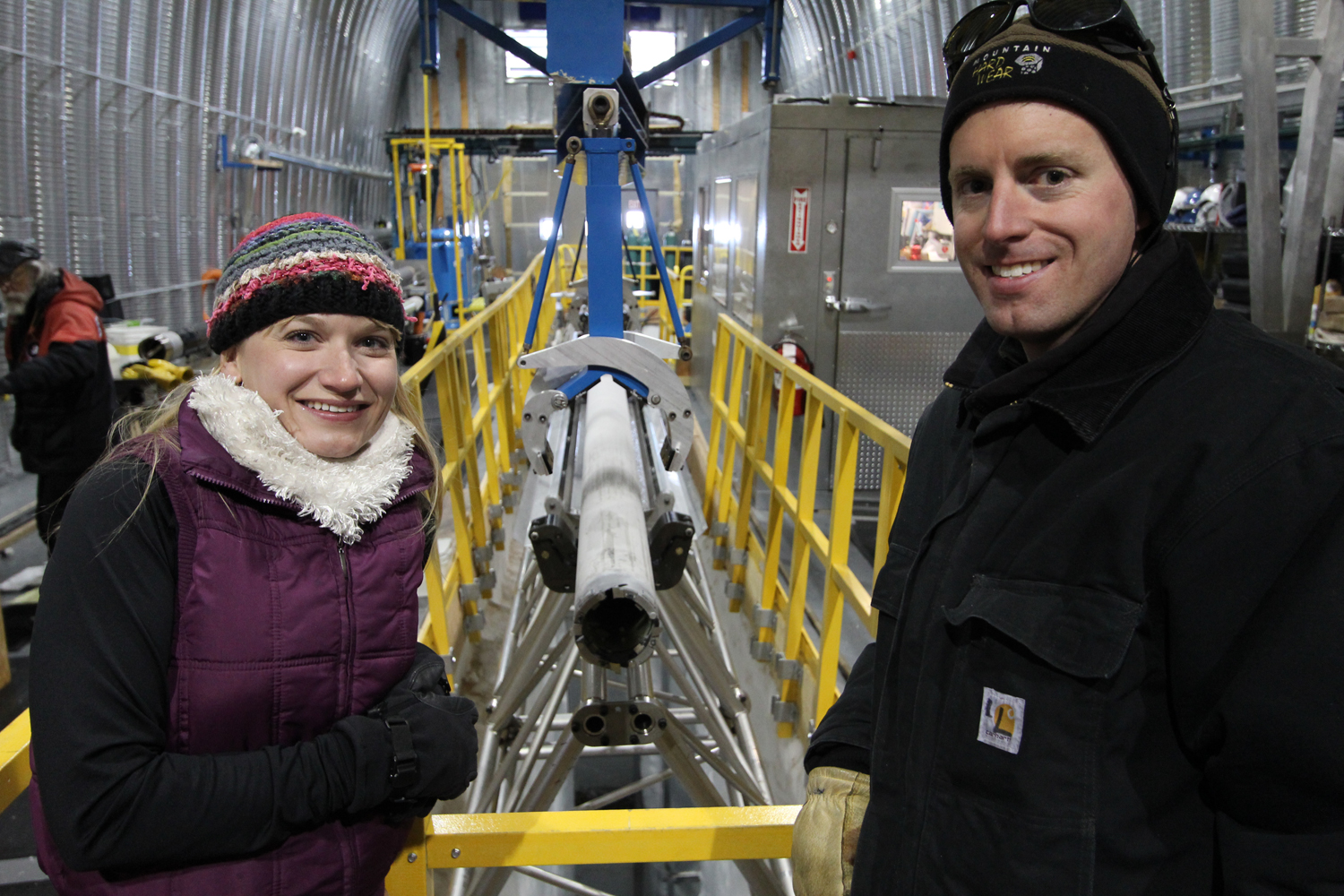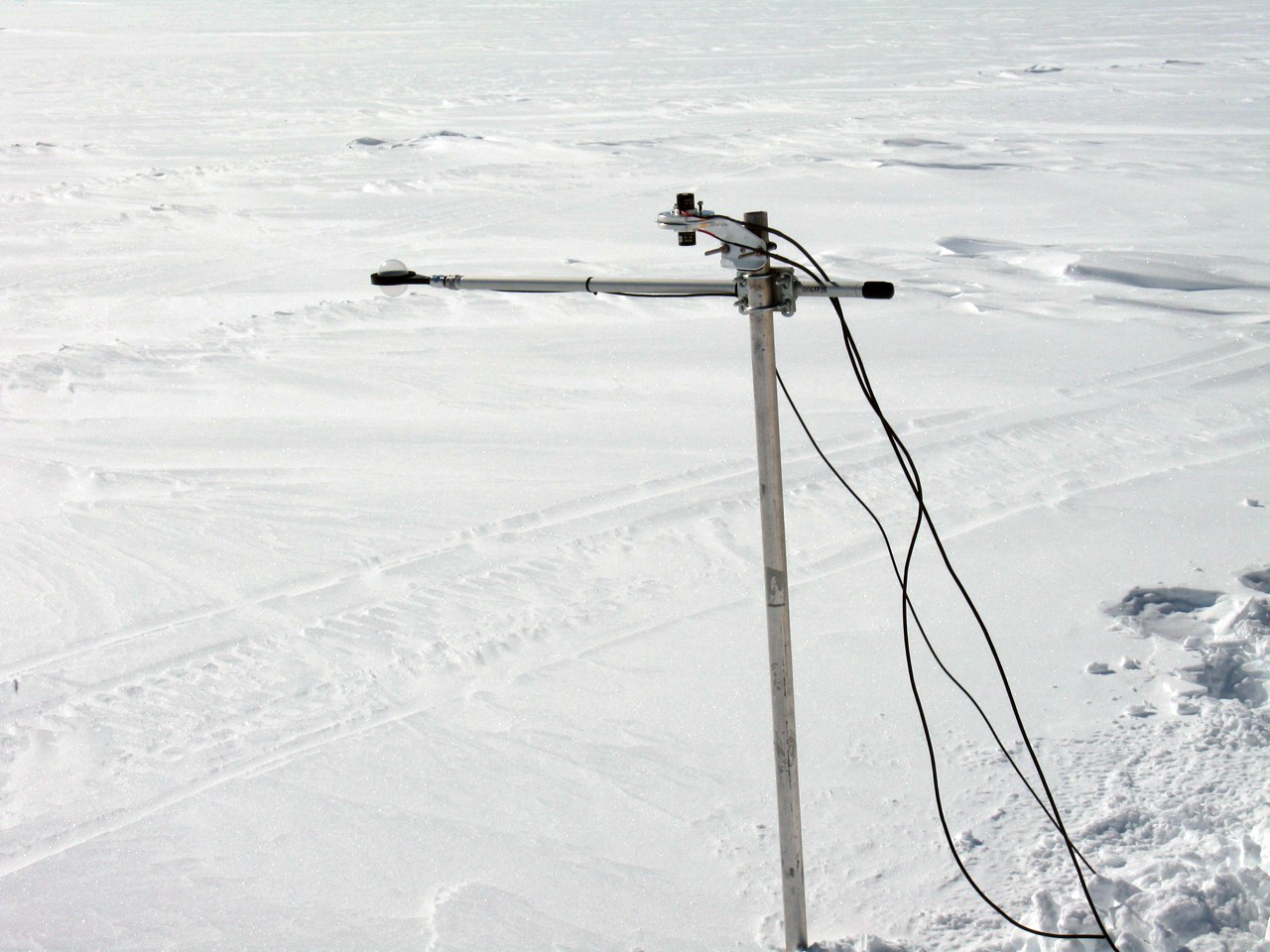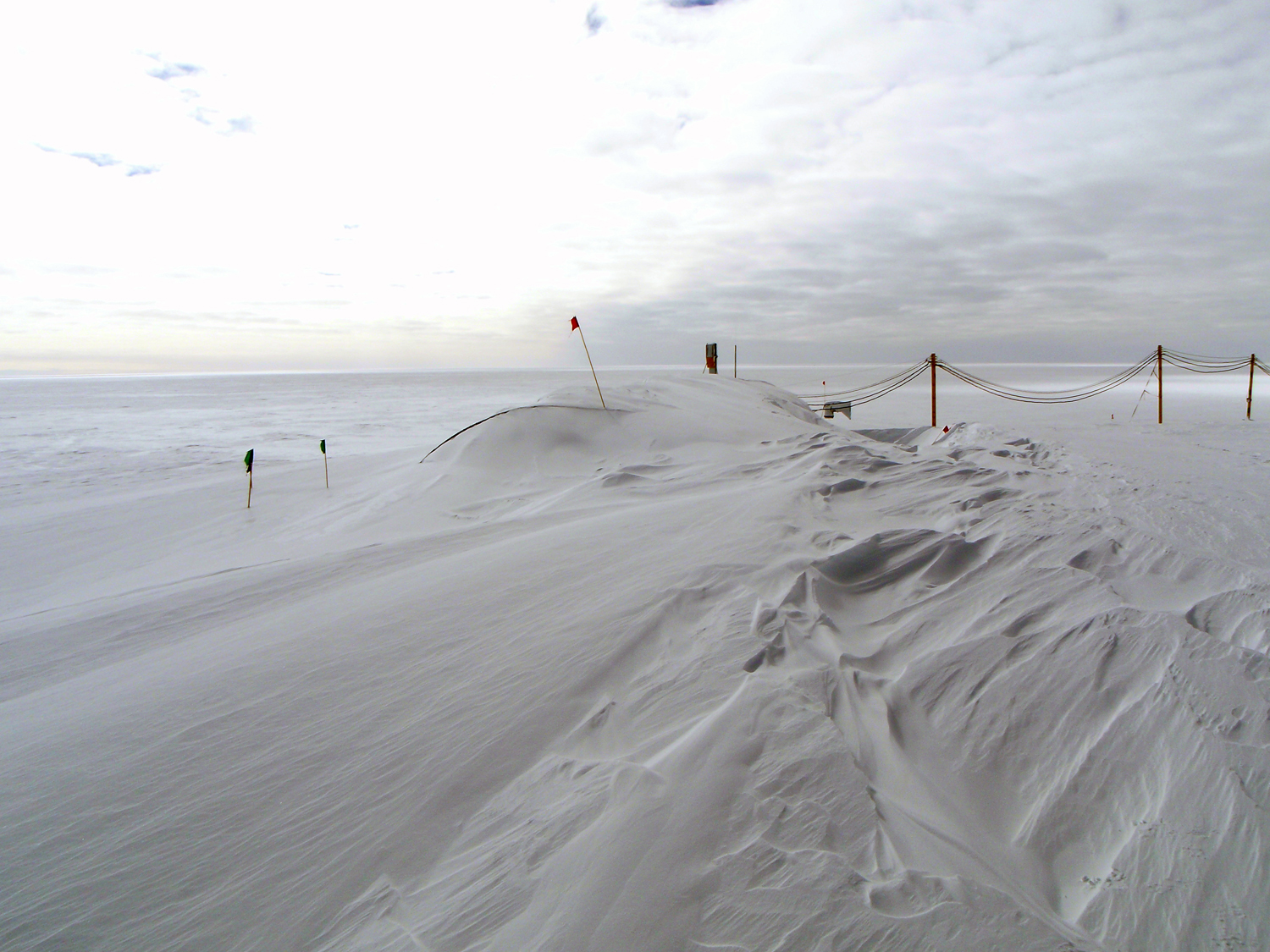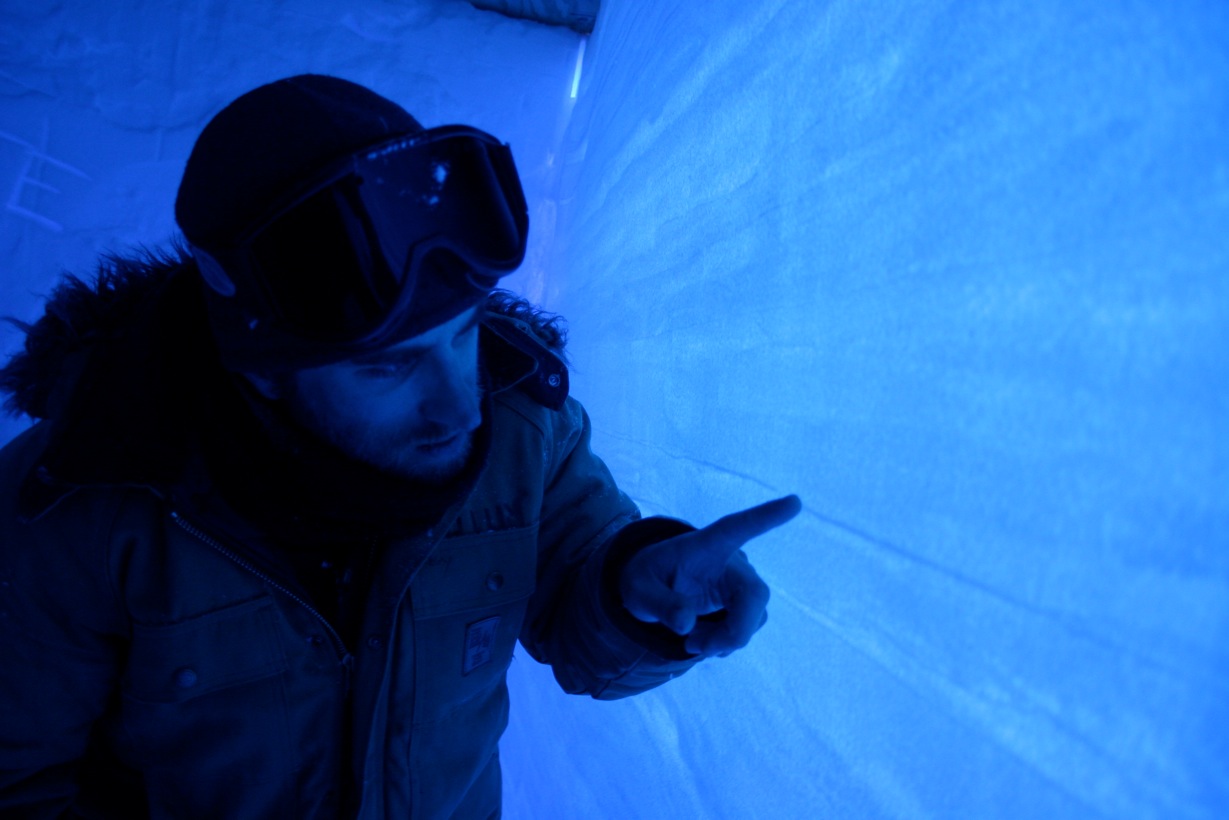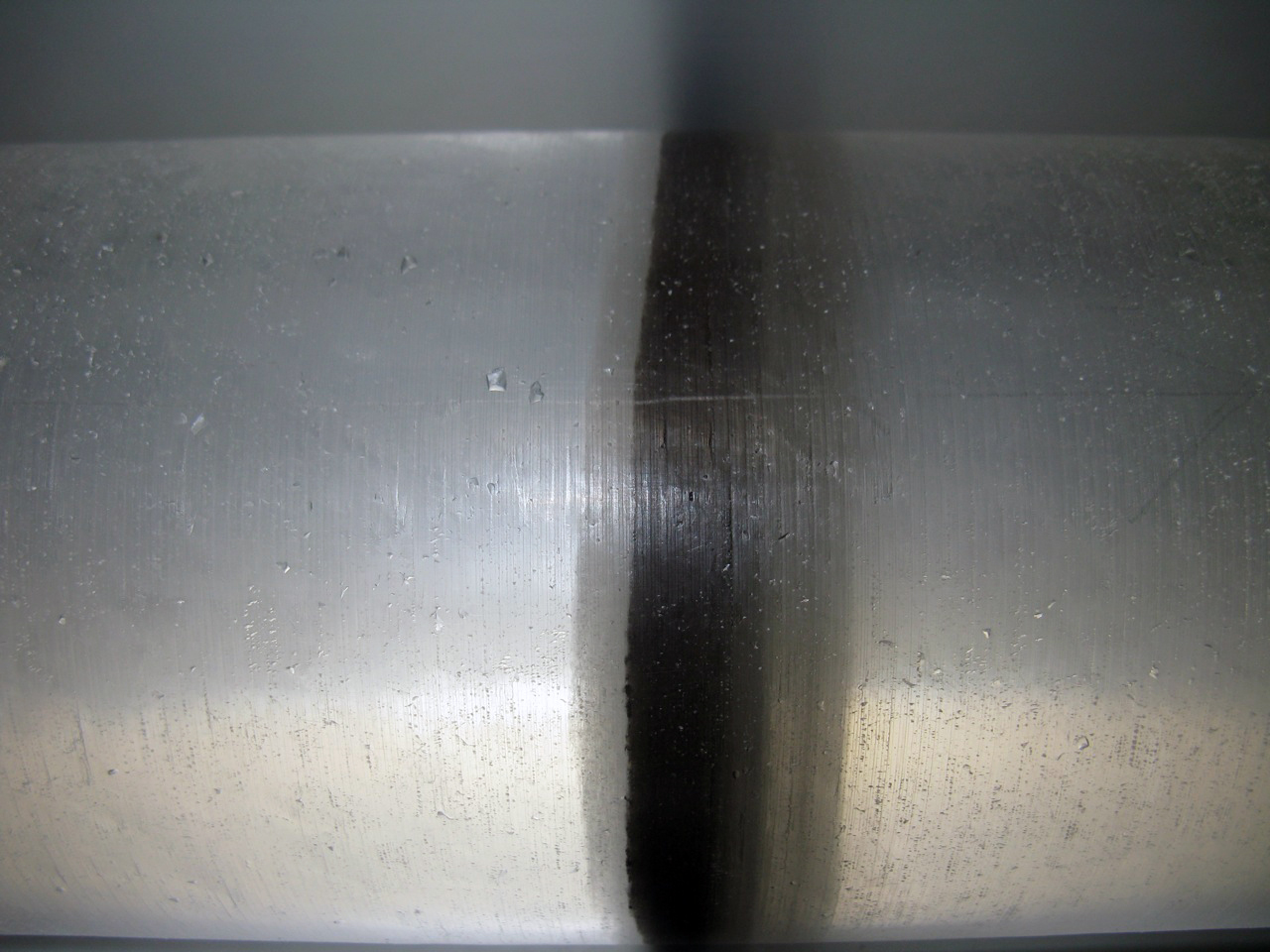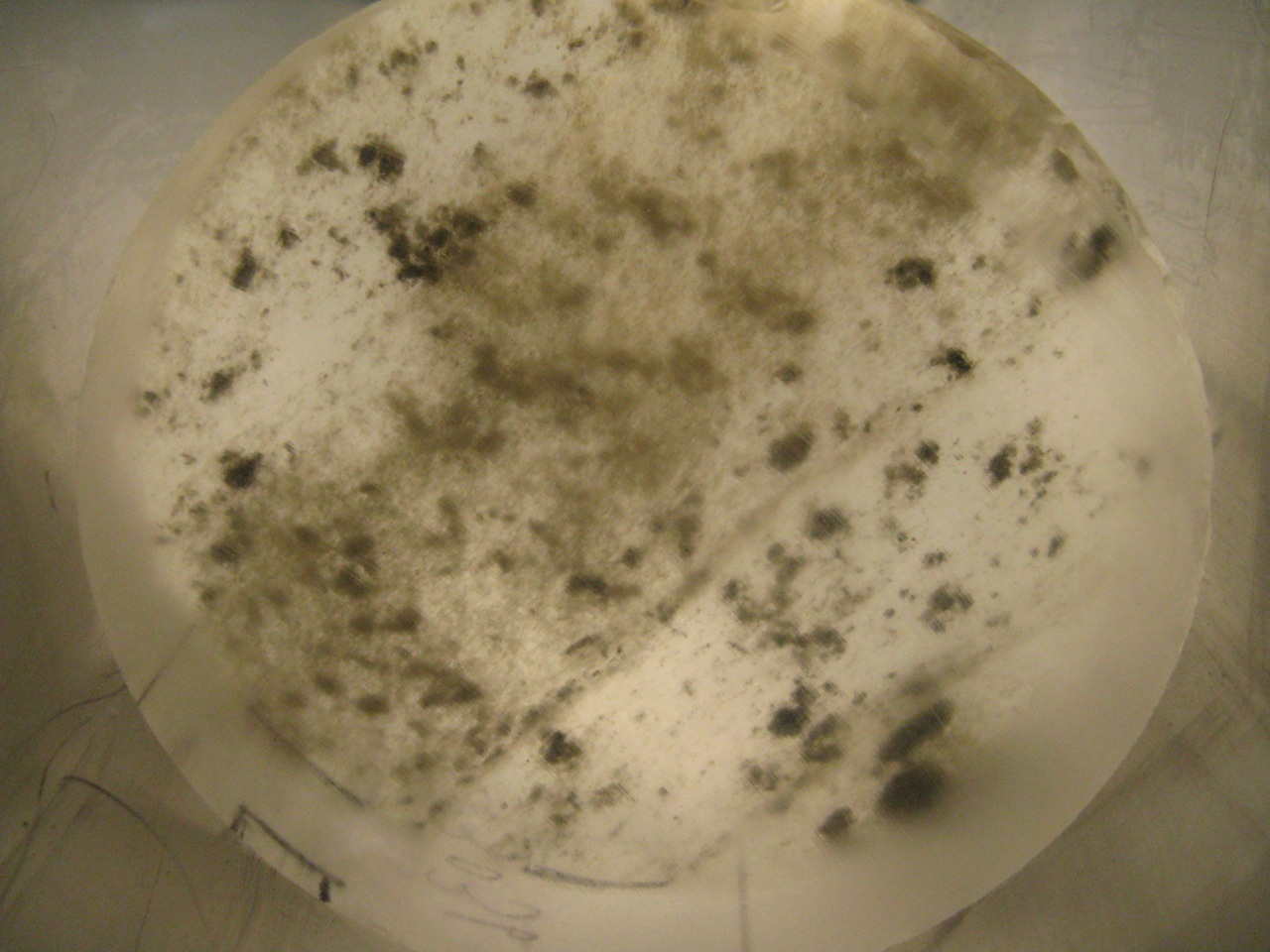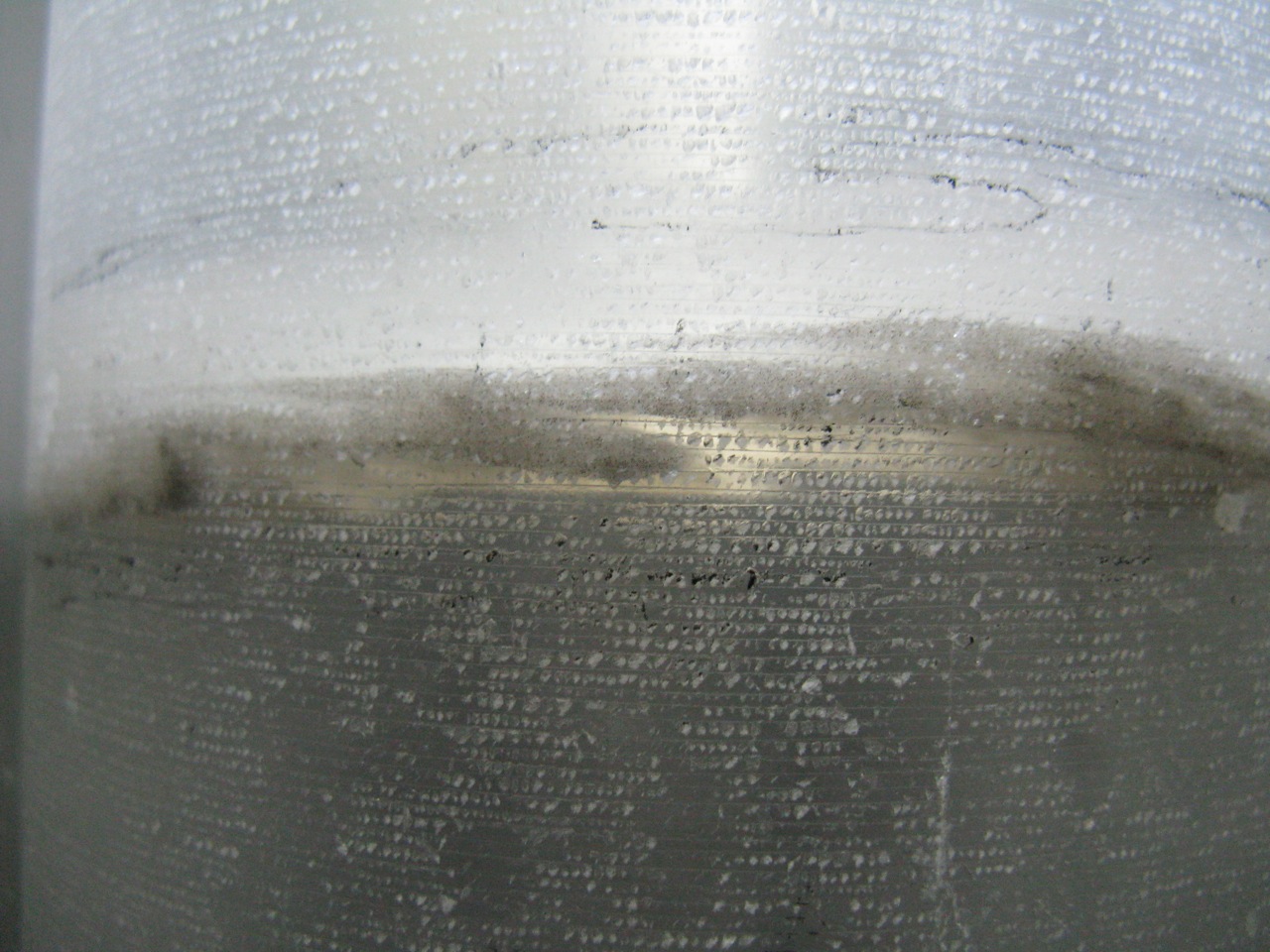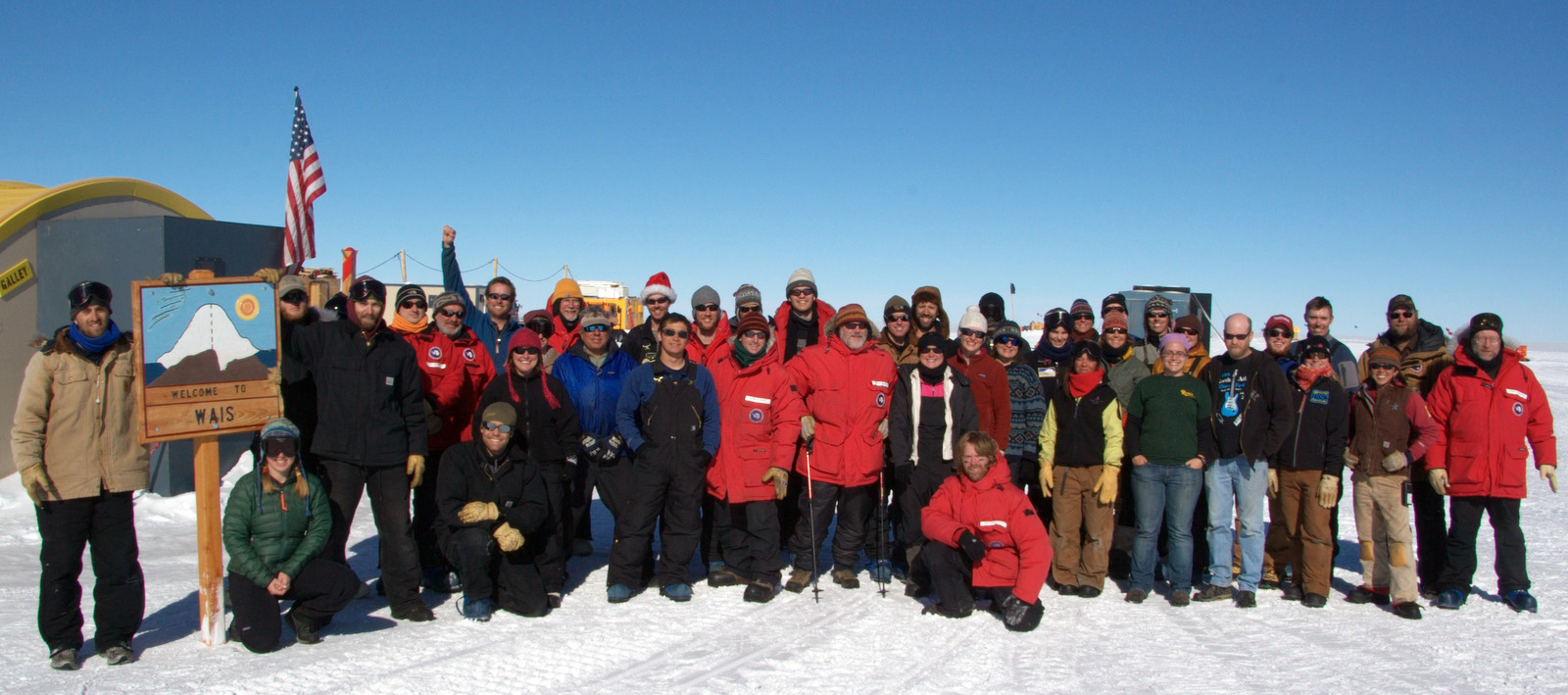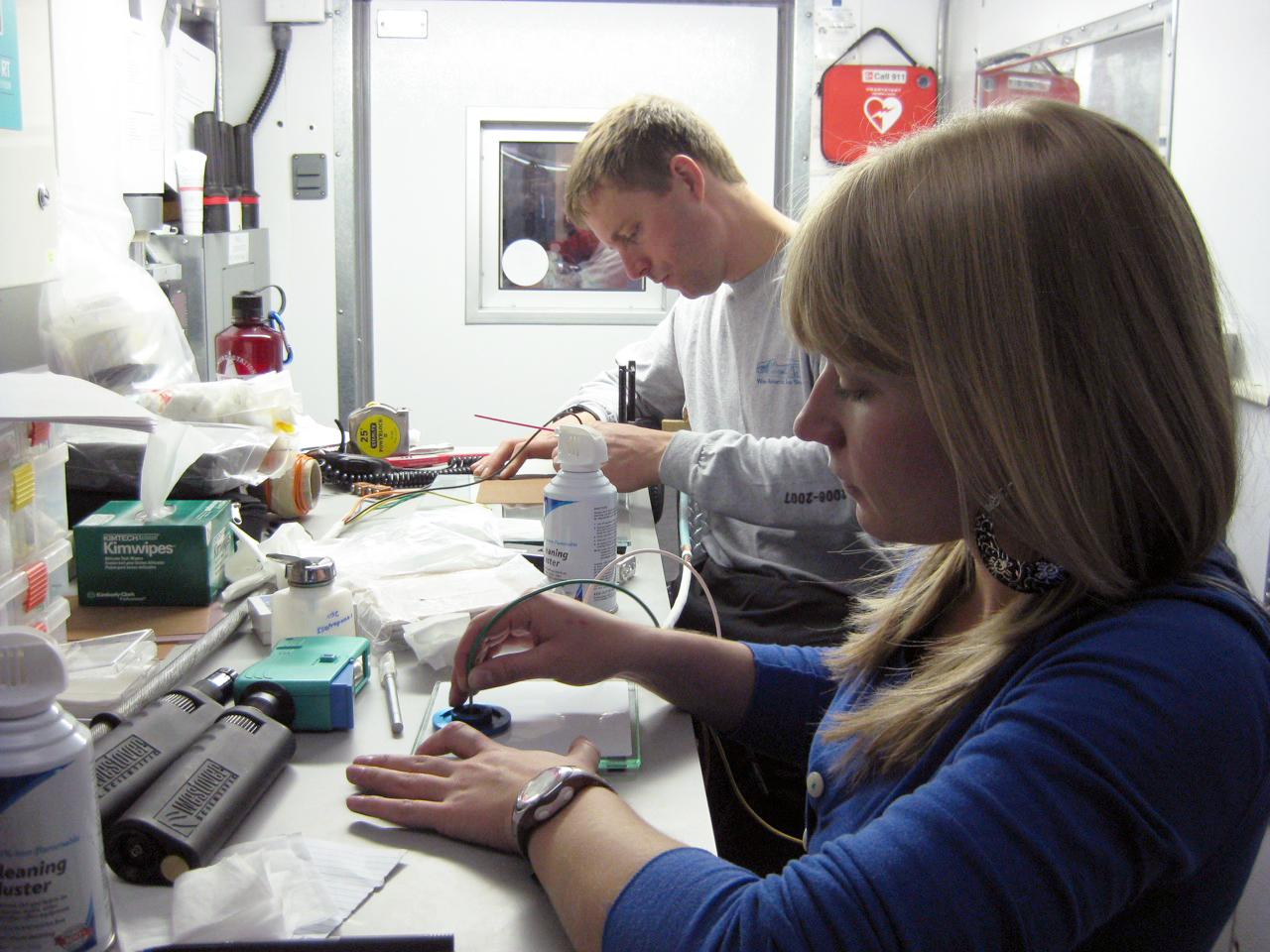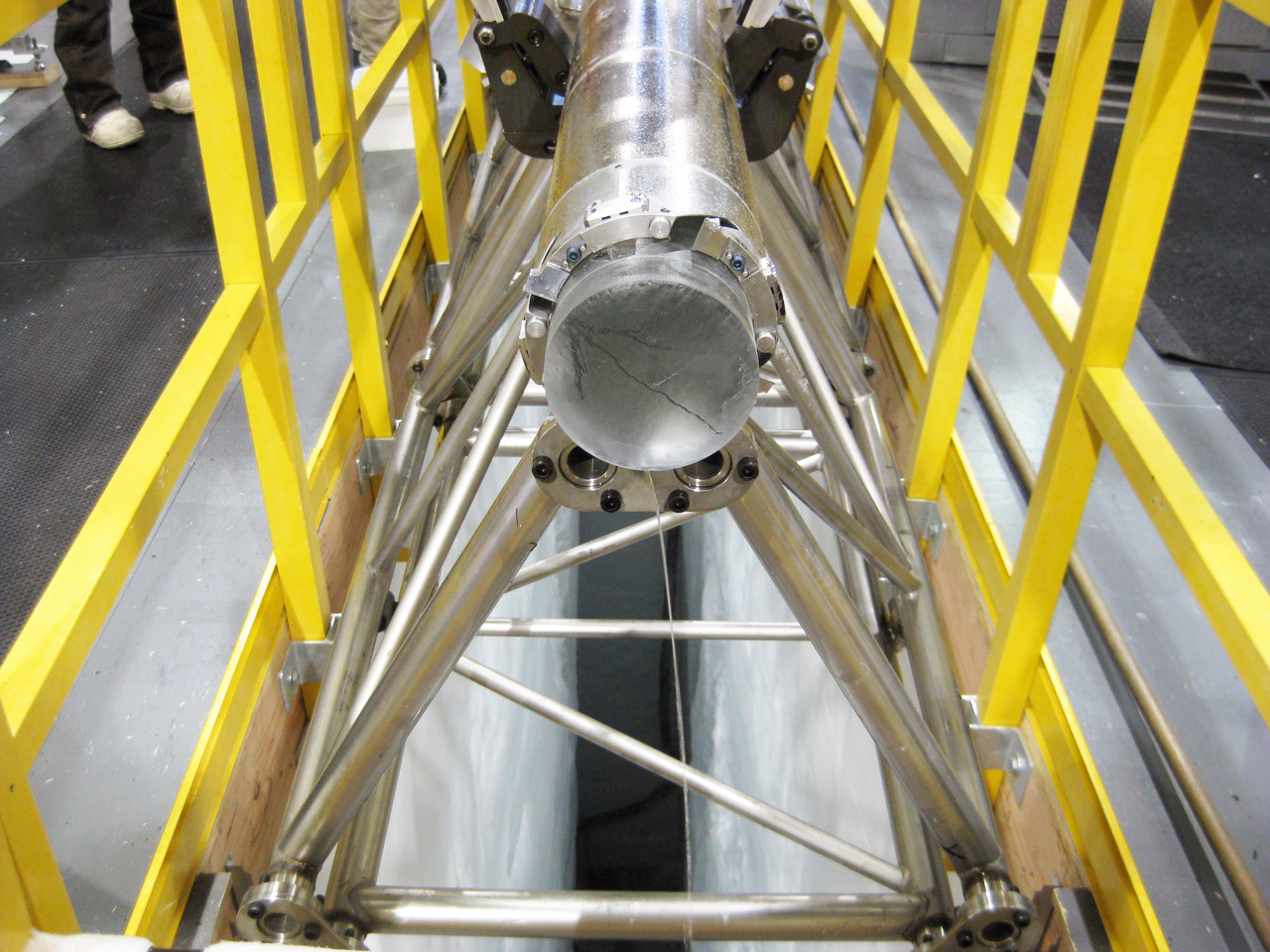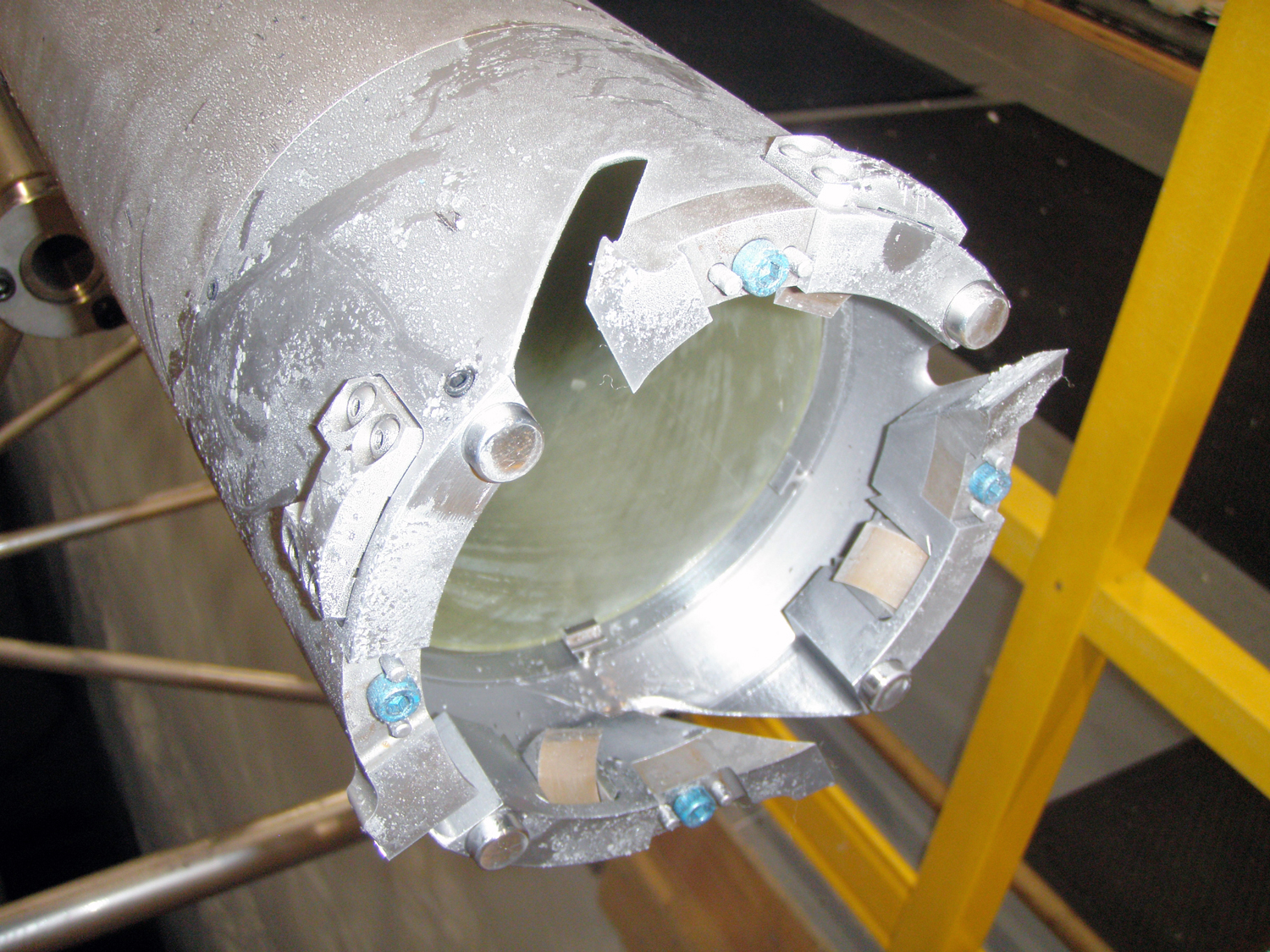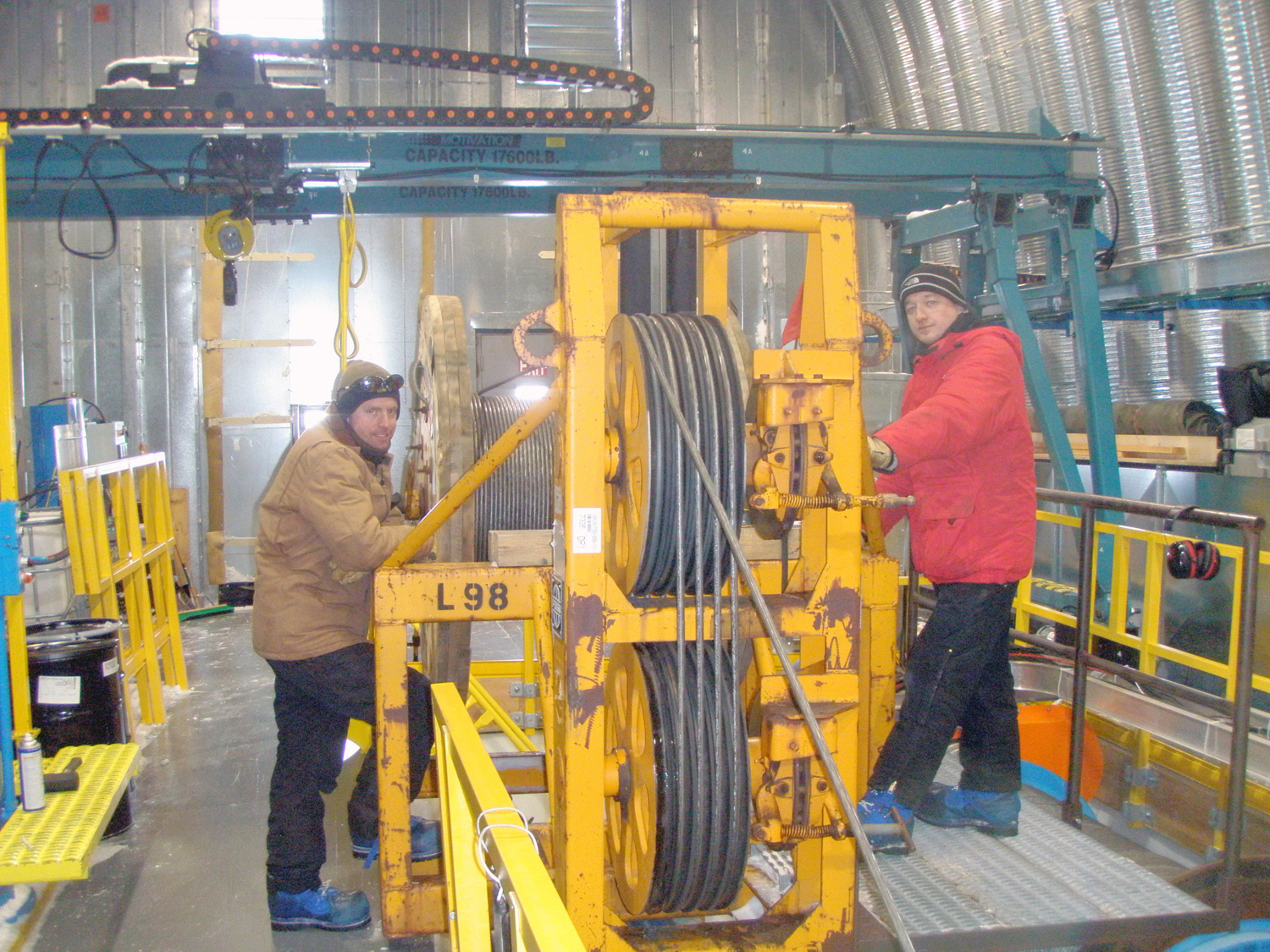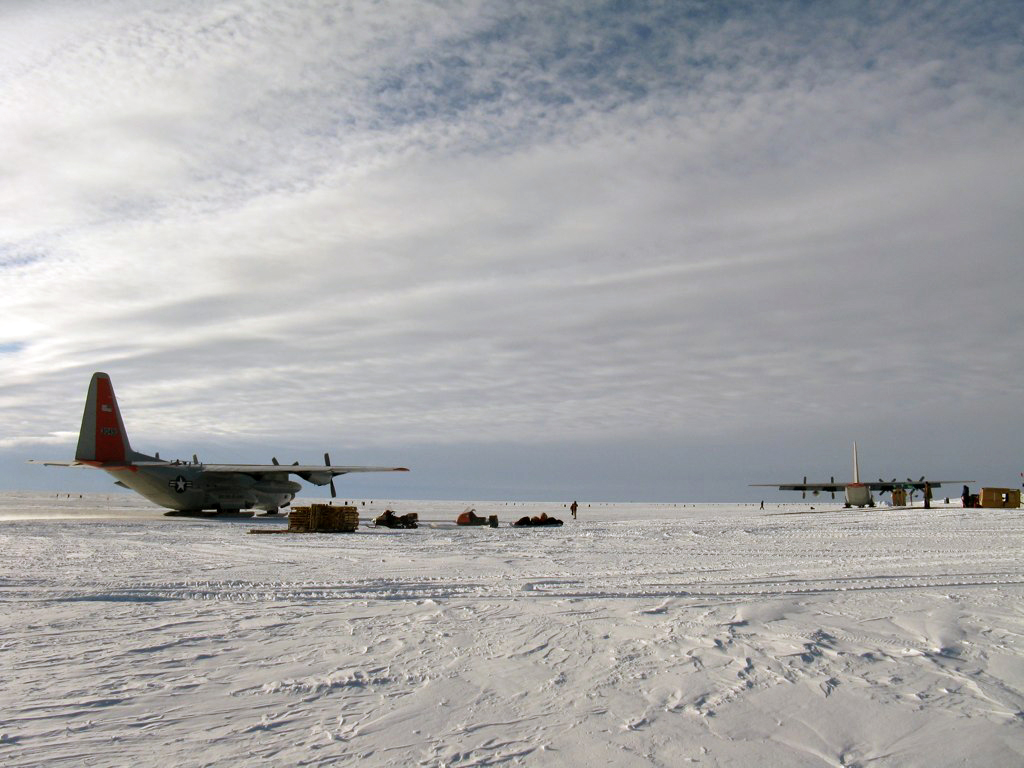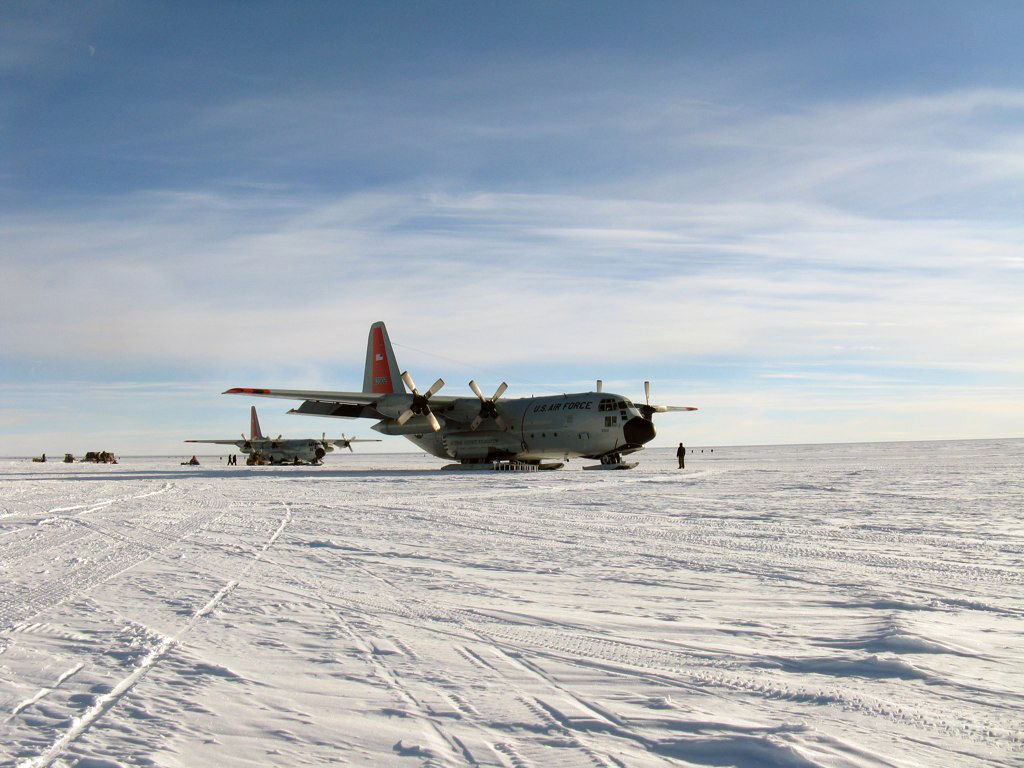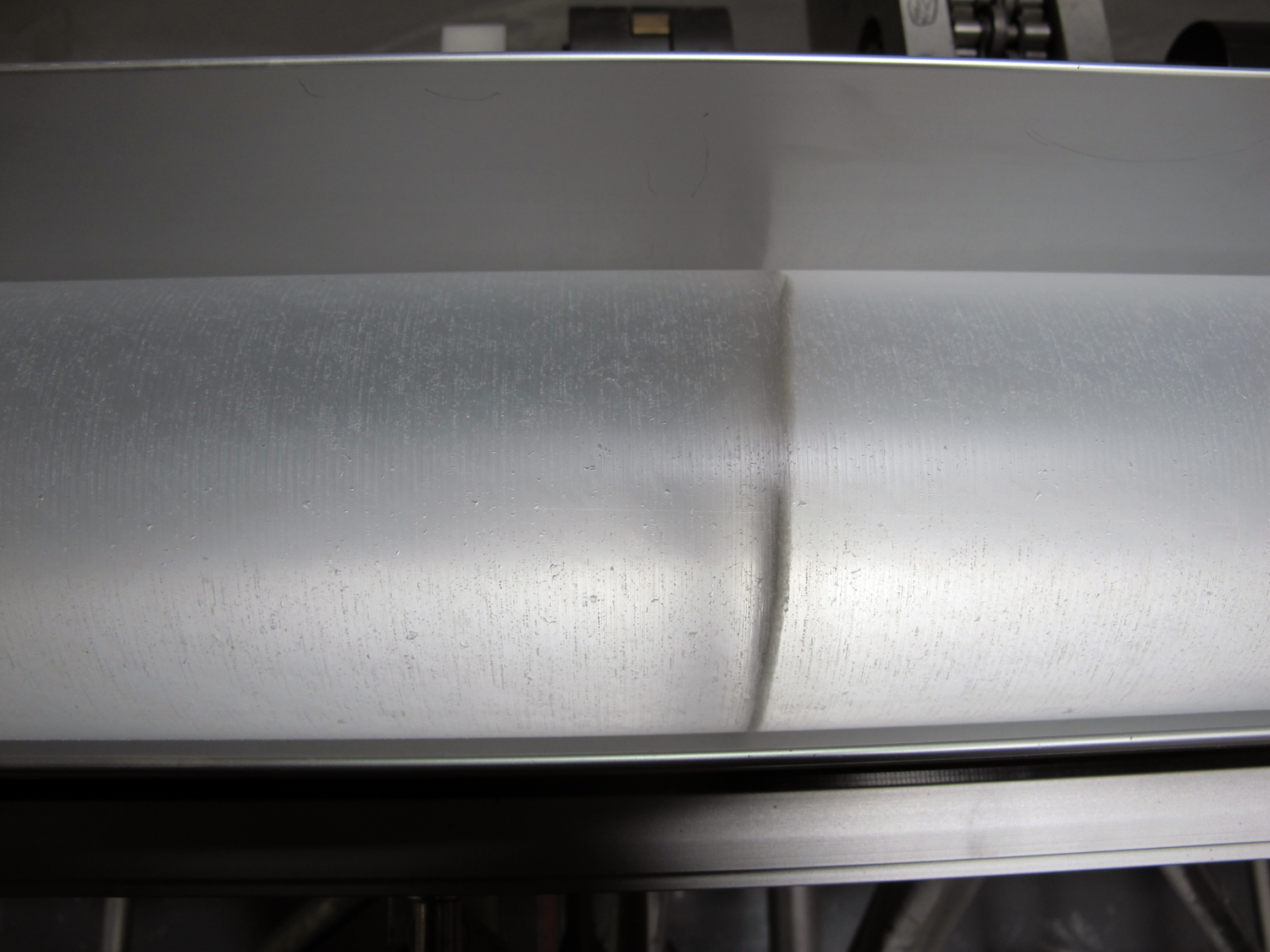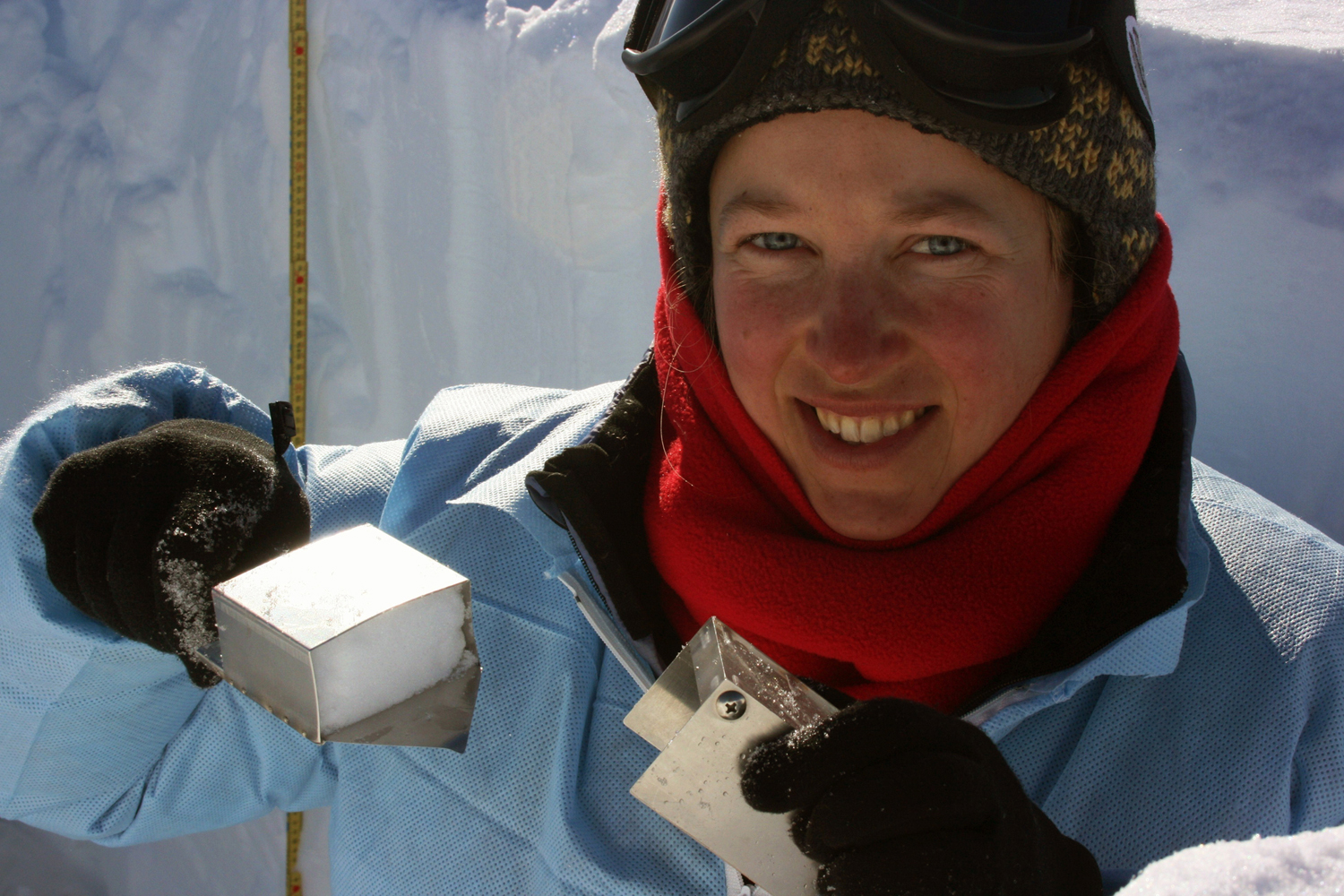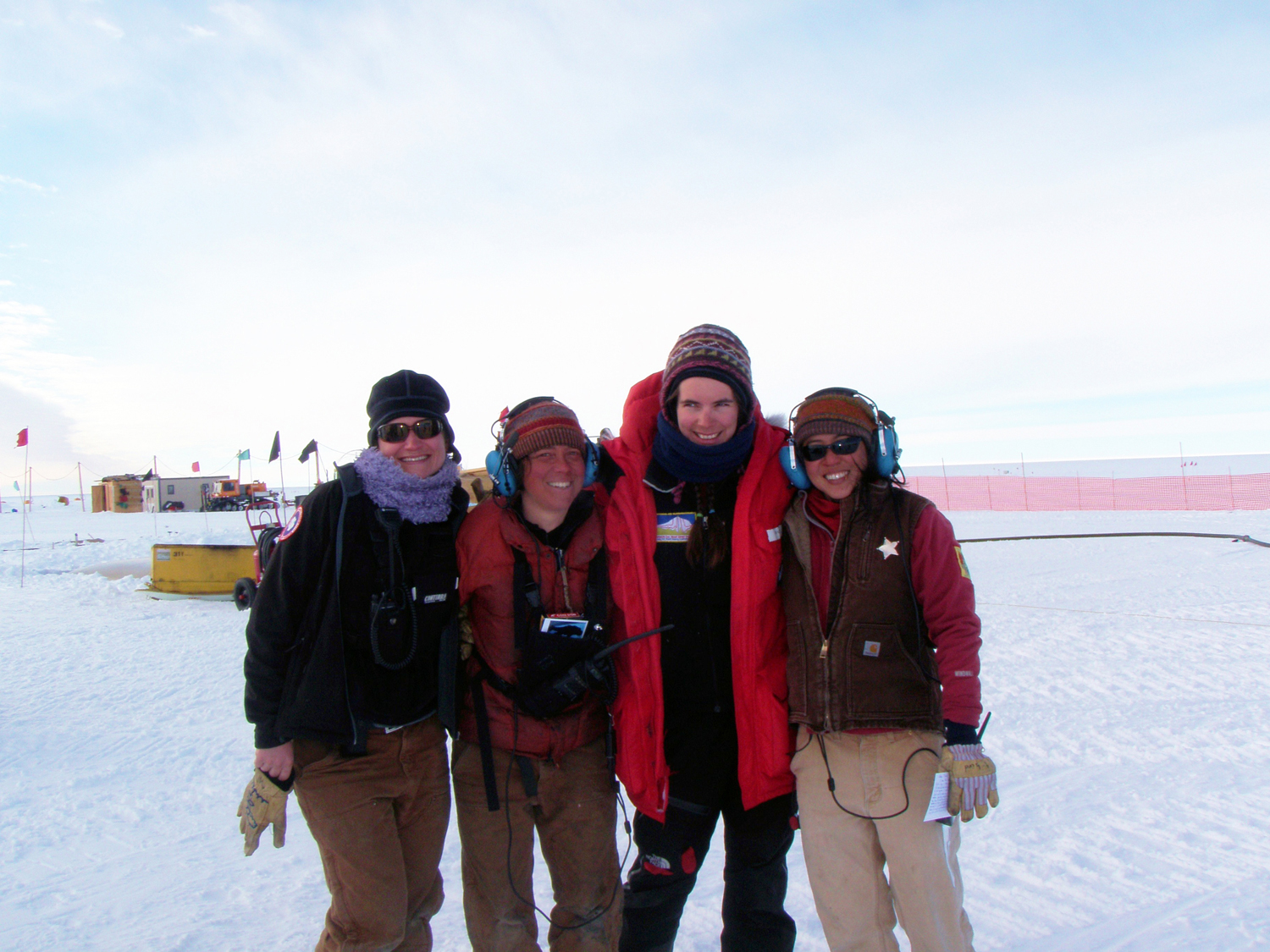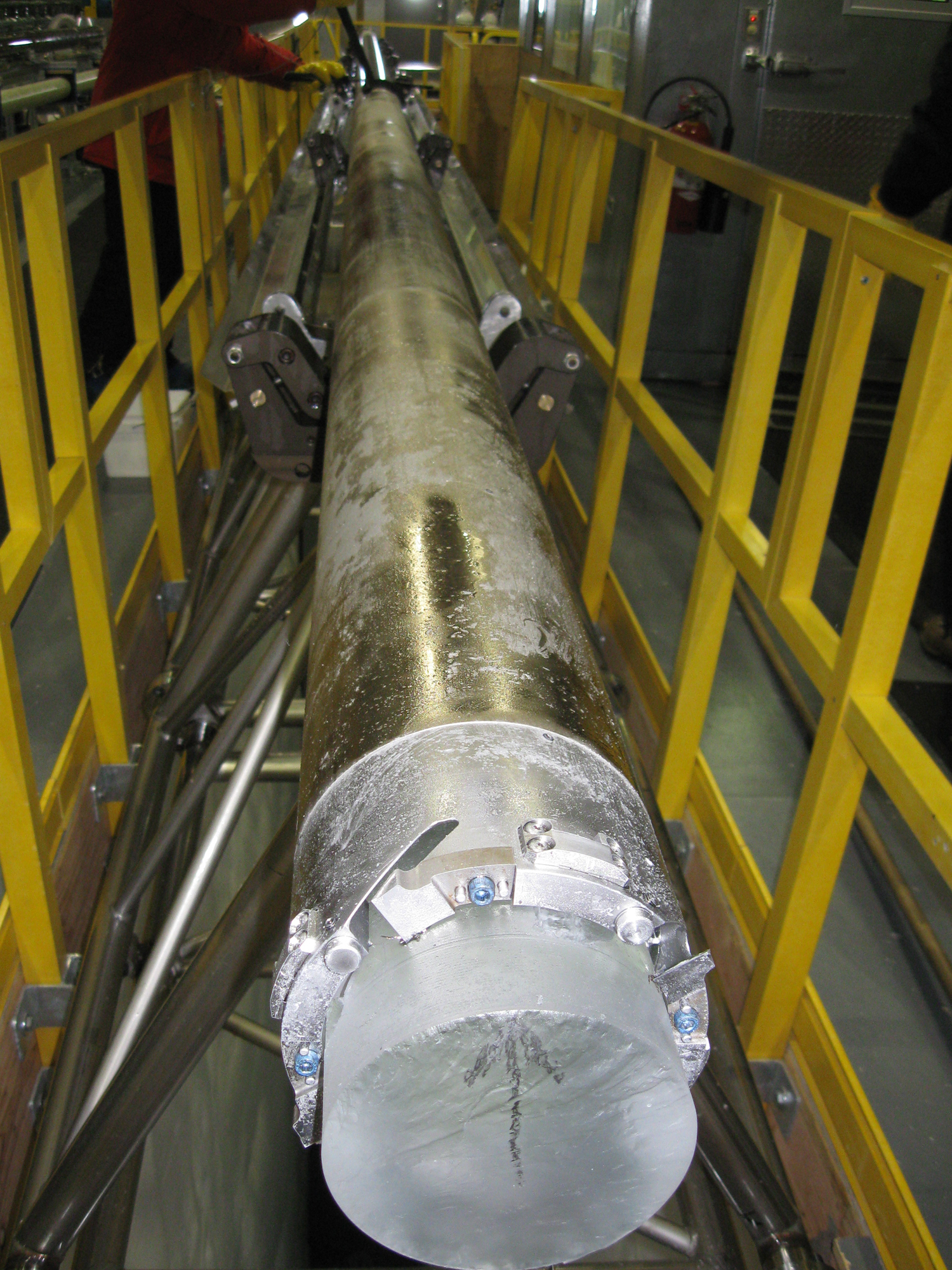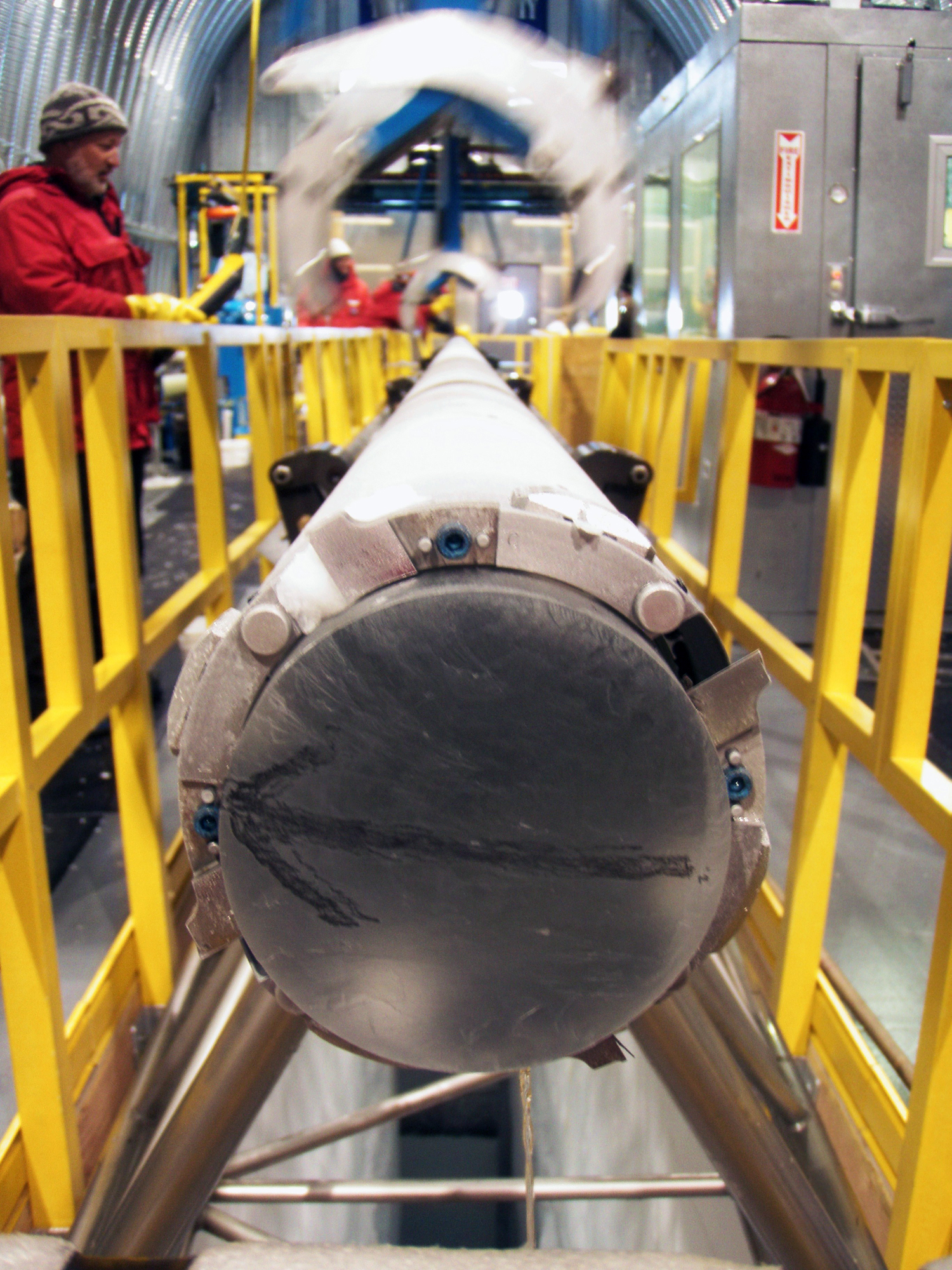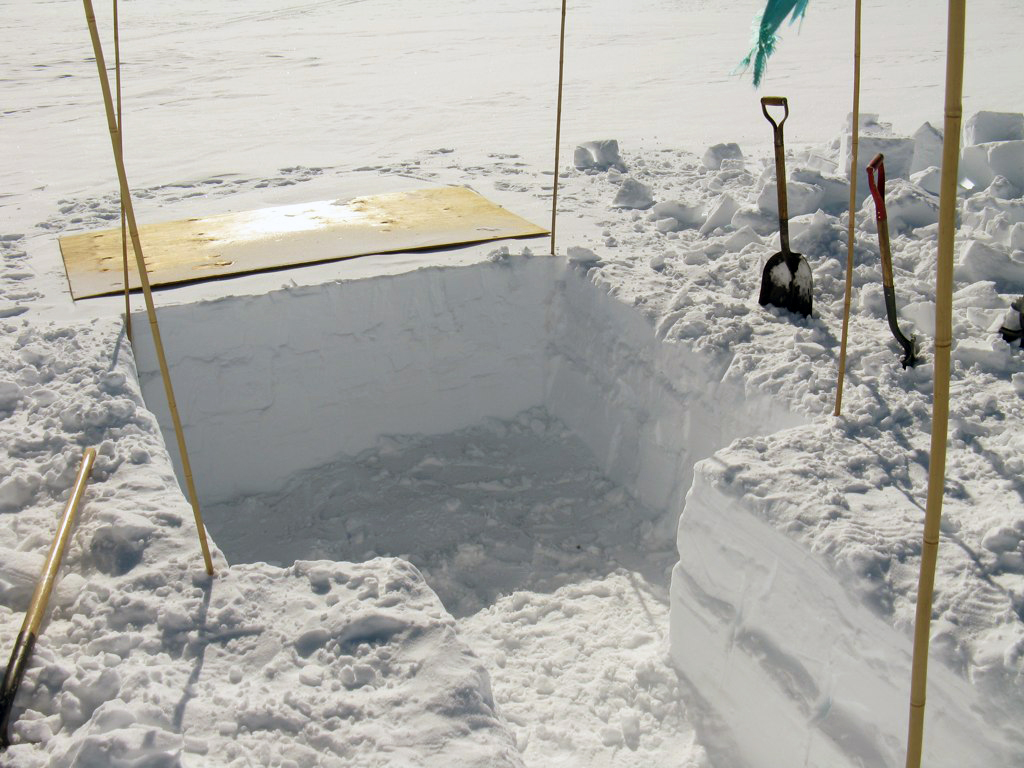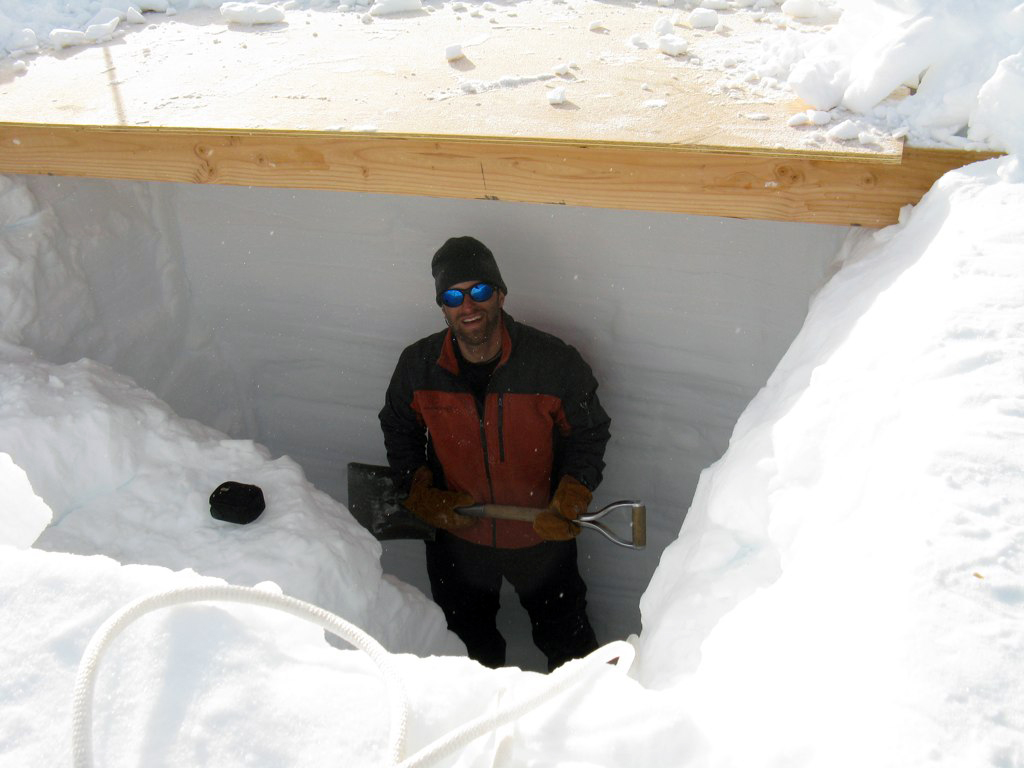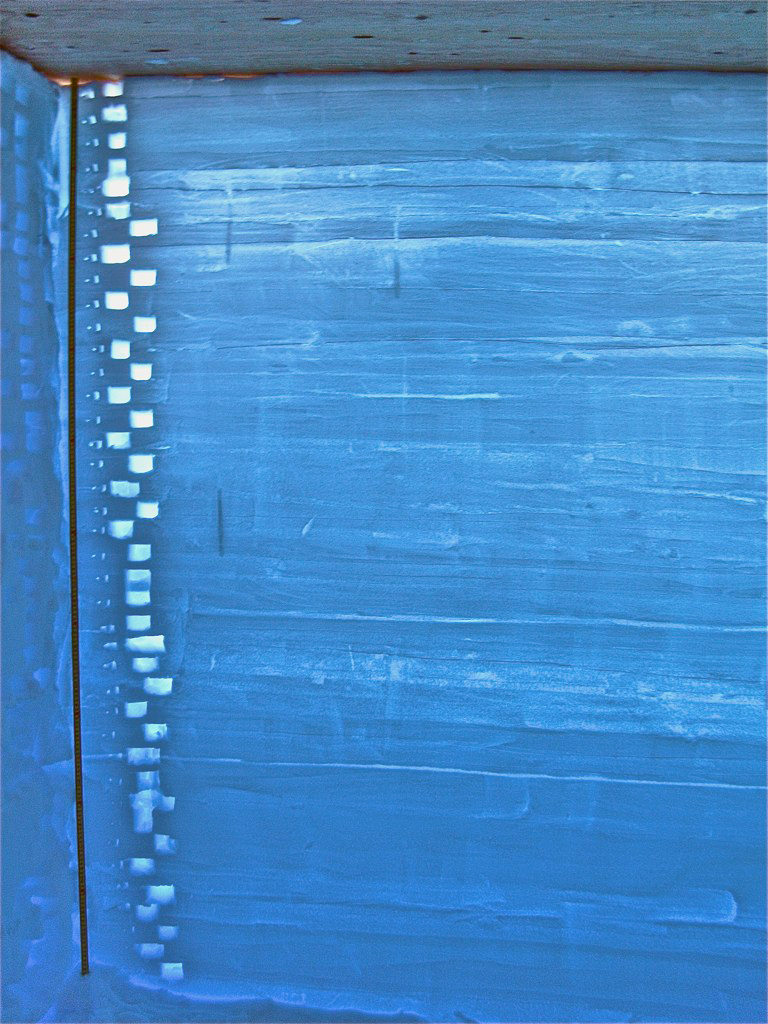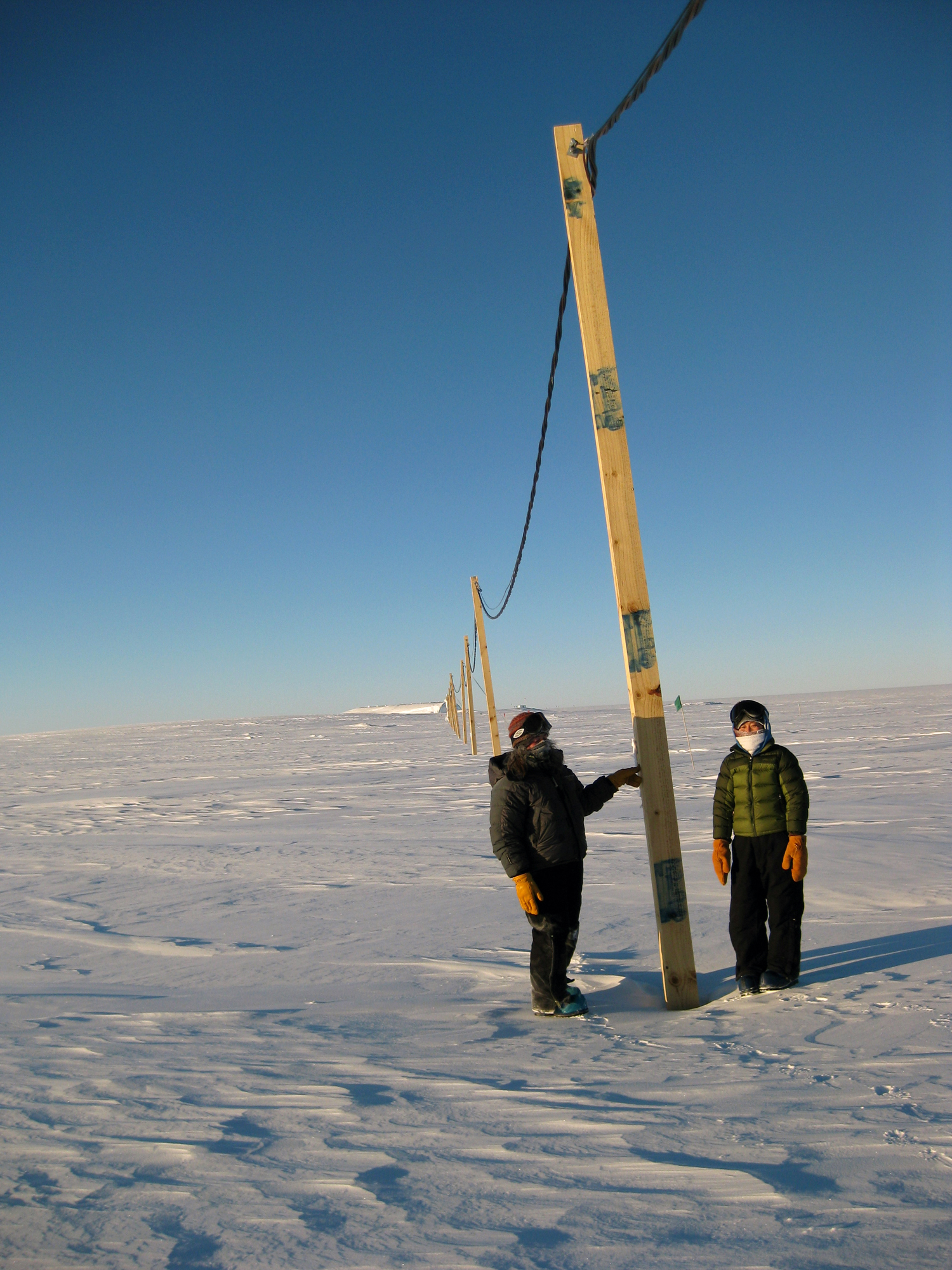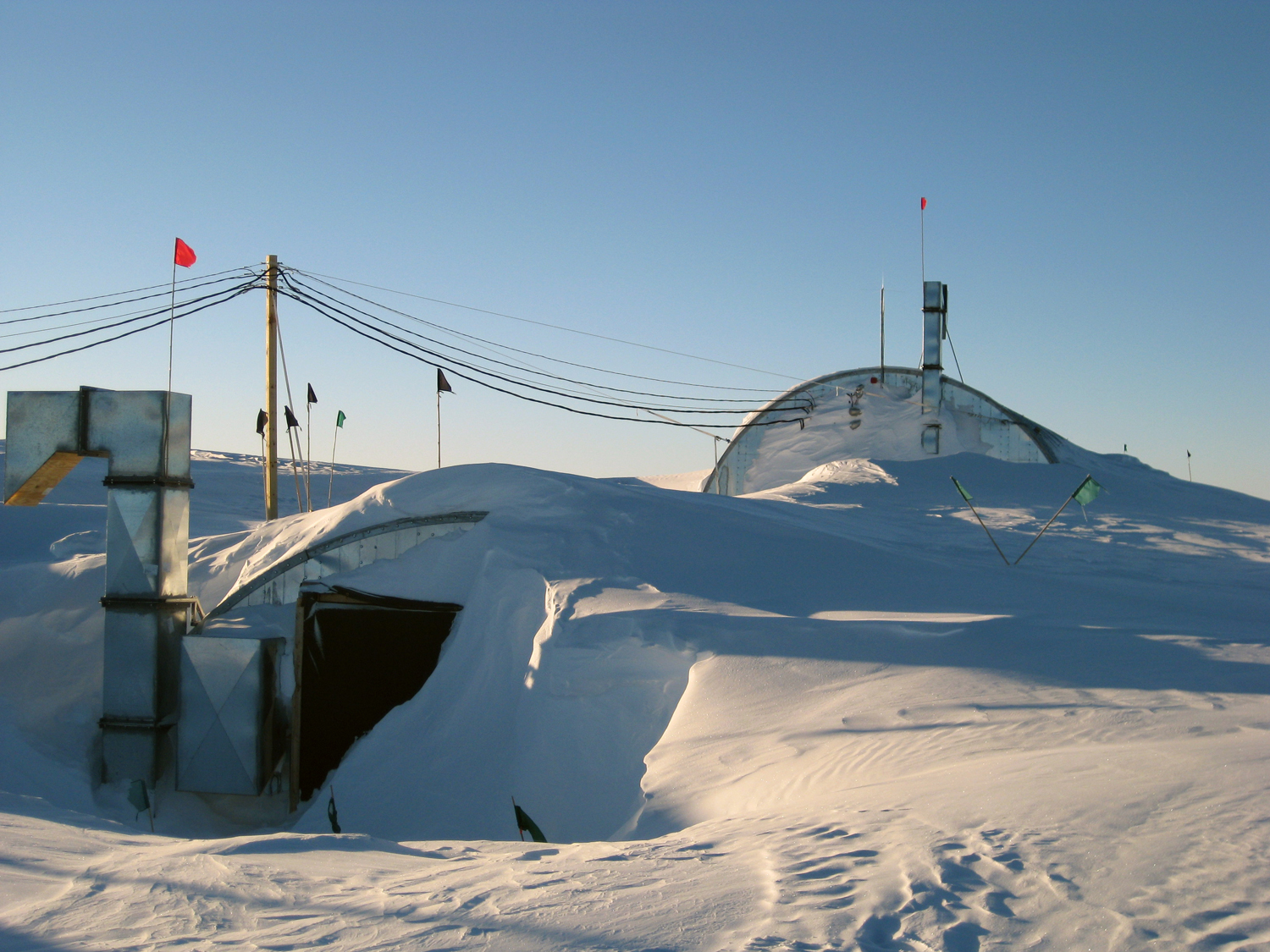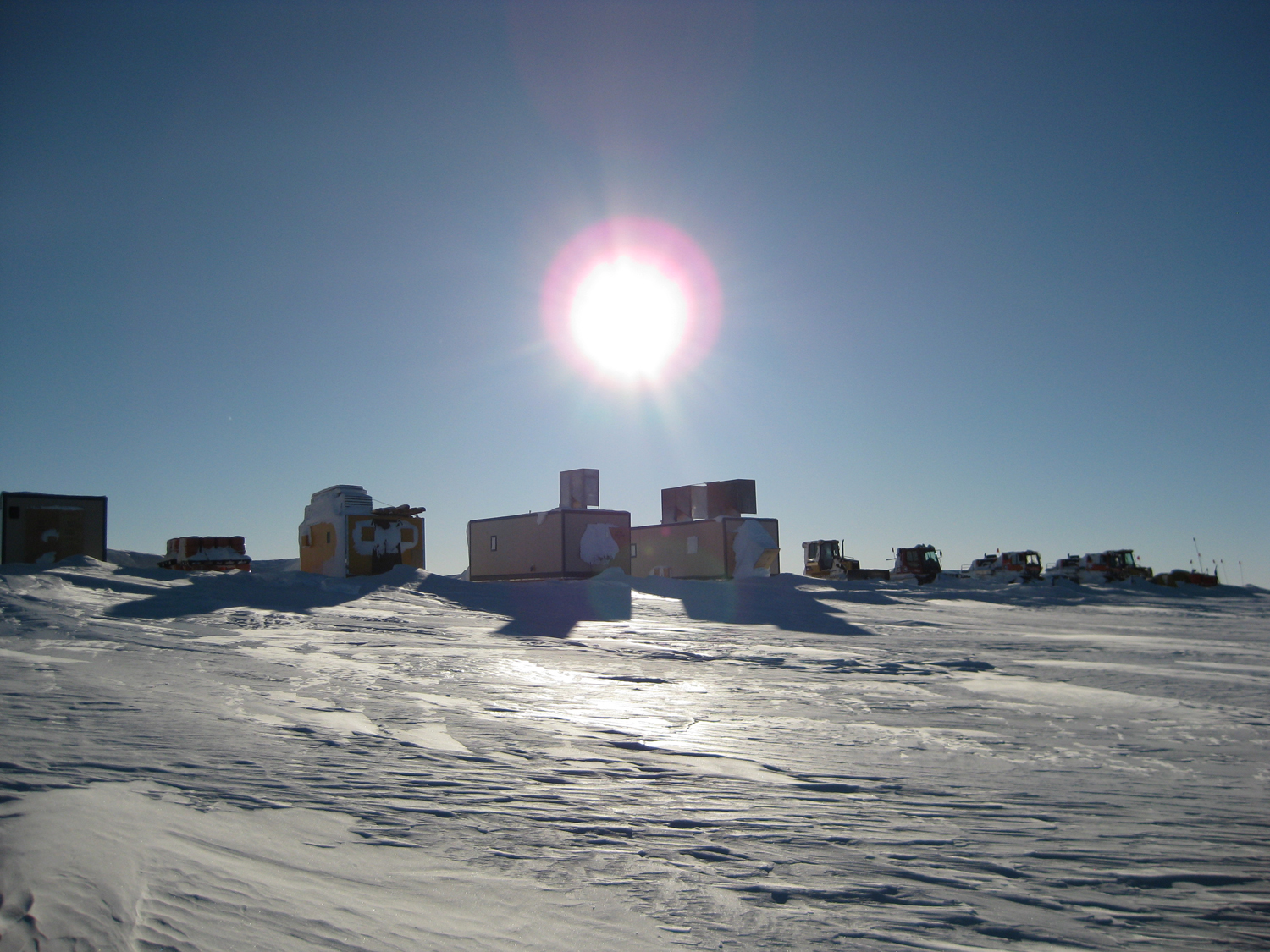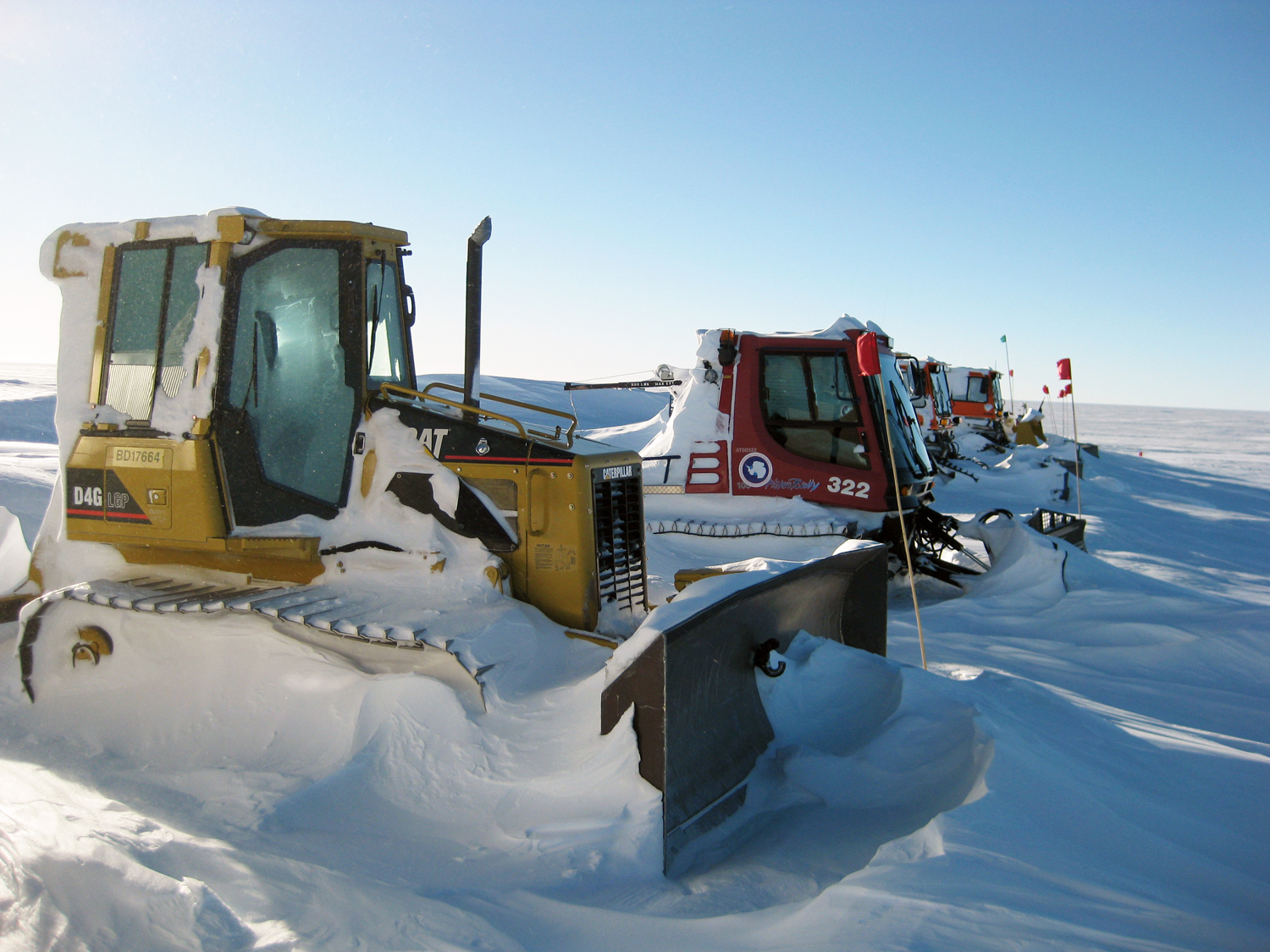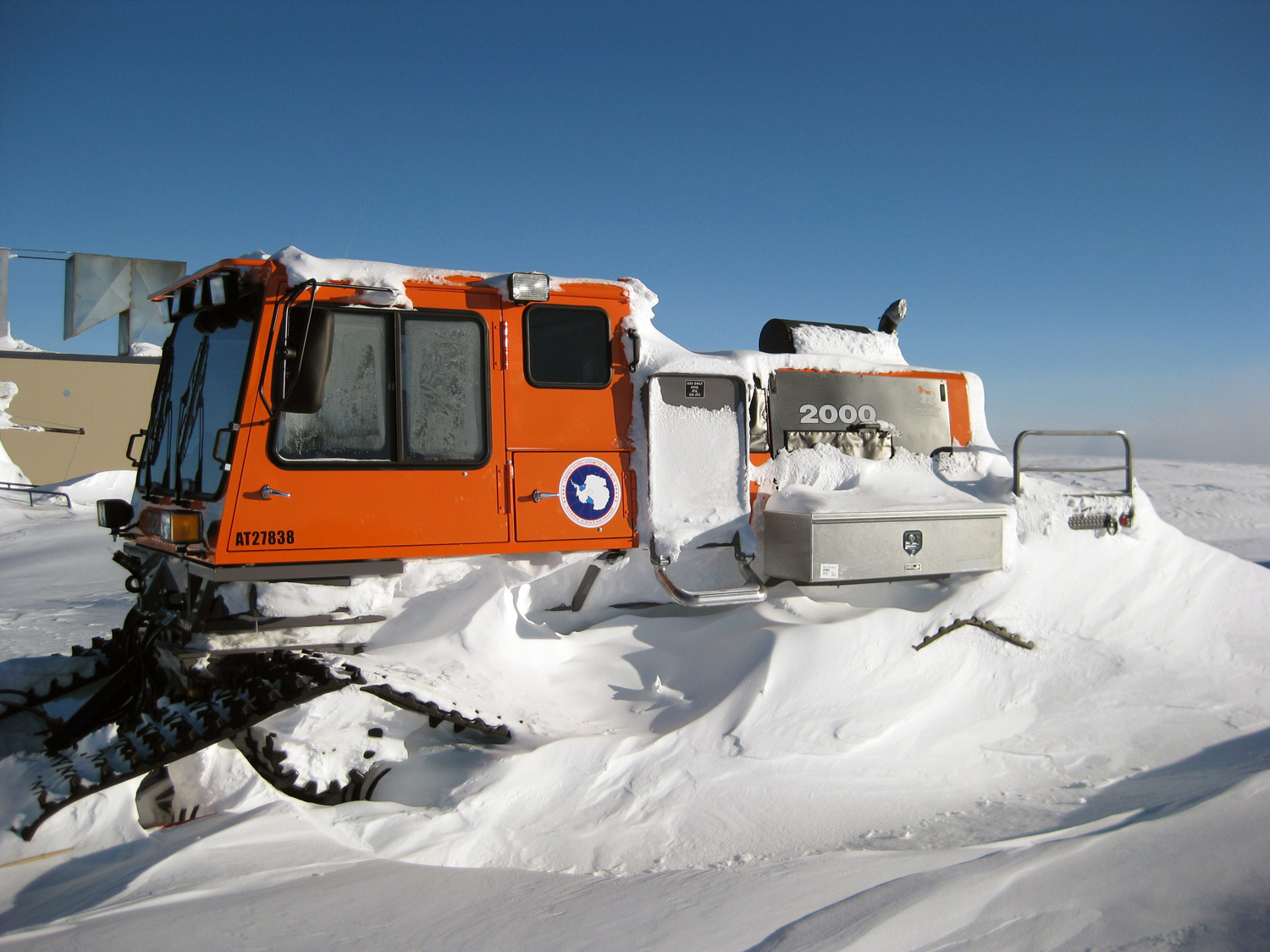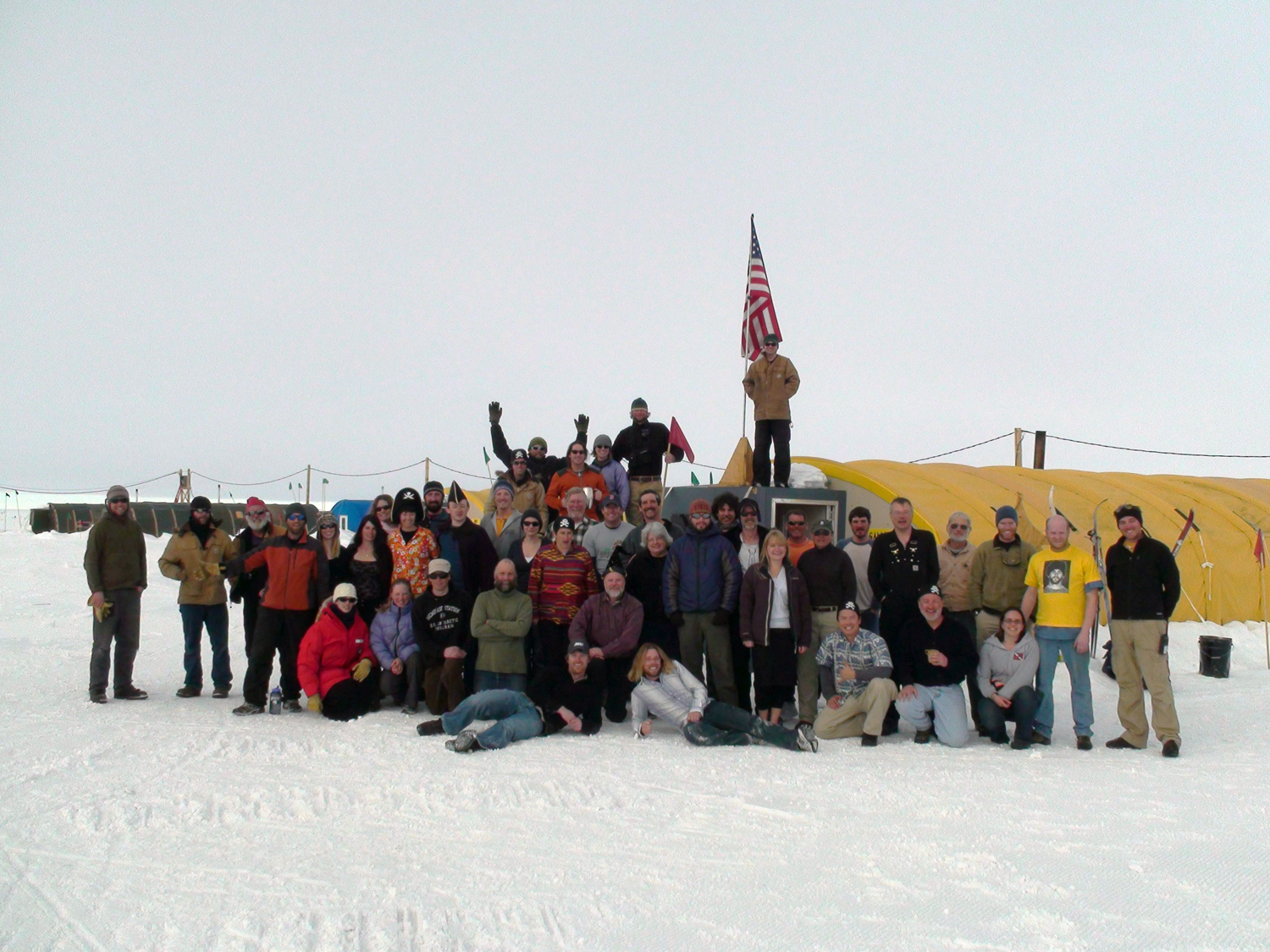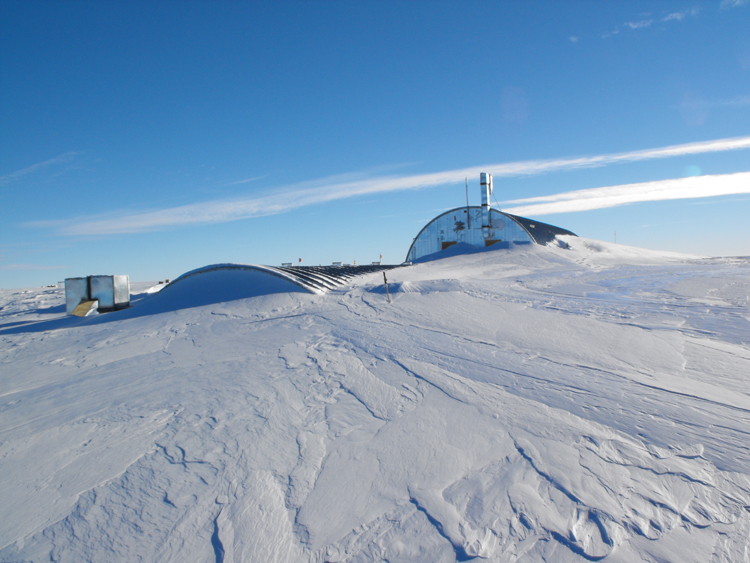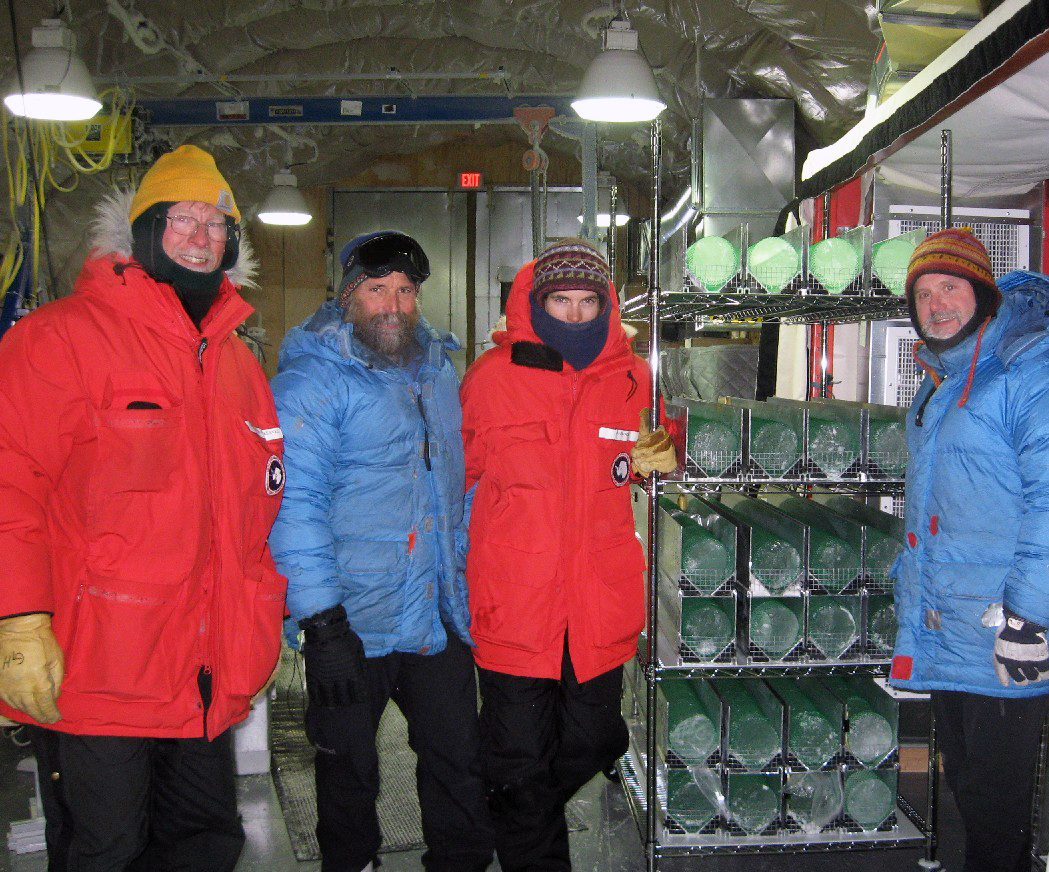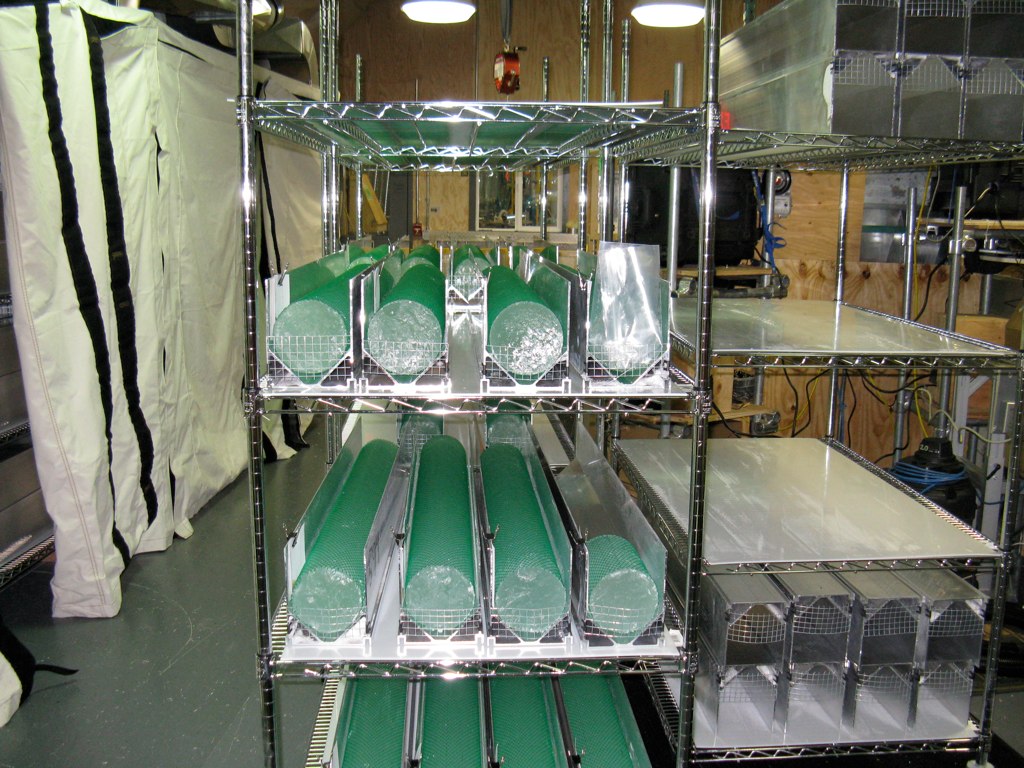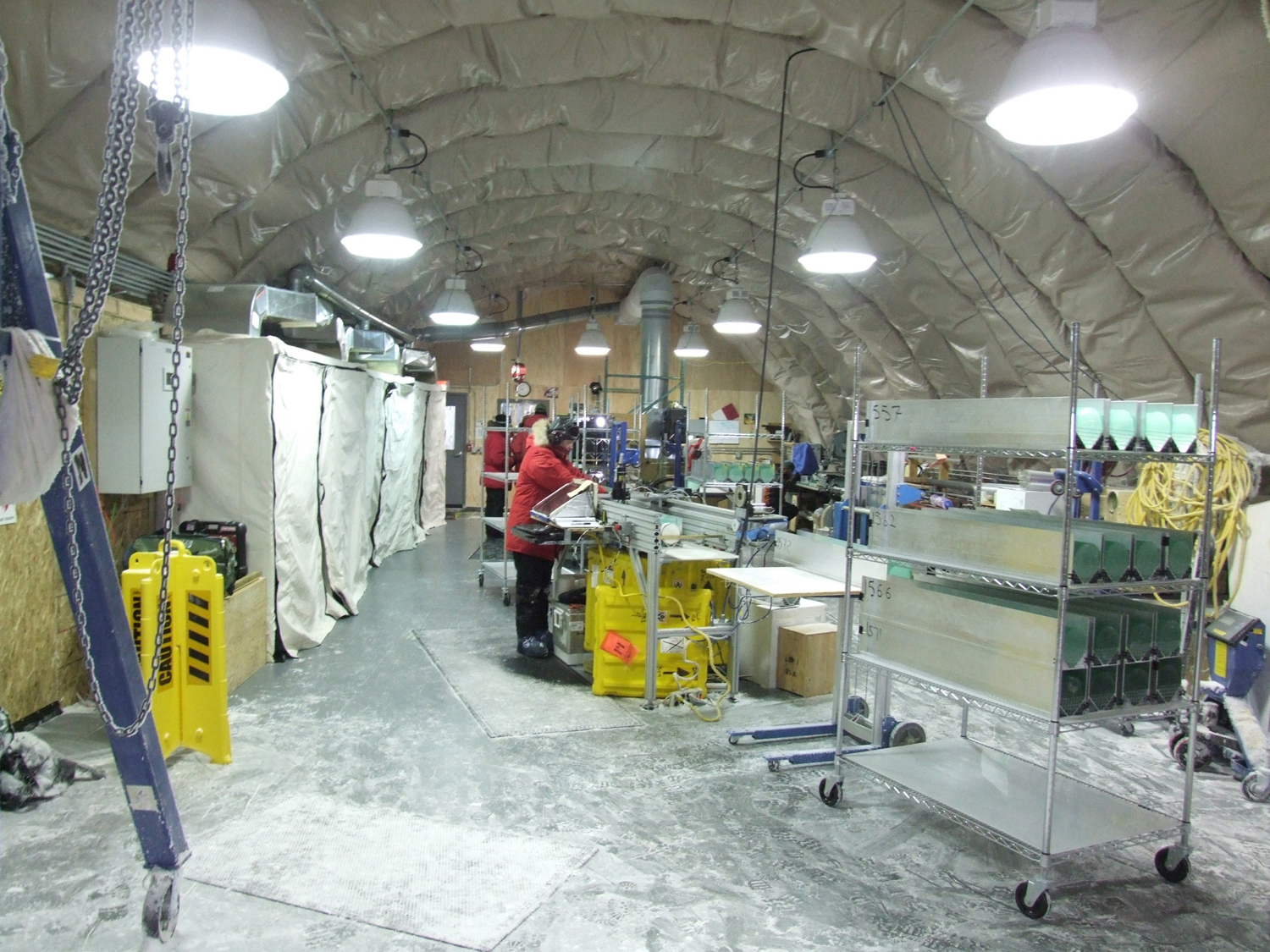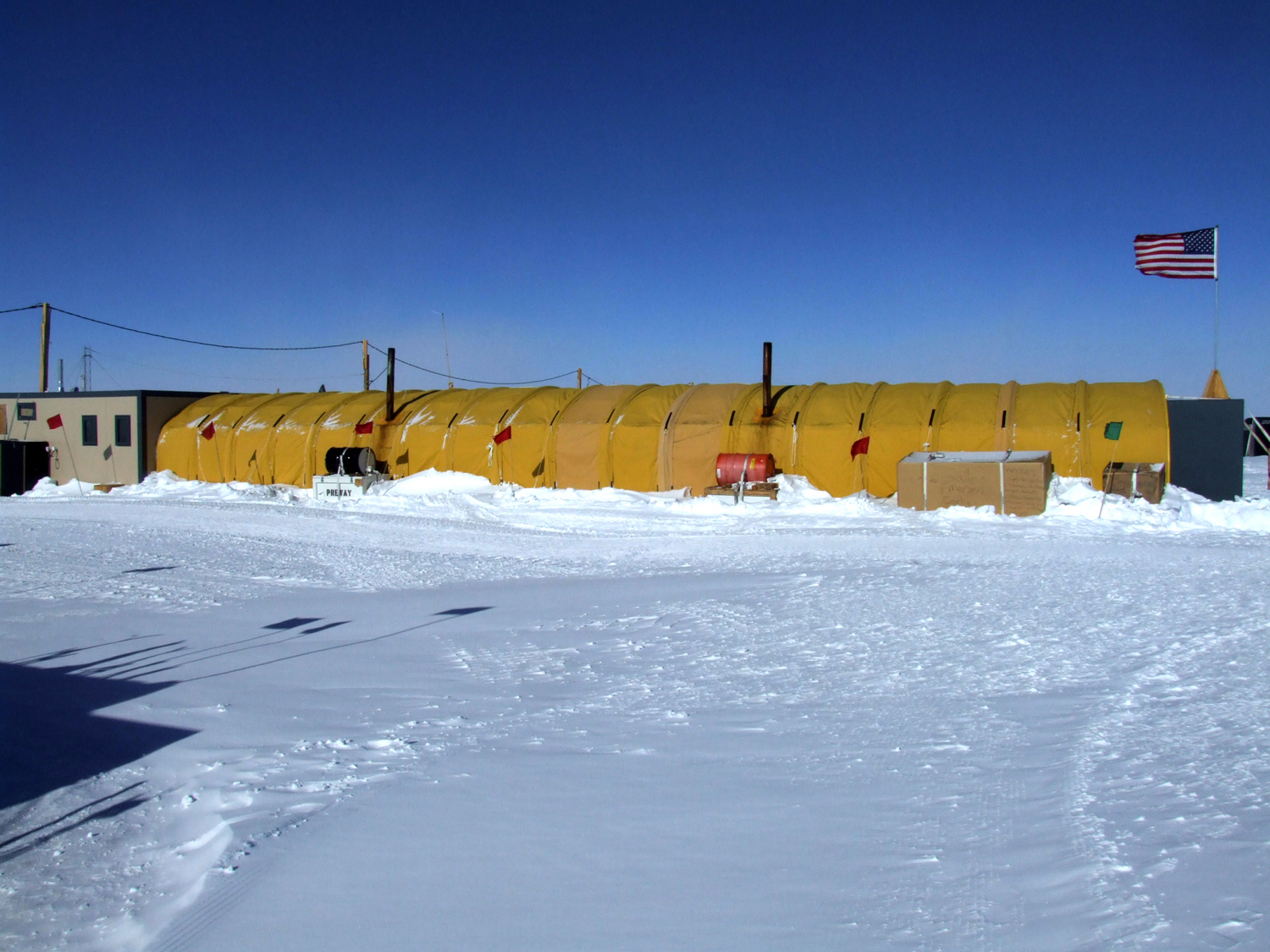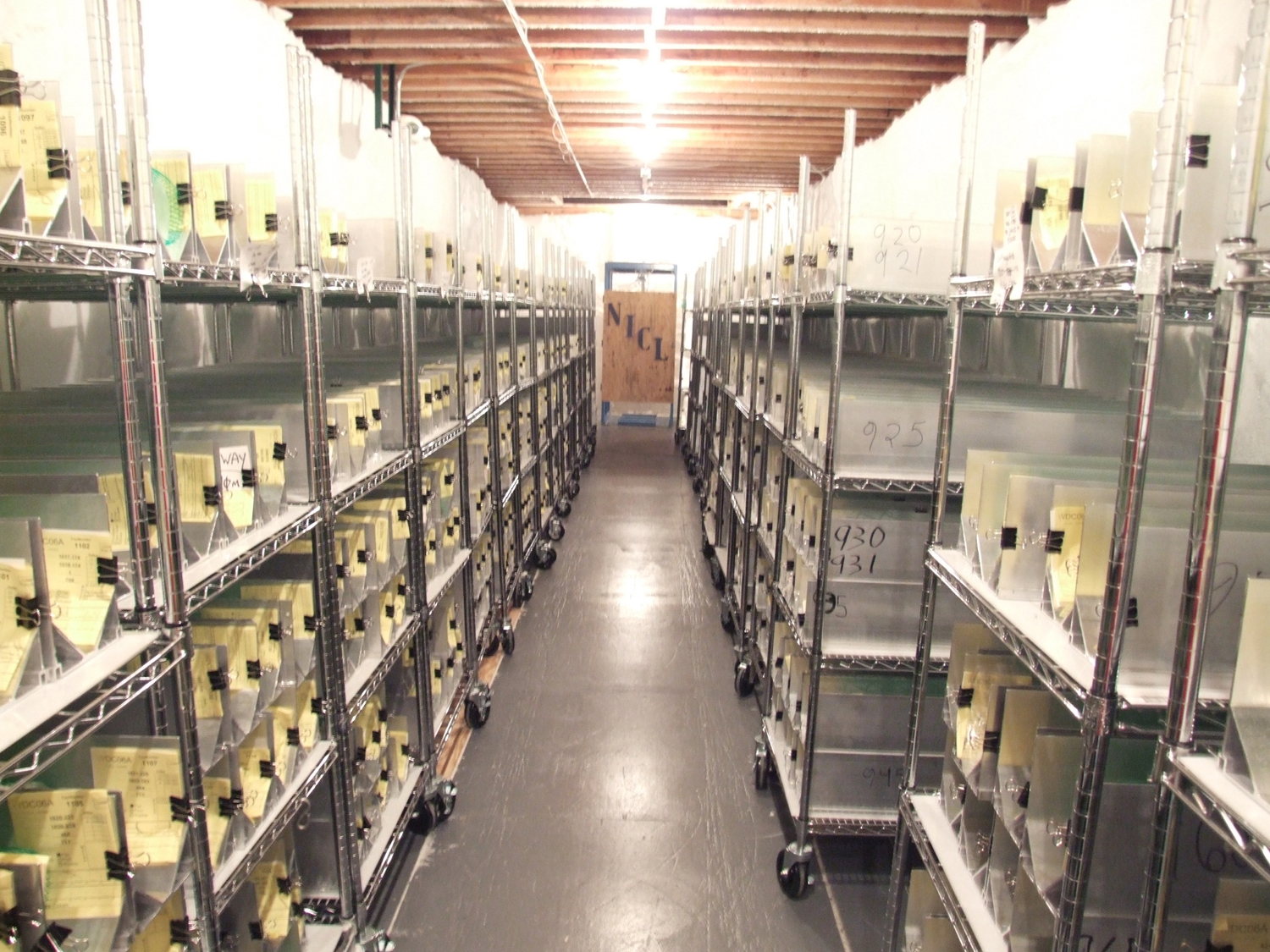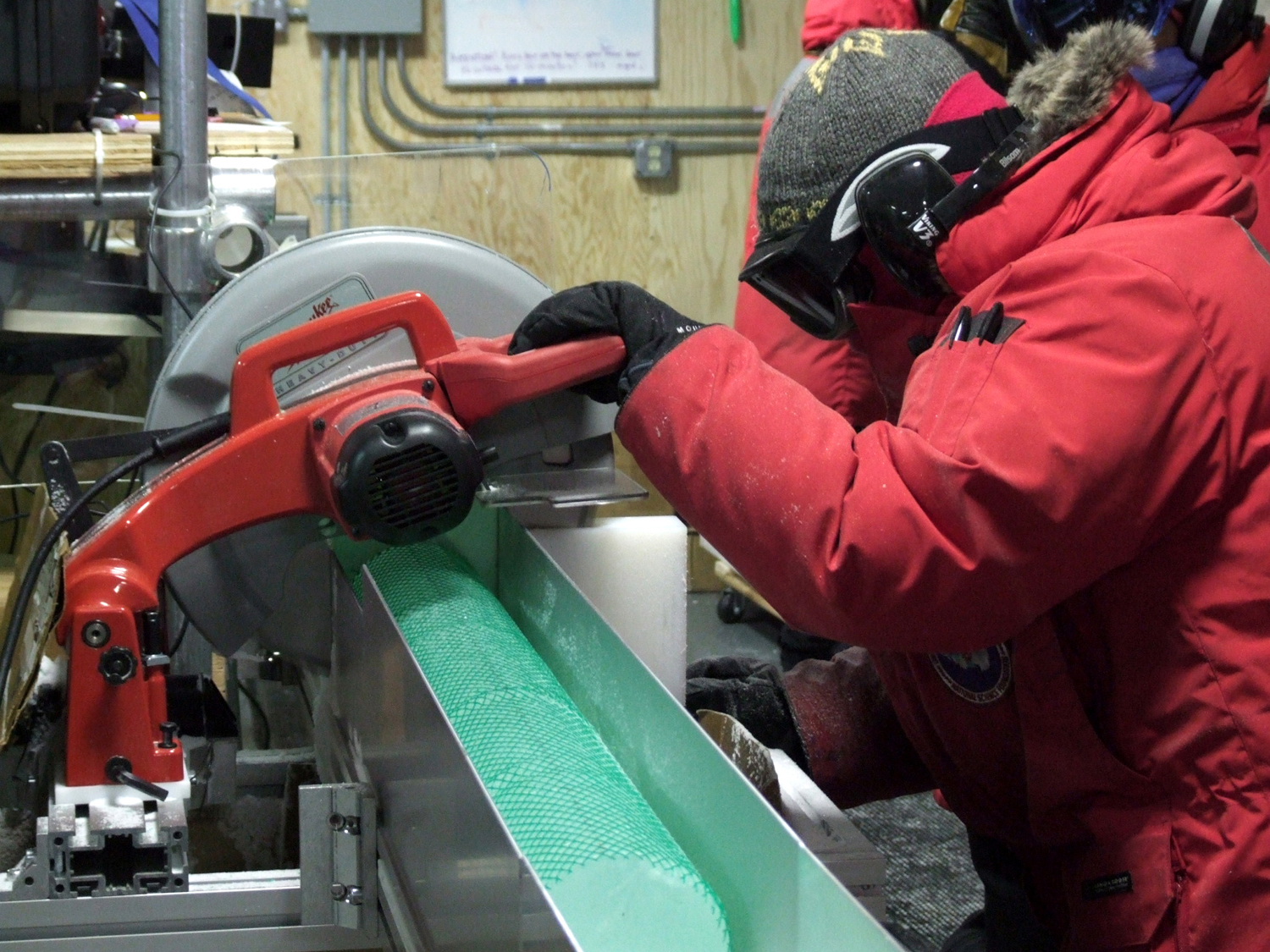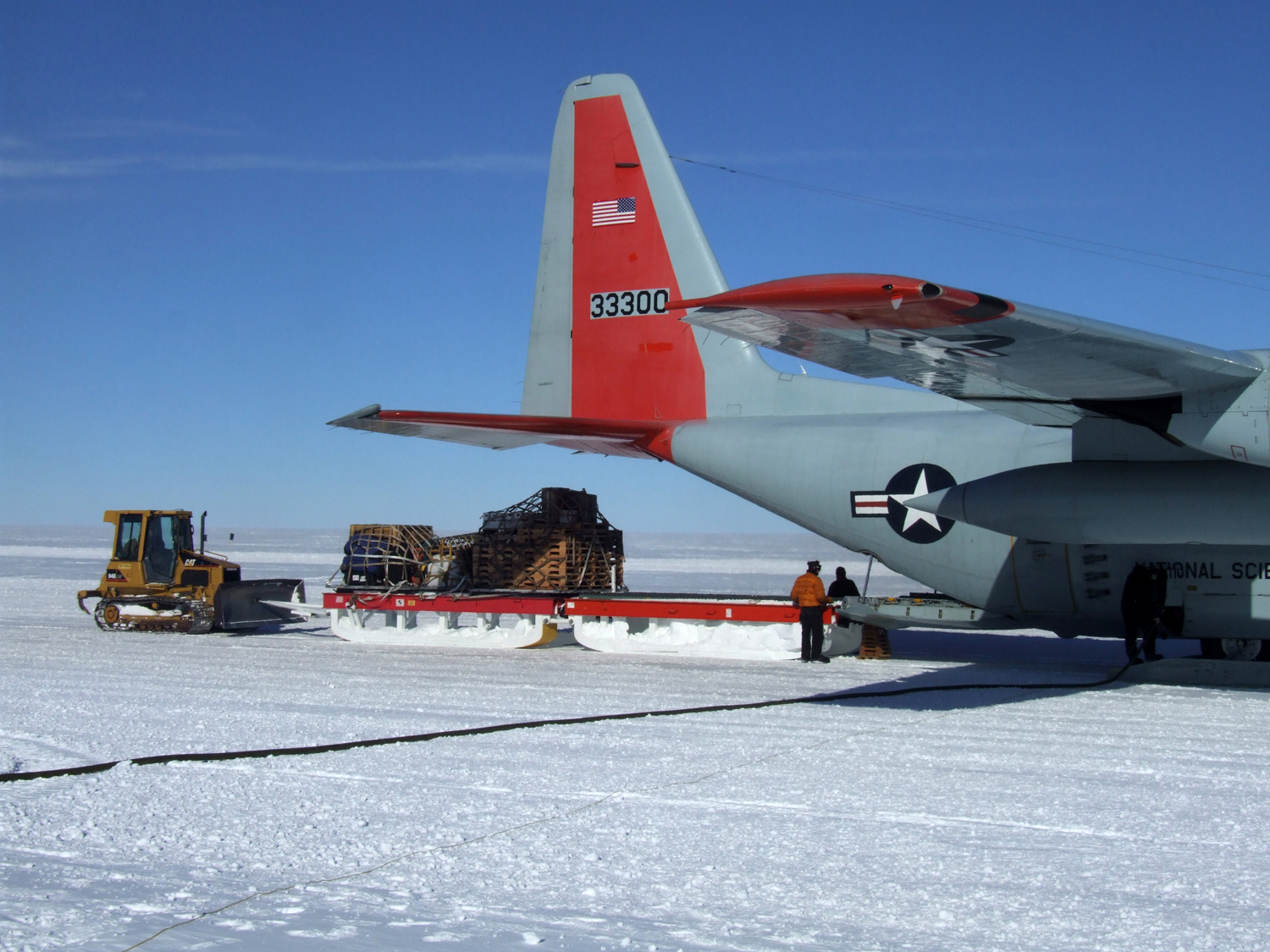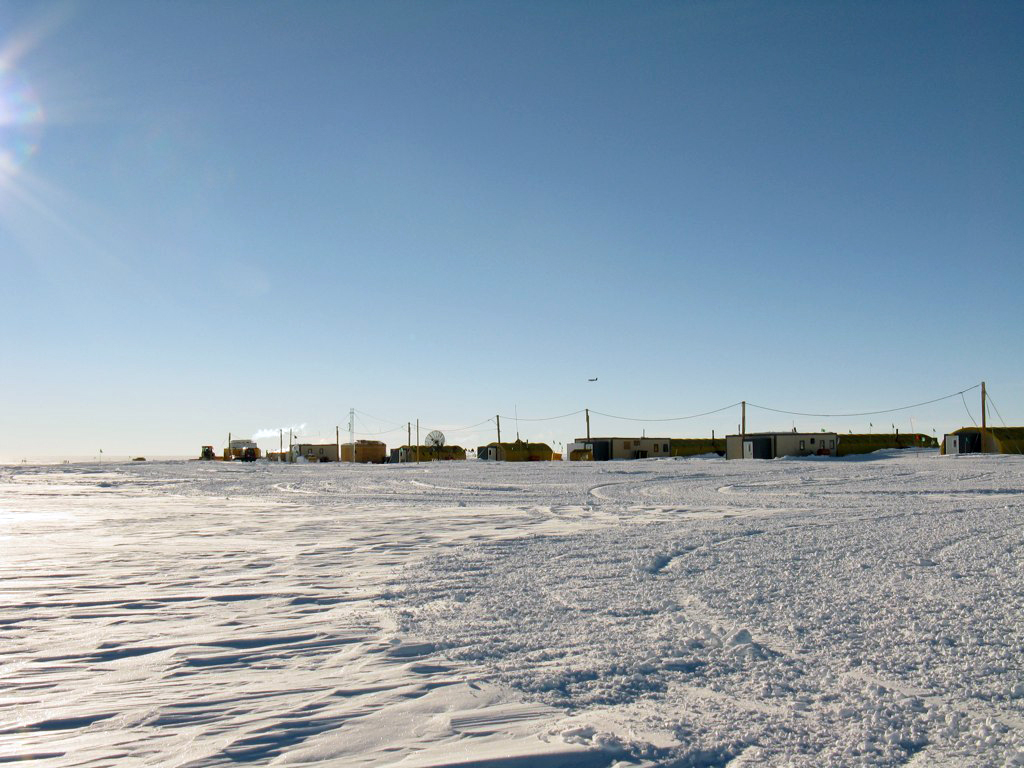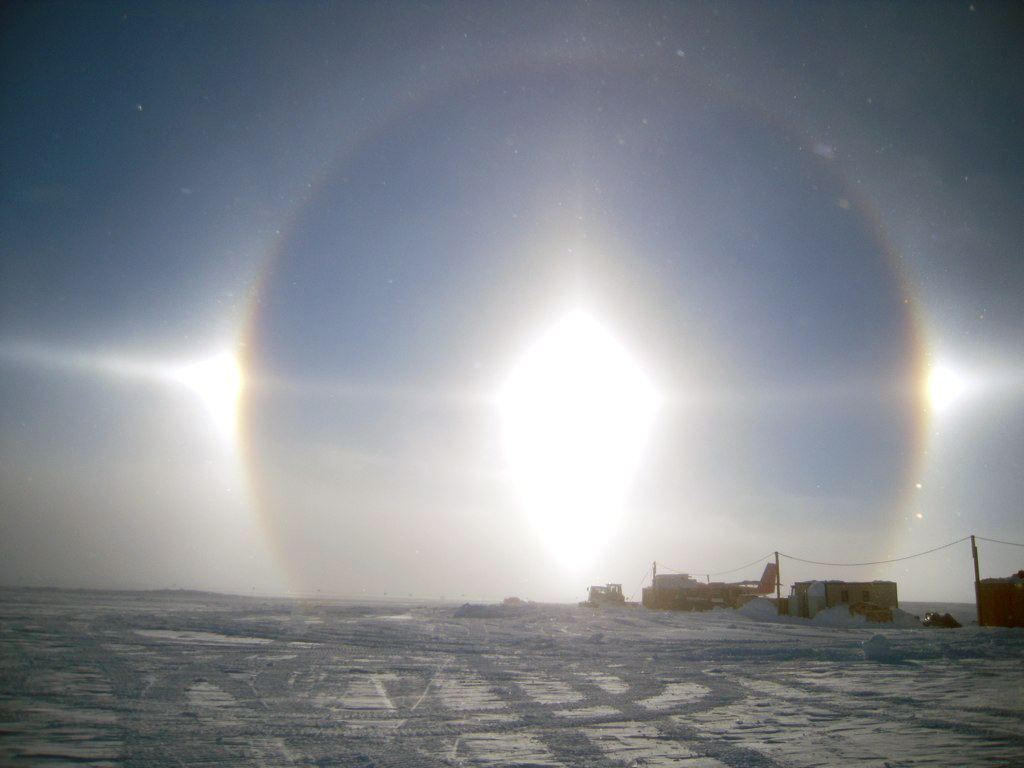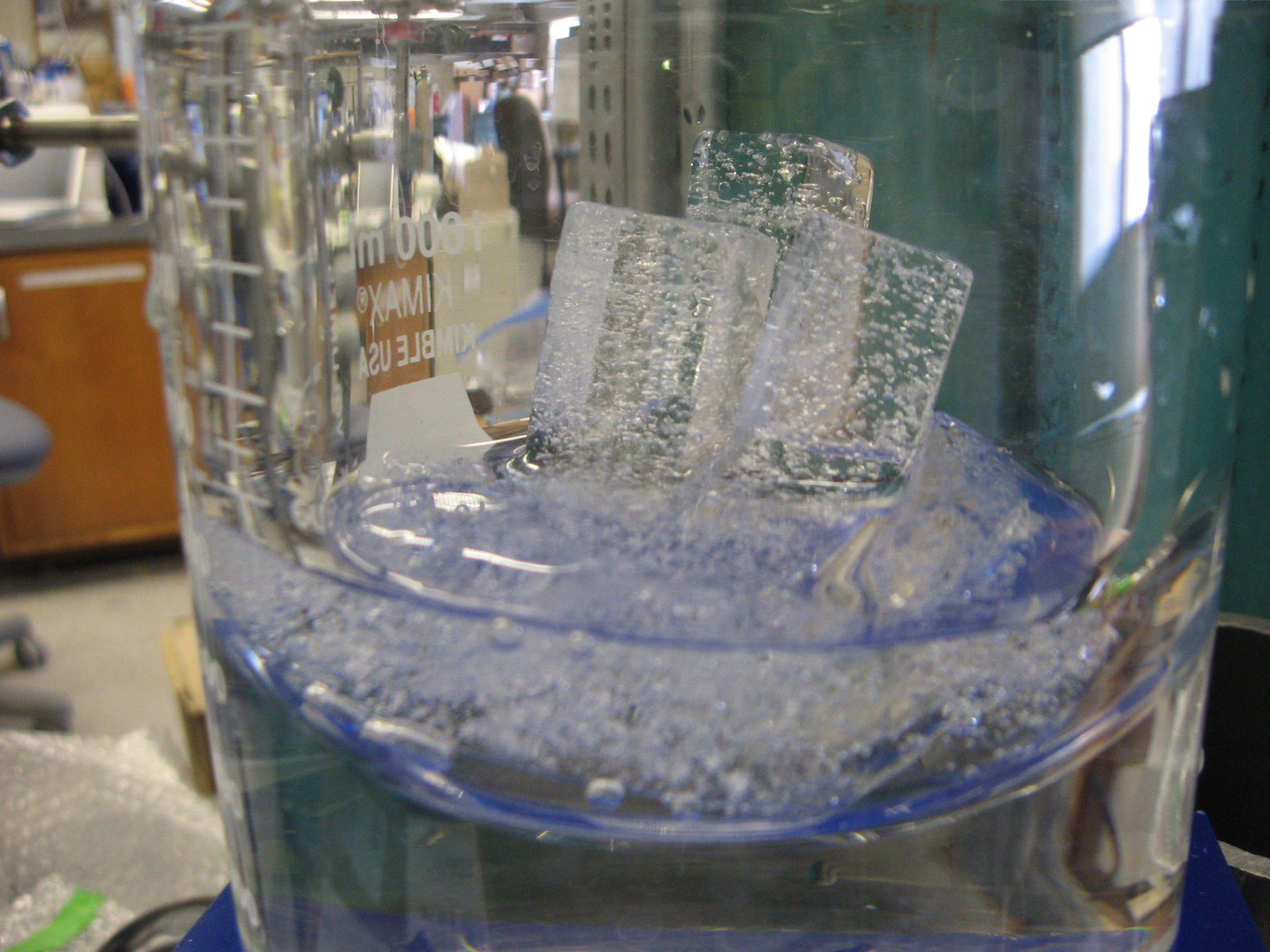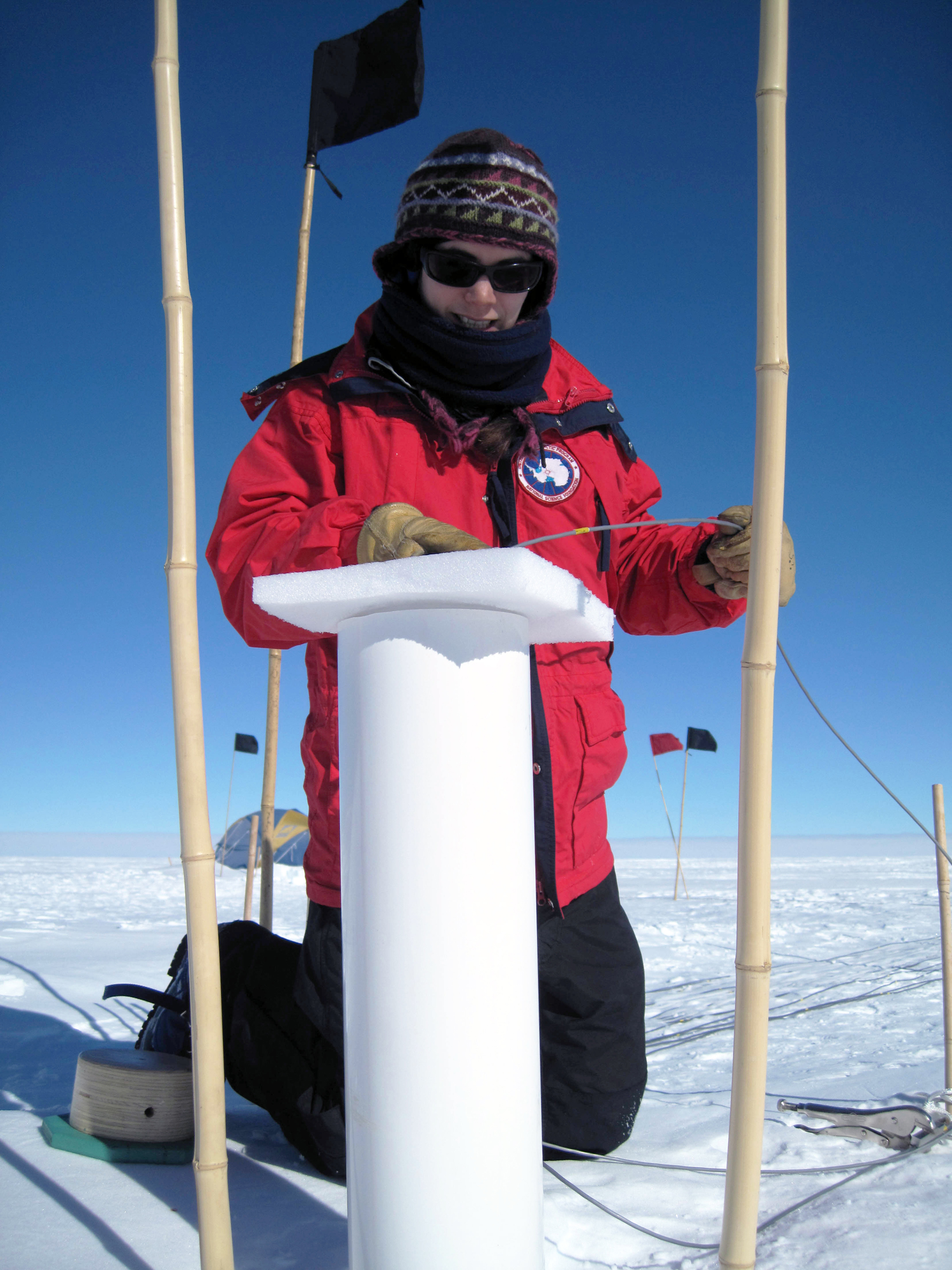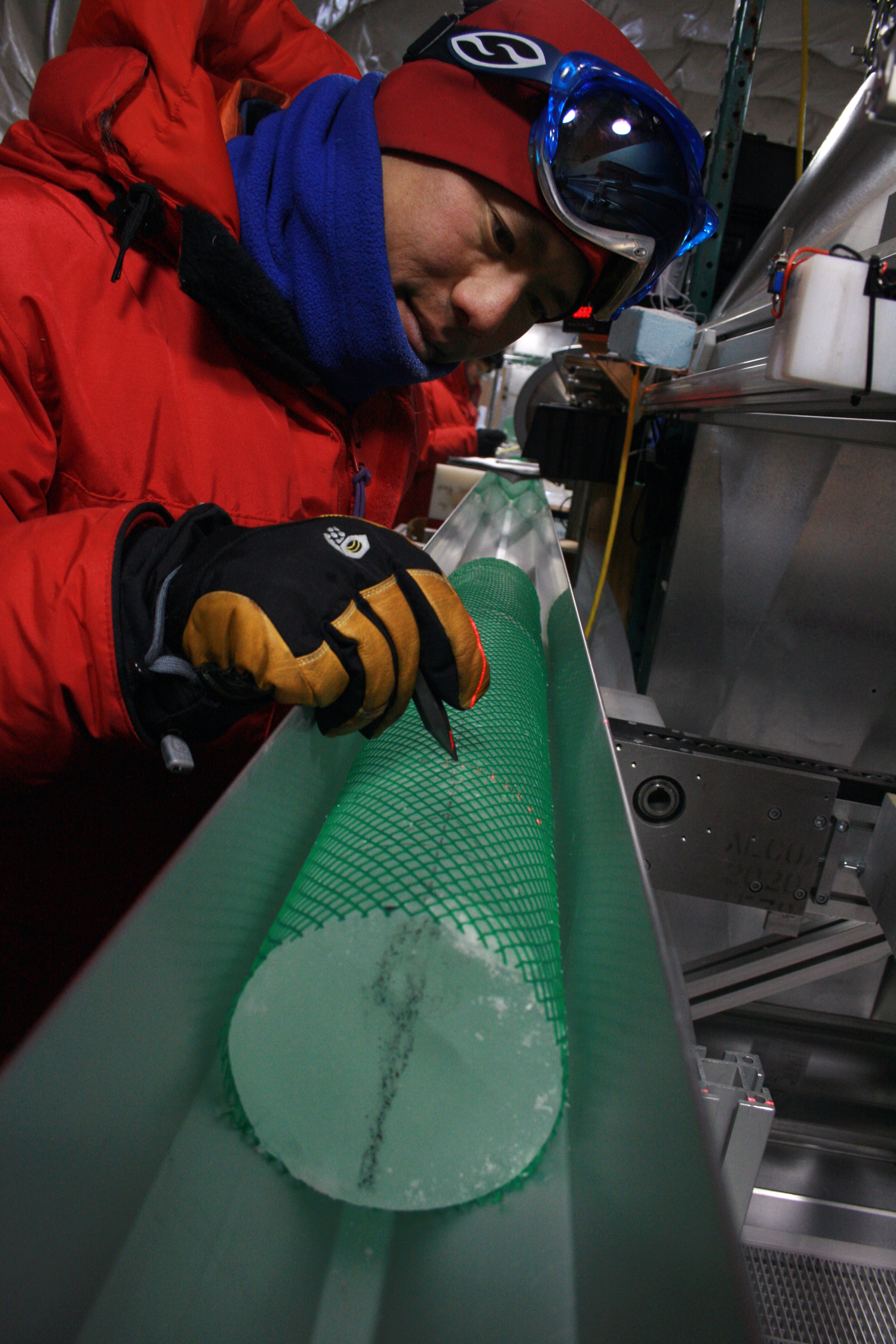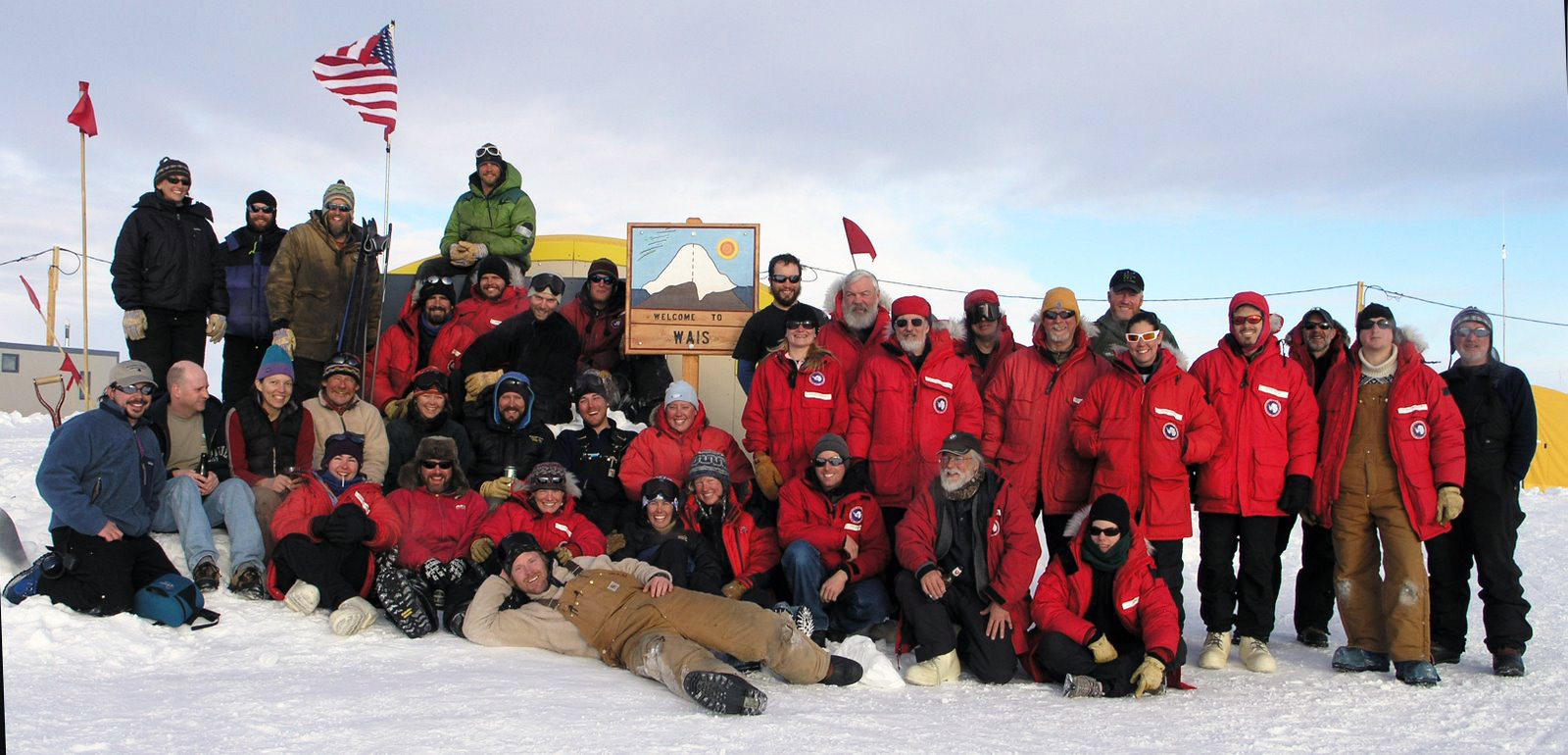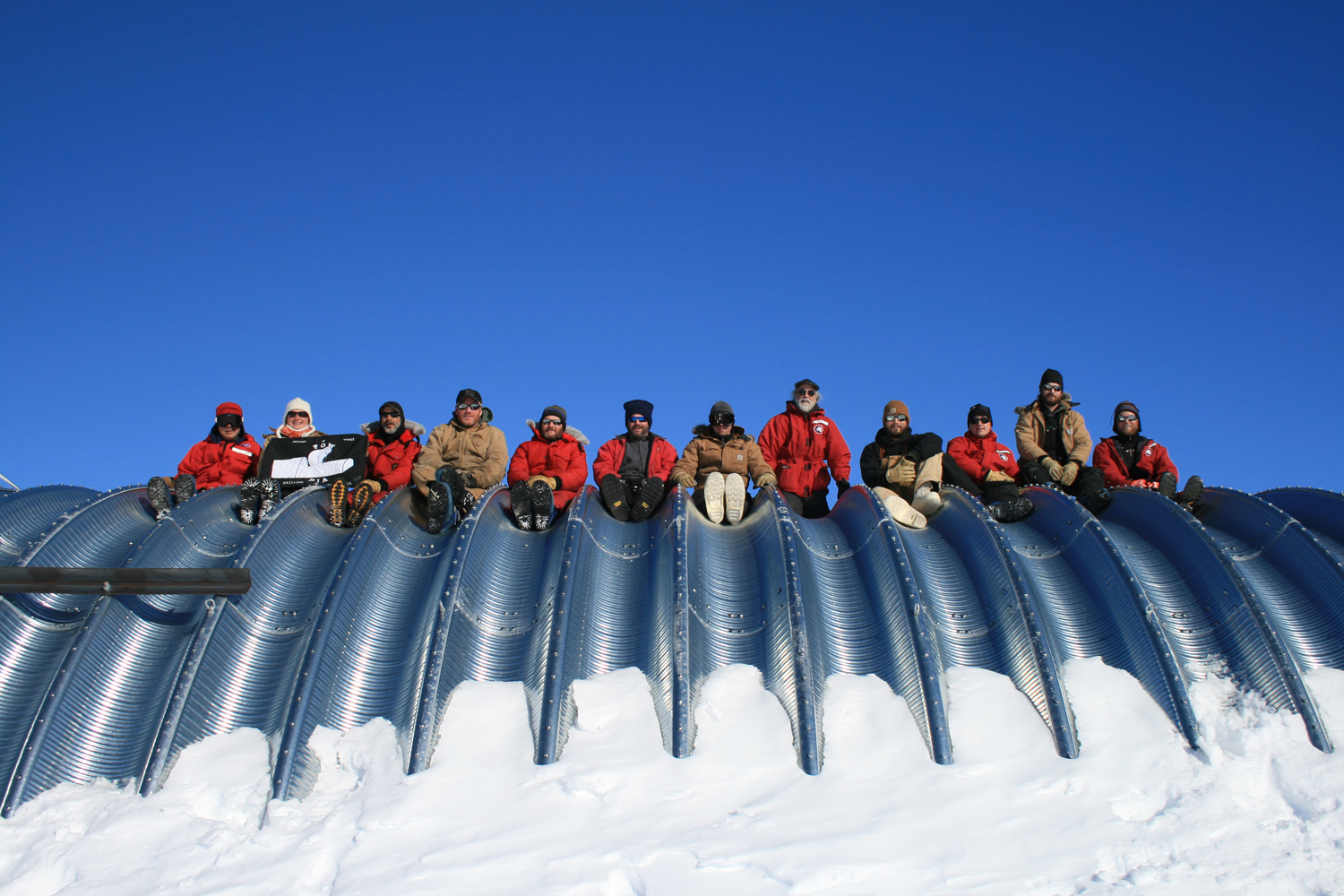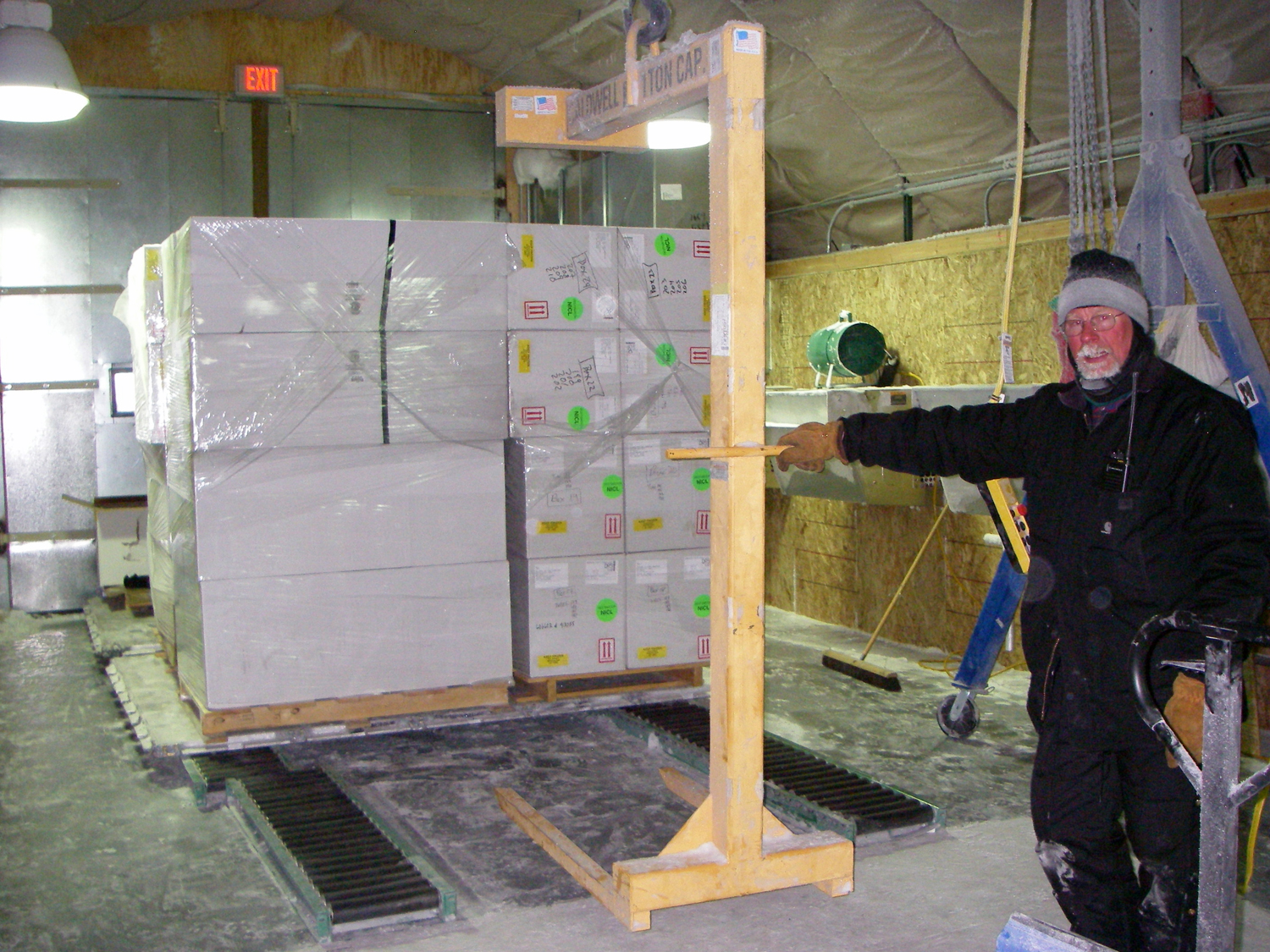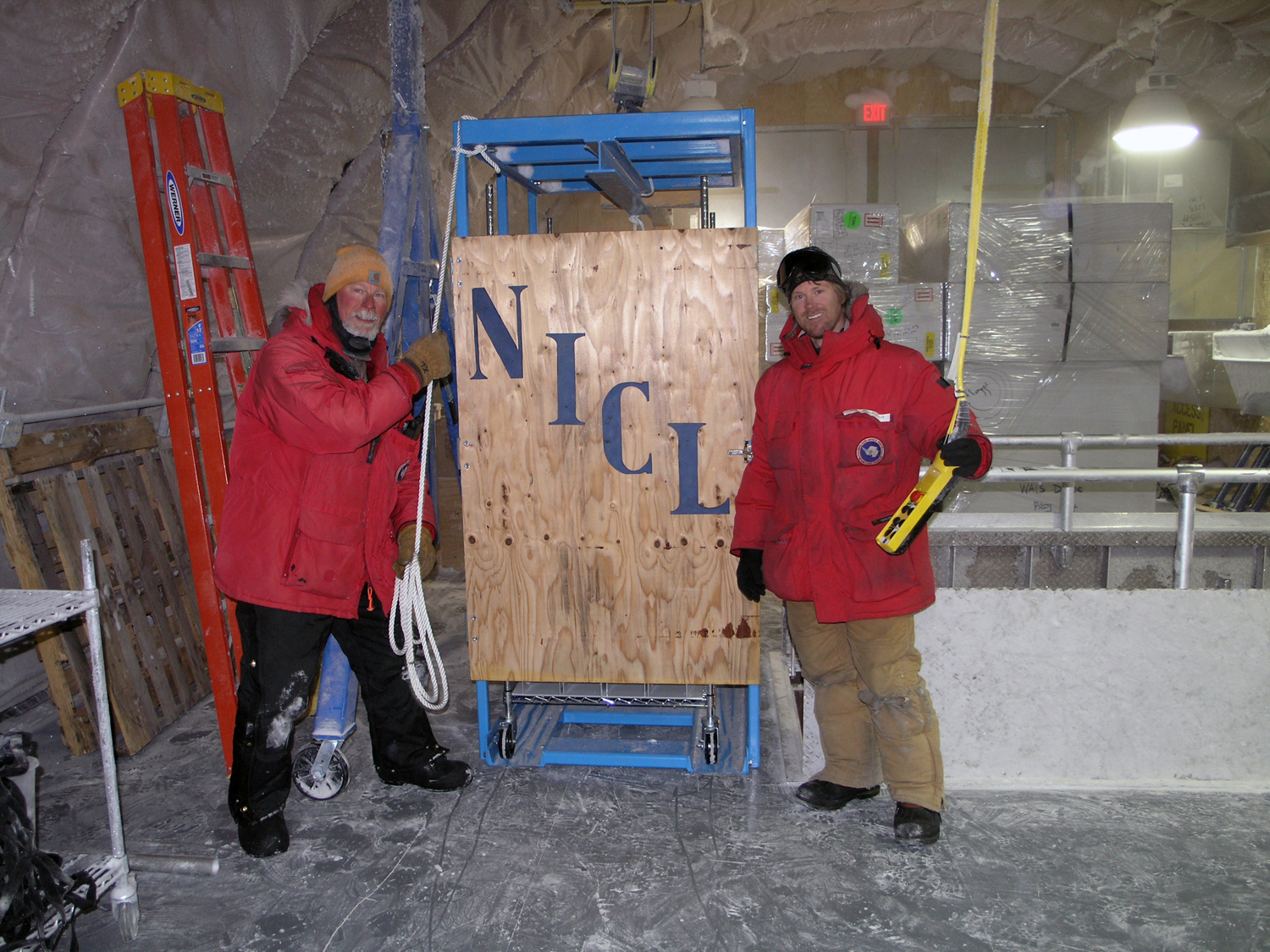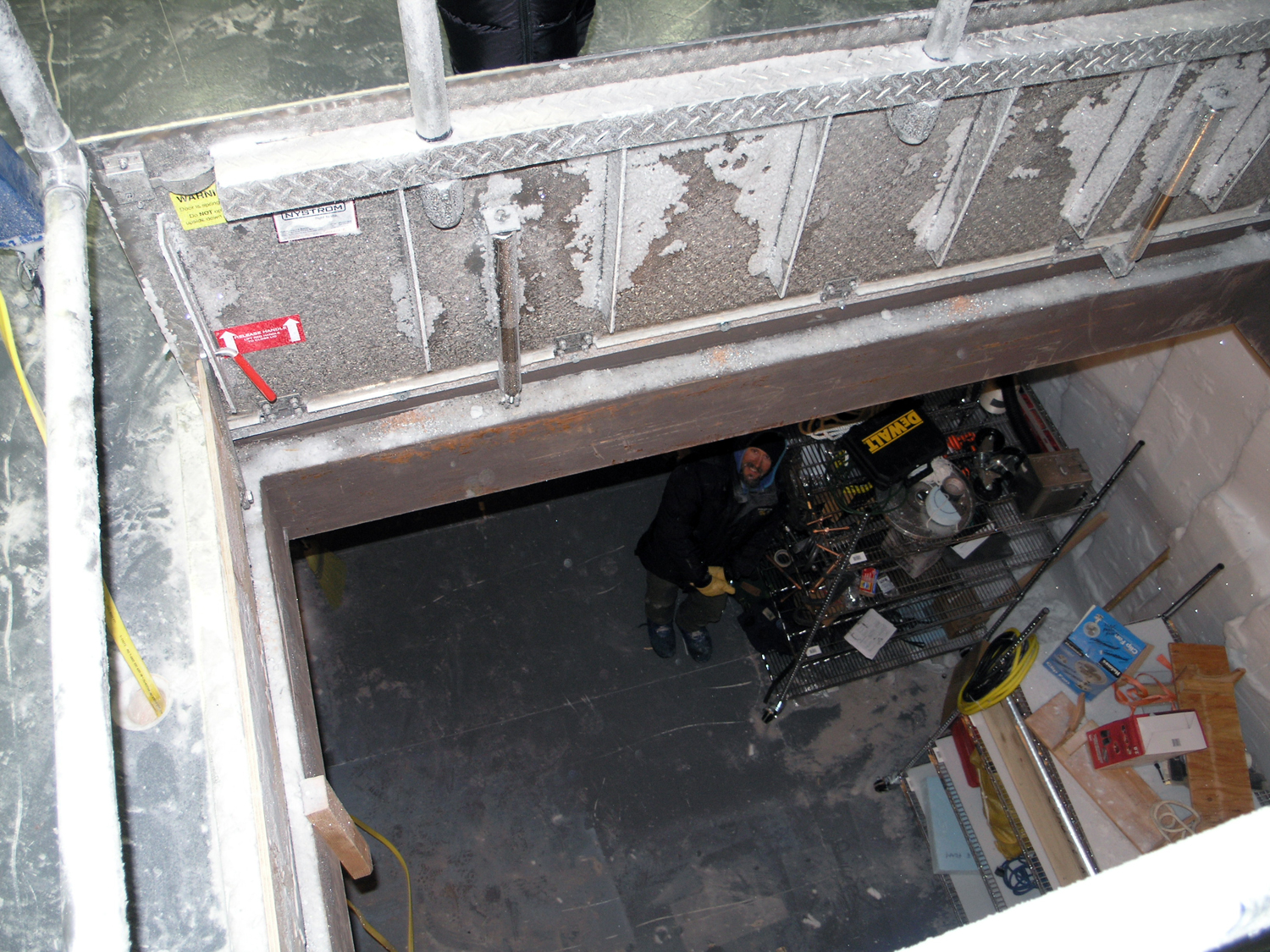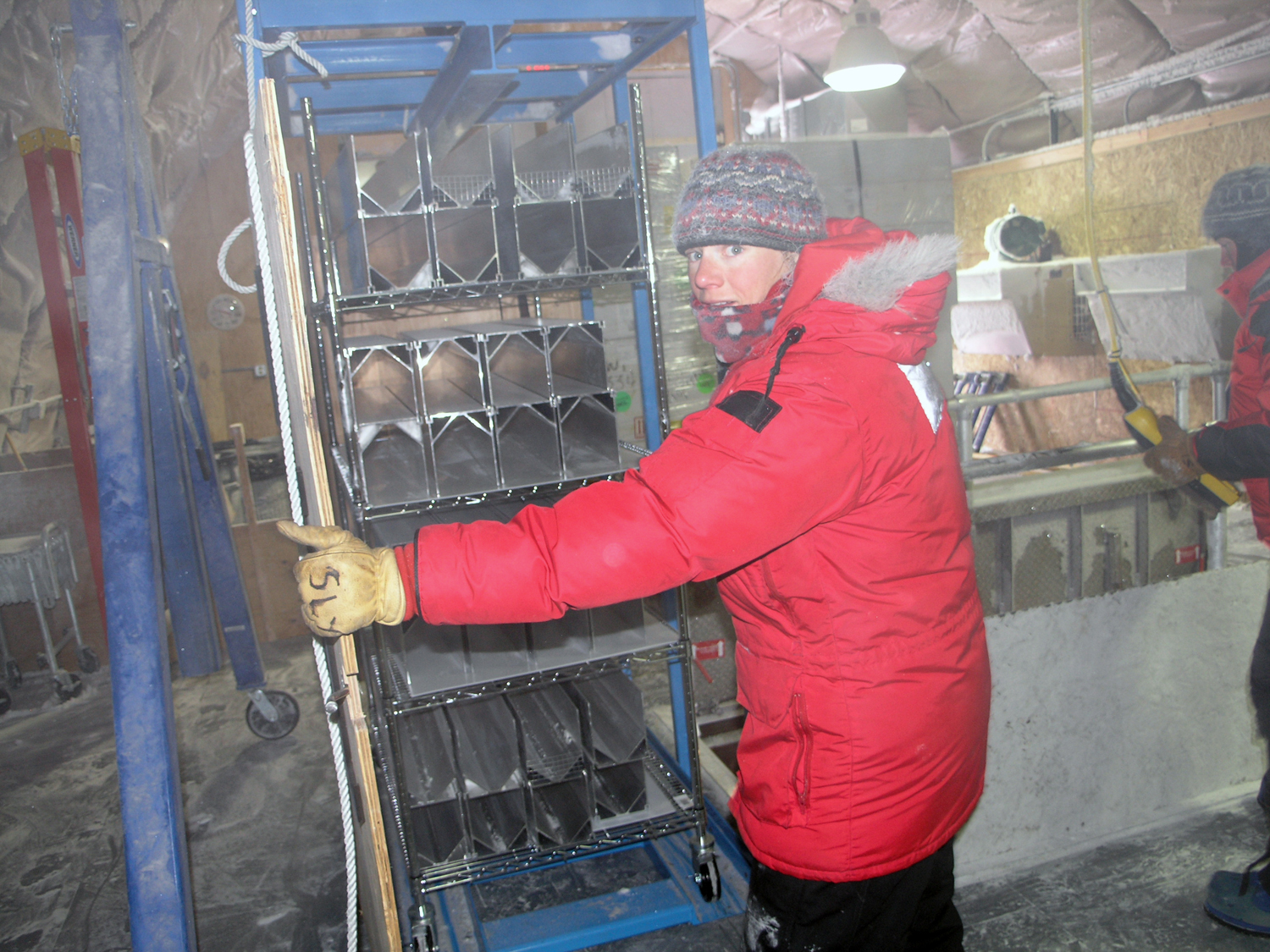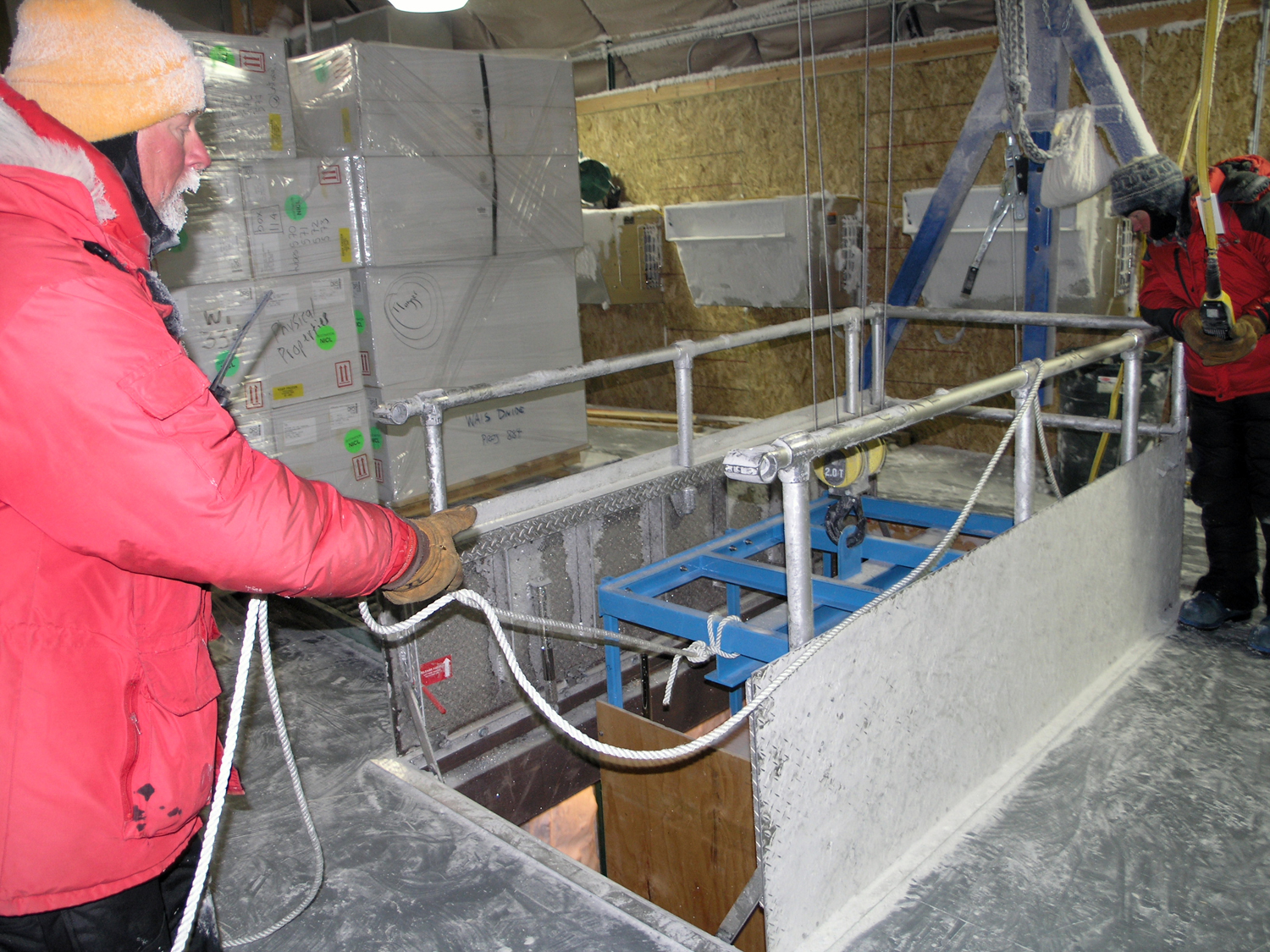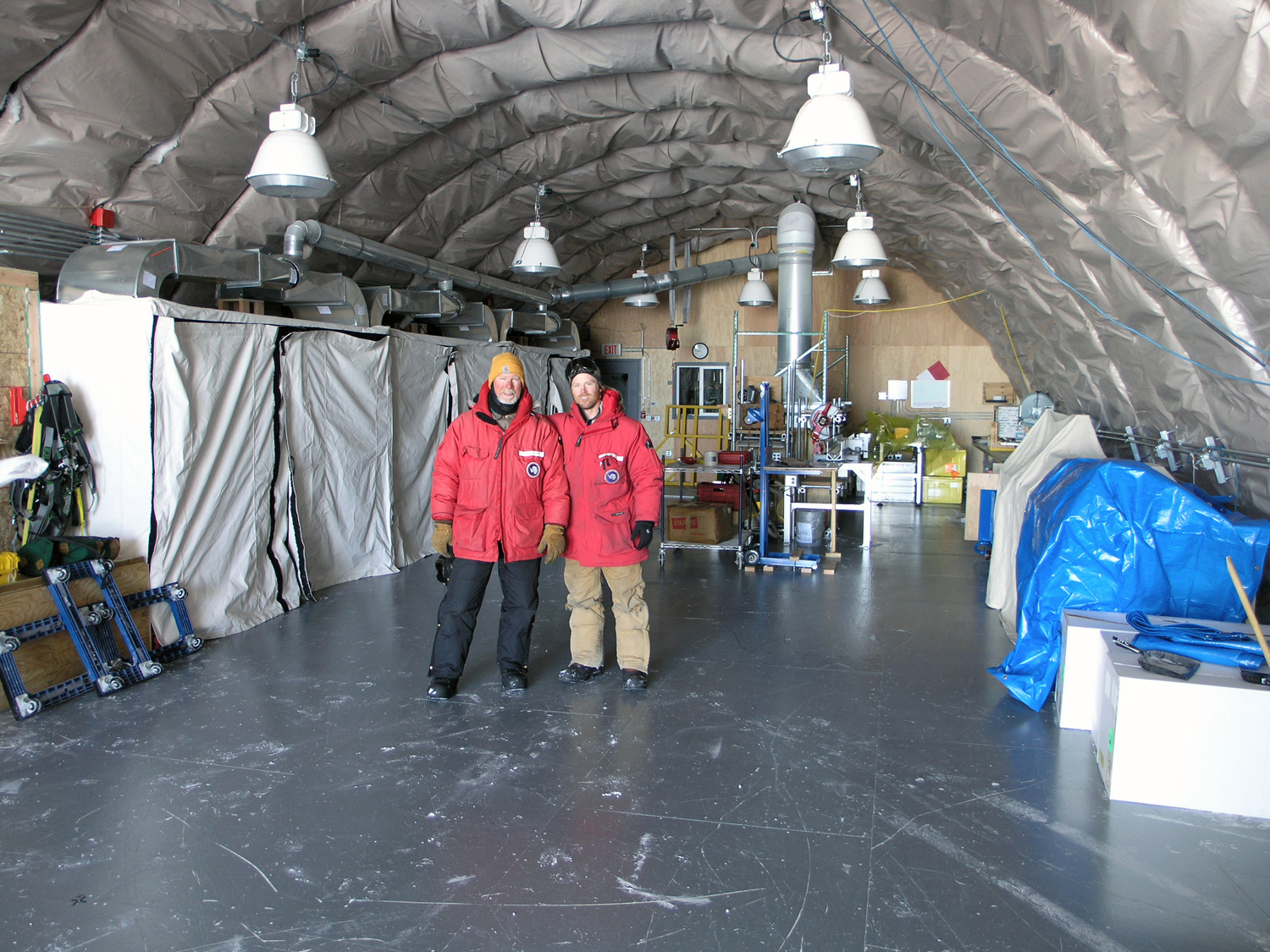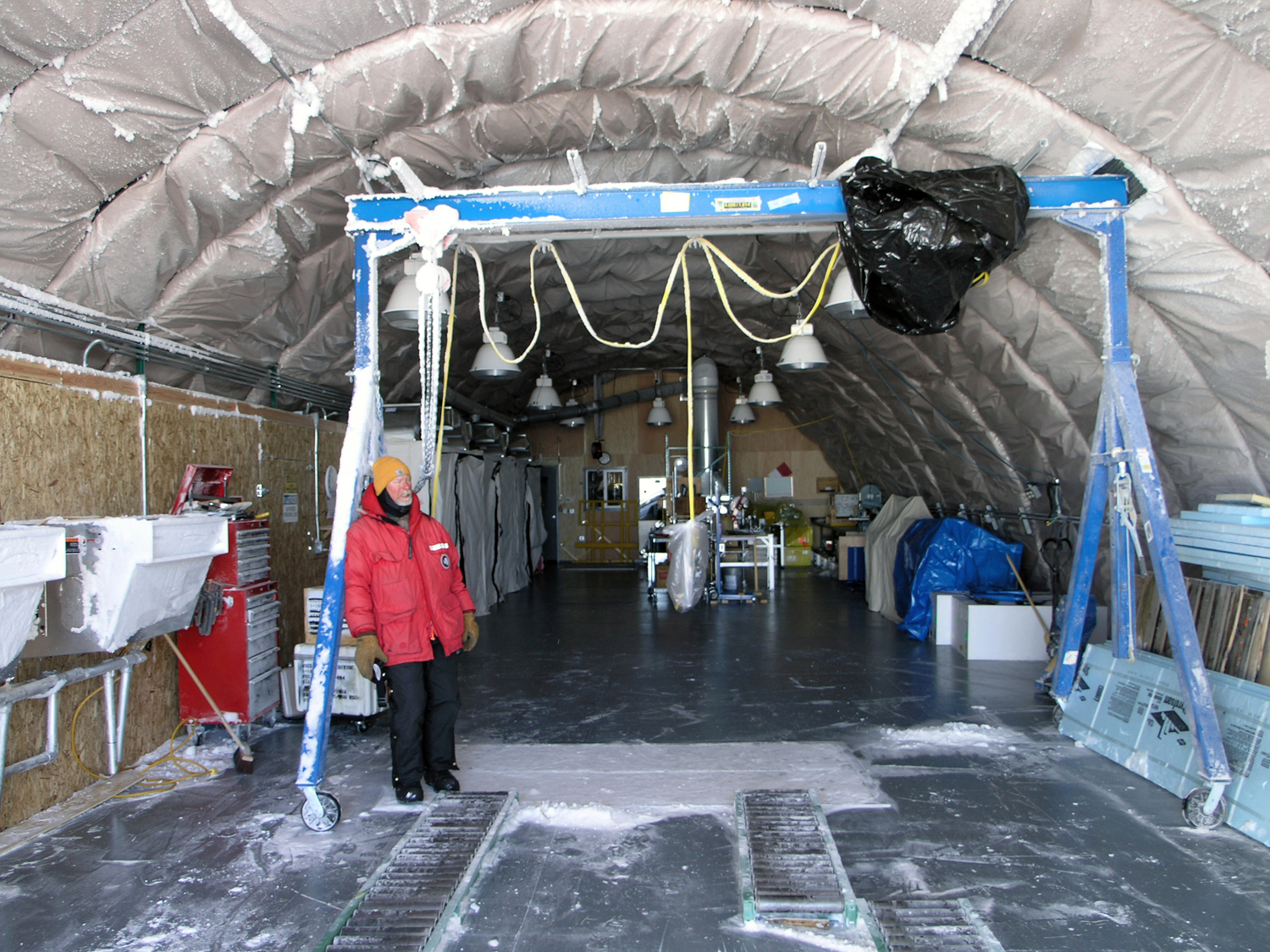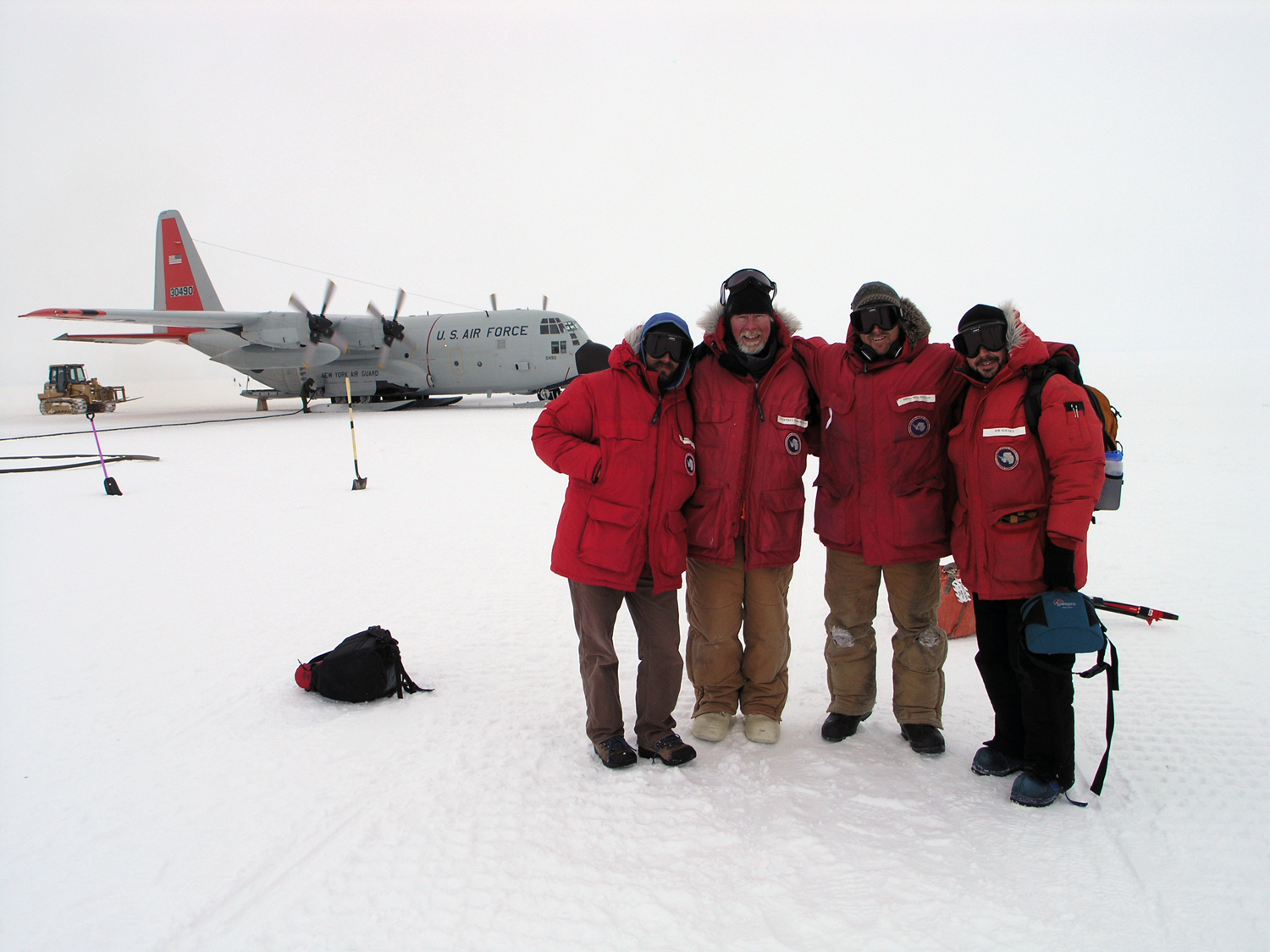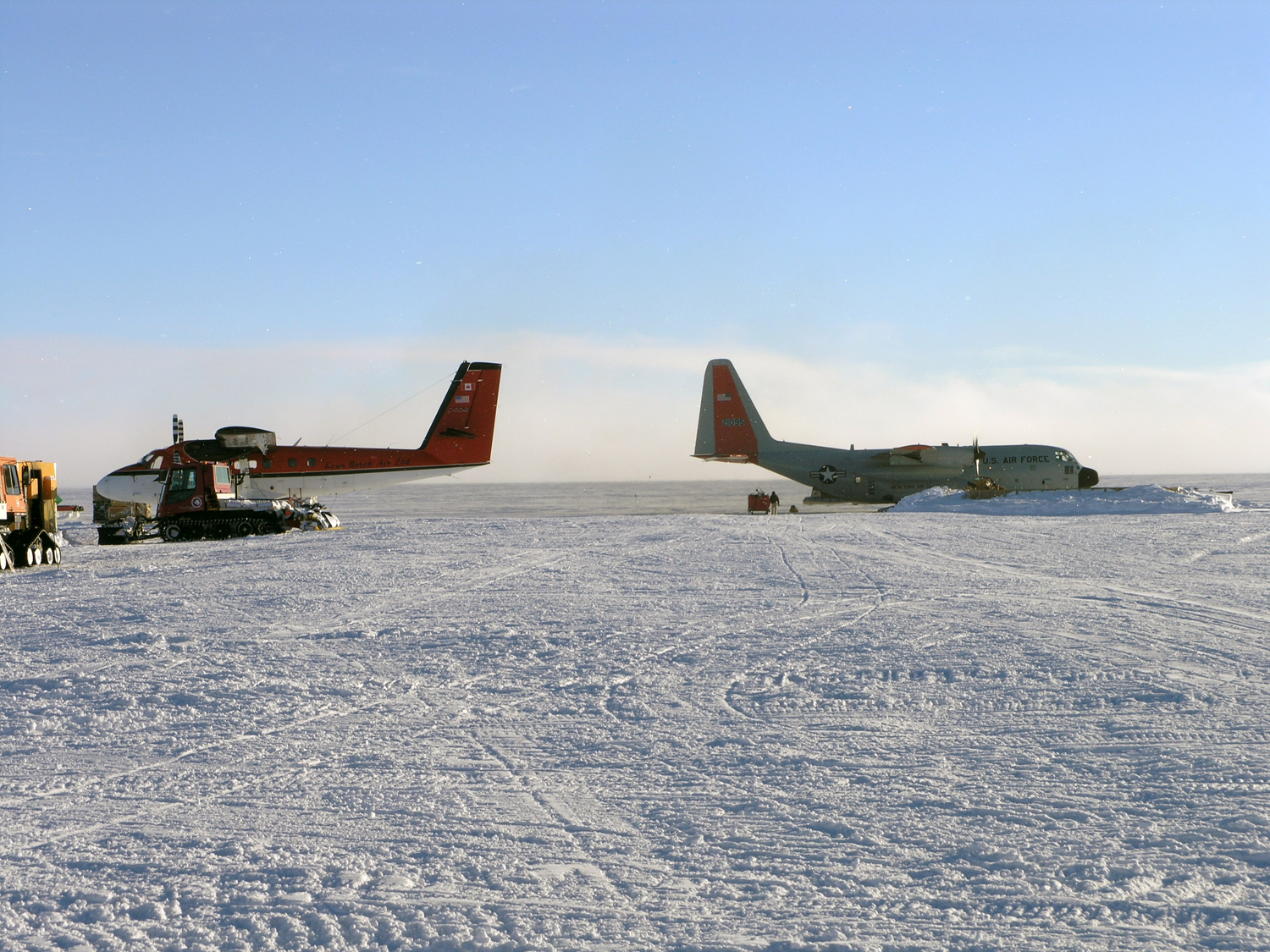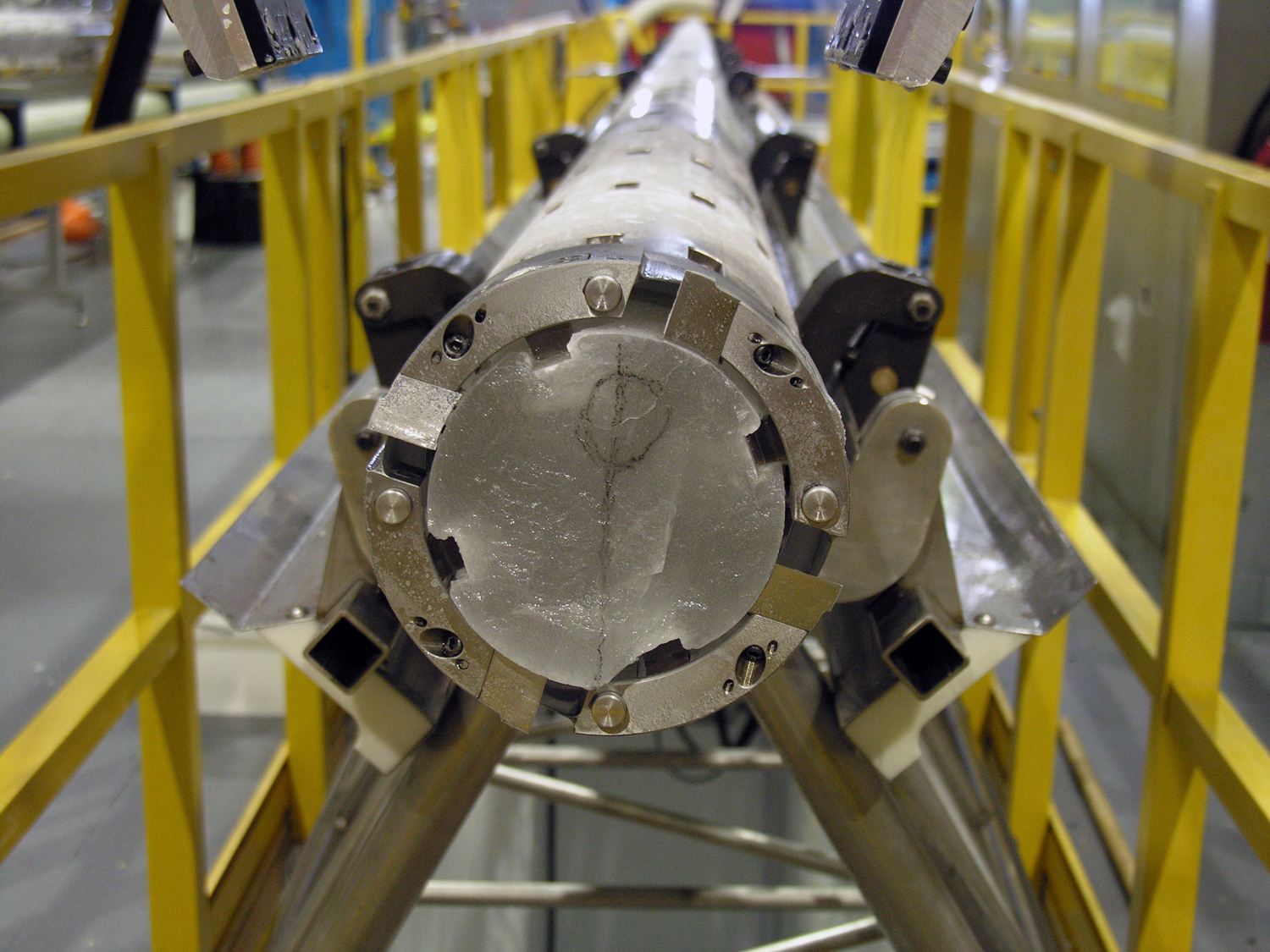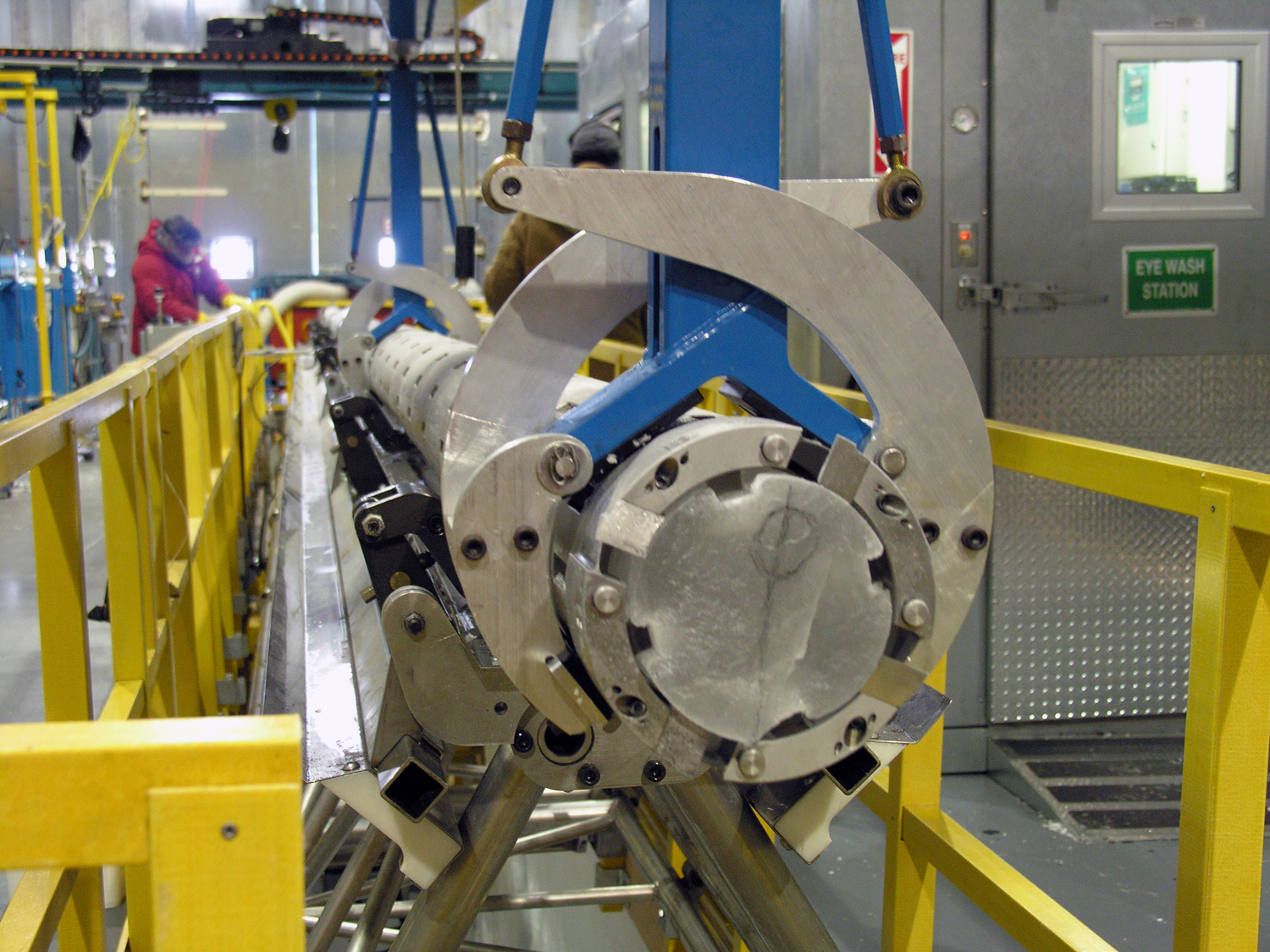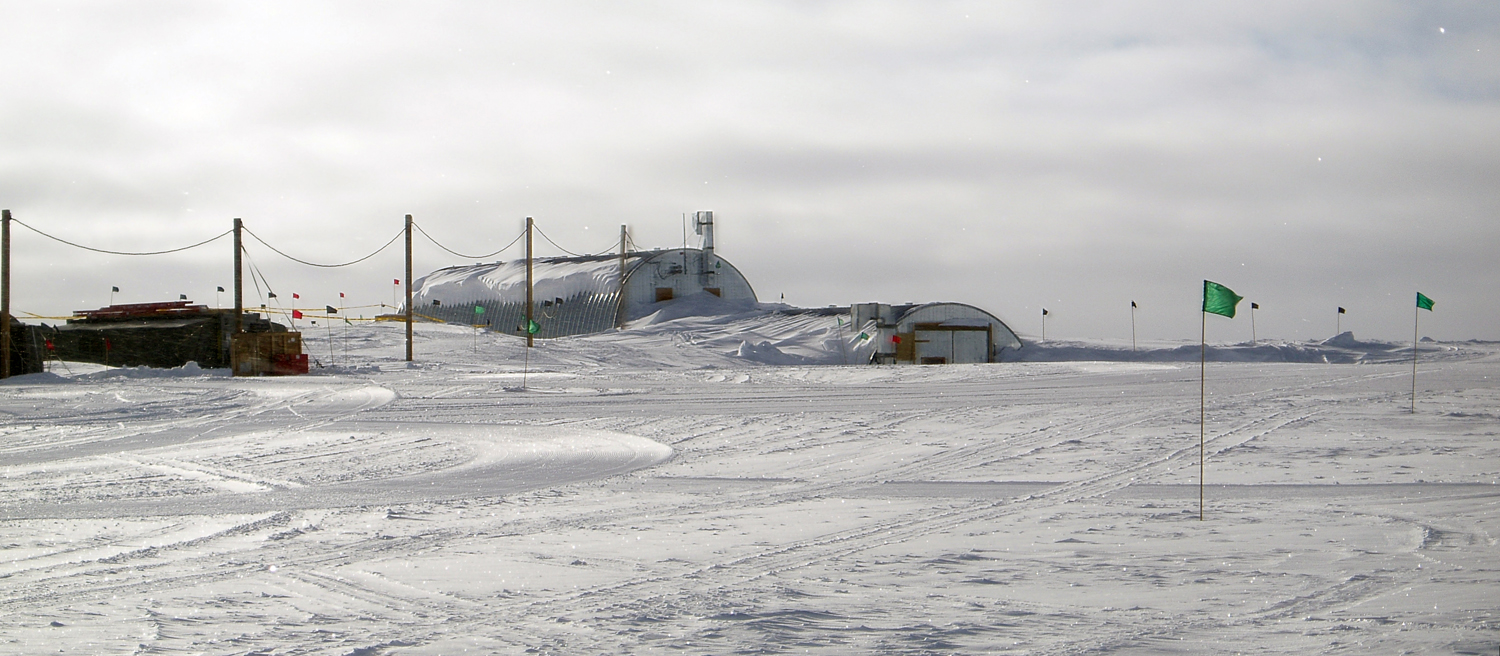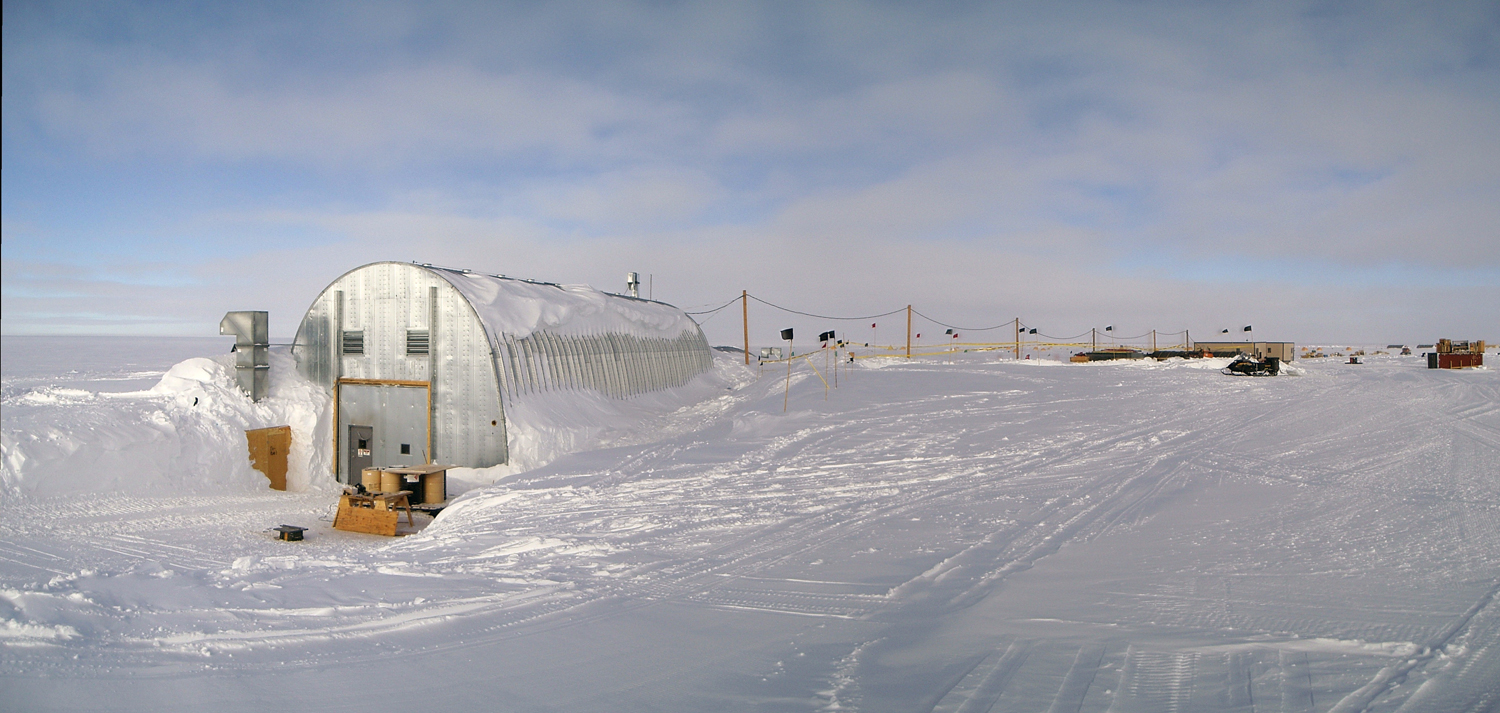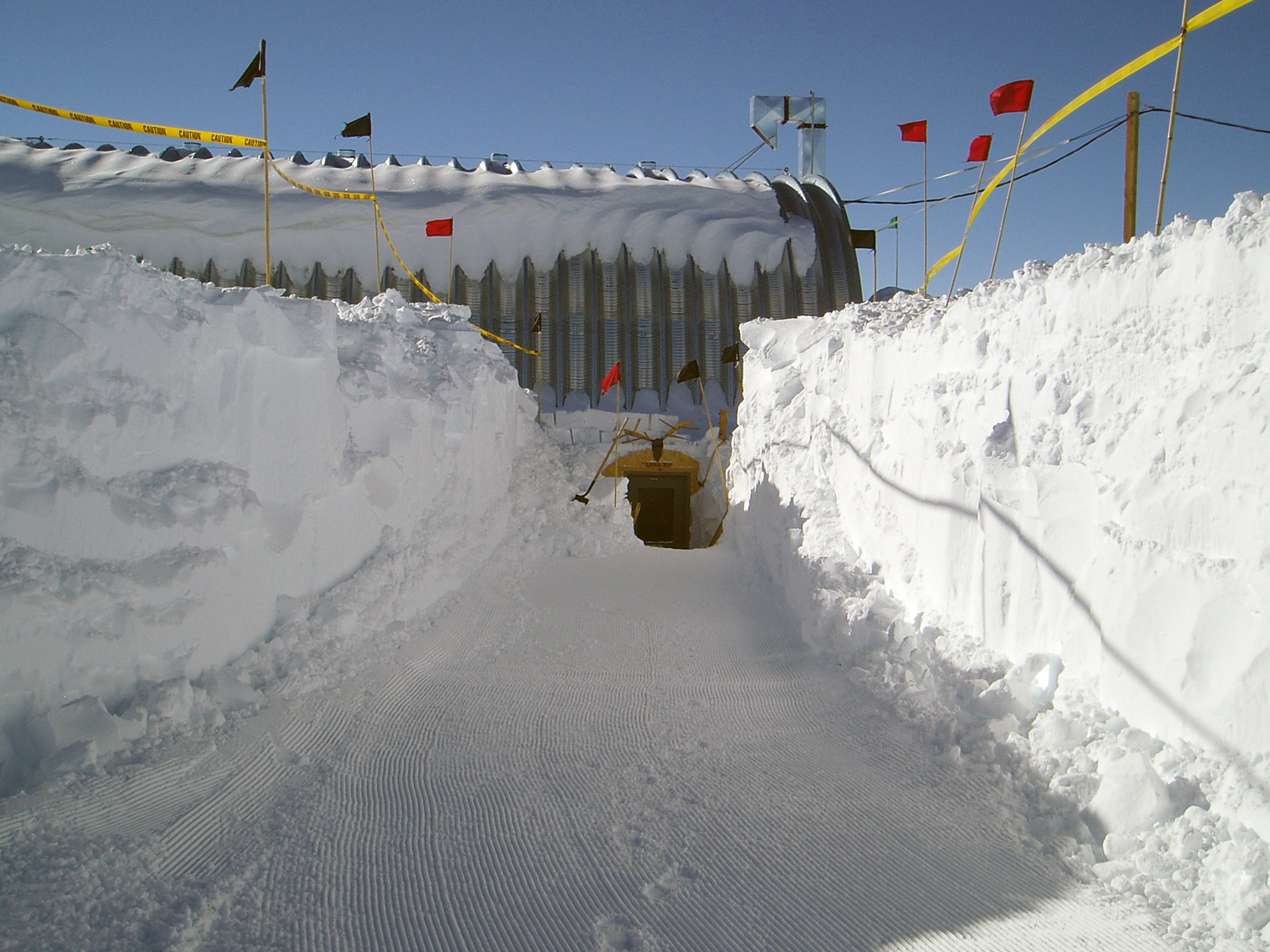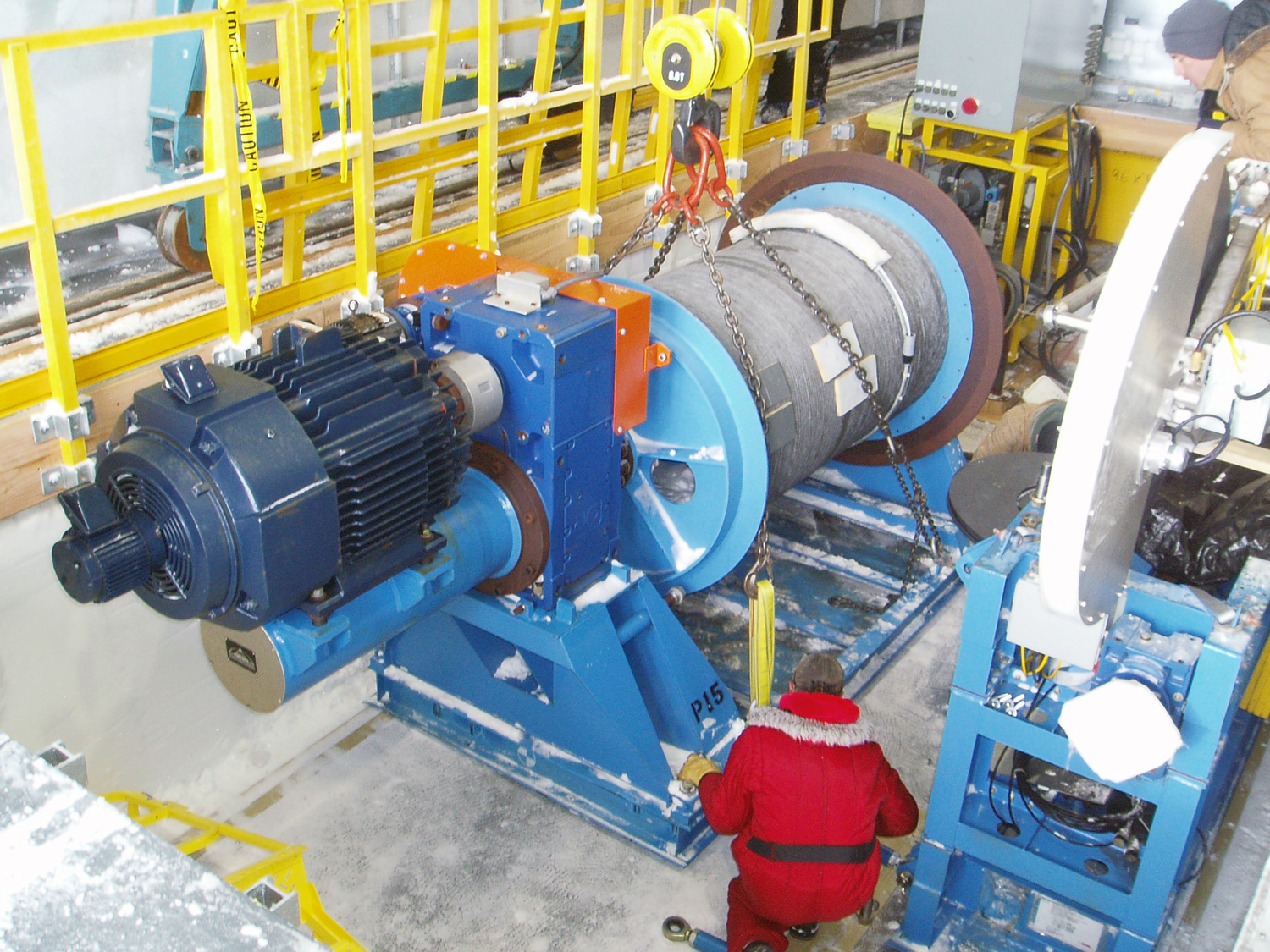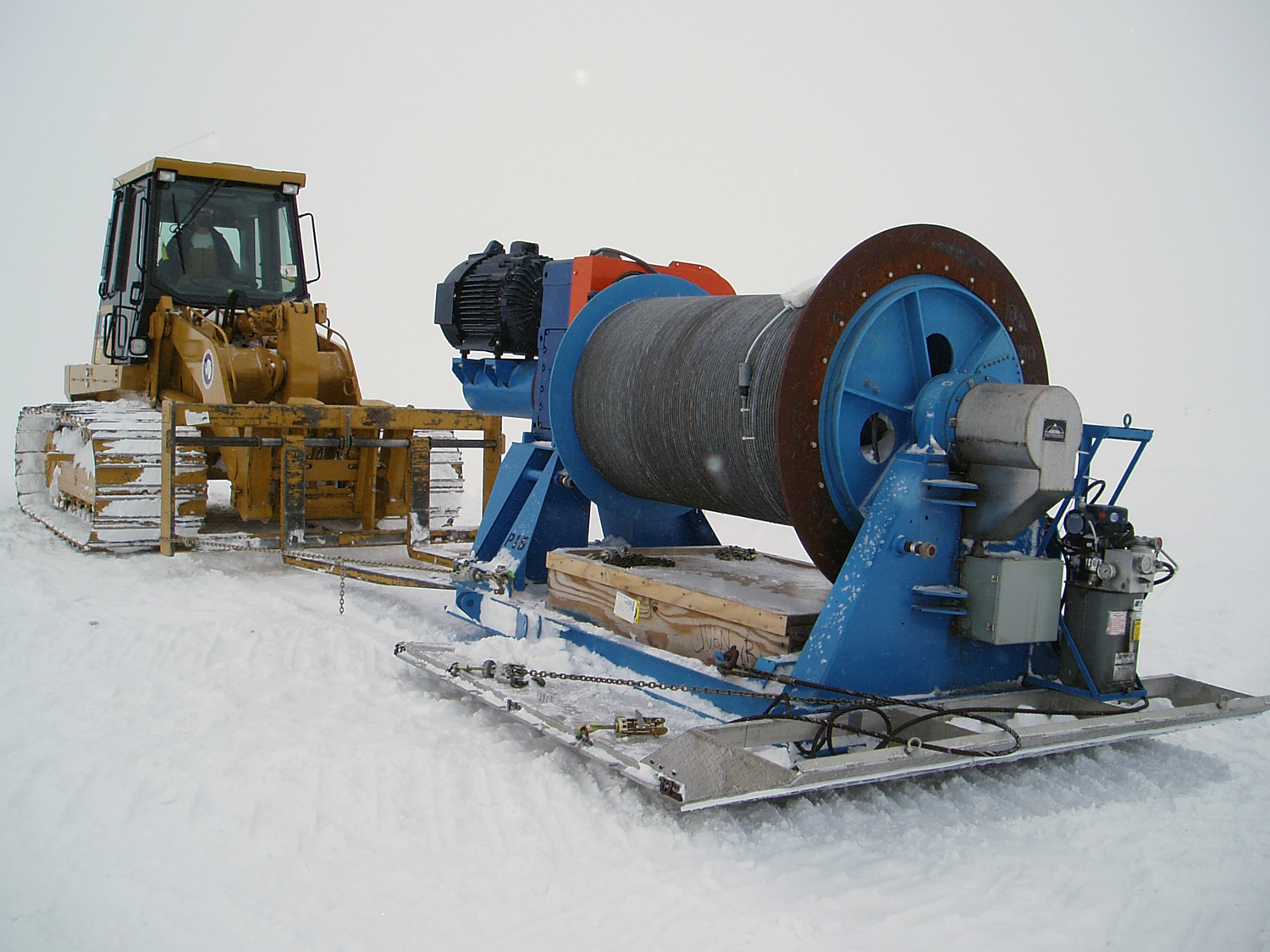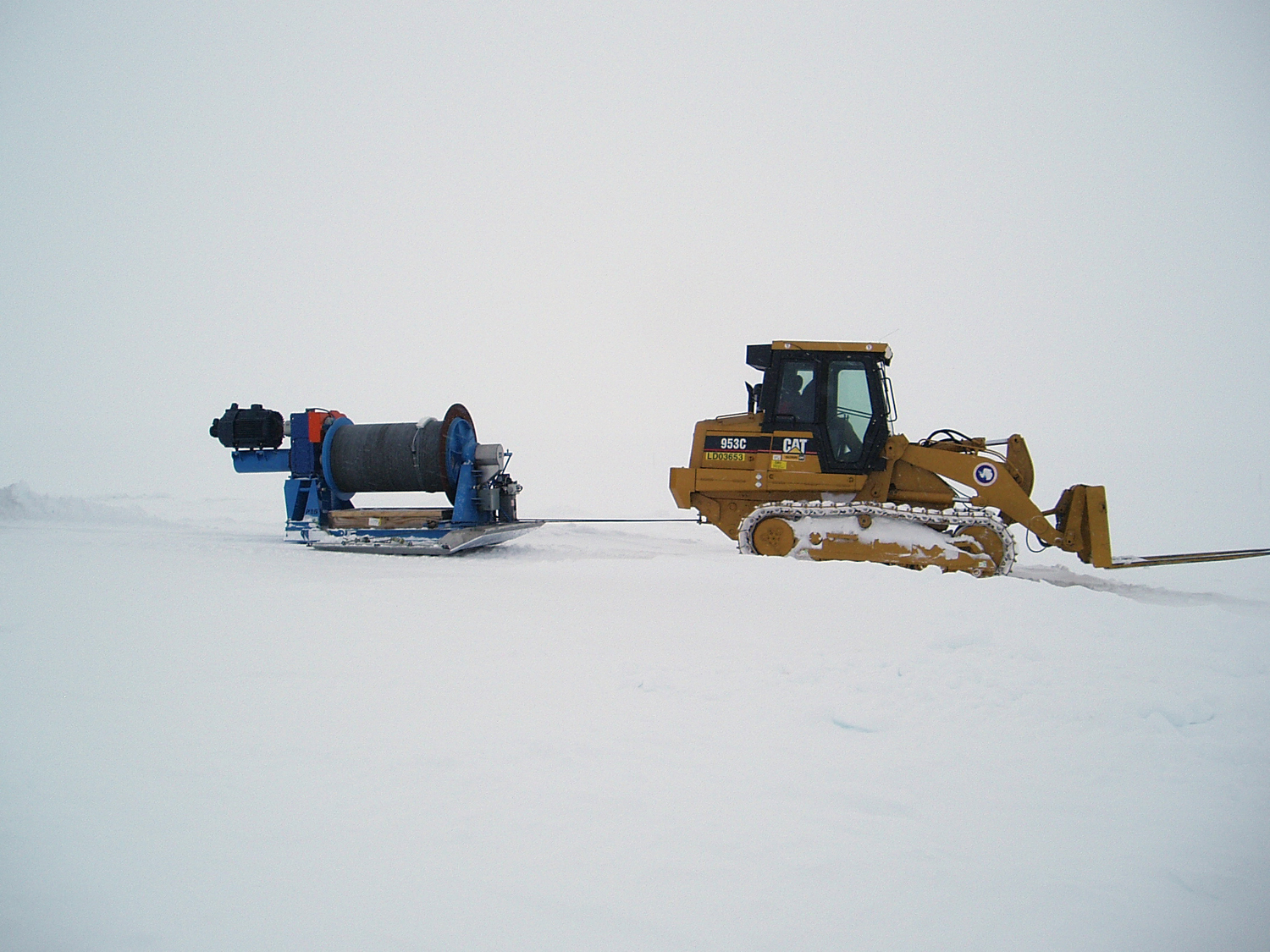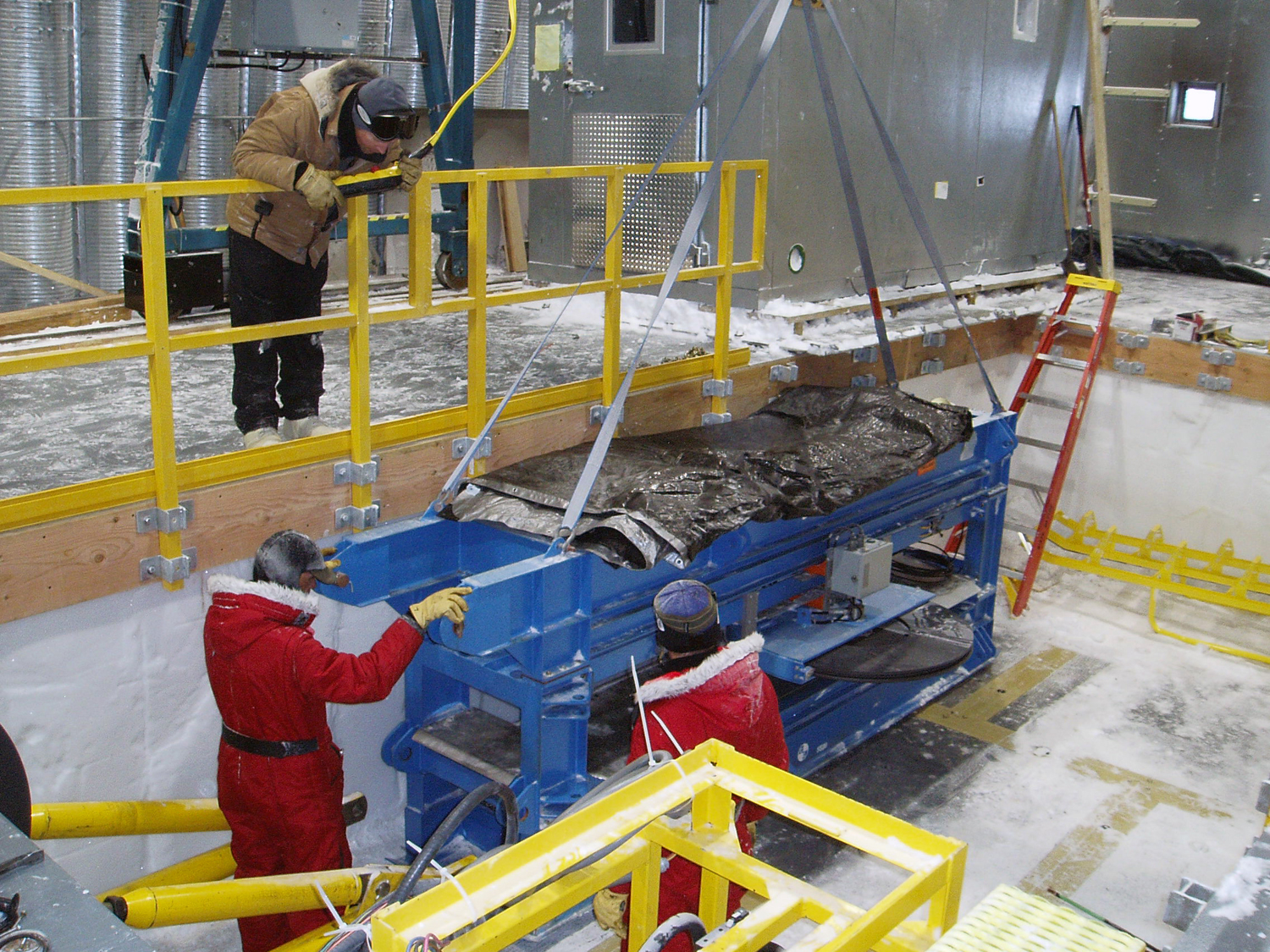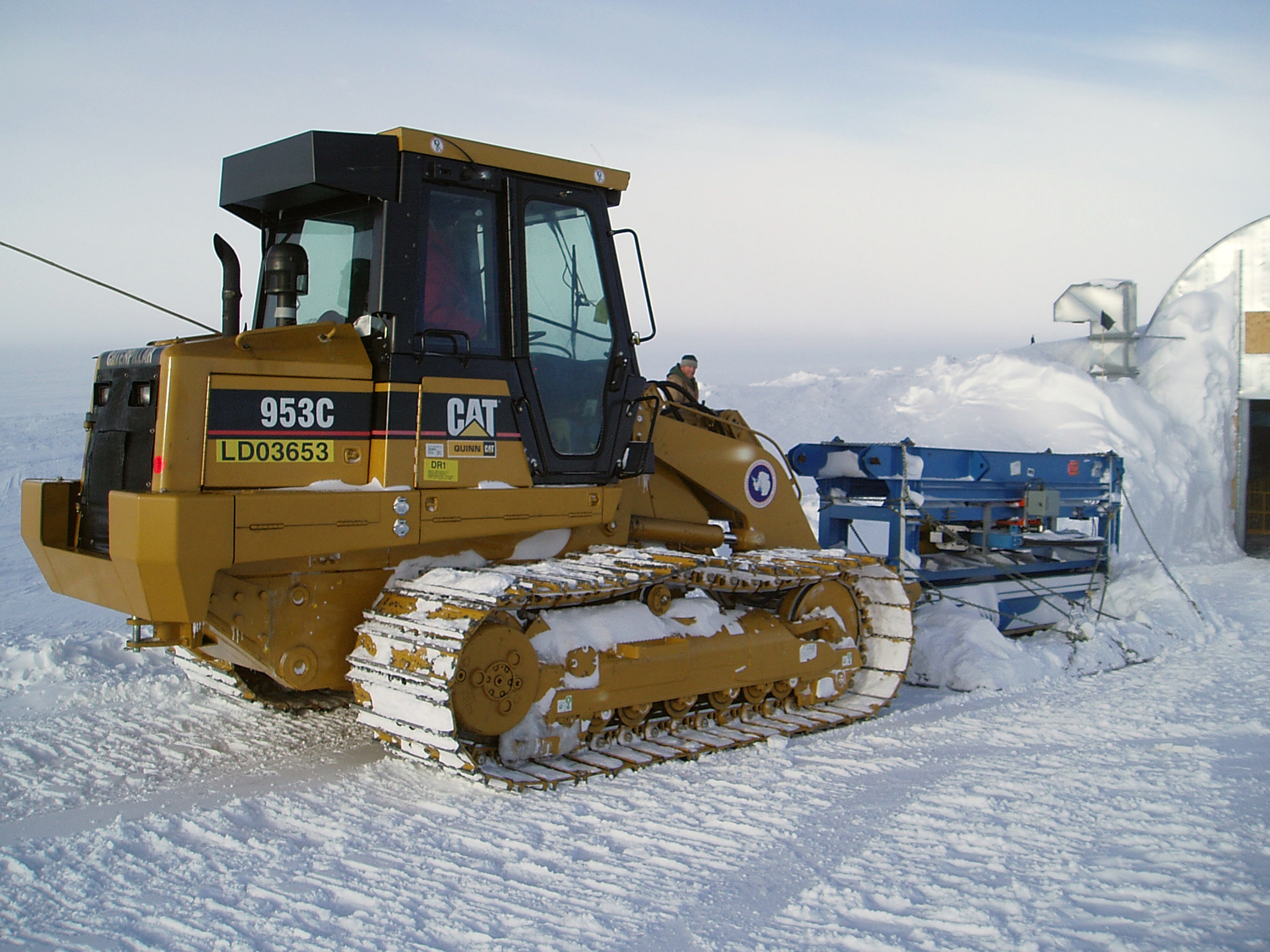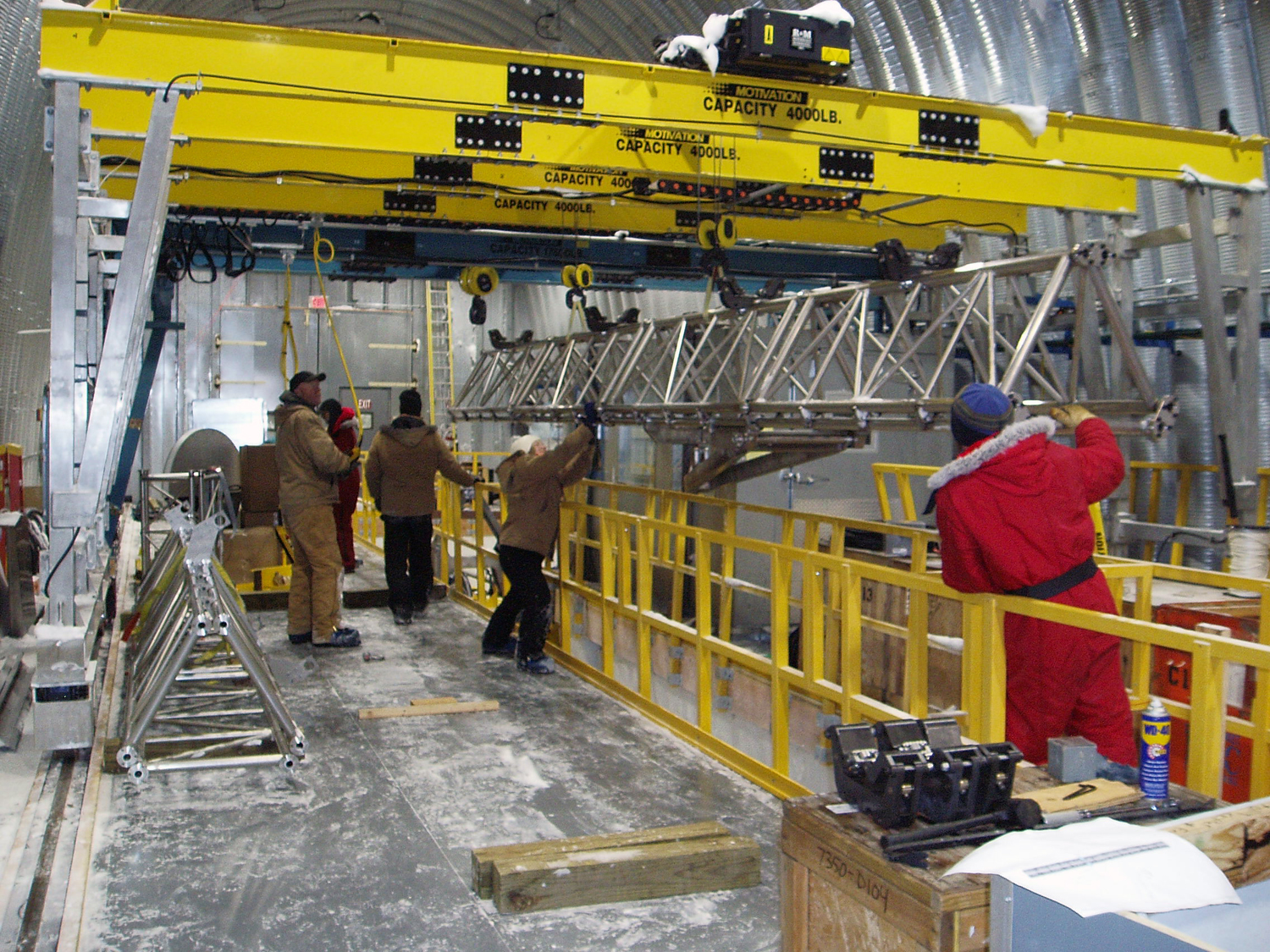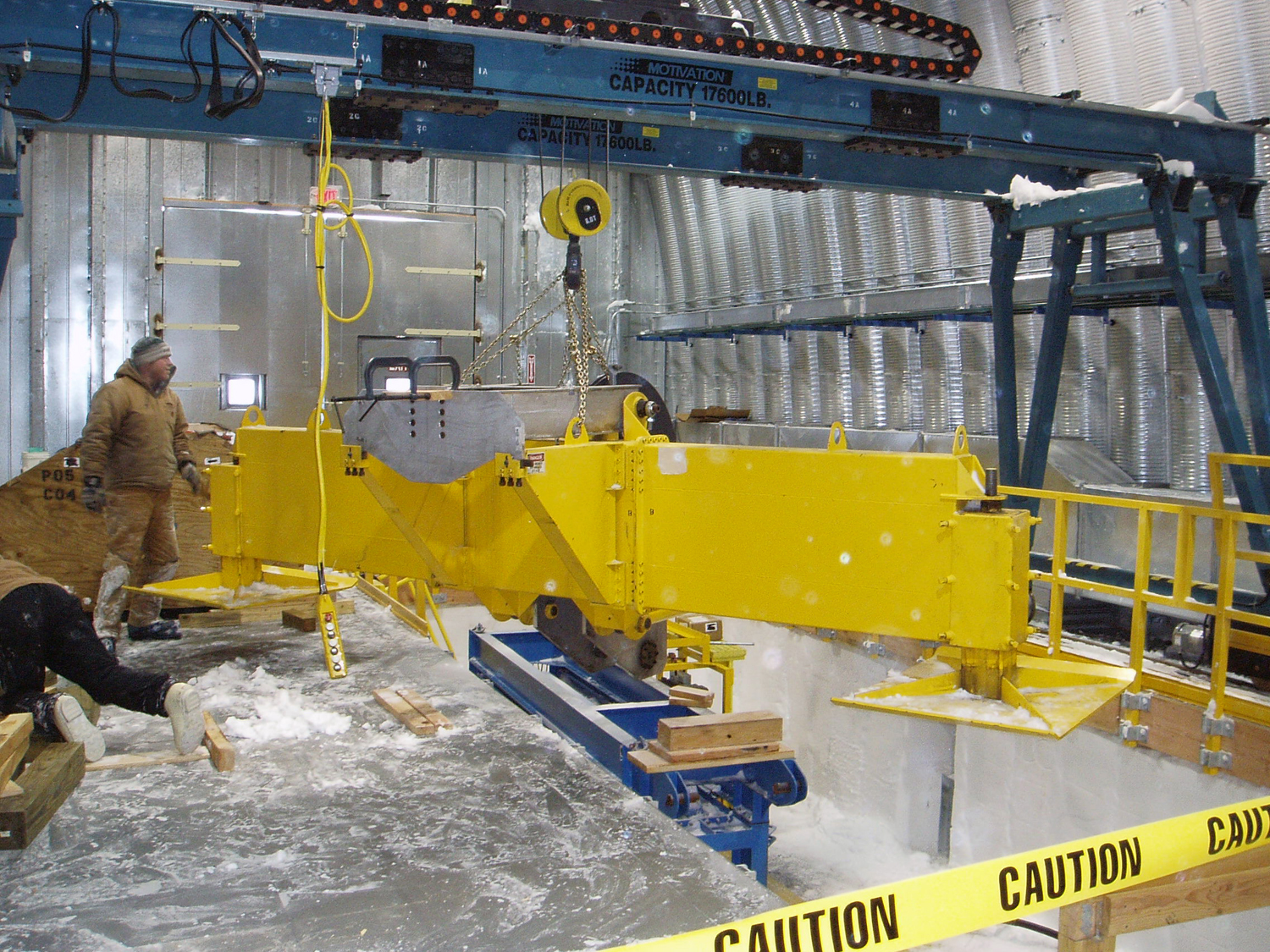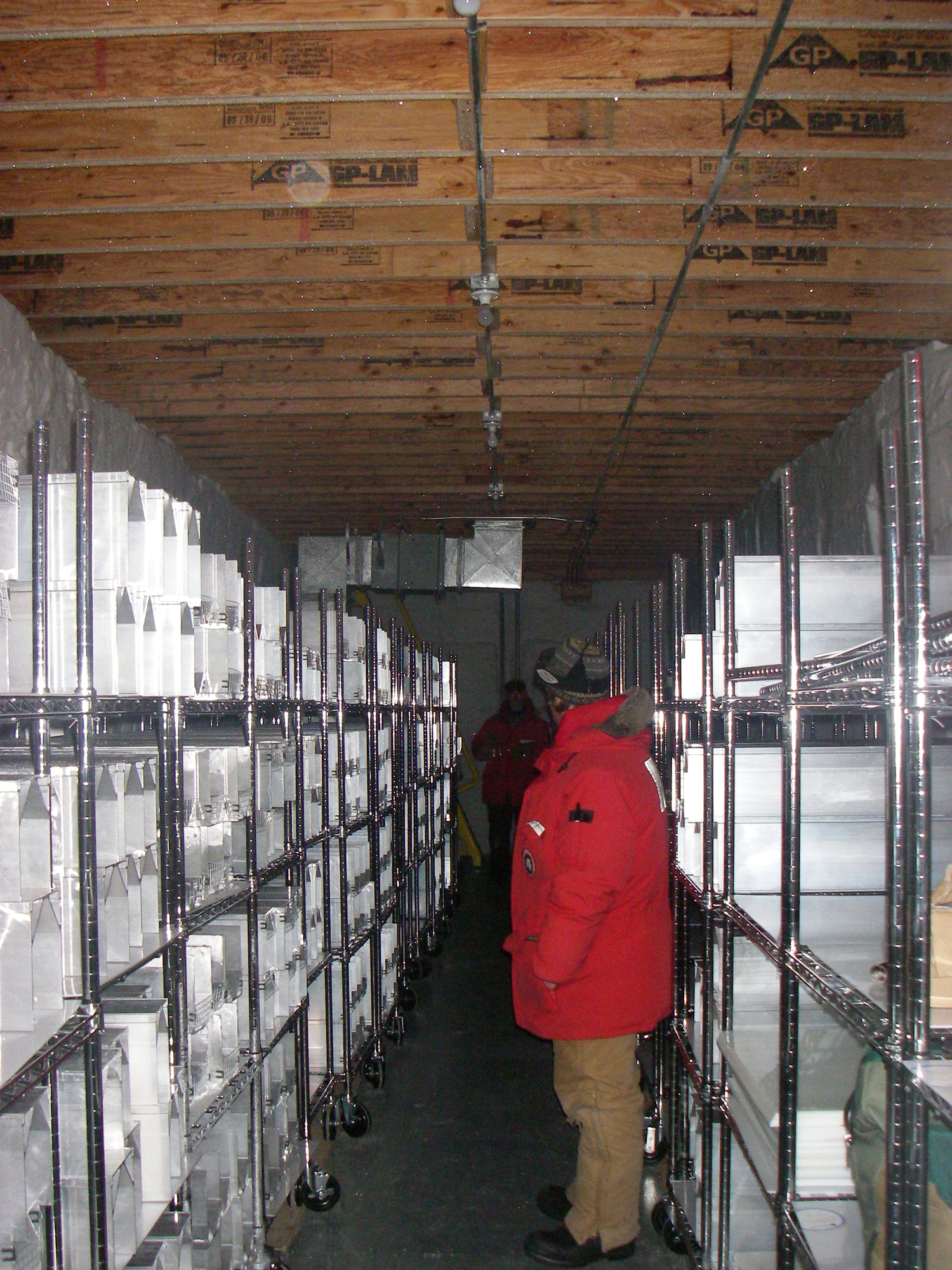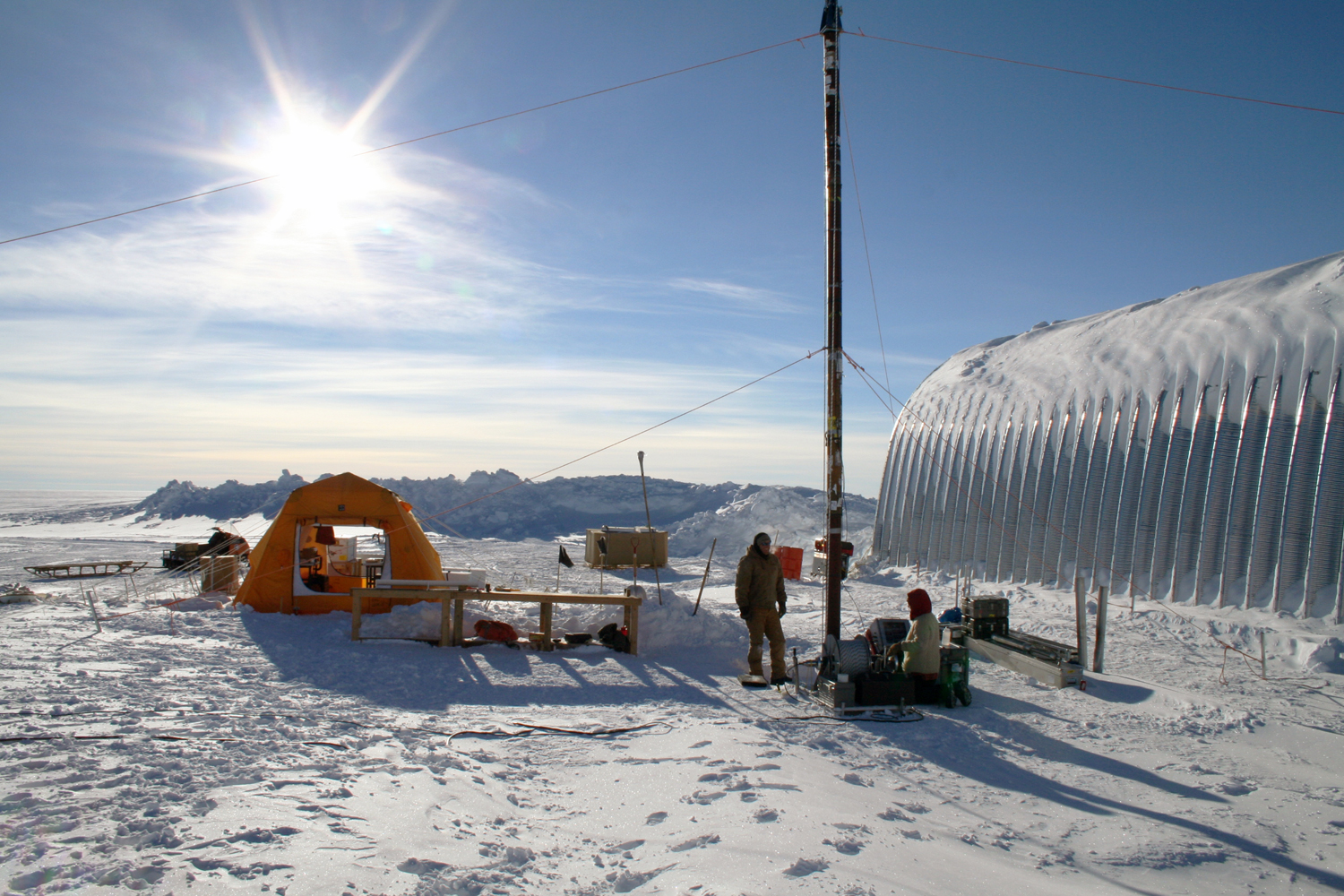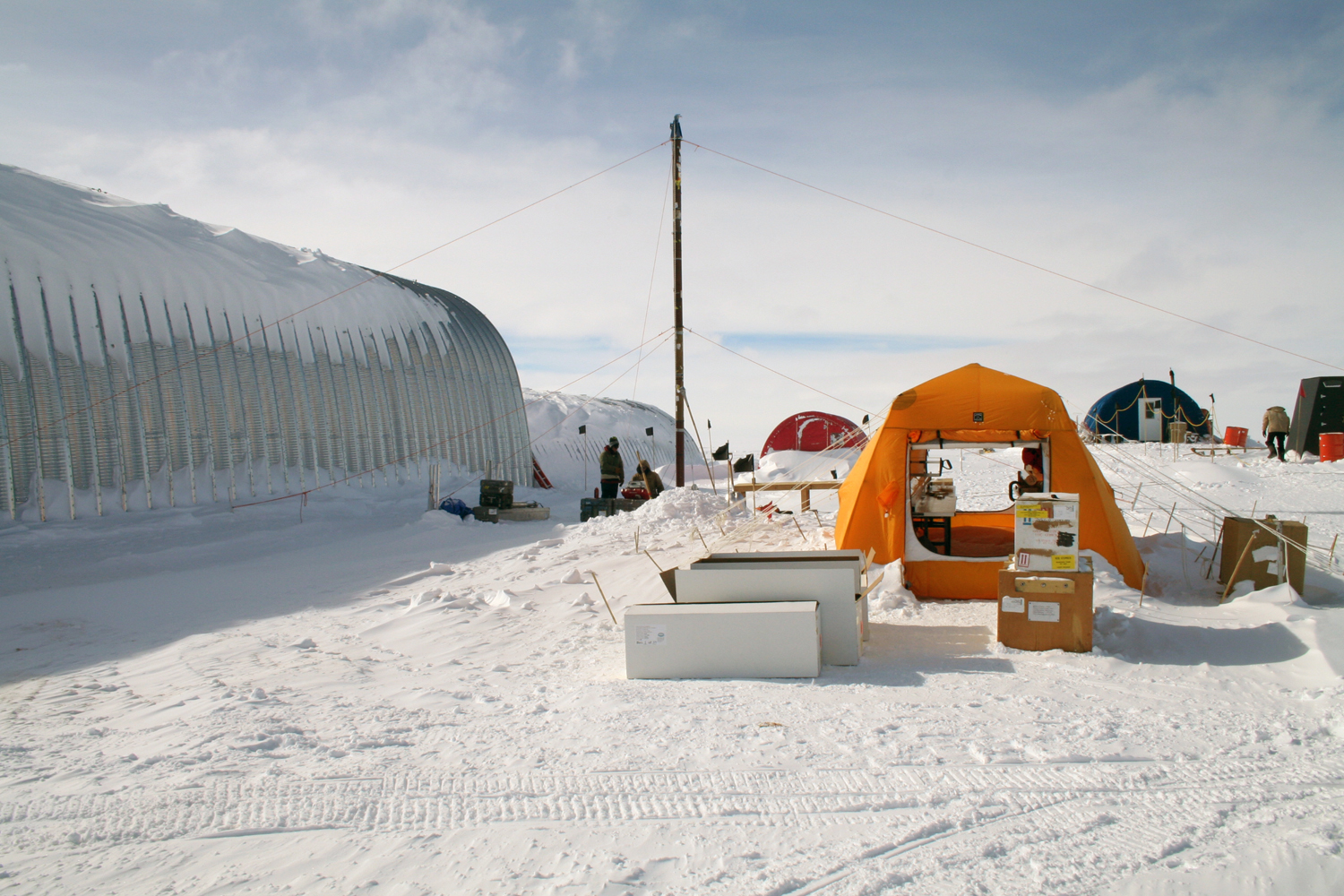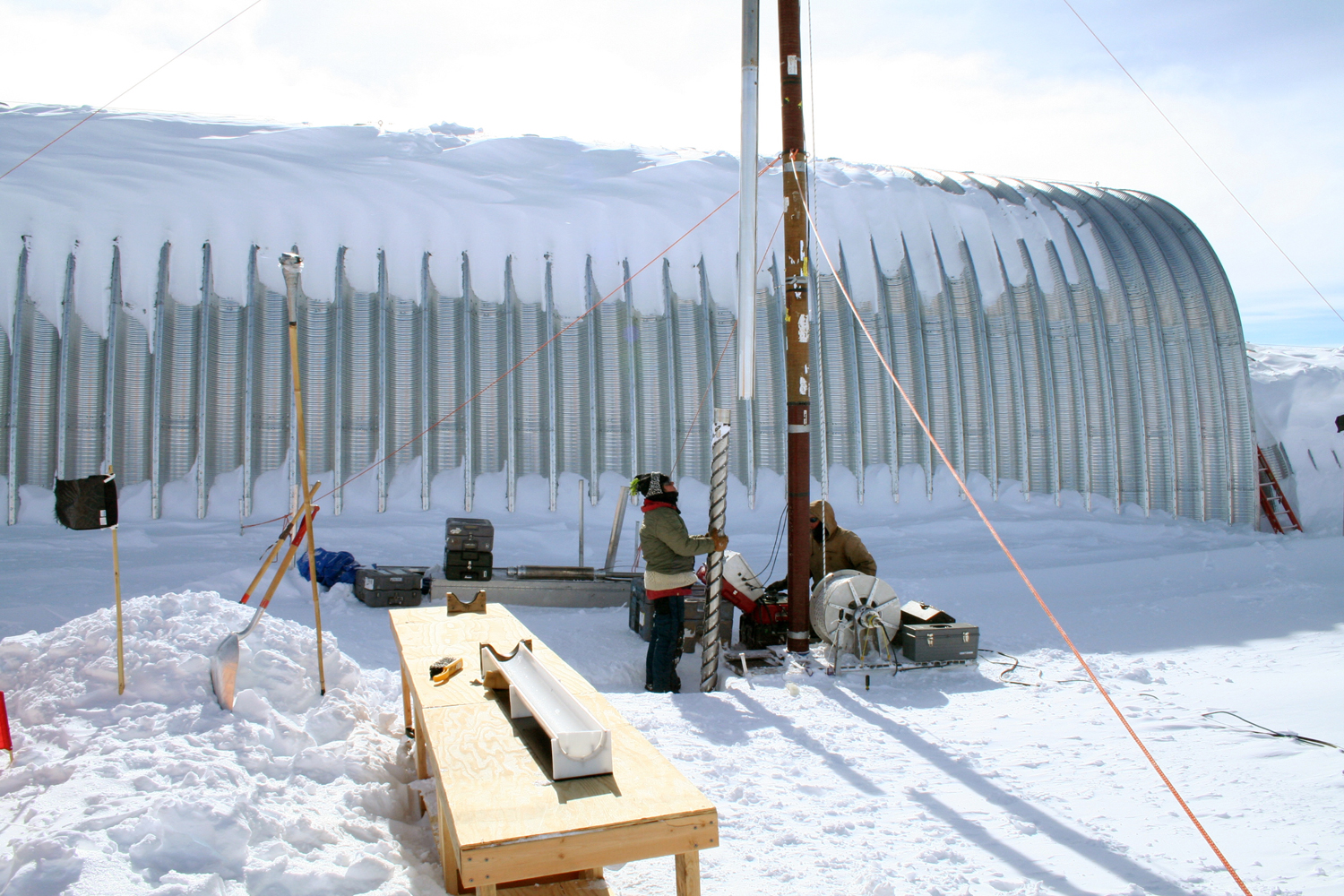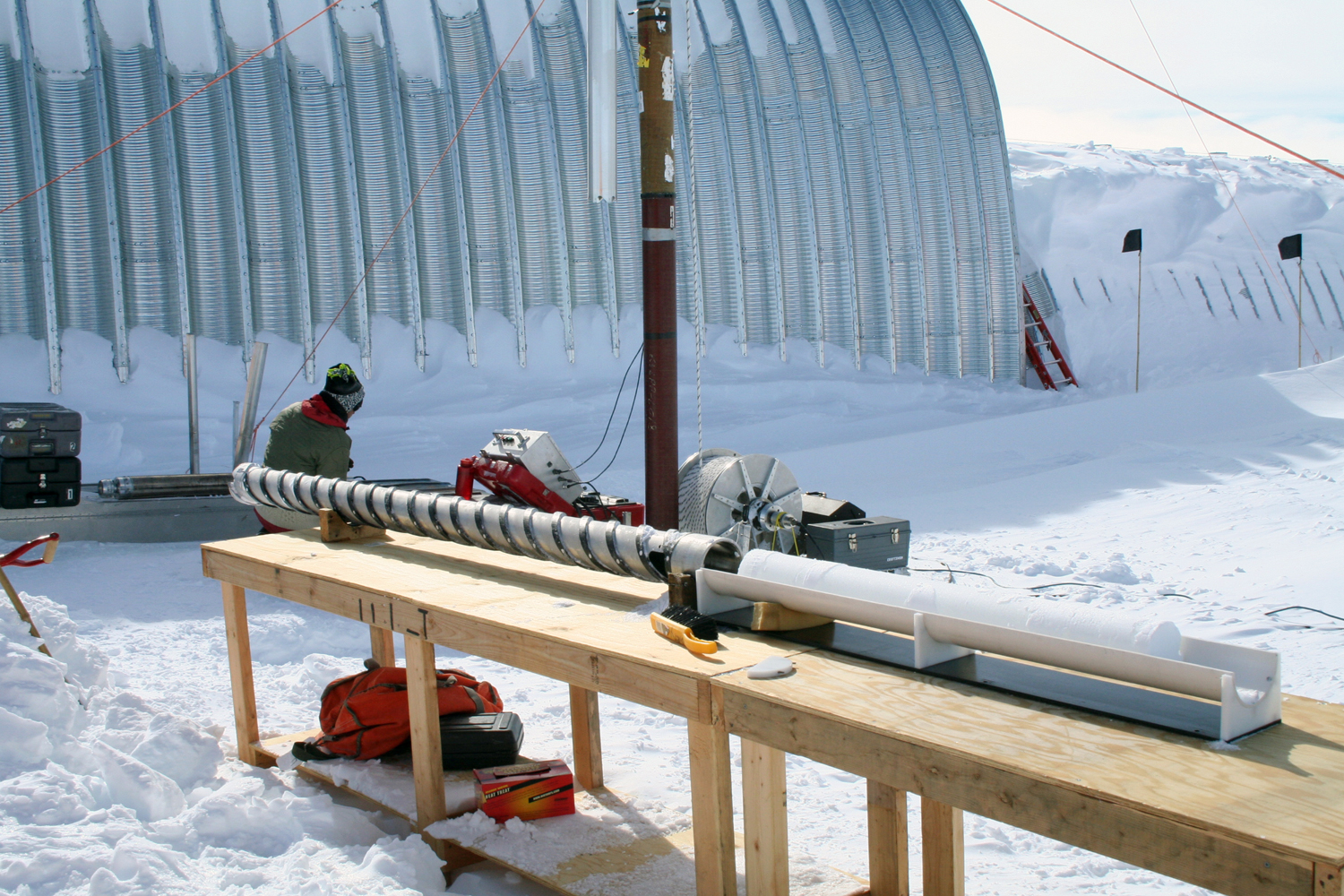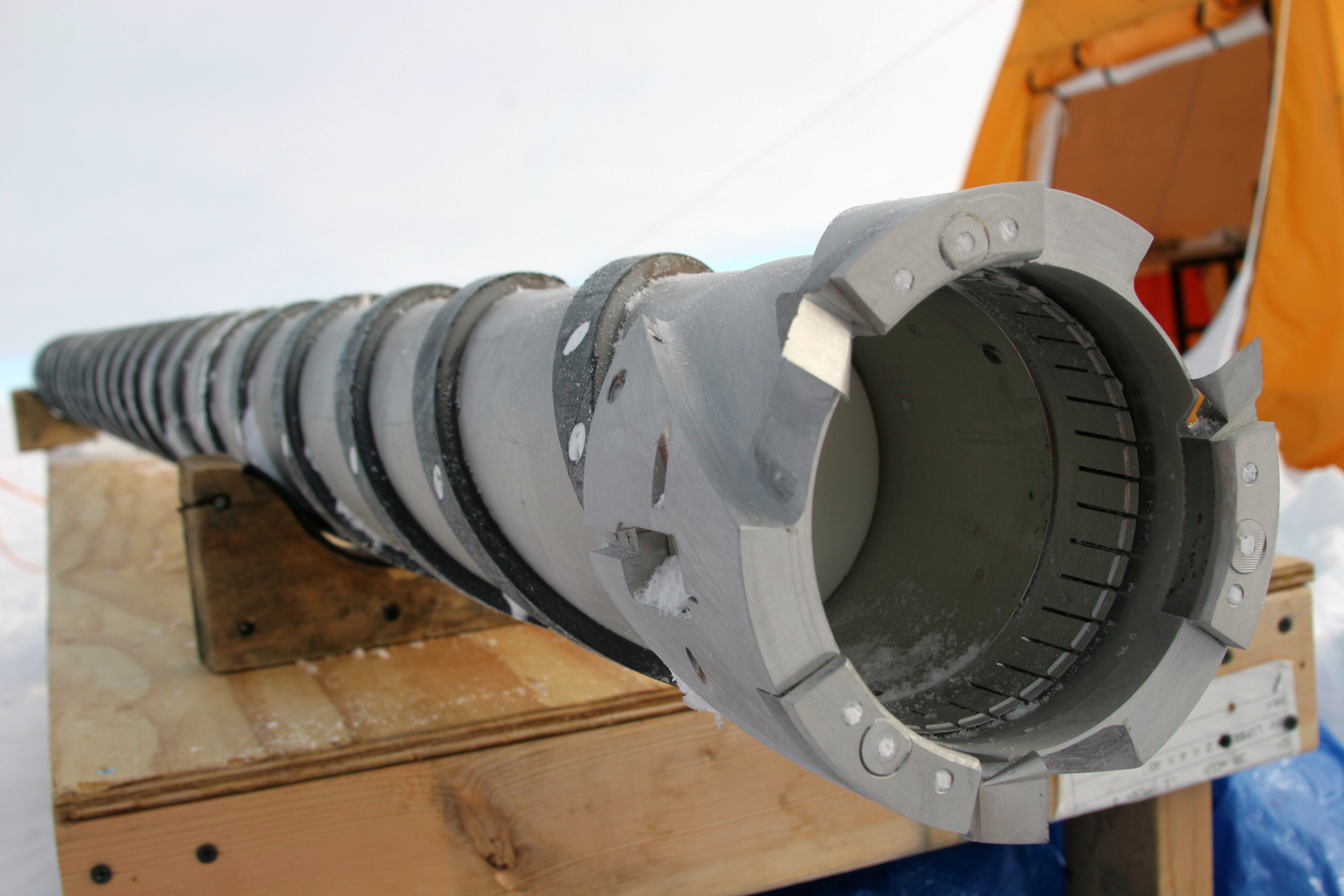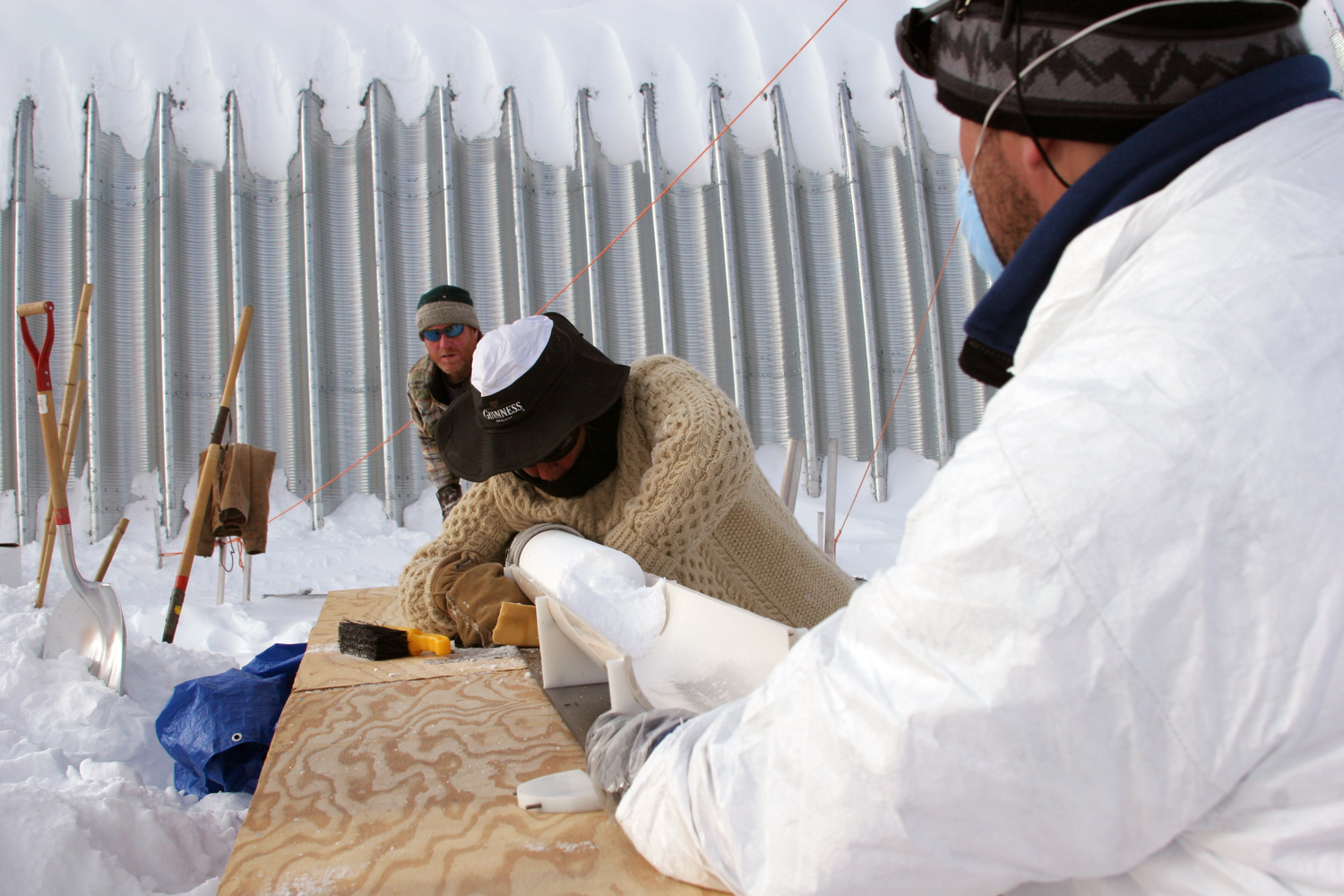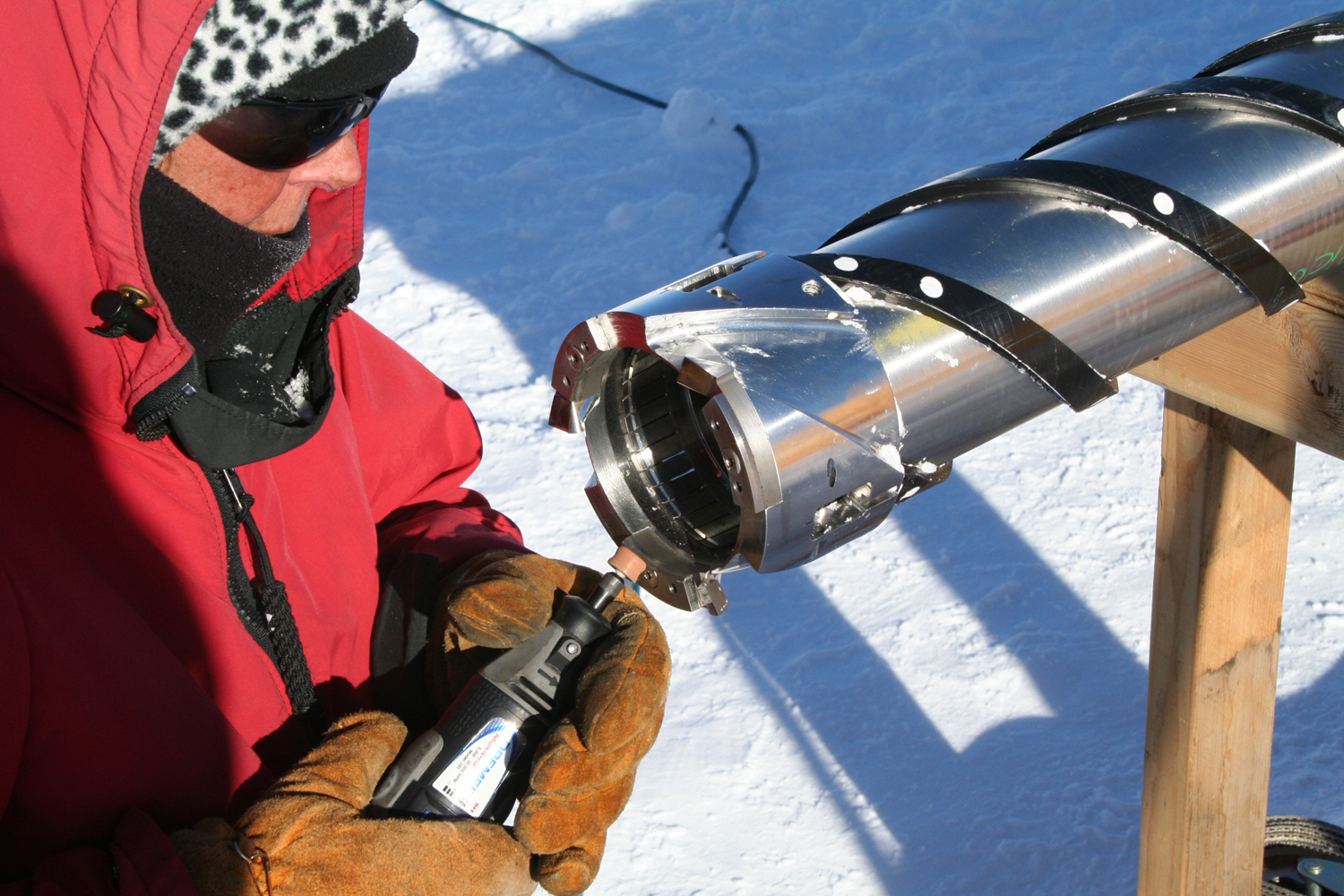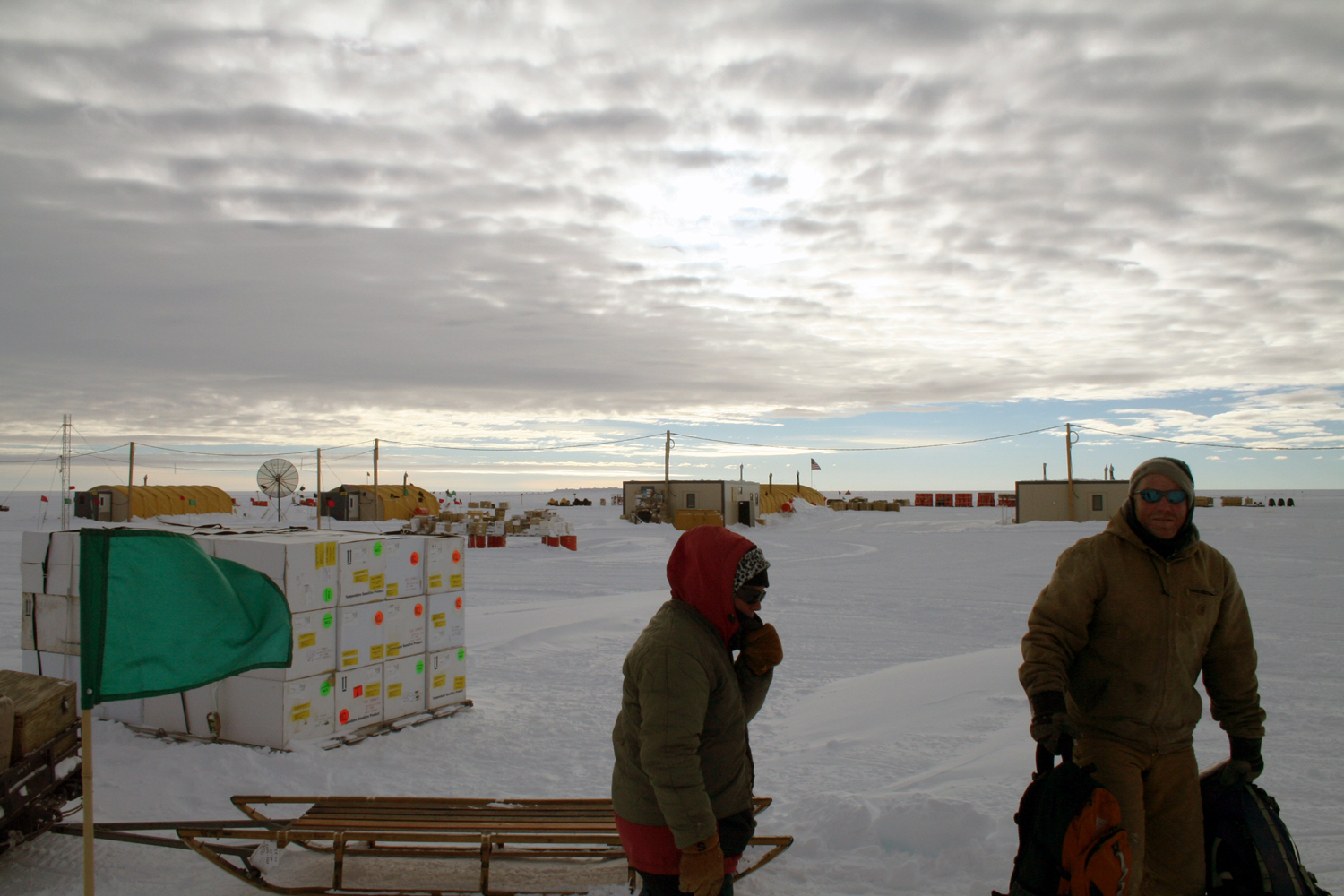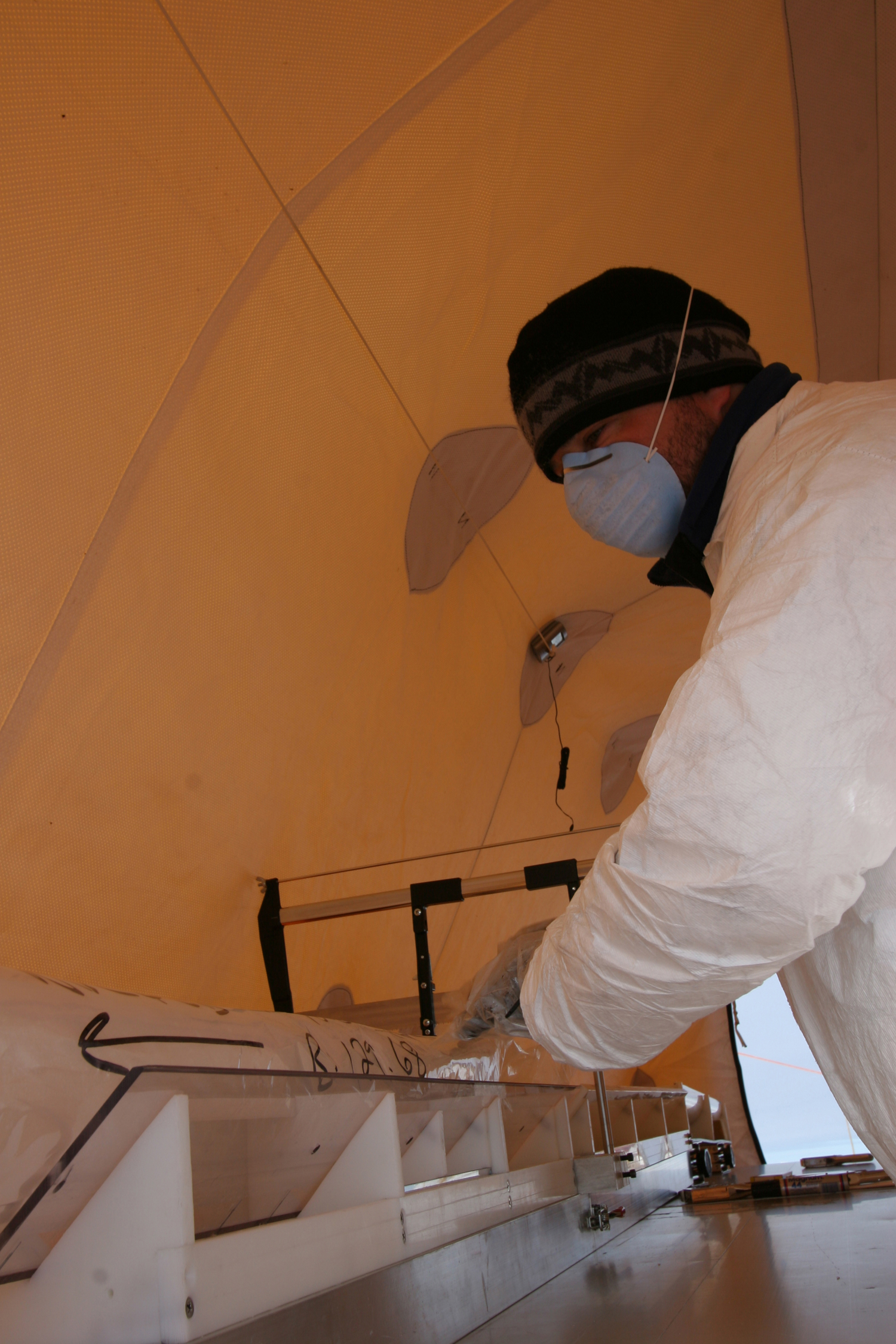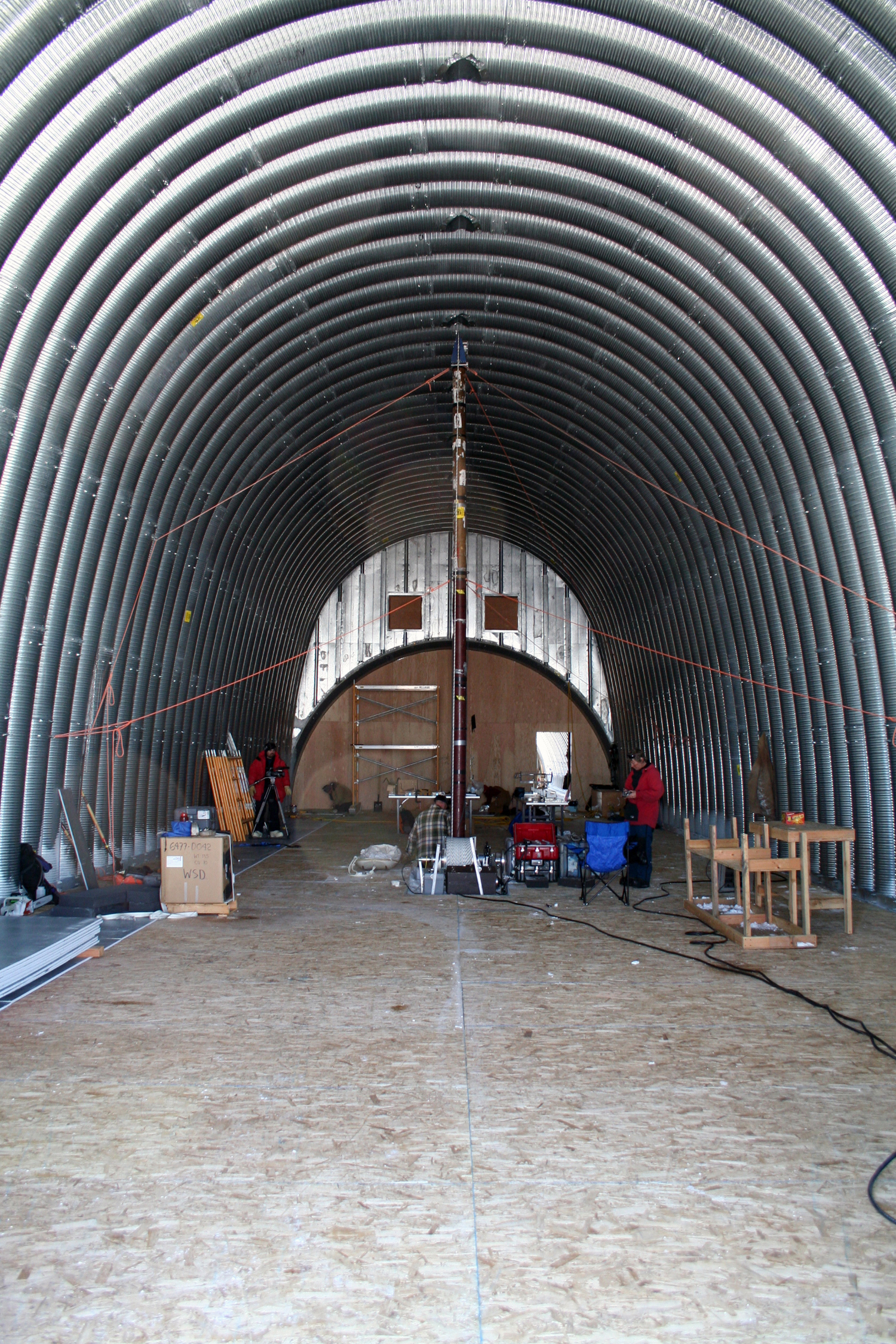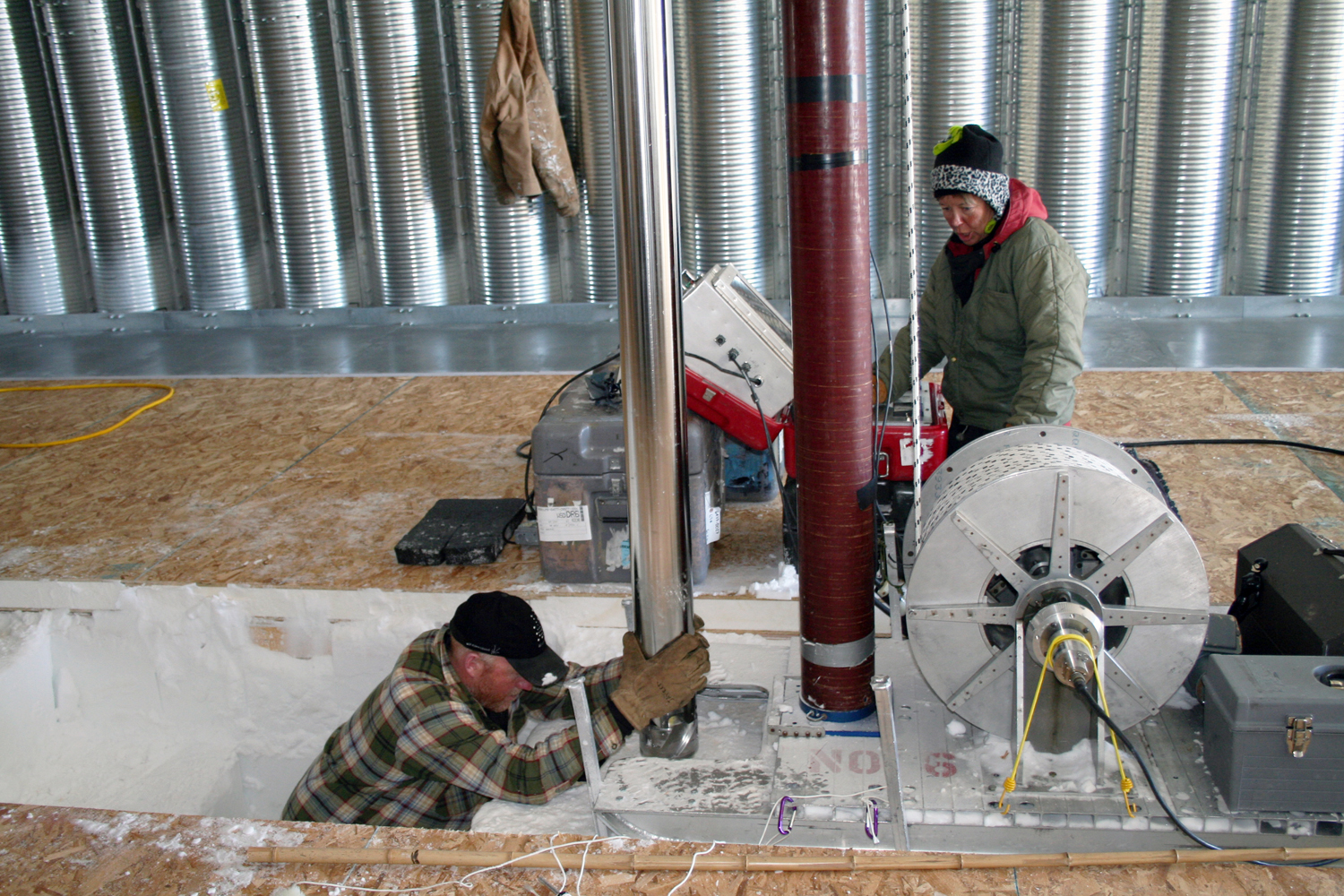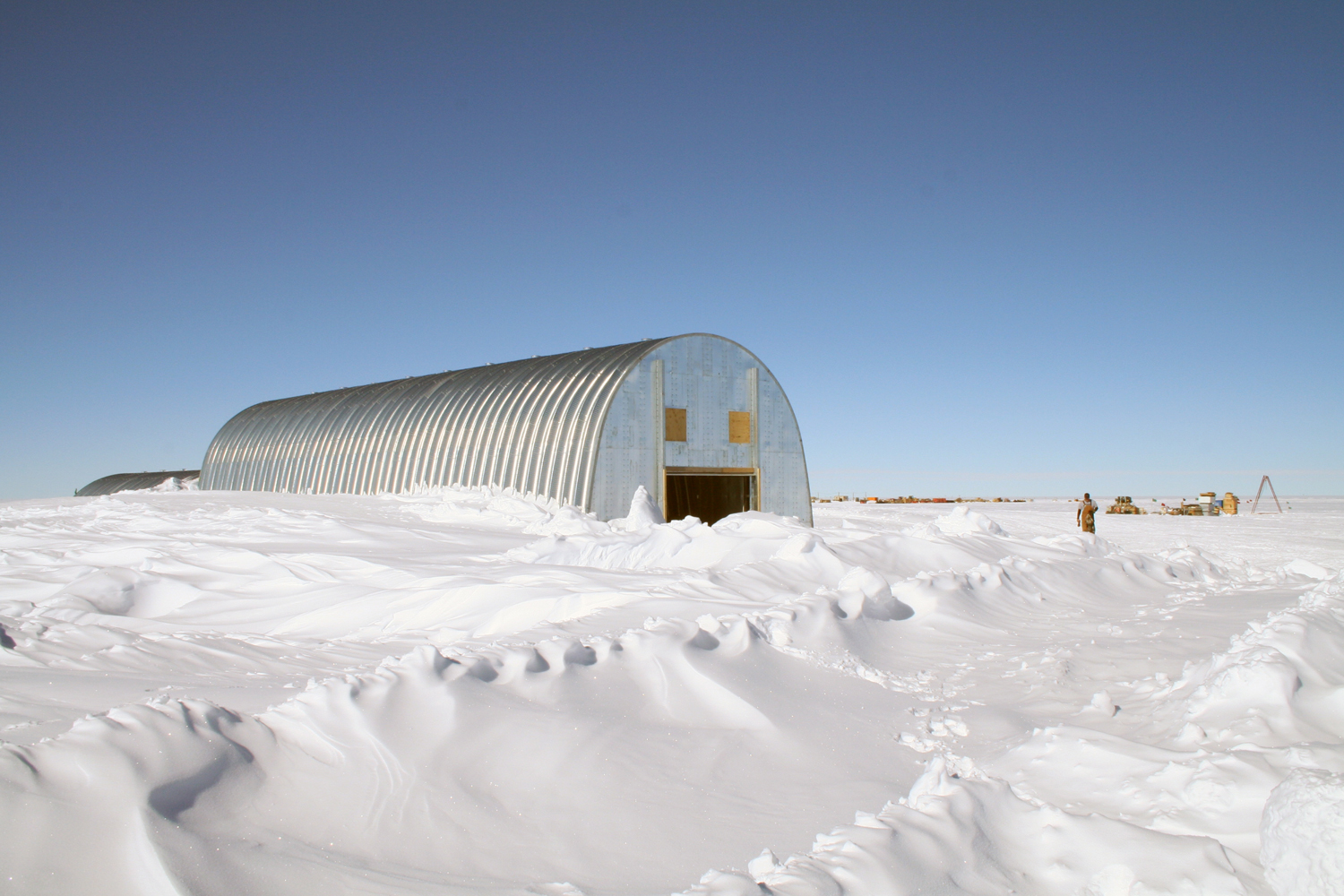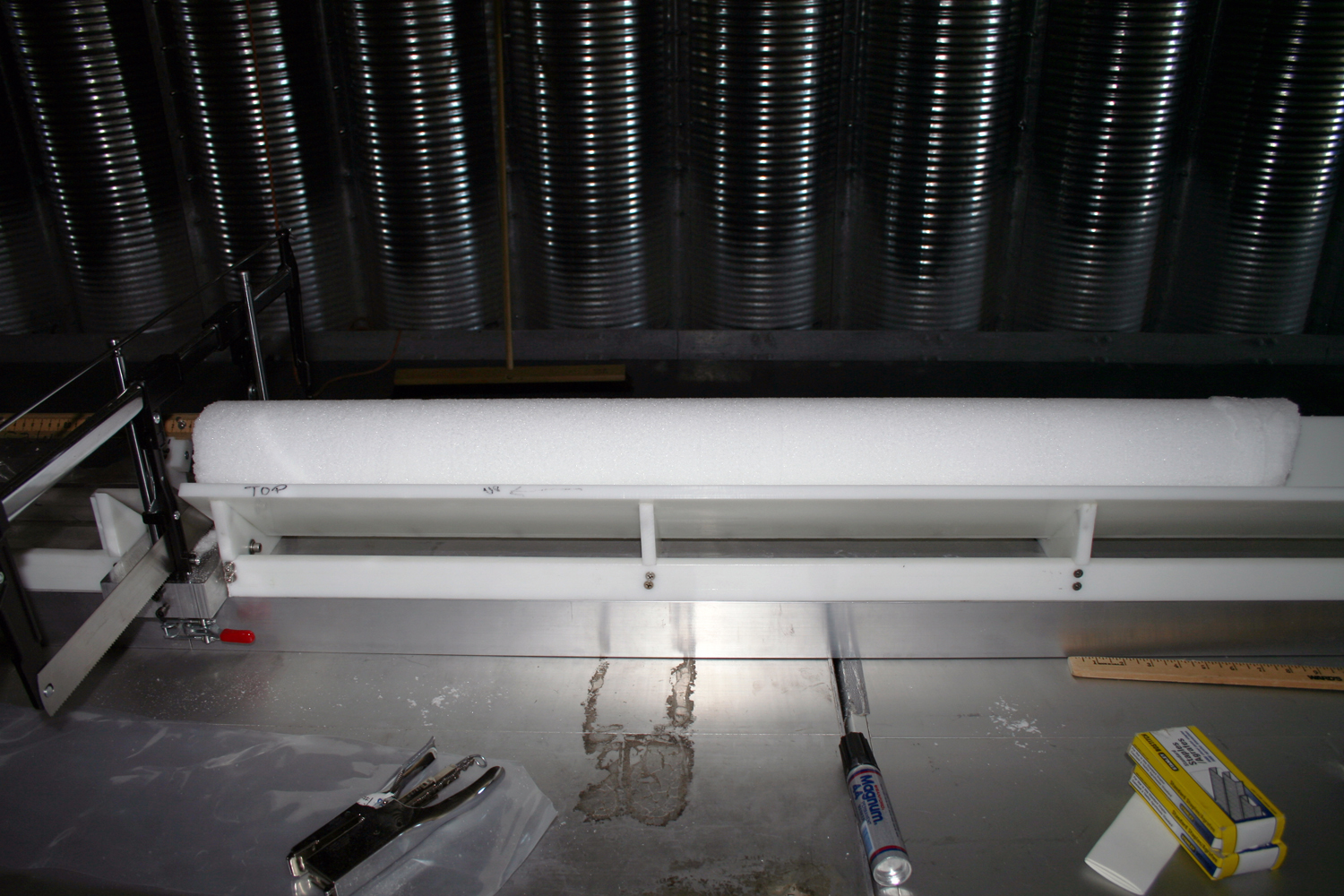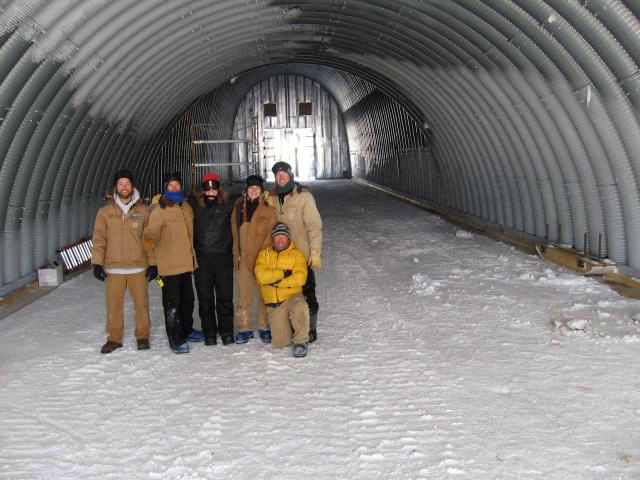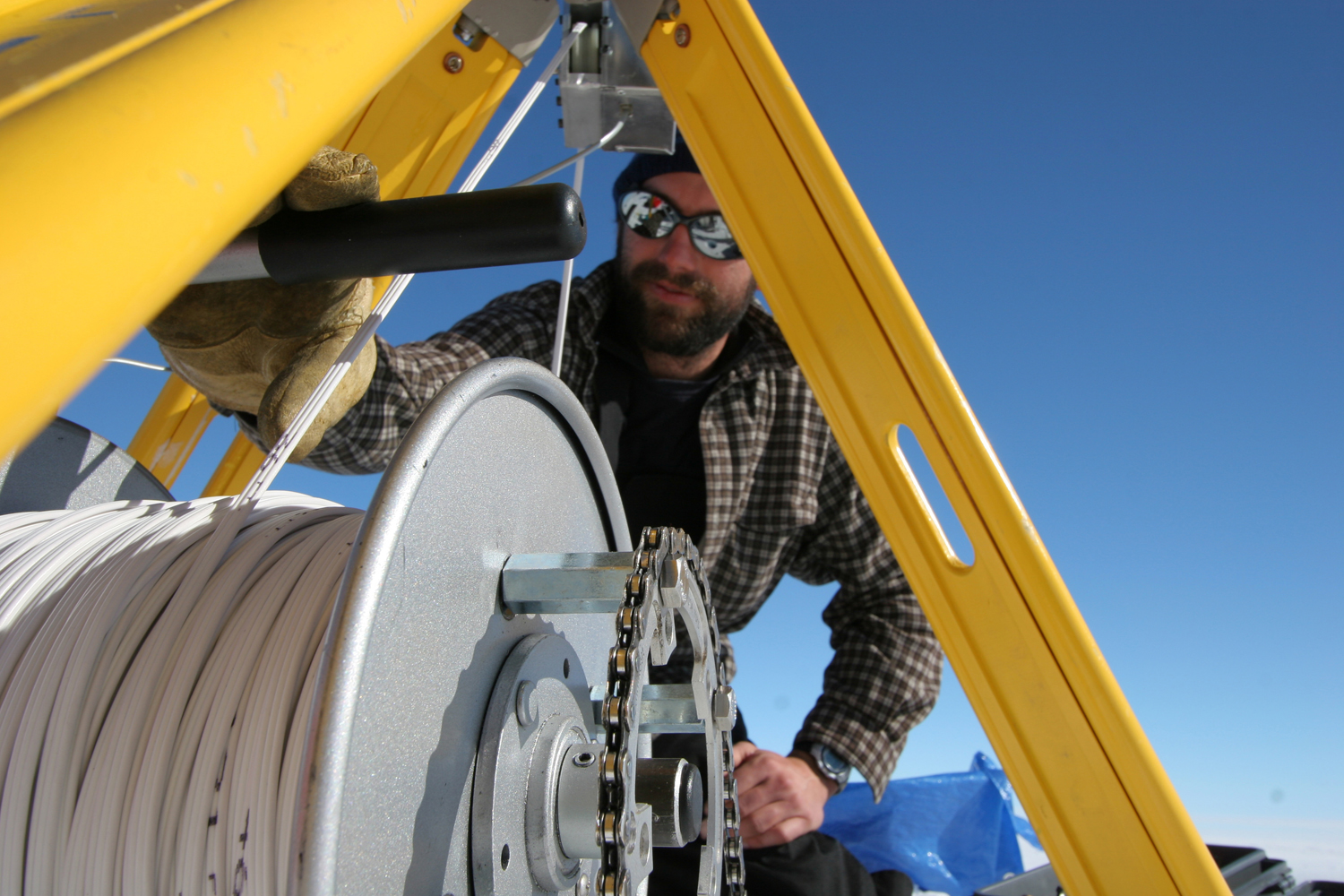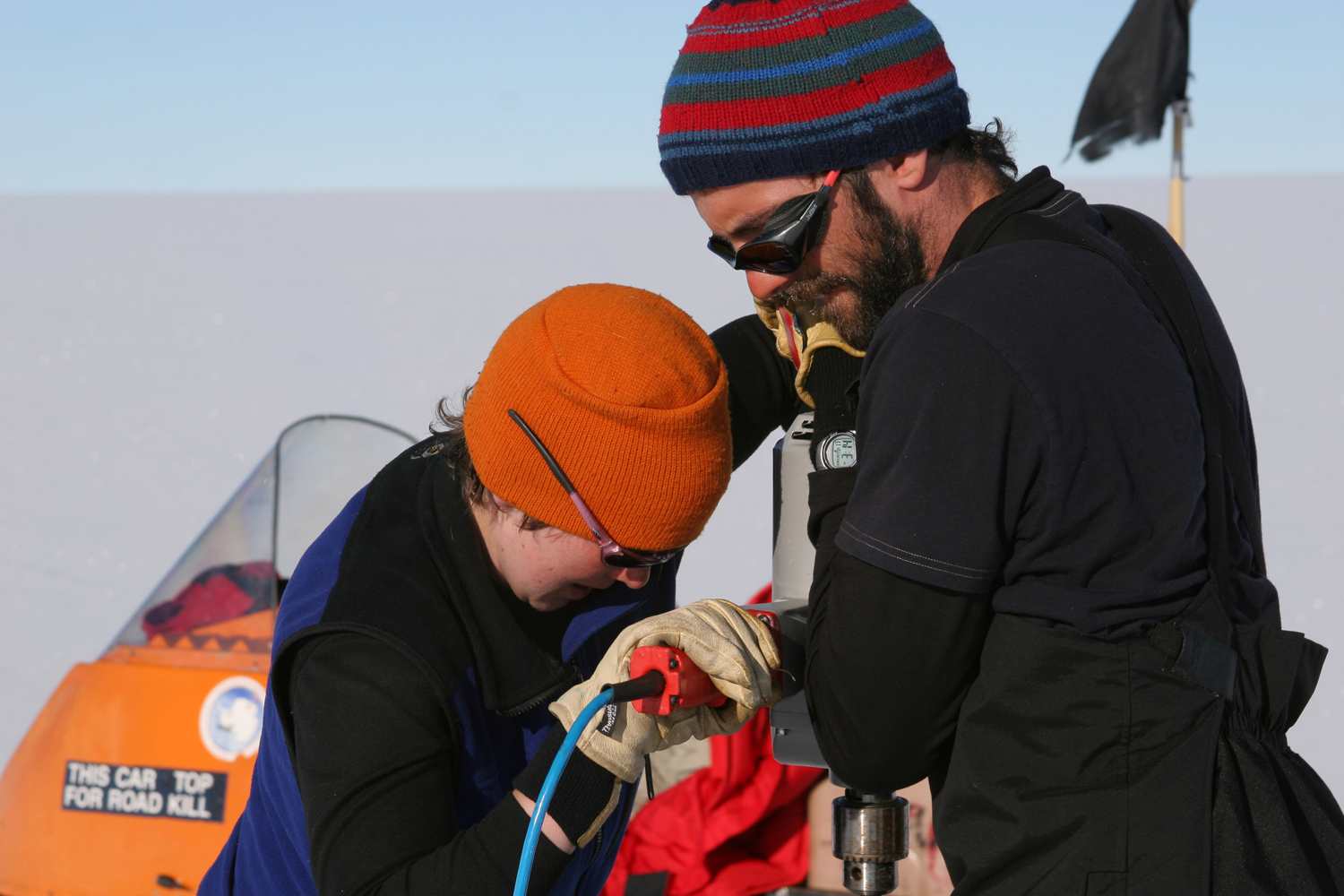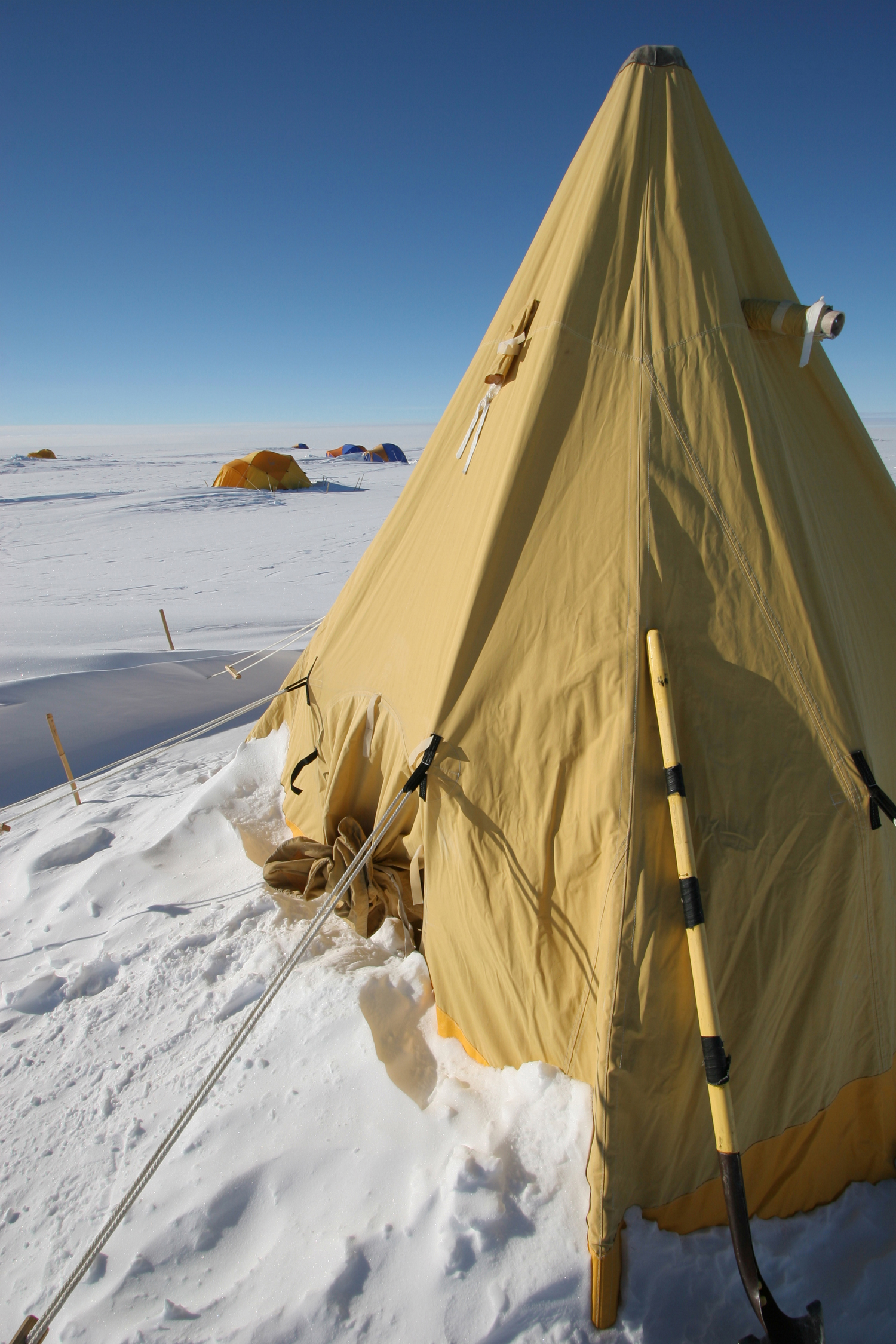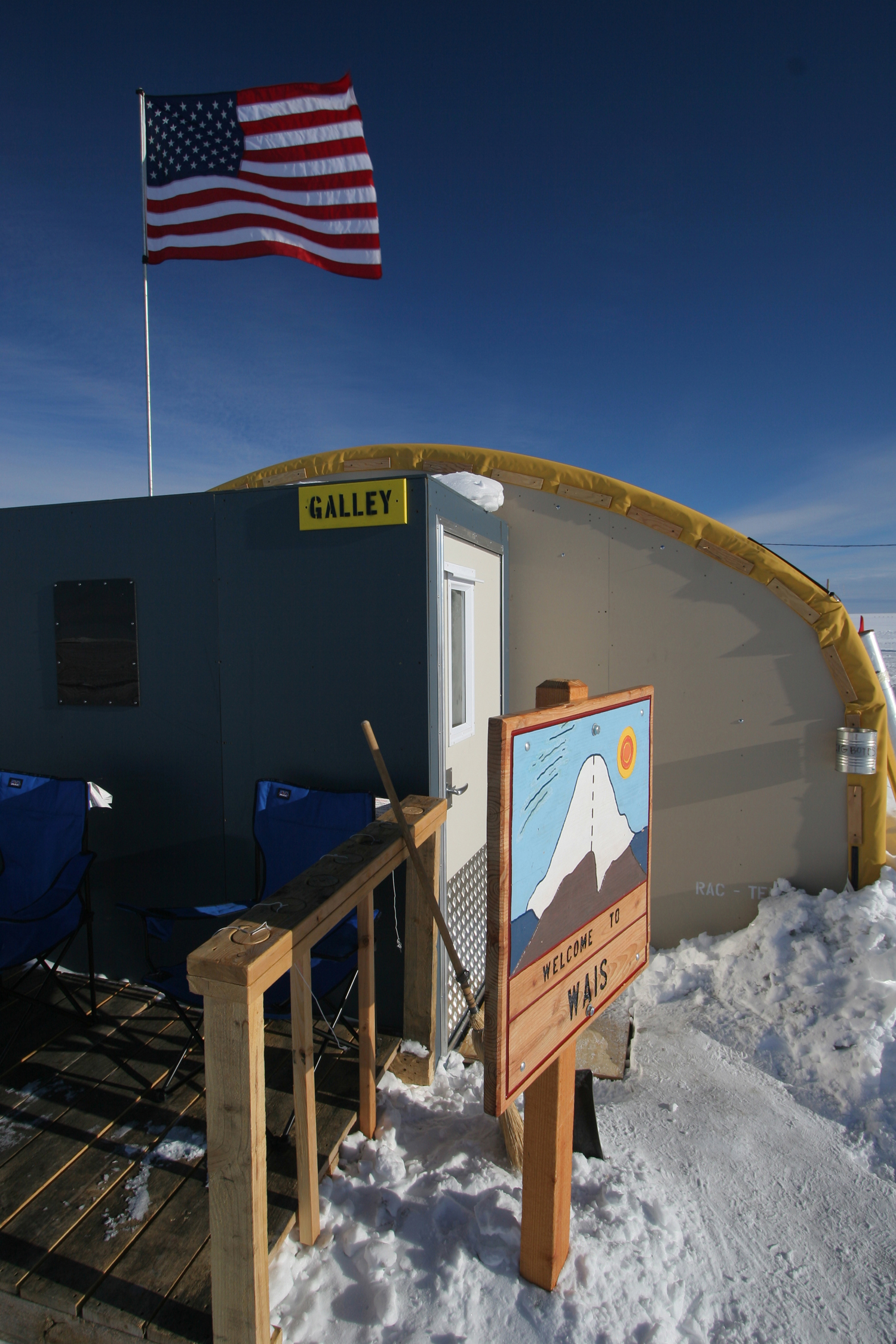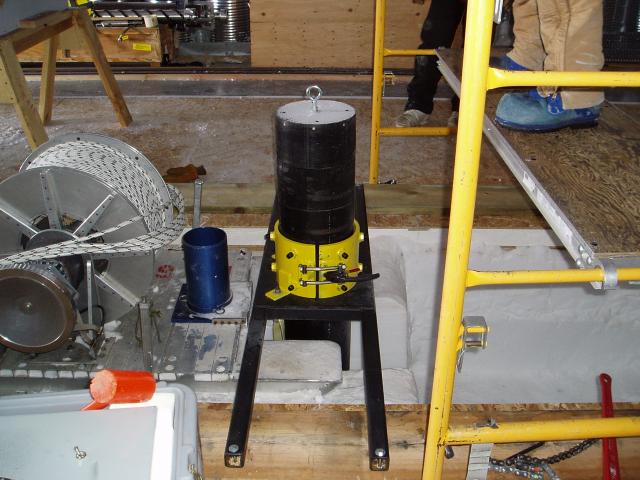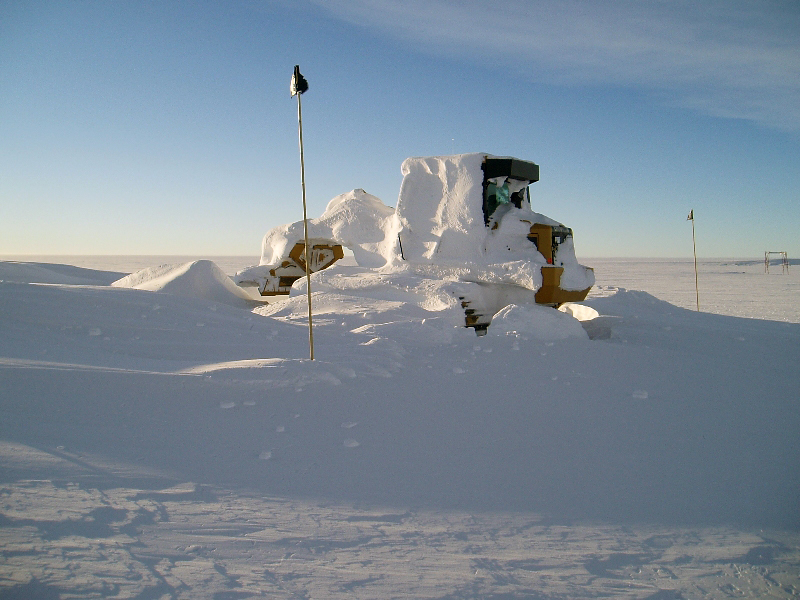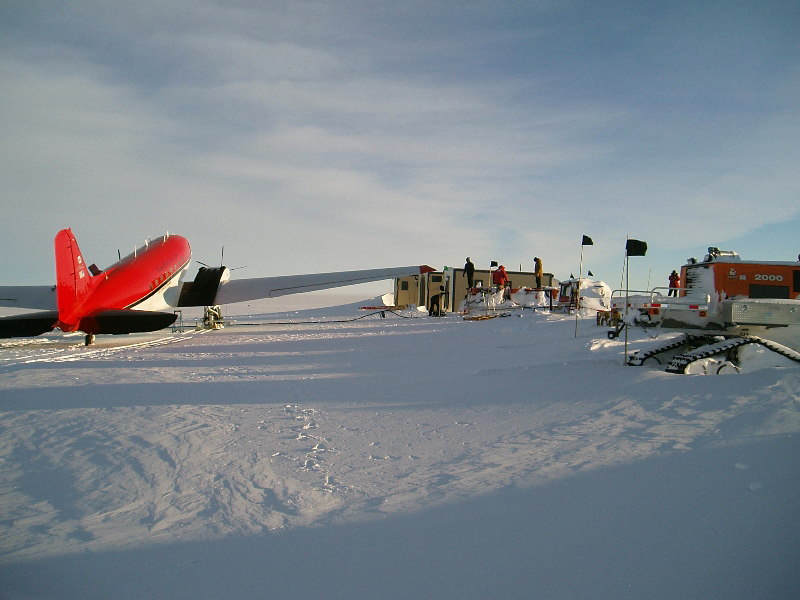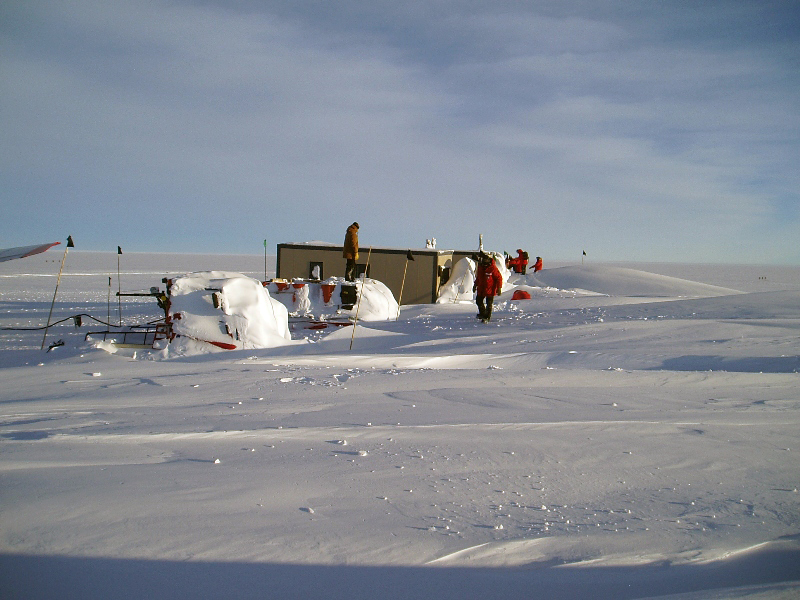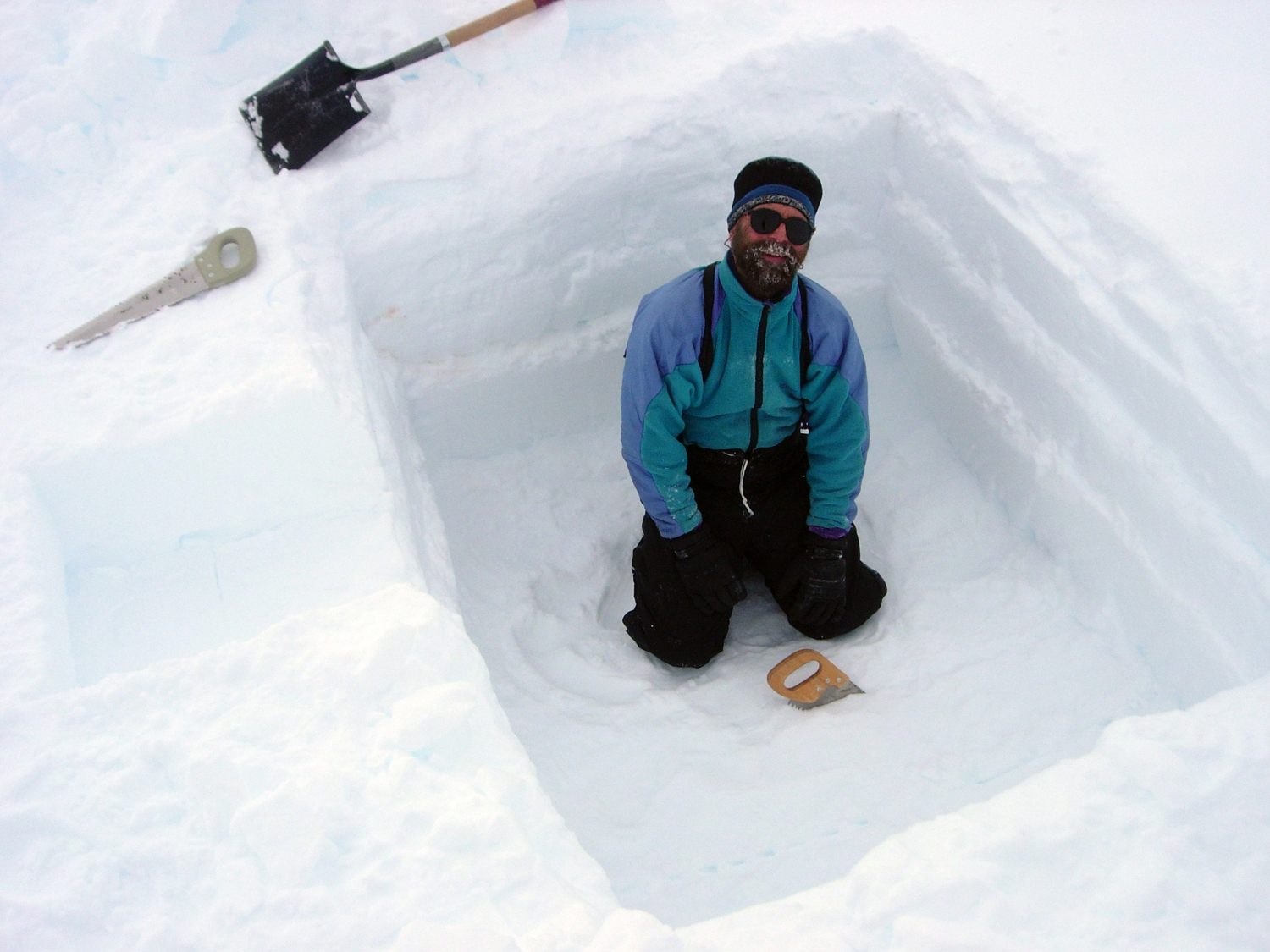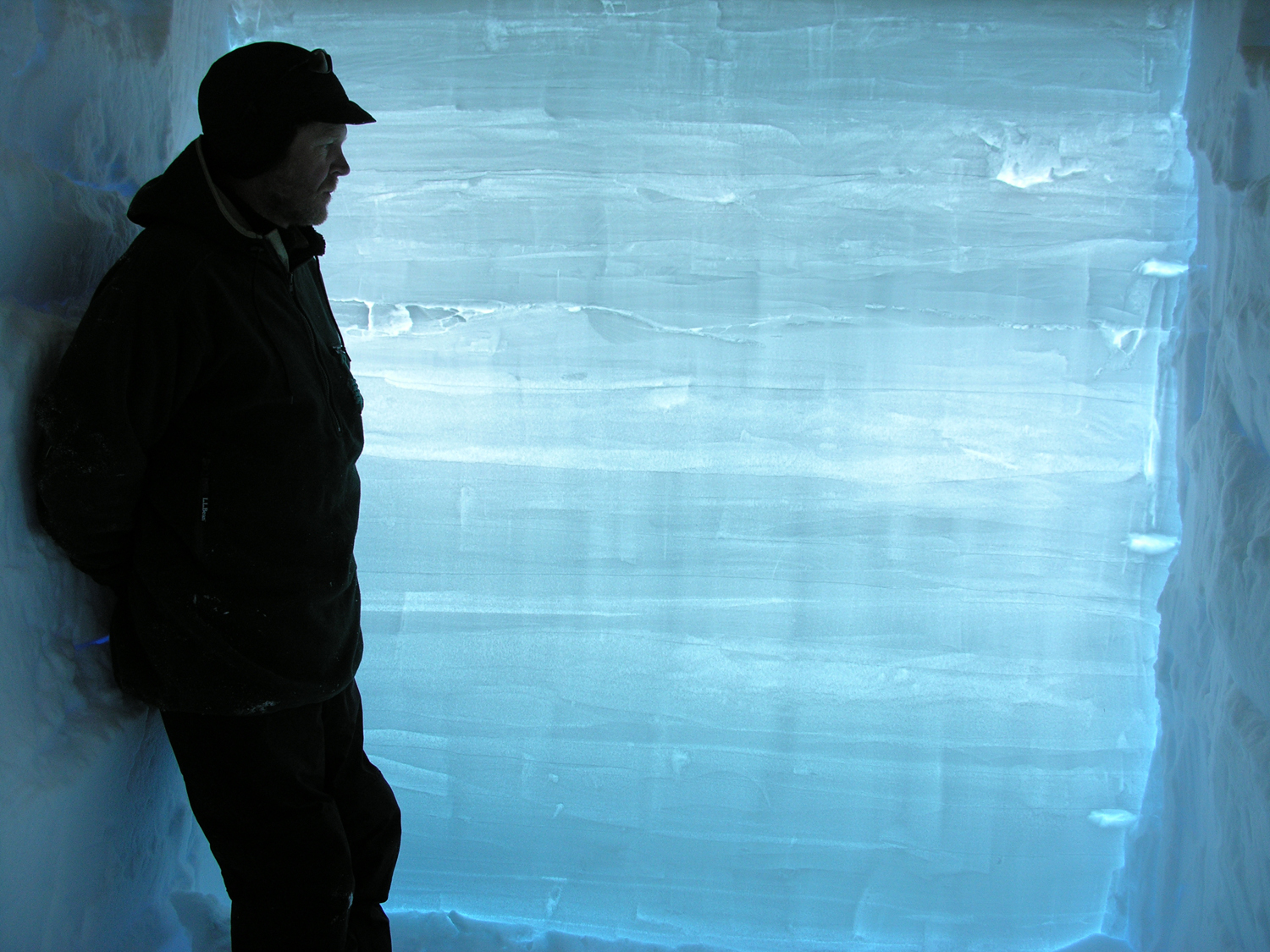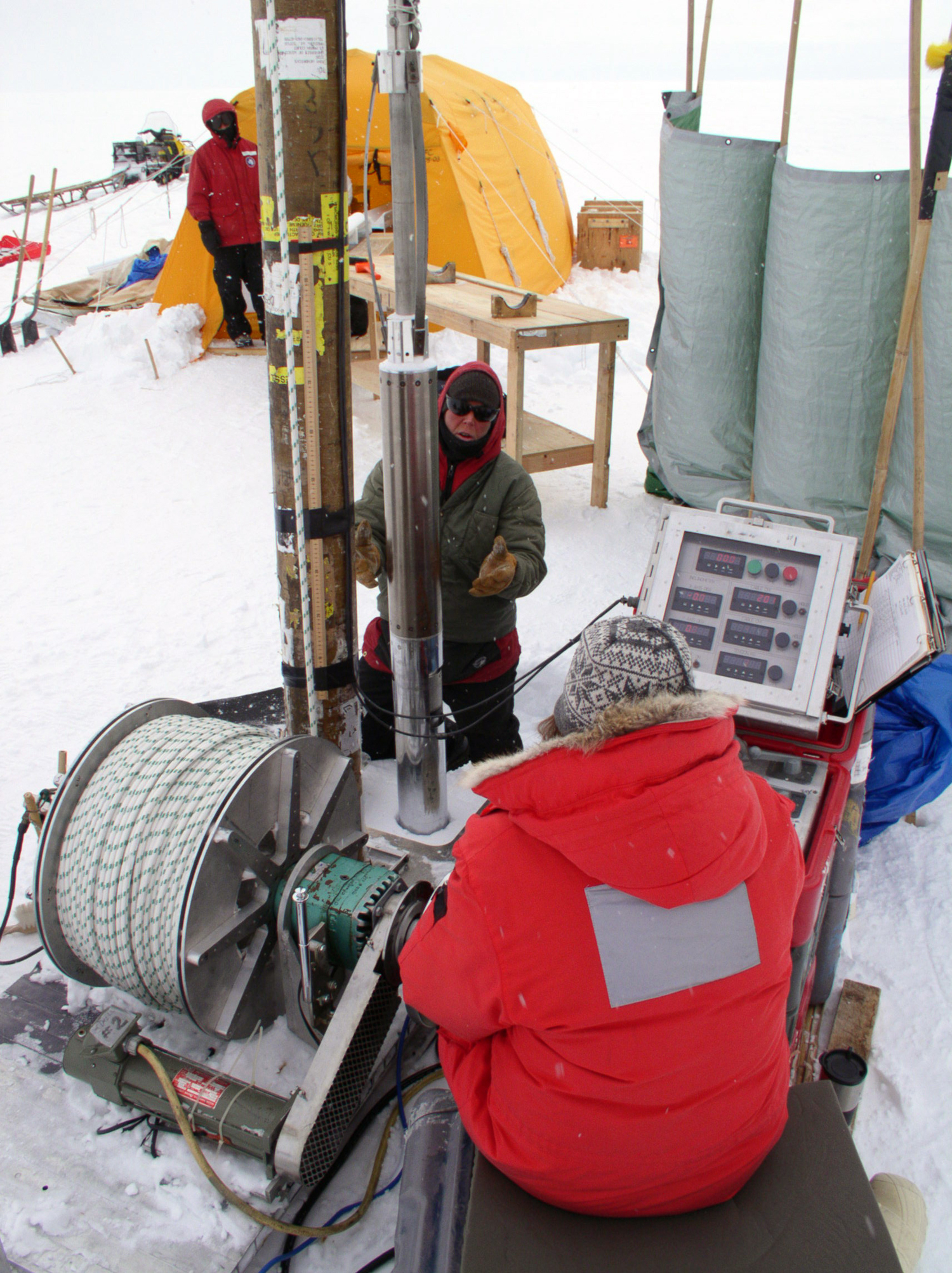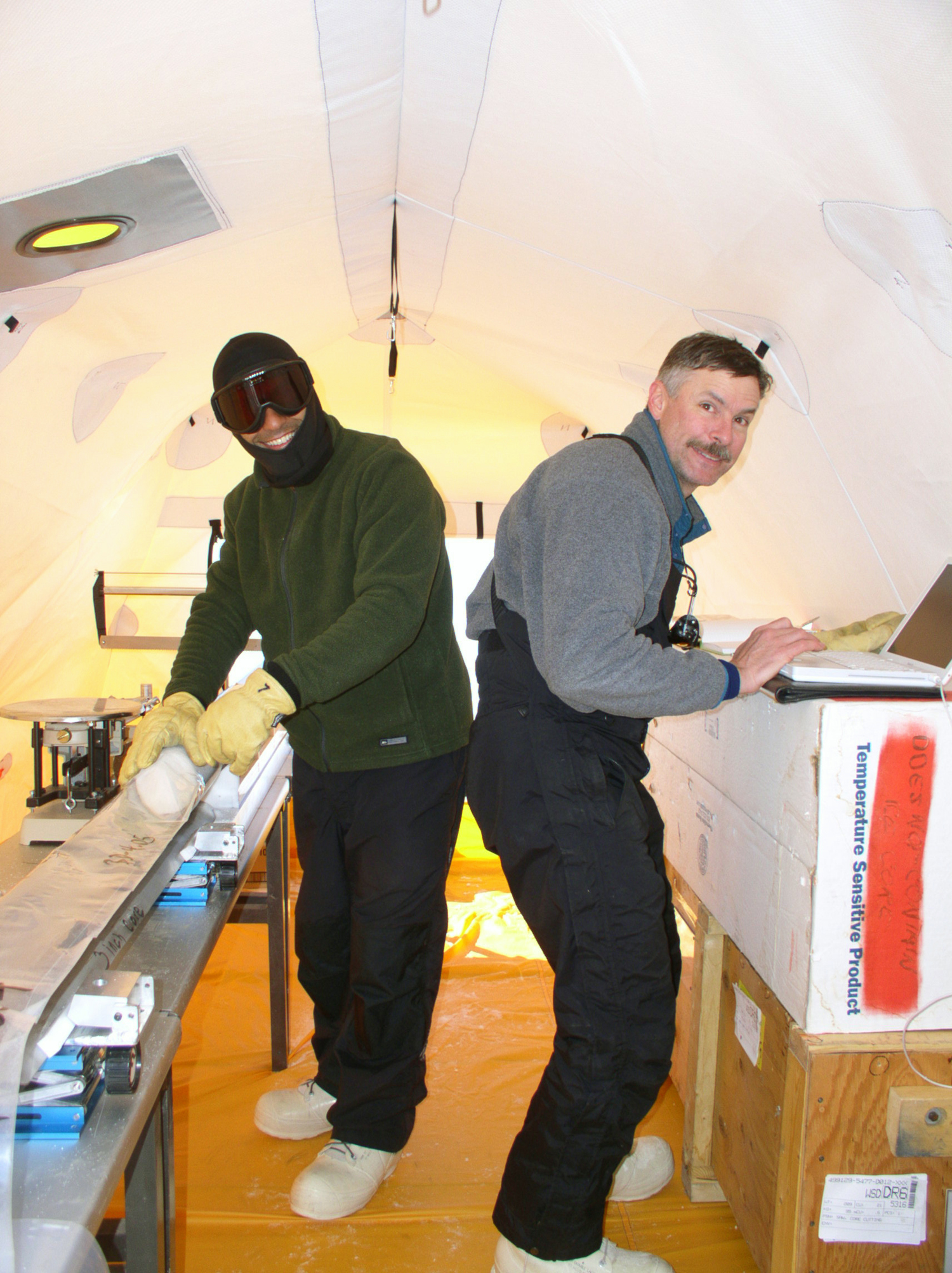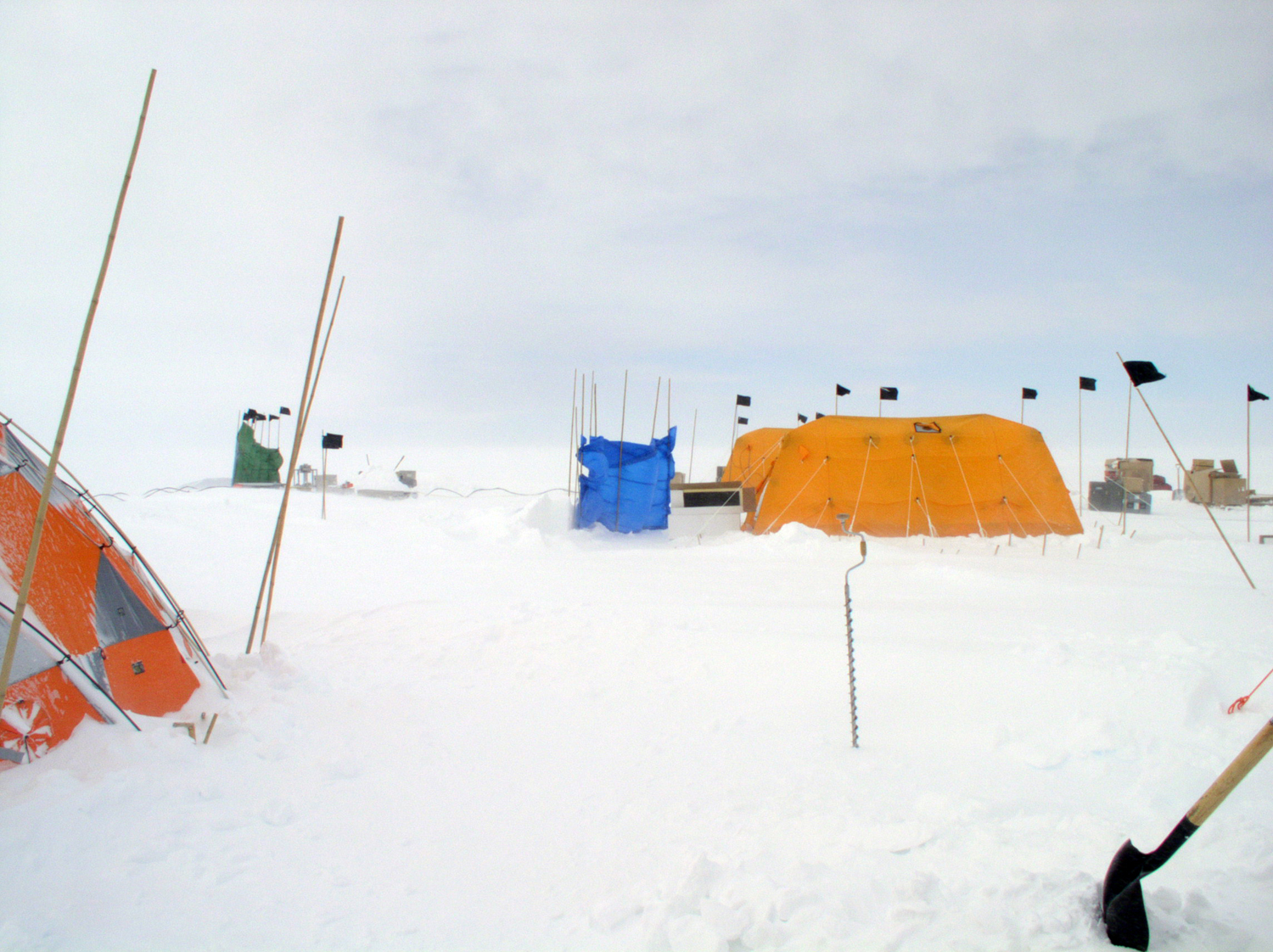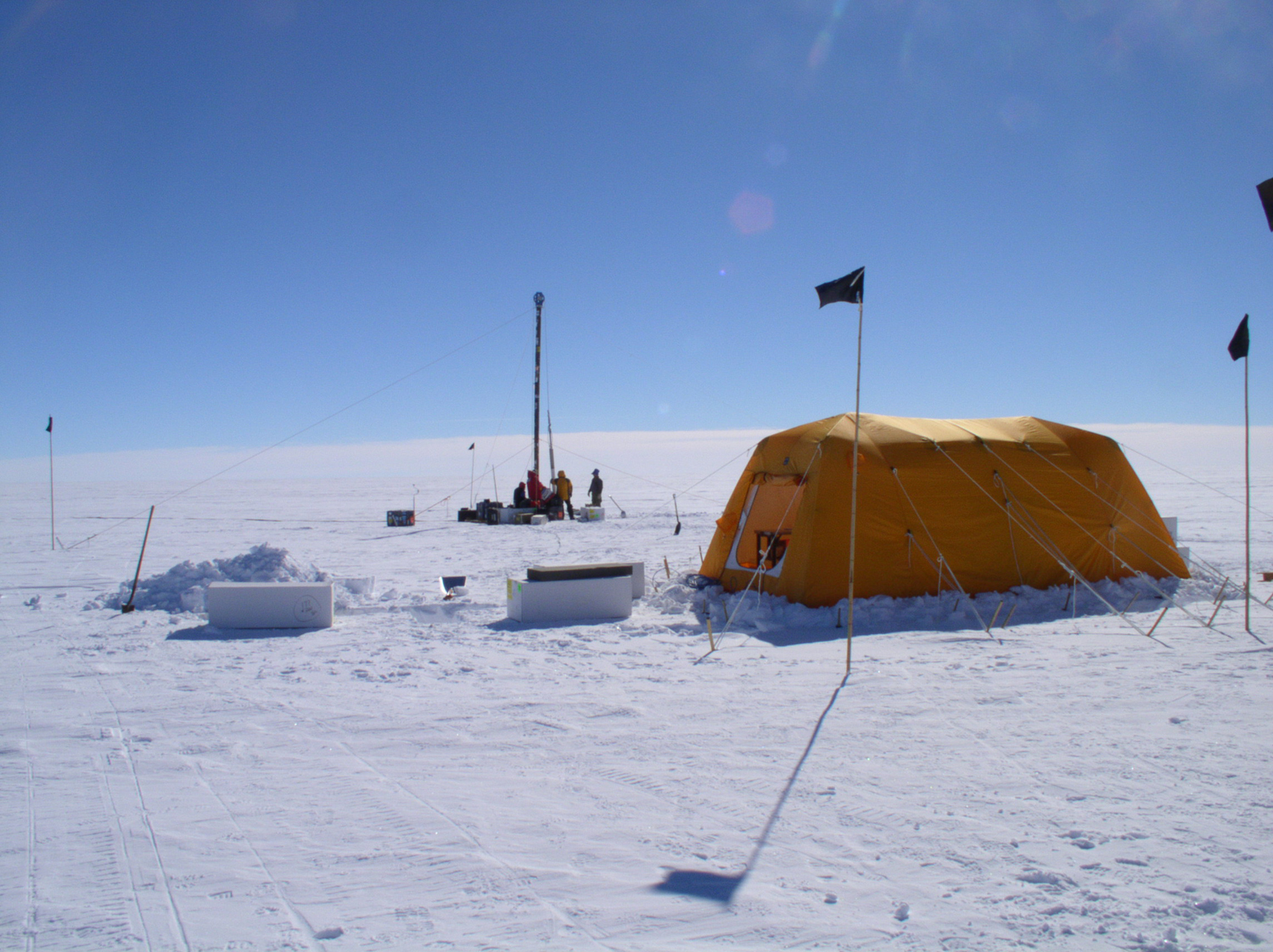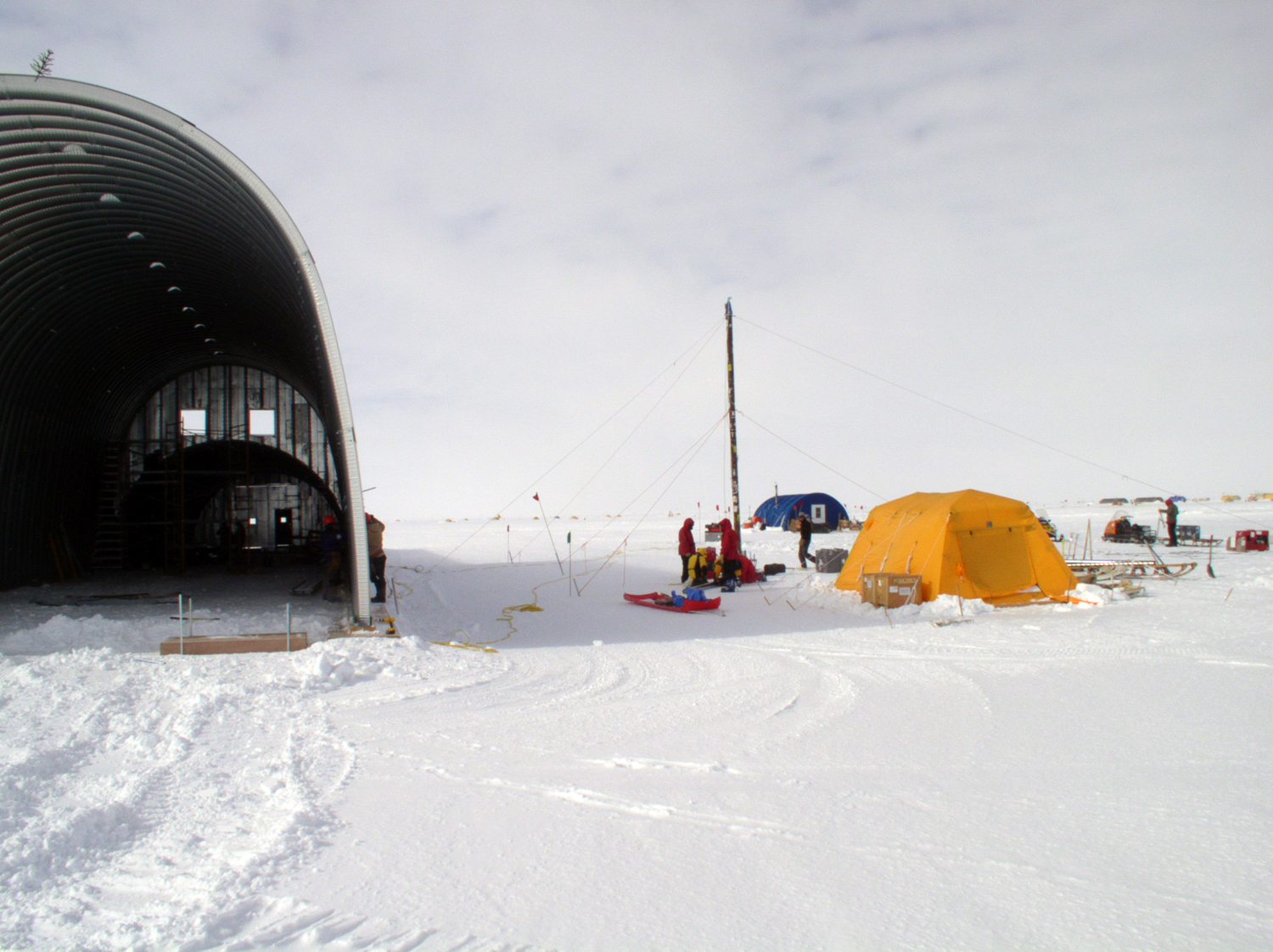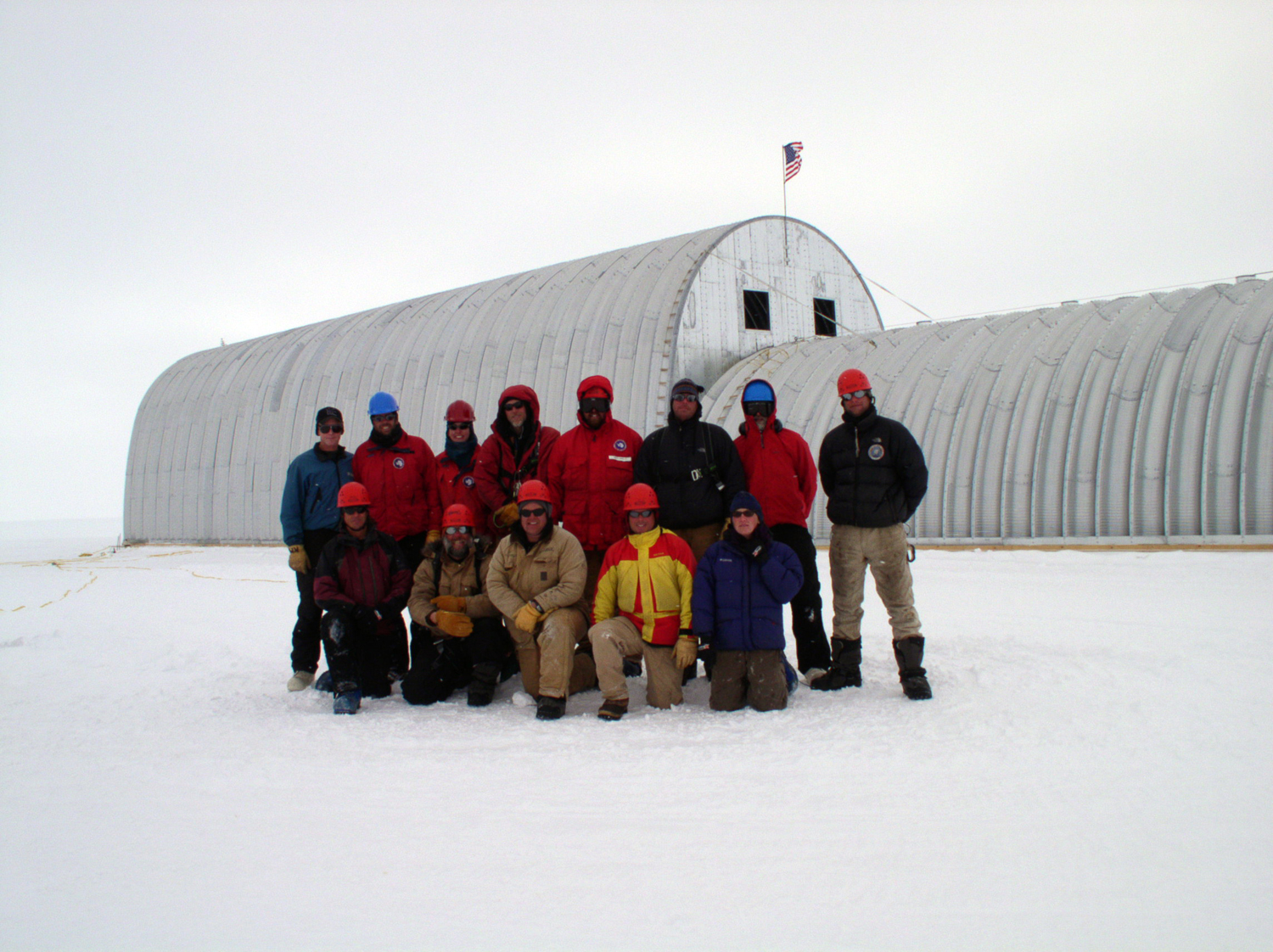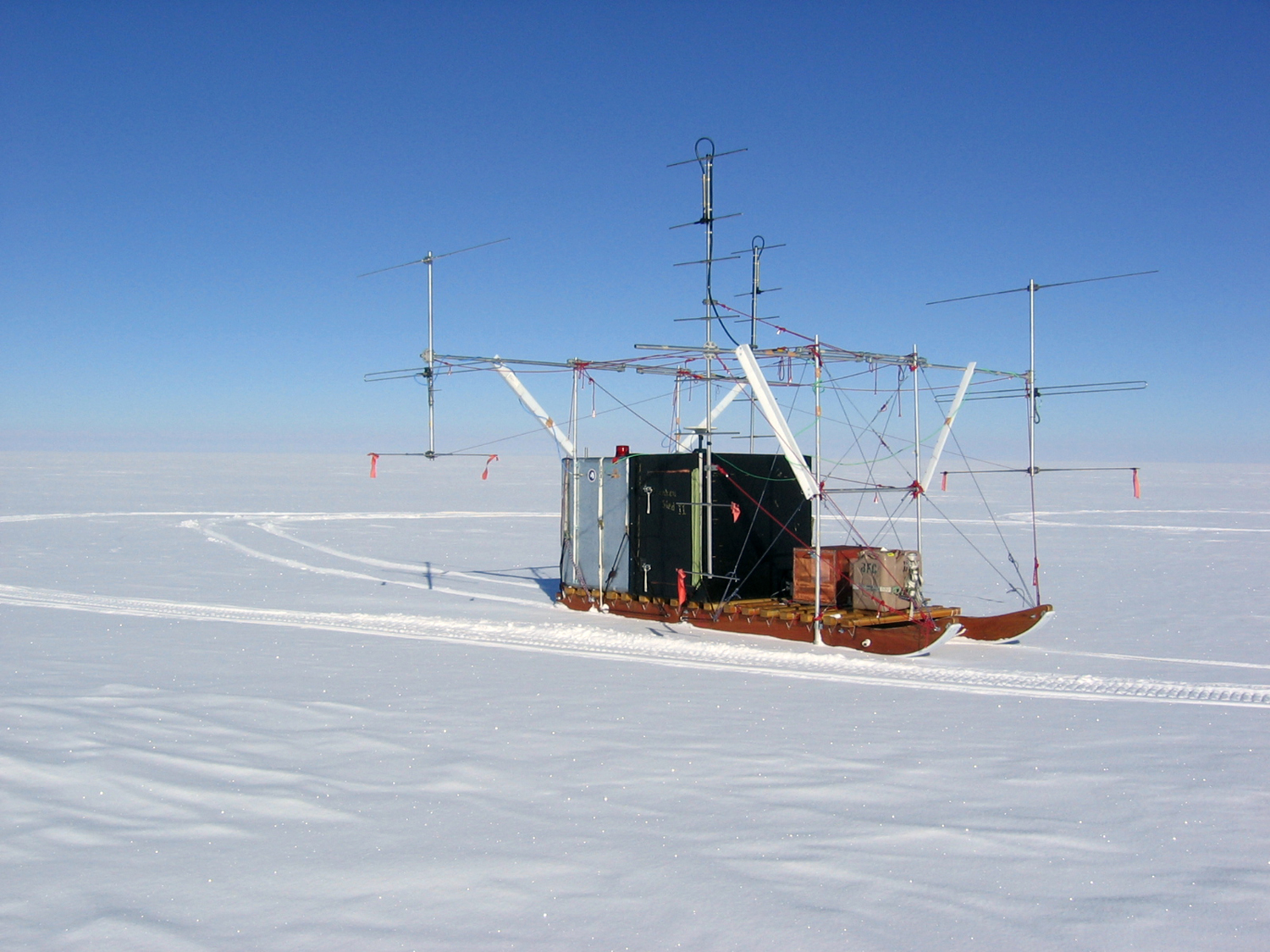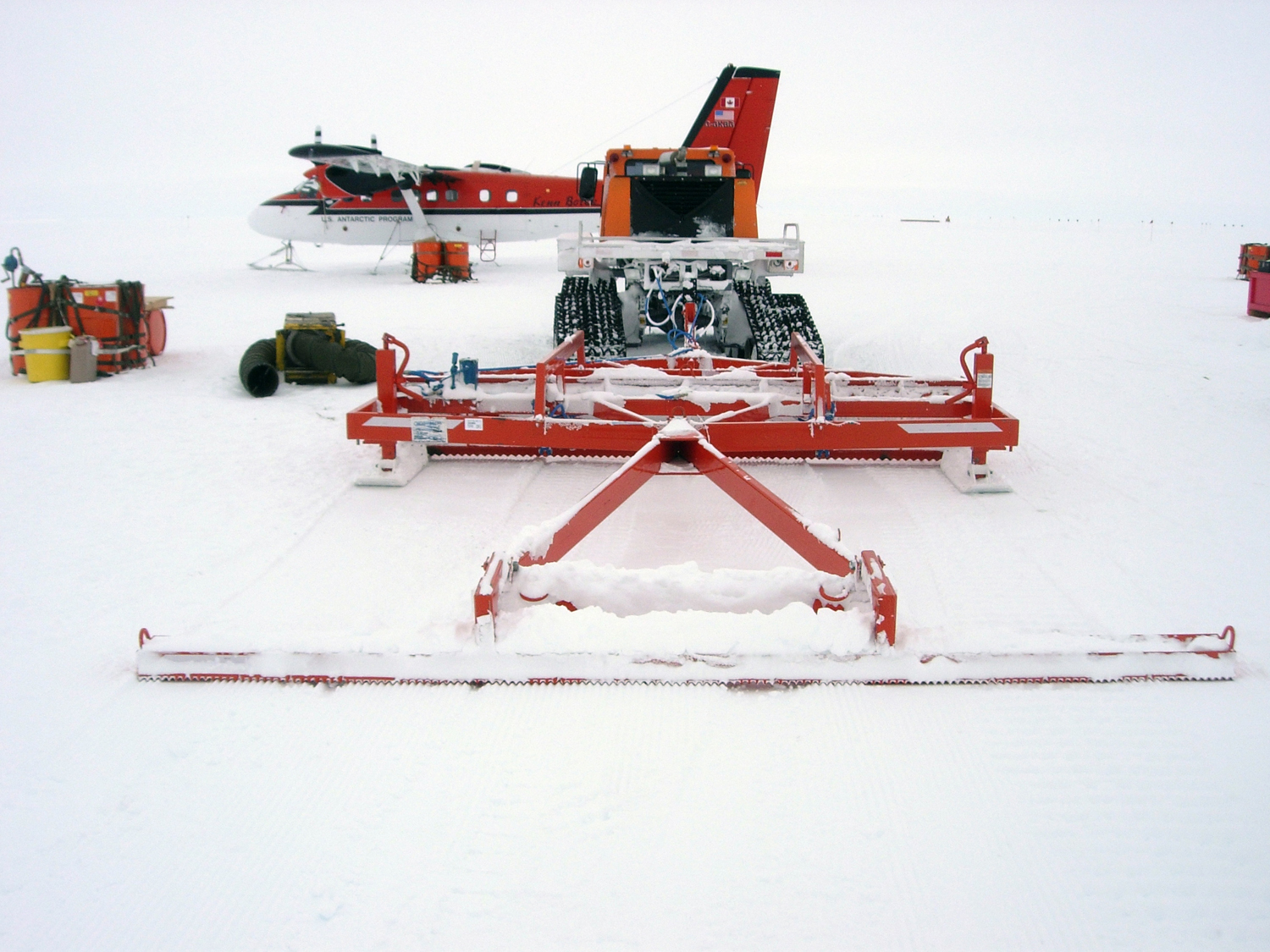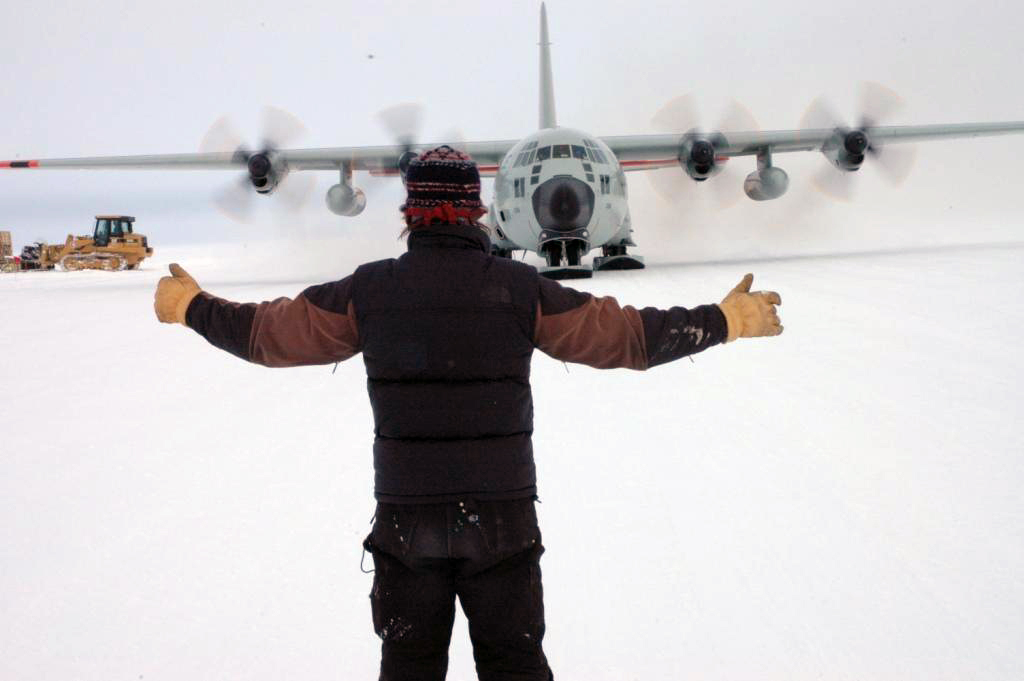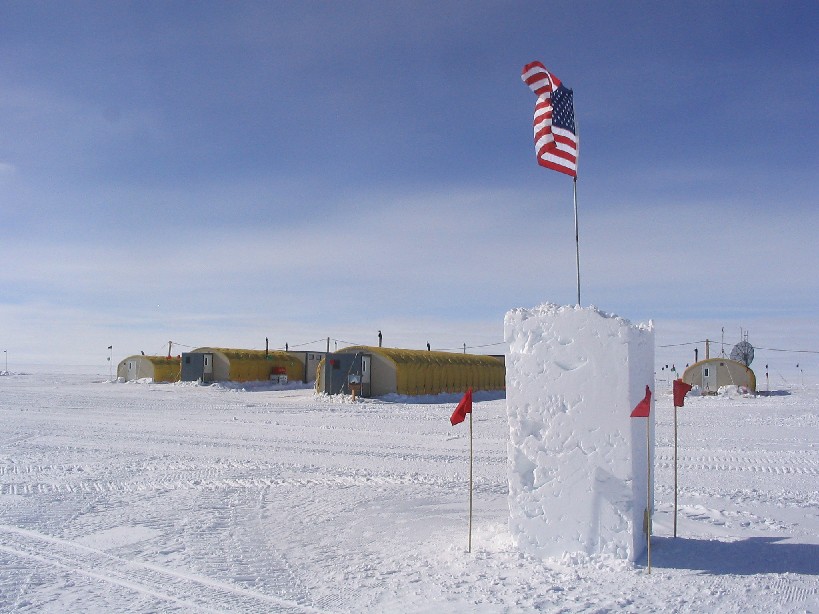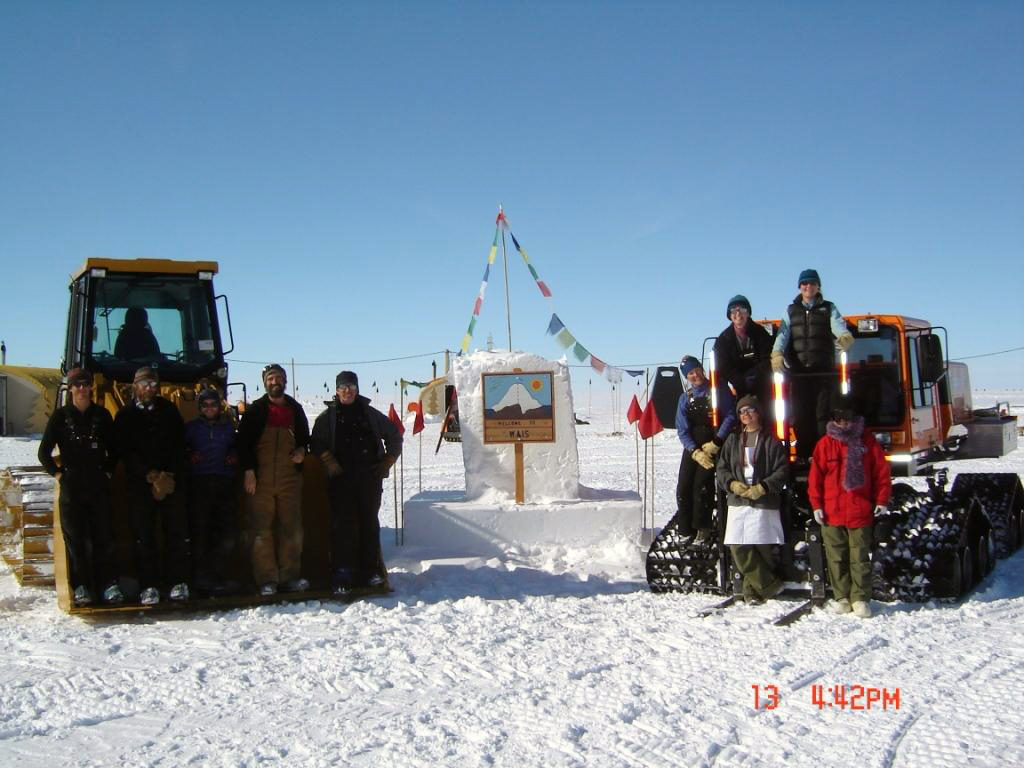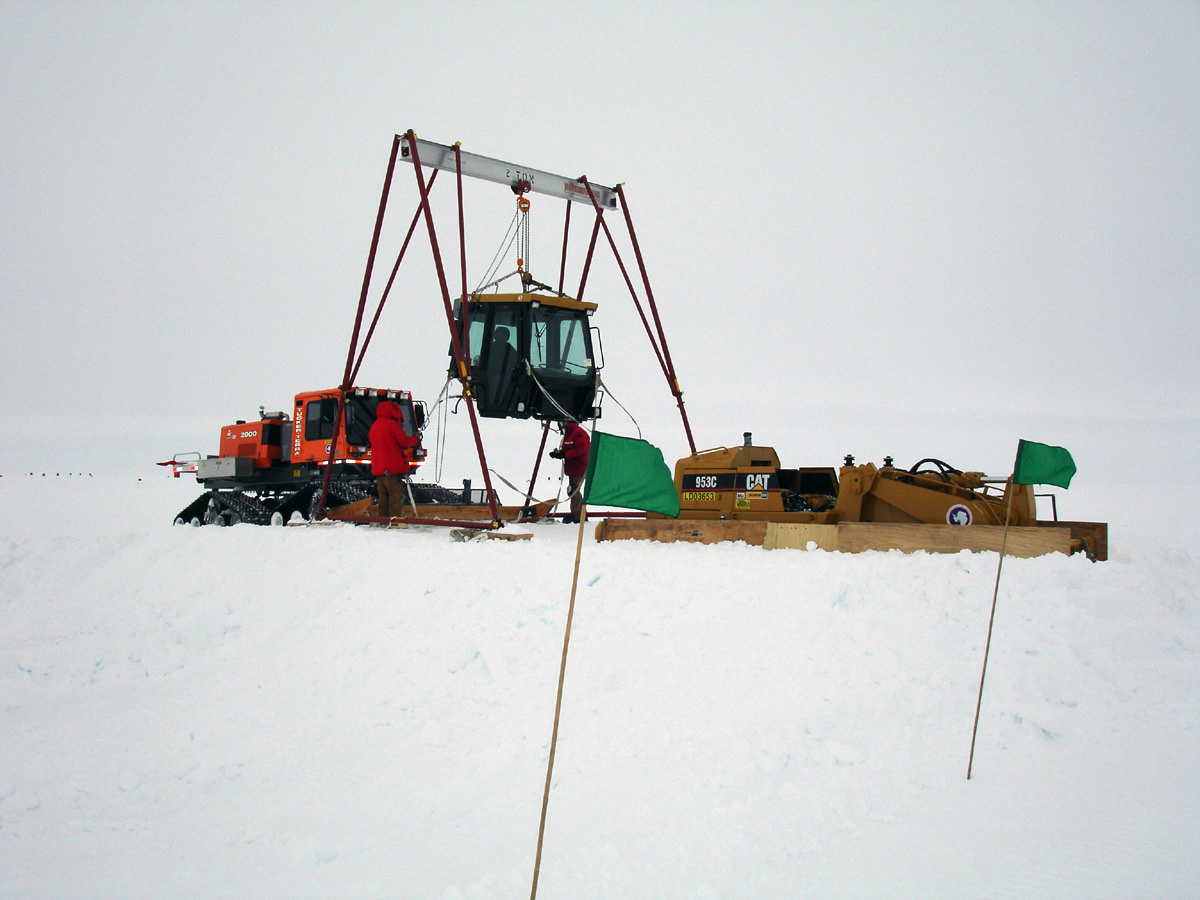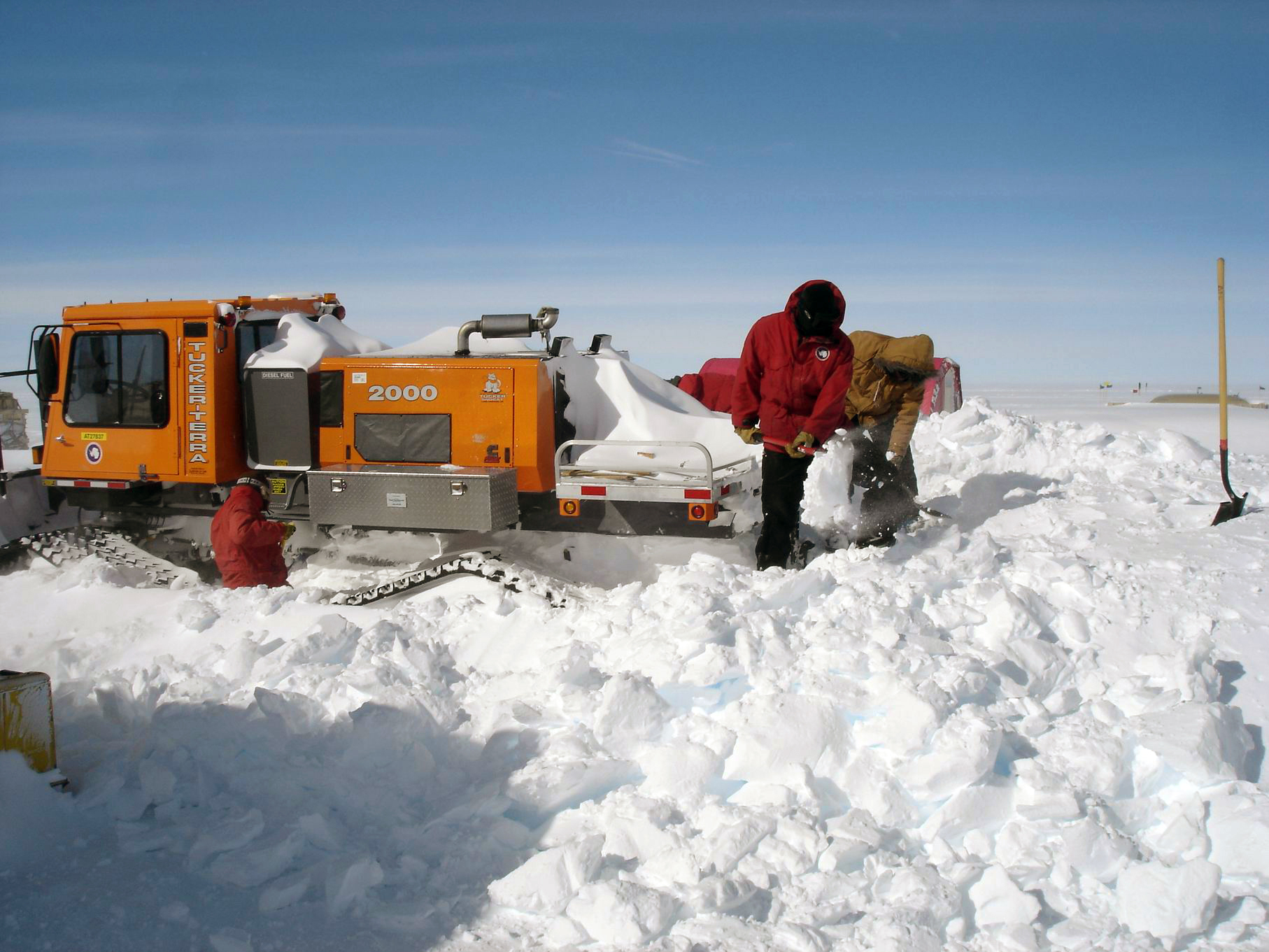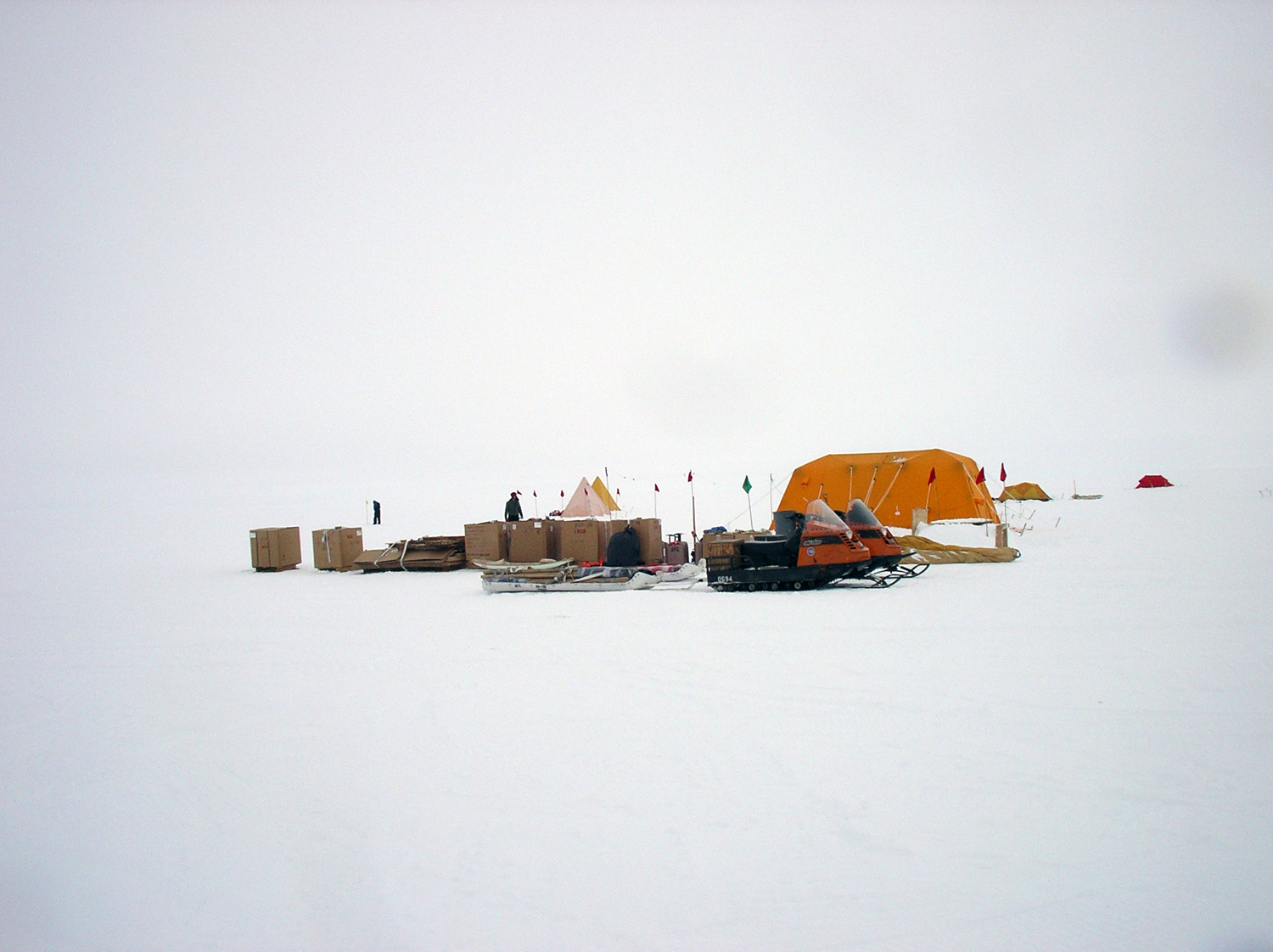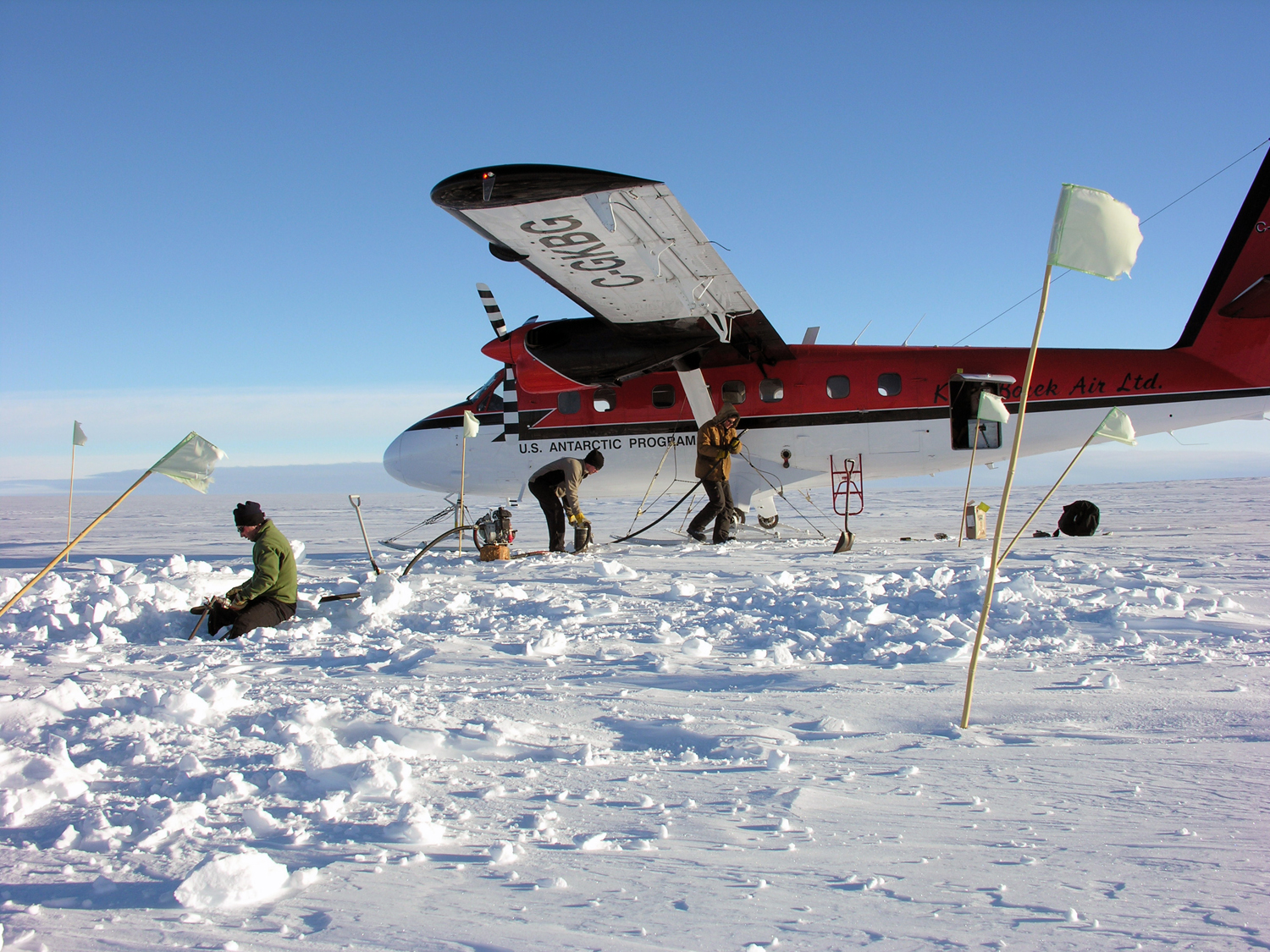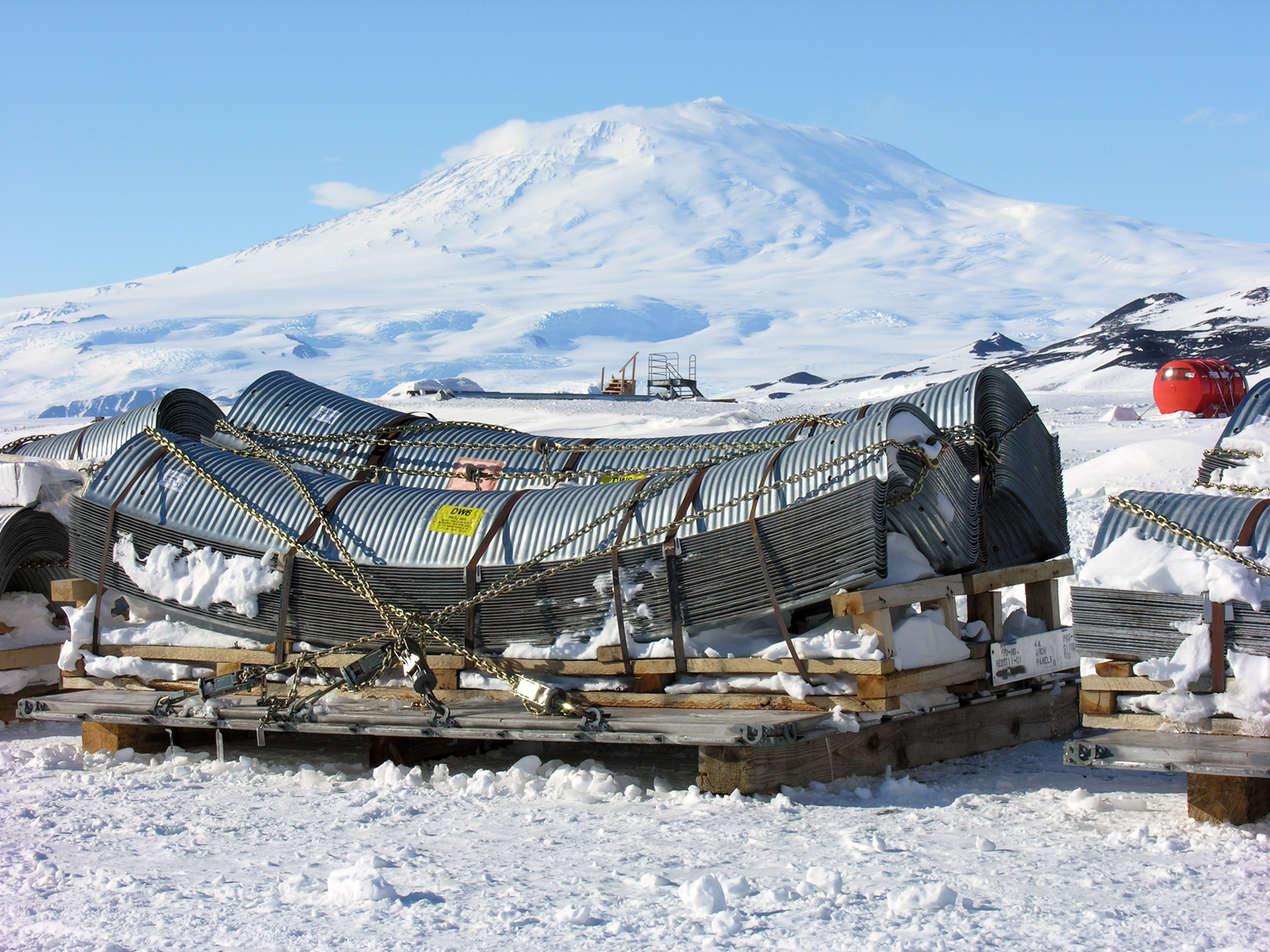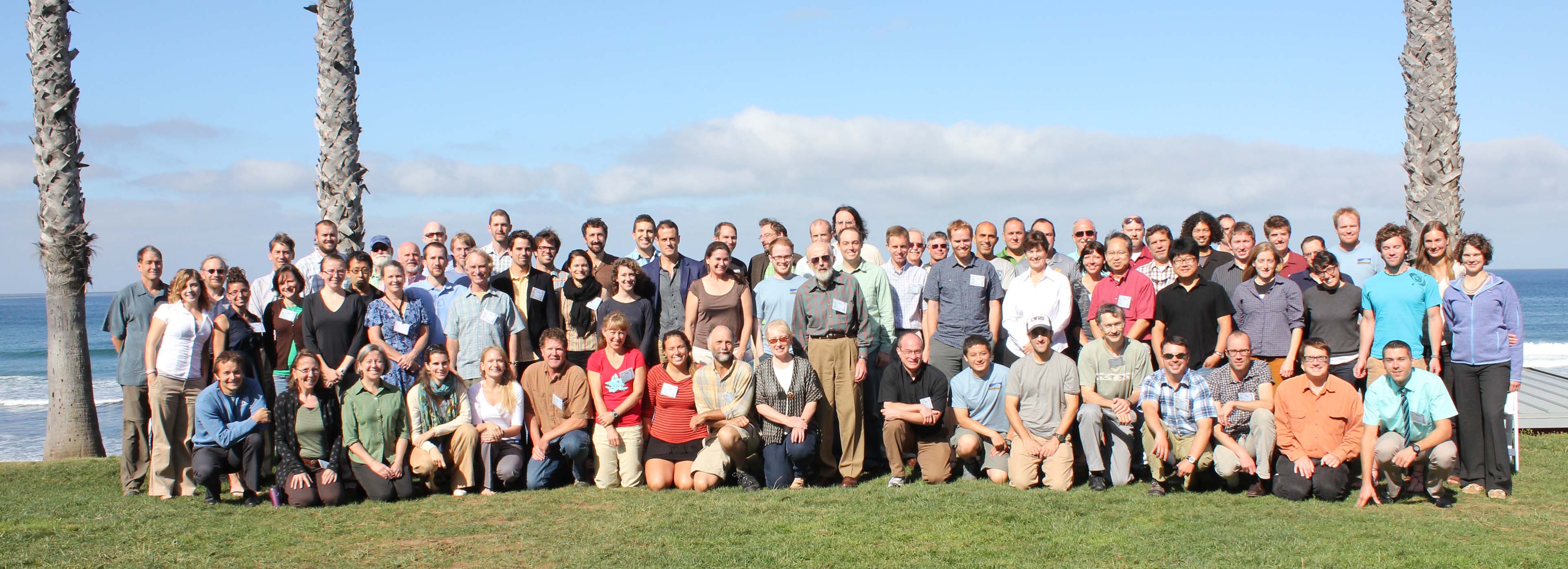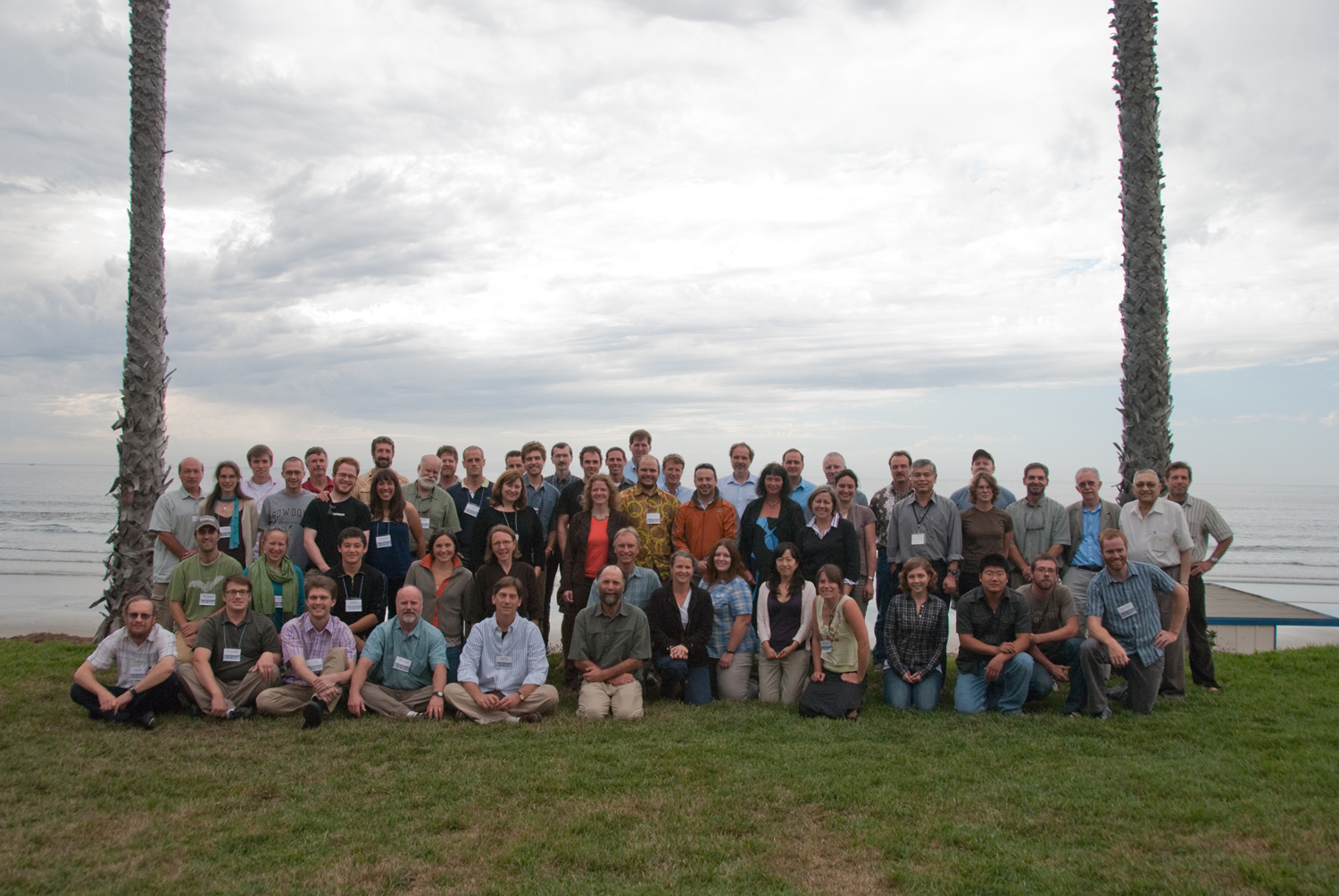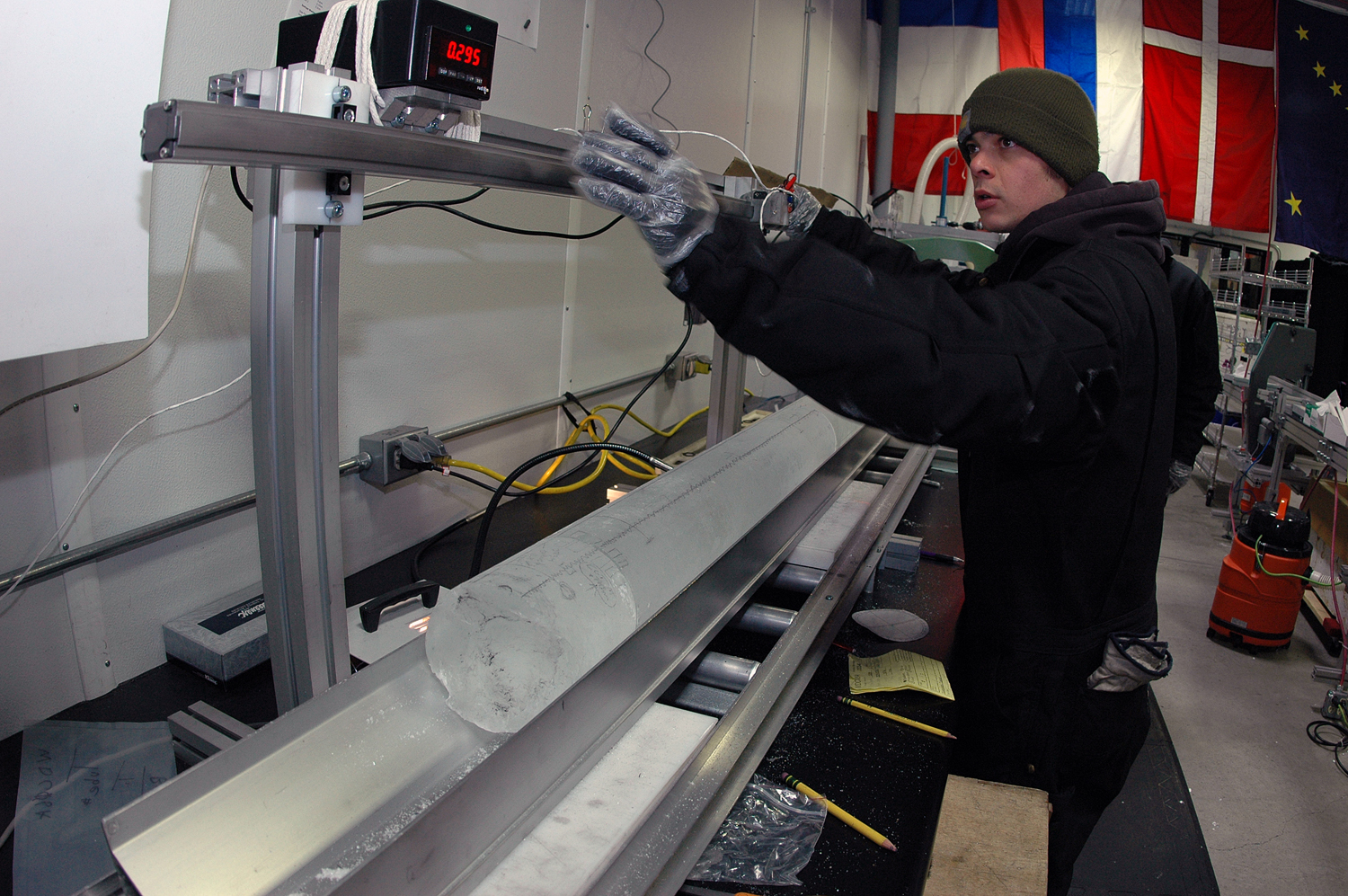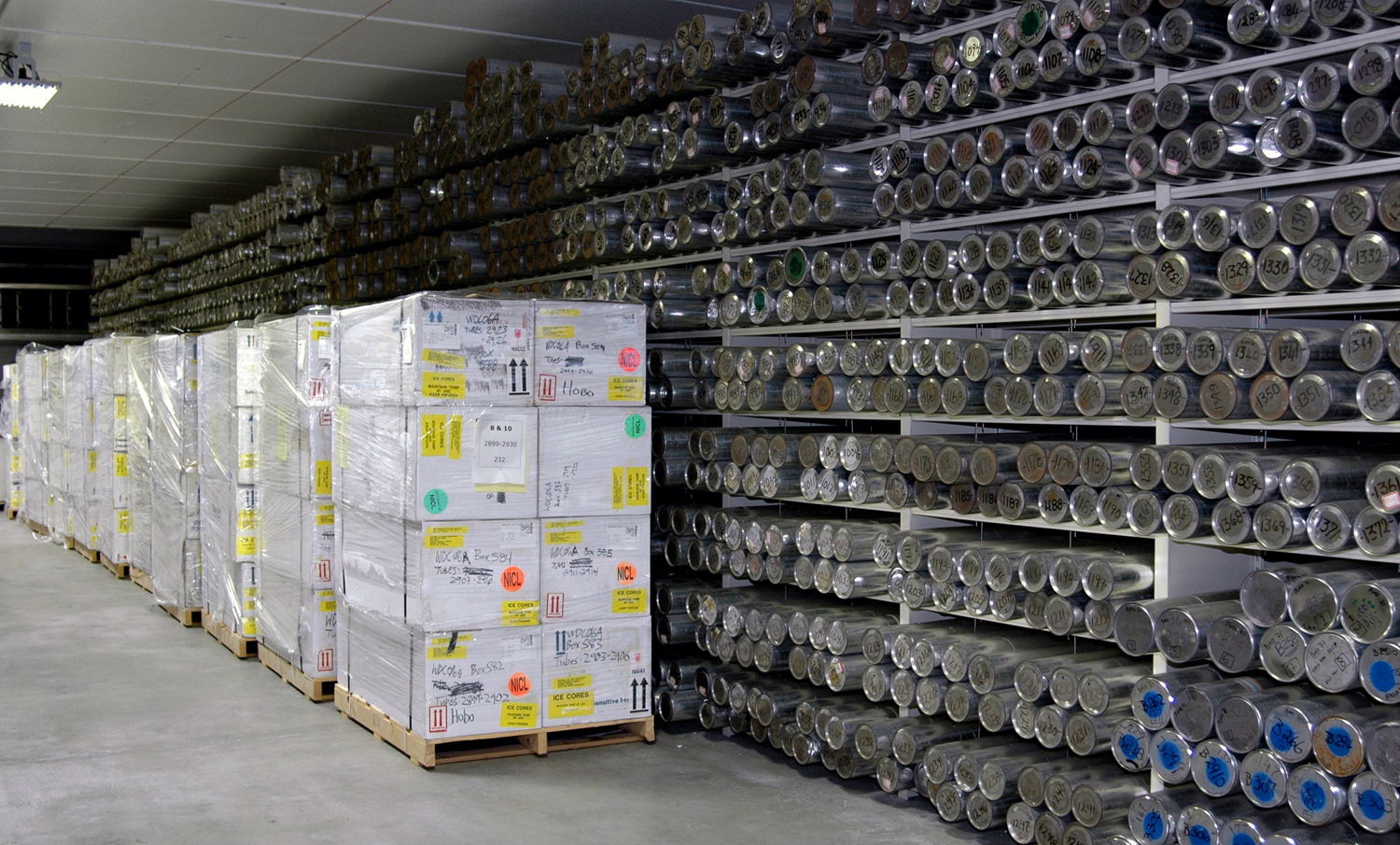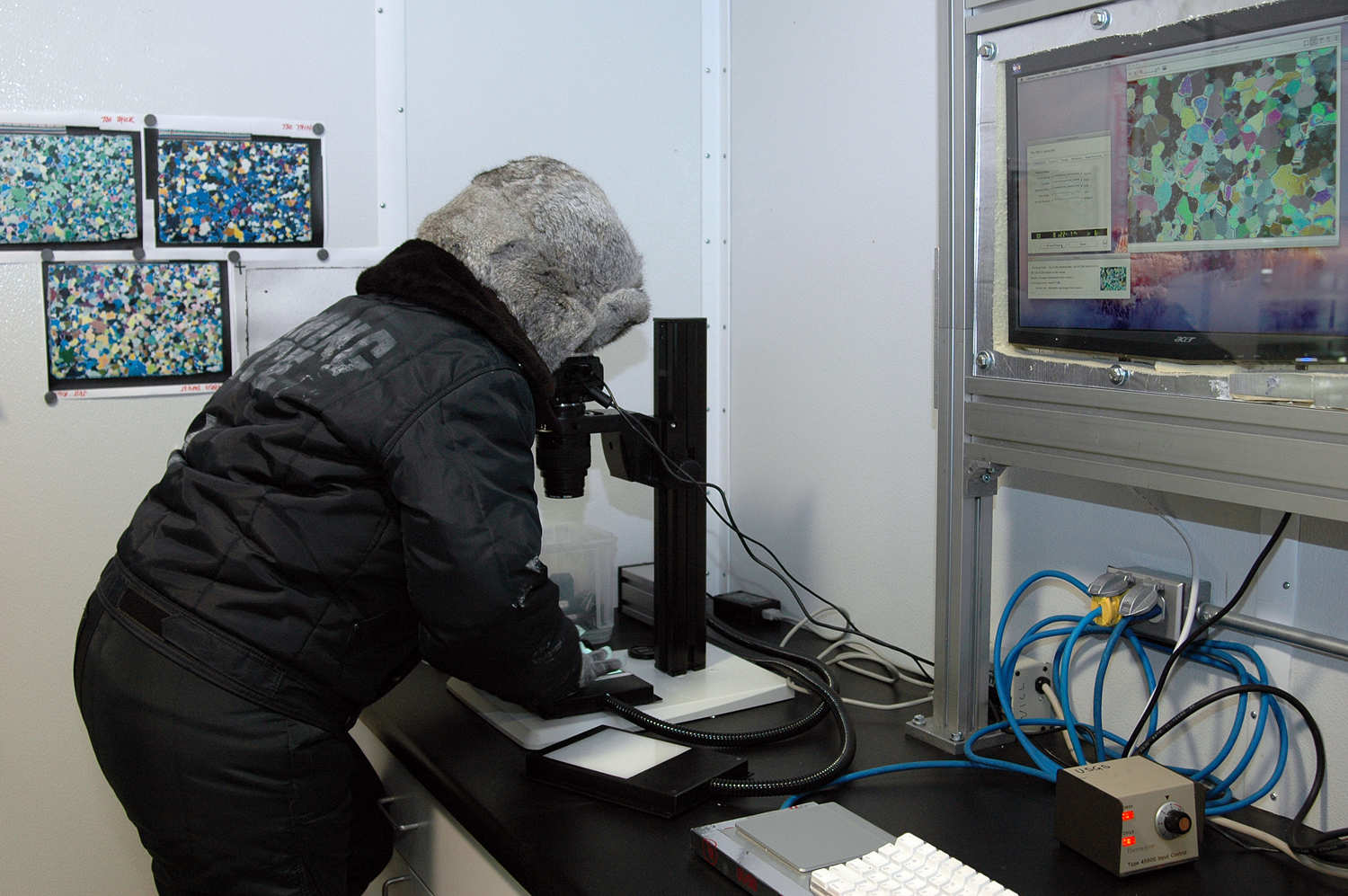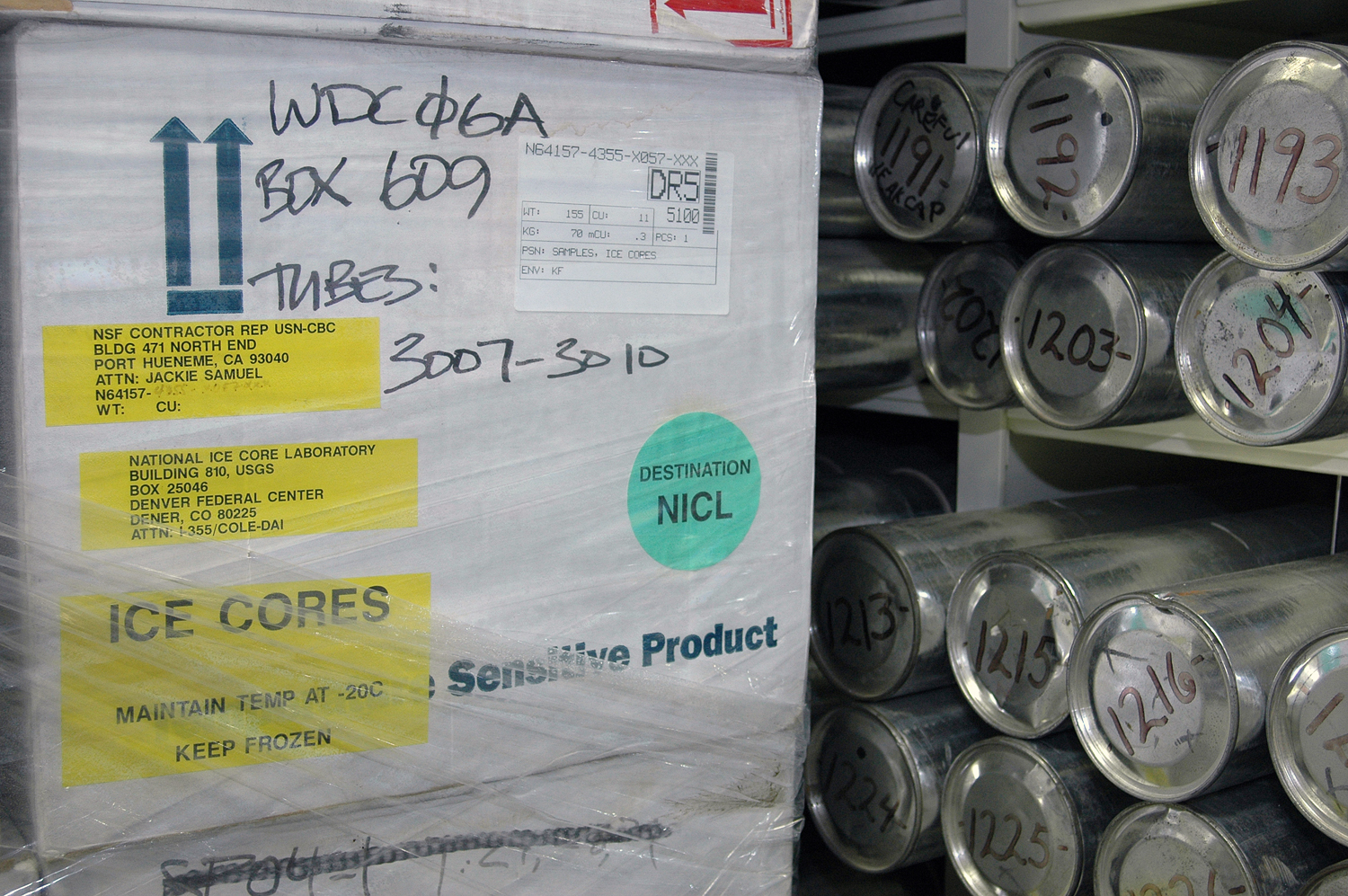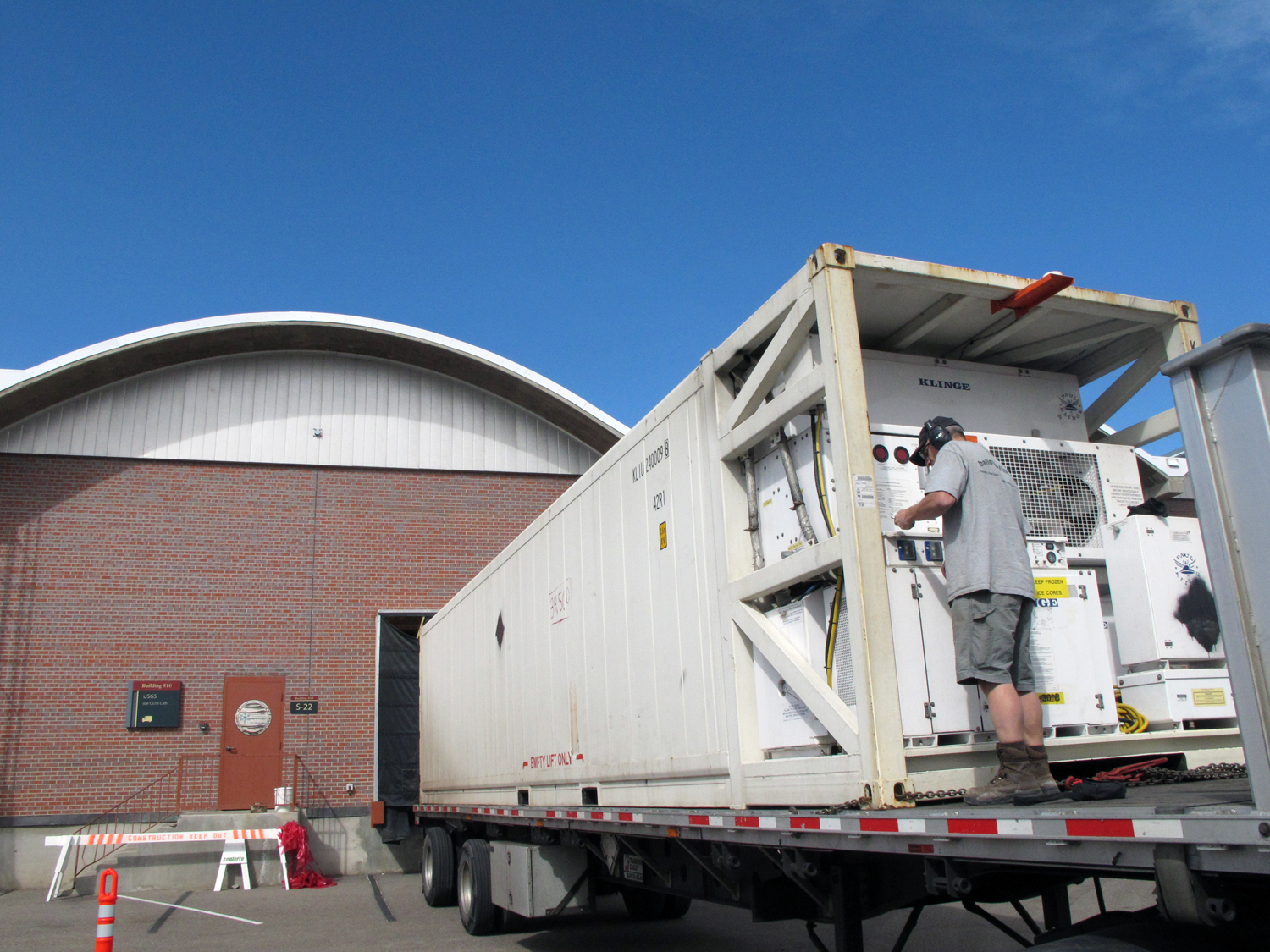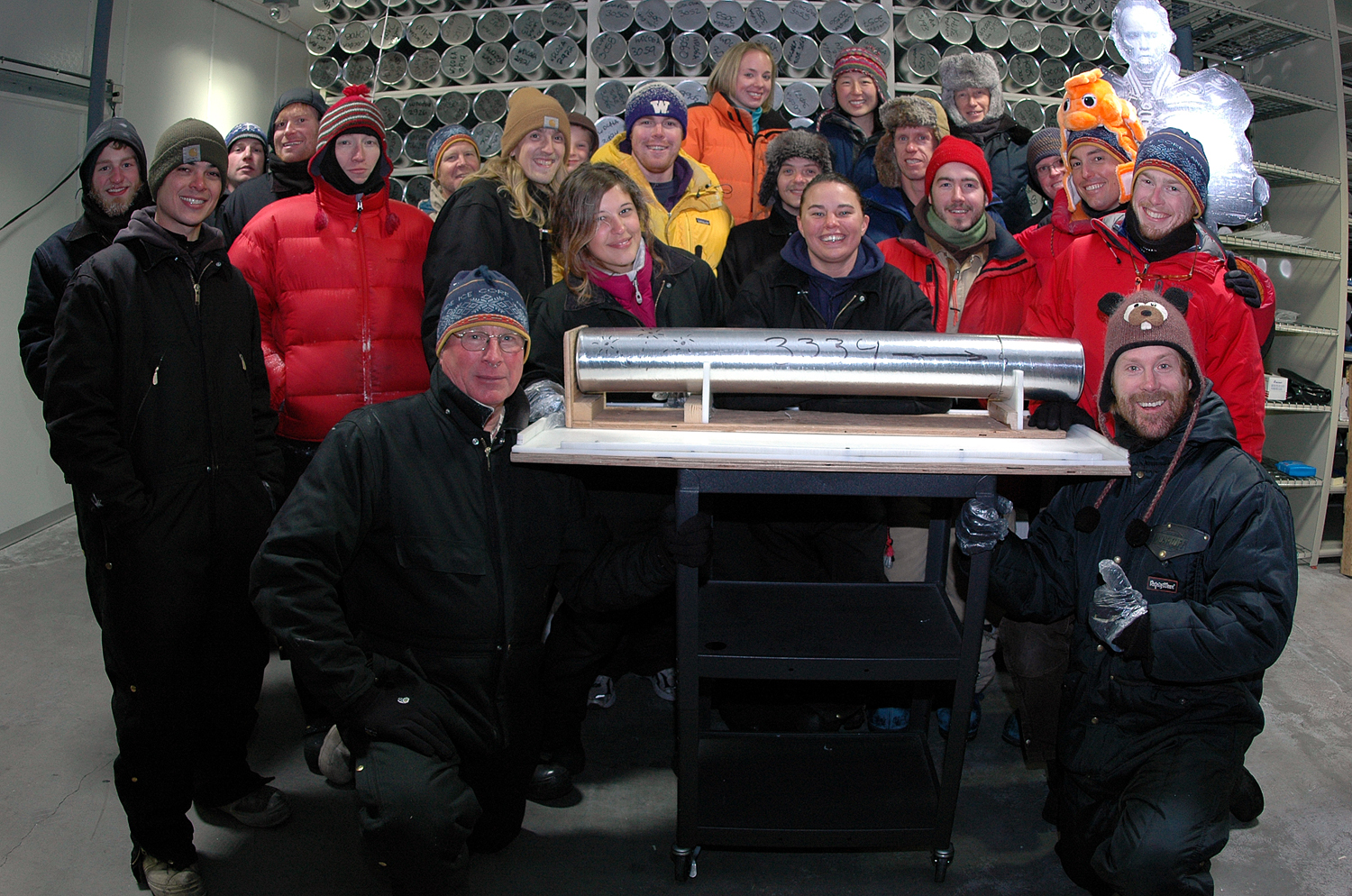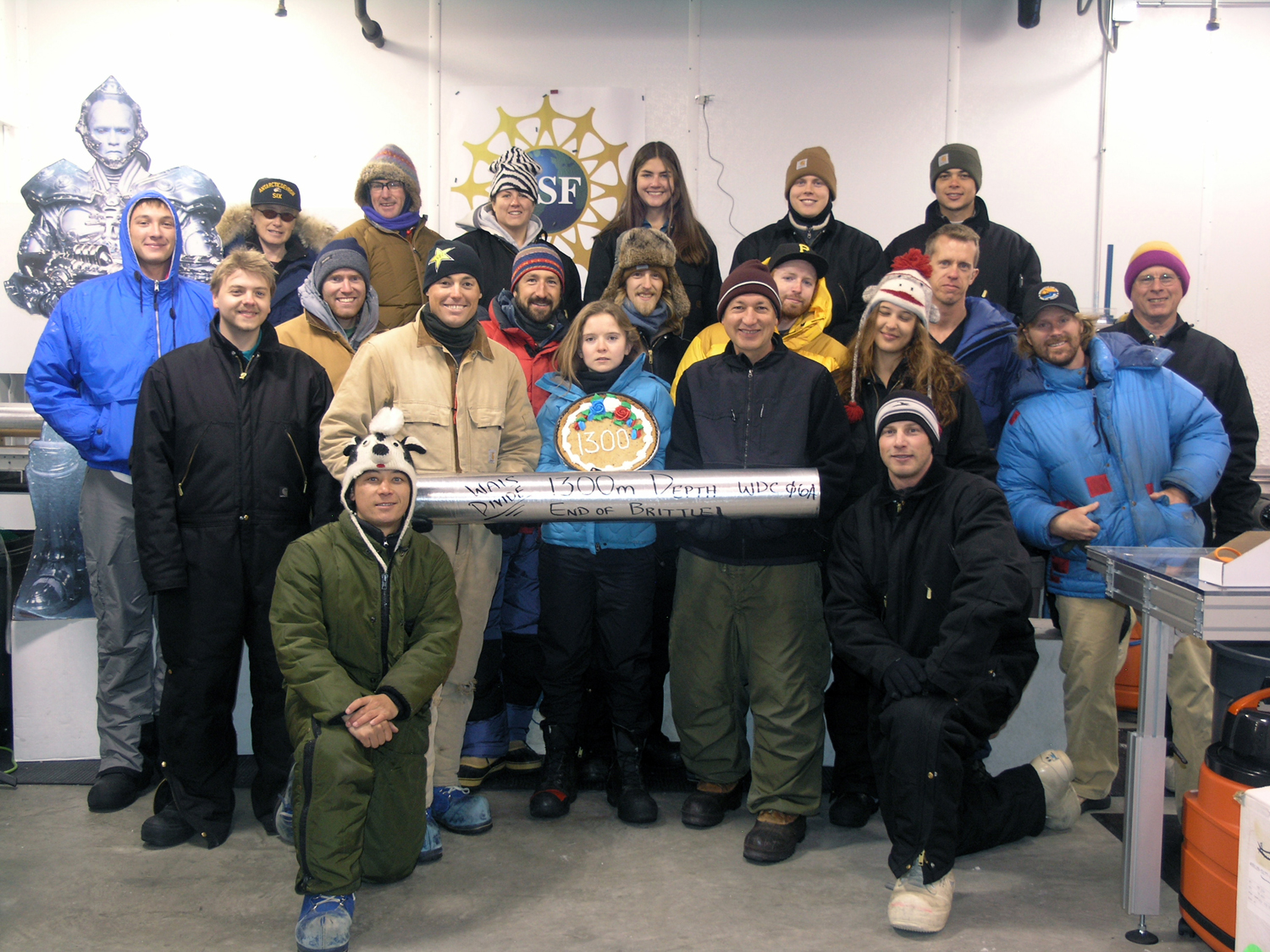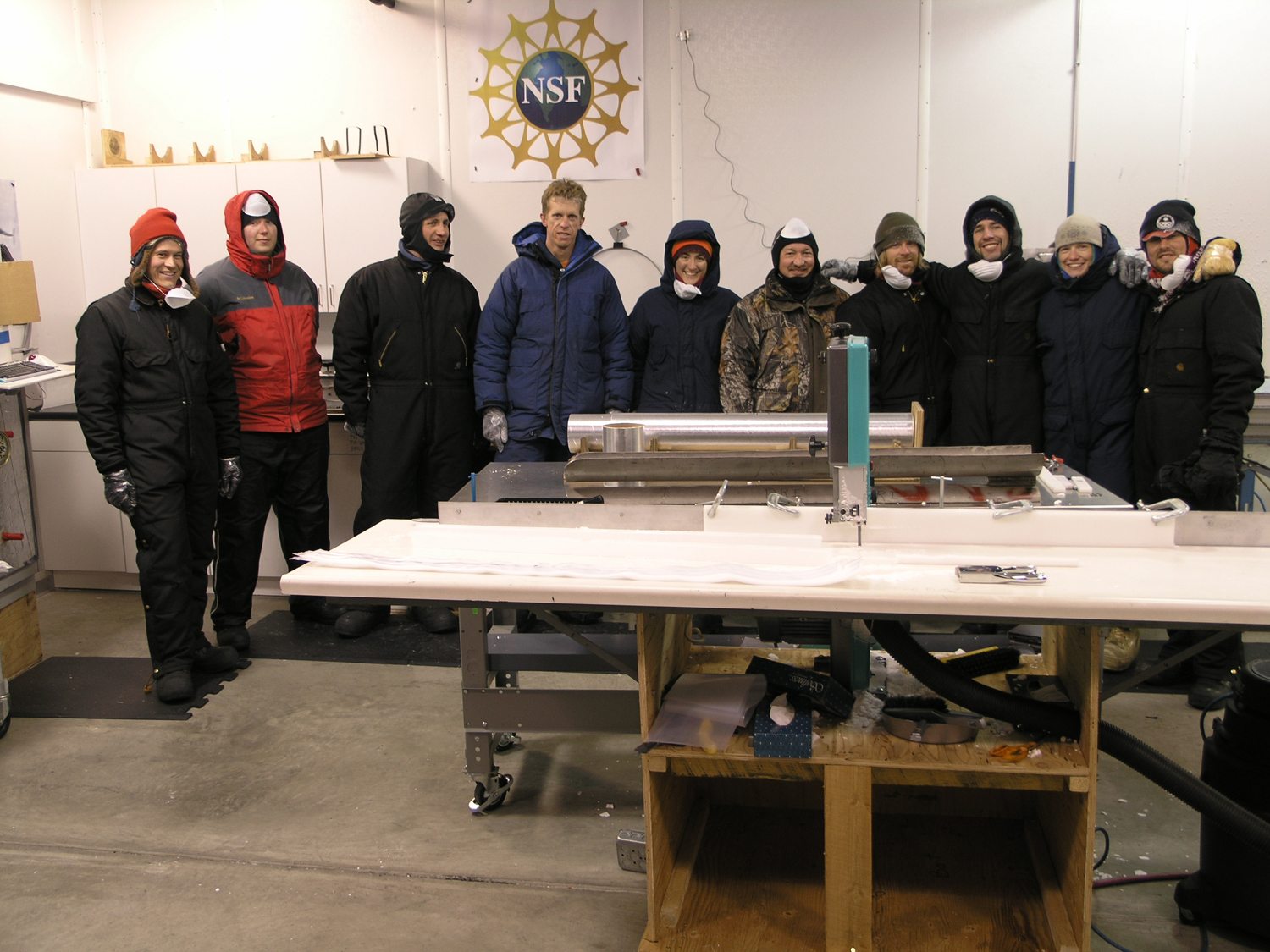Gallery
Photo Gallery
Please familiarize yourself with the Photo Usage Policy. Click on the images to download their high-resolution versions.
2015-2016 Field Season
2014-2015 Field Season
2013-2014 Field Season
No photos – The partial U.S. government shutdown forced significant changes to the U.S. Antarctic Program's operations for the 2013-2014 field season. The WAIS Divide field camp was not opened and the scientific field operations that were scheduled were postponed to the 2014-2015 field season.
2012-2013 Field Season
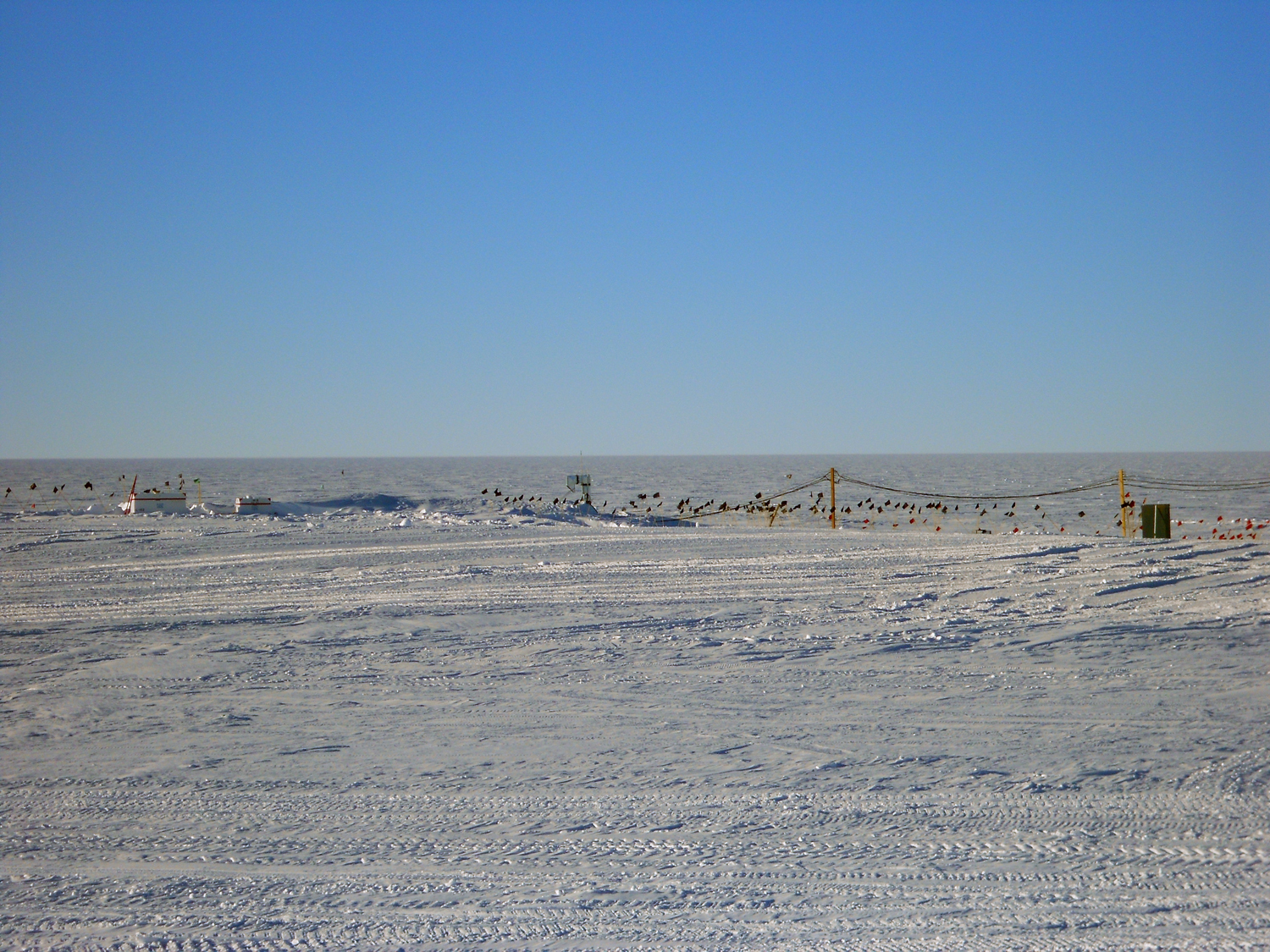
View of the (buried) arch at the end of the 2012-2013 field season. The power poles on the right-hand side of the photo lead back towards camp. The ventilation conduit in the center of the photo marks the start of the drilling arch, which then runs 100-feet to the left. The core handling arch runs to the right of the conduit for 84-feet. Photo: Don Voigt.
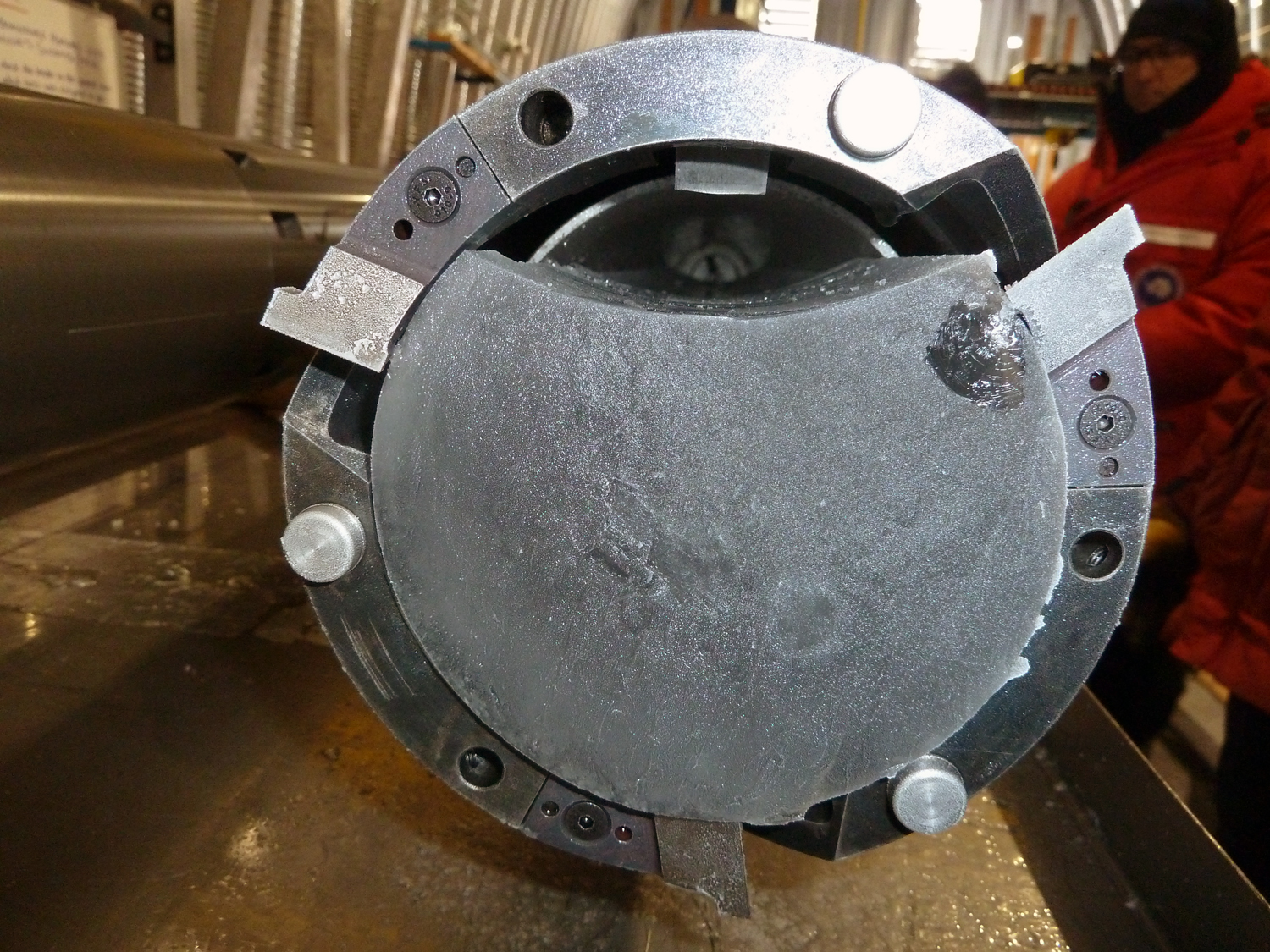
On Monday, 17 December 2012 at 2:10 PM the first-ever replicate ice core taken from the high-side of the borehole was successfully drilled from 3001 meters depth in the WAIS Divide Ice Core borehole in West Antarctica. The first replicate core was ~80% of a full round core, but as the drilling continued on the new path 100% round cores were obtained. Photo: Jay Johnson/IDDO.
2011-2012 Field Season
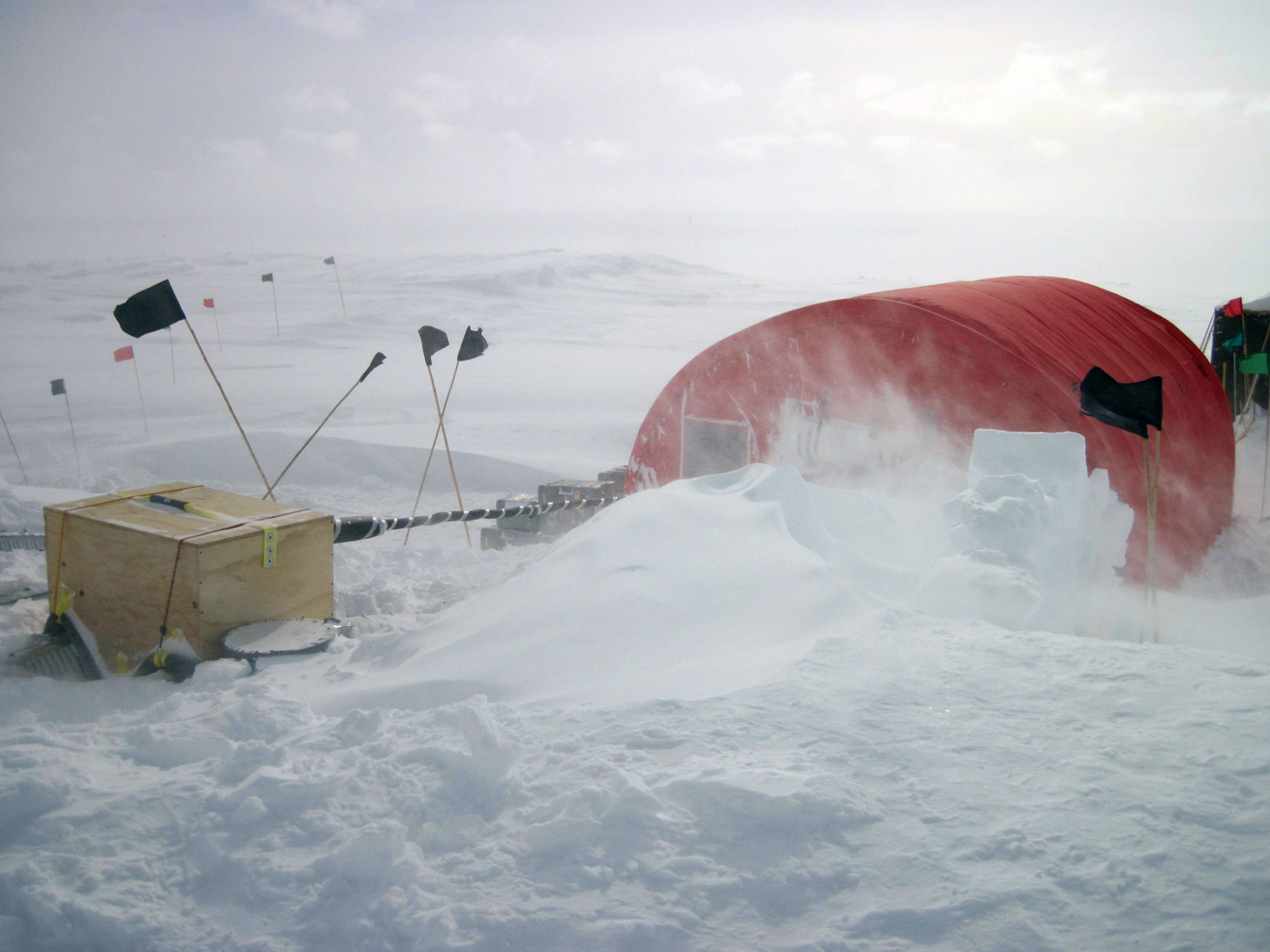
Logging shelter located adjacent to the drilling arch. The logging cable exits the shelter, passes over a sheave wheel (inside a protective box), before dropping into the arch. With the shelter, logging operations were able to continue unimpeded through the poor weather that was prevalent during the 2011-12 field season. Photo: Gary Clow.
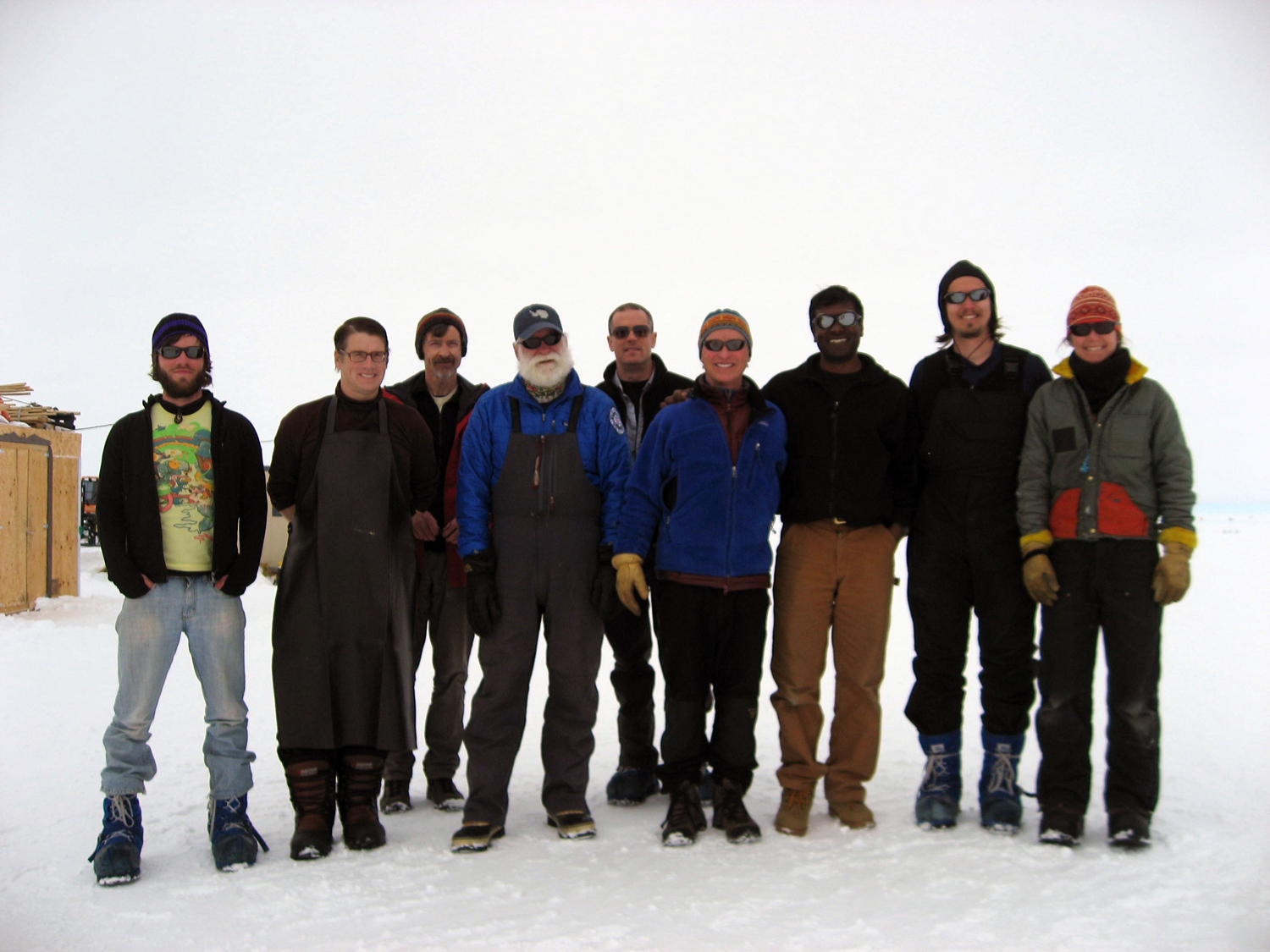
Group photo of the 2011-12 borehole loggers. Shown, left to right, are: Dan Kluskiewicz (U. Washington), Jeff Severinghaus (Scripps Inst. Oceanography), Ed Waddington (U. Washington), Don Voigt (Penn State), Ryan Bay (UC-Berkeley), Gary Clow (USGS), Sridhar Anandakrishnan (Penn State), Leo Peters (Penn State), and Elizabeth Morton (IDDO). Photo: Gary Clow.
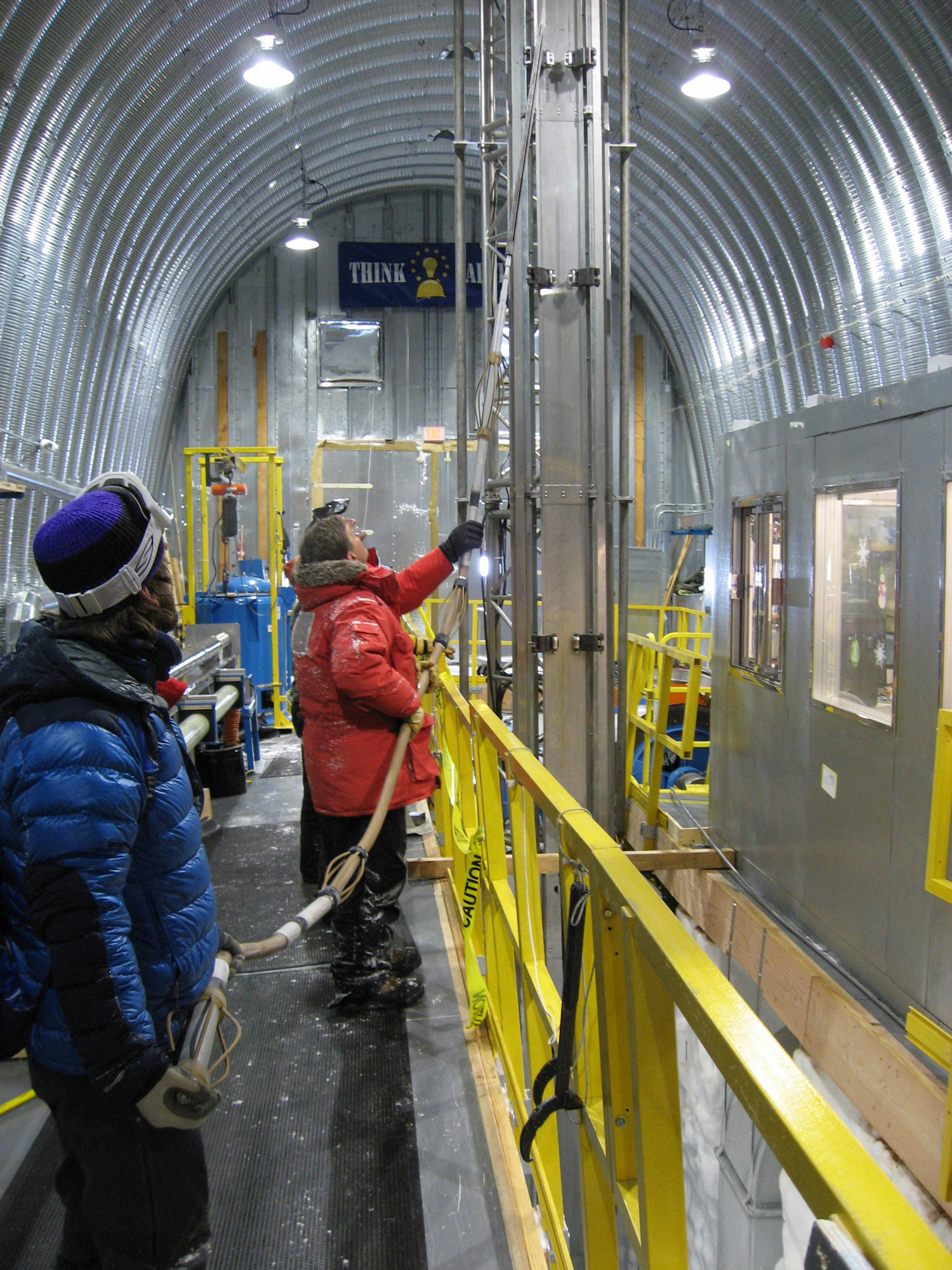
The five-meter-long sonic-logging tool is about to be lowered into the drill slot. In the foreground, Dan is holding the transmitter section. The flexible tan hose-like sections separate the transmitter and the receivers, and prevent propagation of sound waves directly through the tool itself. Photo: Ed Waddington
2010-2011 Field Season
2009-2010 Field Season
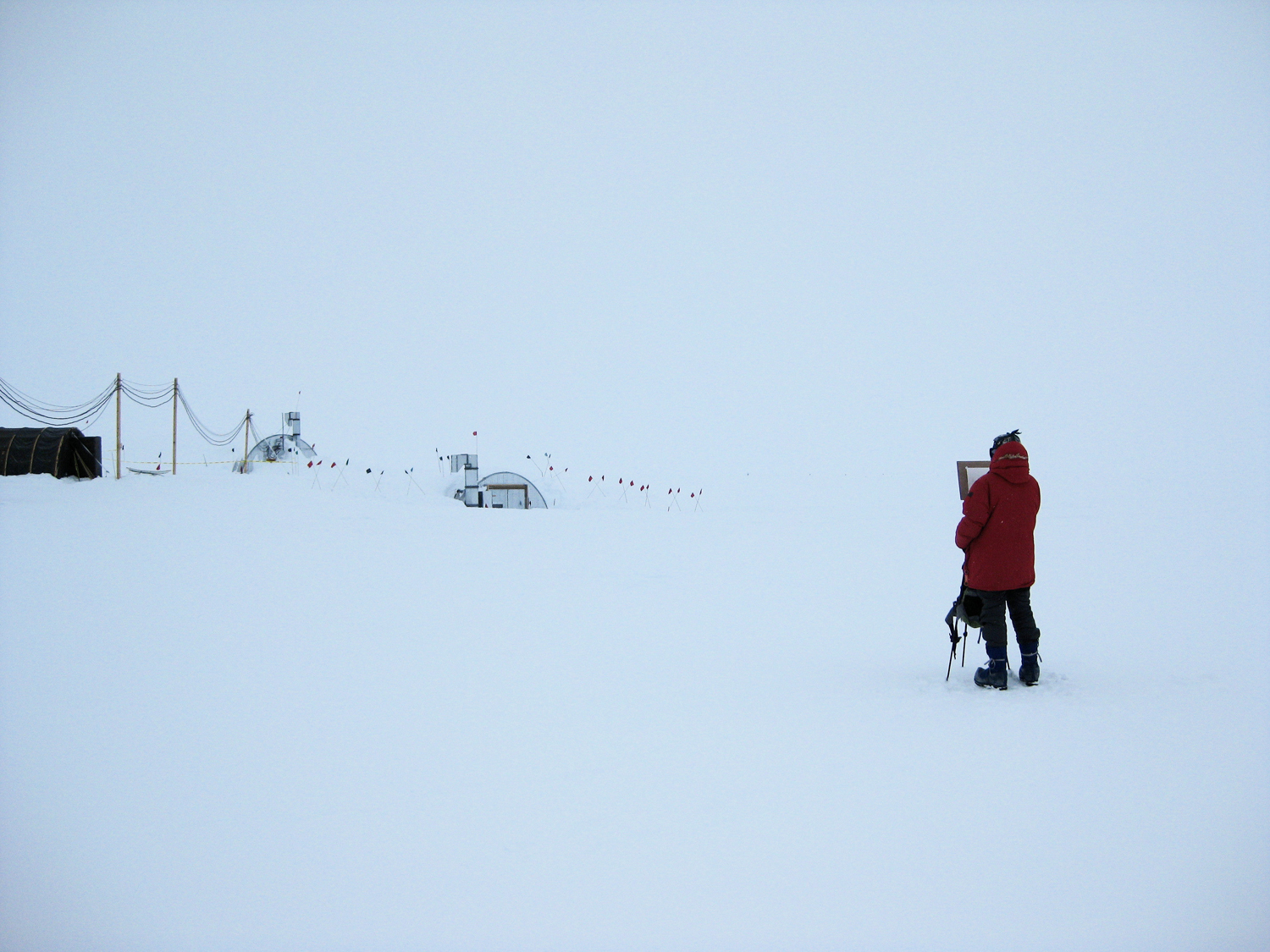
NSF Artists and Writers Program award recipient Anna McKee sketches at WAIS Divide during the 2009-2010 field season.. Photo: Anna McKee
2008-2009 Field Season
2007-2008 Field Season
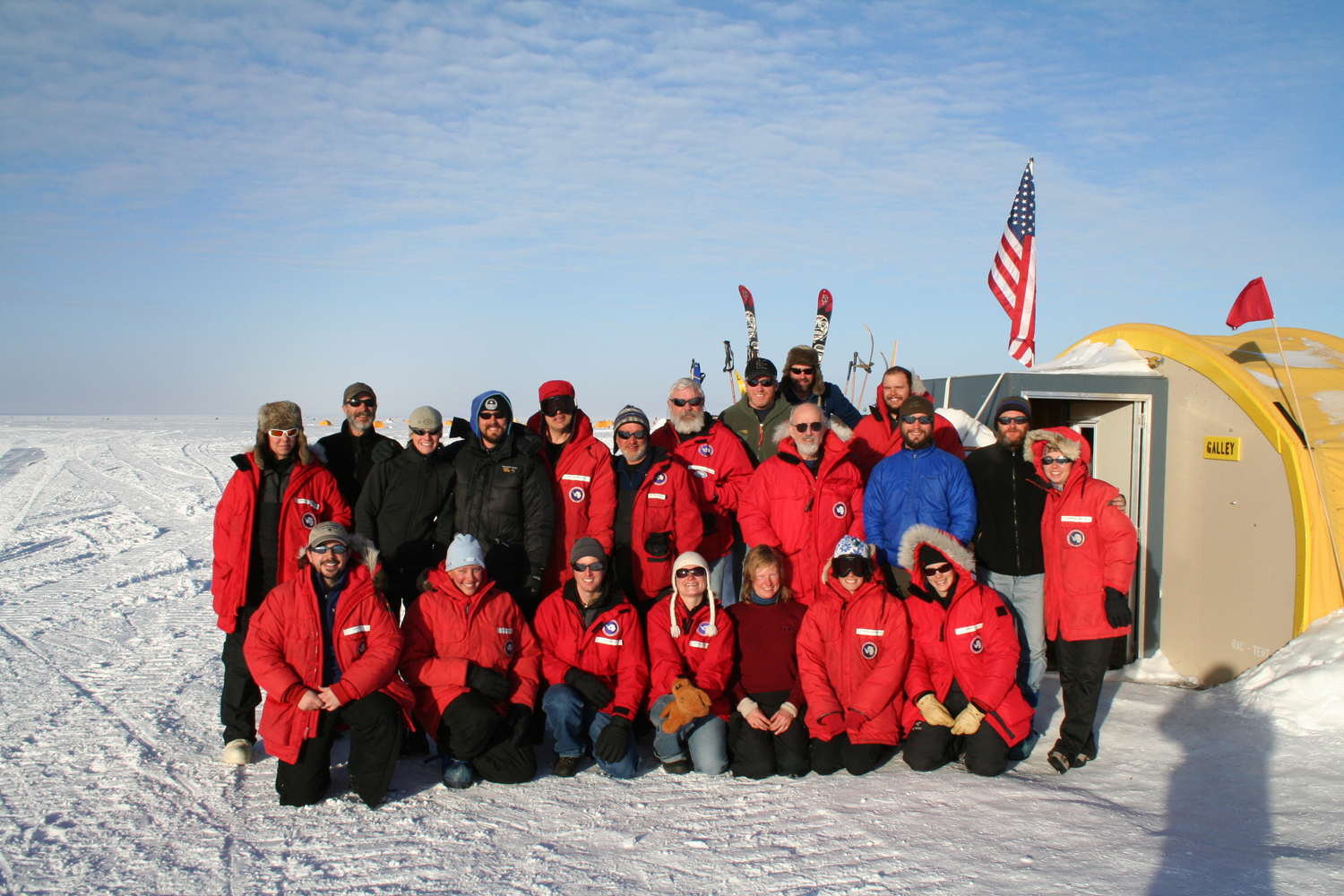
Back row (L to R): Nicole Reed, Bill Mason, Sylvia Englund, Trevor Popp, Paul Sendelbach, Dave Ferris, Tony Wendricks, Michael Jayred, Charlie Bentley (front), Scott Haman (back), John Mischler, Tanner Kuhl, Laurent Augustin, Gabrielle Dreyfus. Front row (L to R): Joe Souney, Ursula Rick, Jay Johnson, Kristina Dahnert, Inger Seierstad, Rebecca Anderson, Anais Orsi. Not shown: Kendrick Taylor, Zach Smith, Jim Koehler, Nicolai Mortensen, John Robinson, Brent Folmer, Geoff Hargreaves, Brian Bencivengo Credit: Joseph Souney
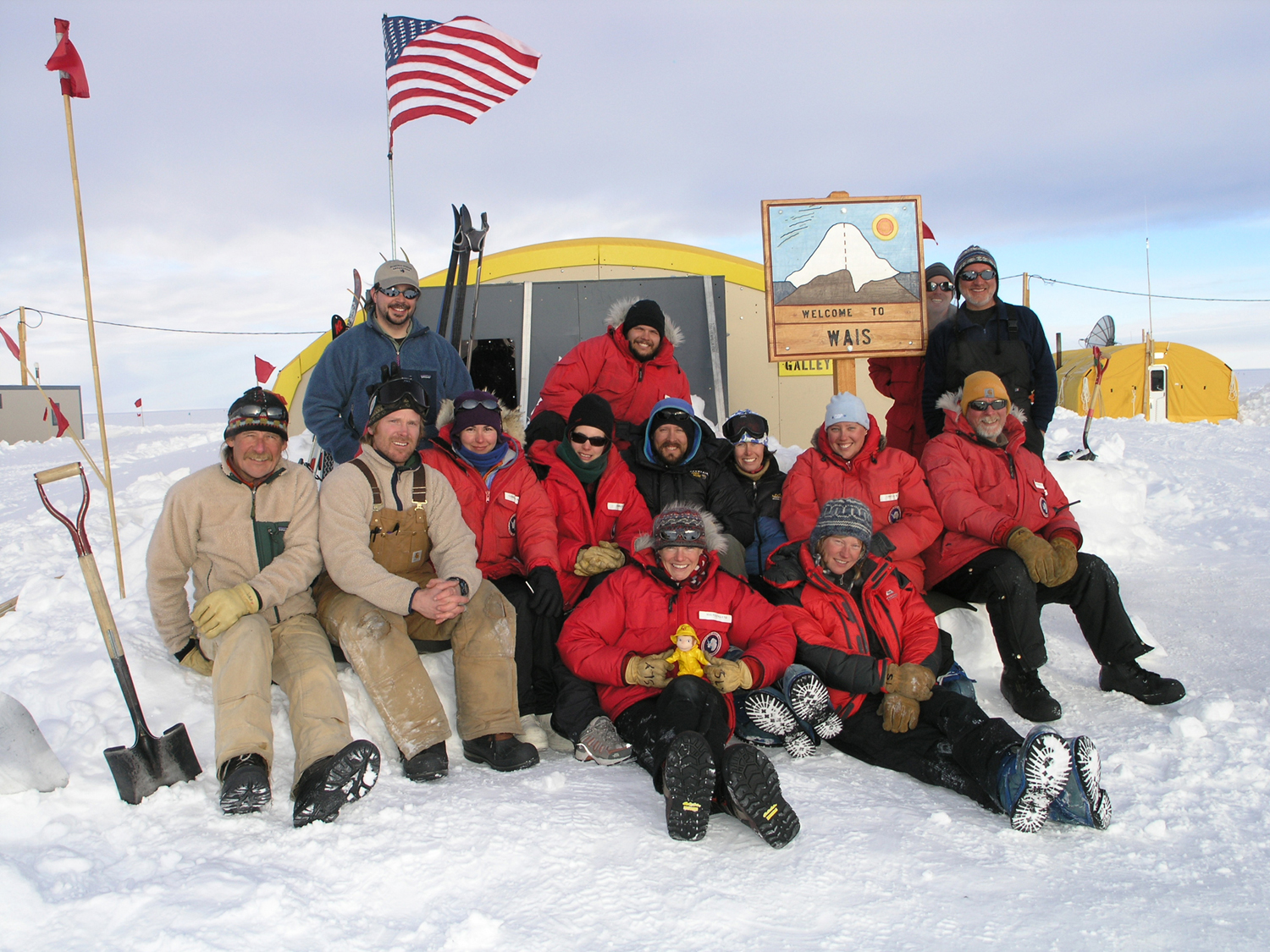
Group picture of the science technicians, NICL and SCO. Back row (L to R): Joe Souney, John Mischler, (Jay Johnson sneaking into the picture), and Dave Ferris. Middle row (L to R): Zach Smith, Brian Bencivengo, Gabrielle Dreyfus, Anais Orsi, Trevor Popp, Rebecca Anderson, Ursula Rick and Geoff Hargreaves. Front row (L to R): Sylvia Englund and Inger Seierstad. Credit: Brian Bencivengo
The drill head of the DISC Drill with a core inside the drill barrel. The rotating drill head contains four razor sharp cutters that shave out an annulus of ice, which the drill then slides down into. As the drill slides down into the annulus it slides over the core, which is 122 mm (4.8 inches) in diameter and 2.7 meters long. When a cable pulls up the drill, four cams grab the core and break it free. After the drill is pulled back to the surface it is lowered from a vertical to horizontal orientation so that the ice core can be removed from the drill barrel. Credit: Jay Johnson
2006-2007 Field Season
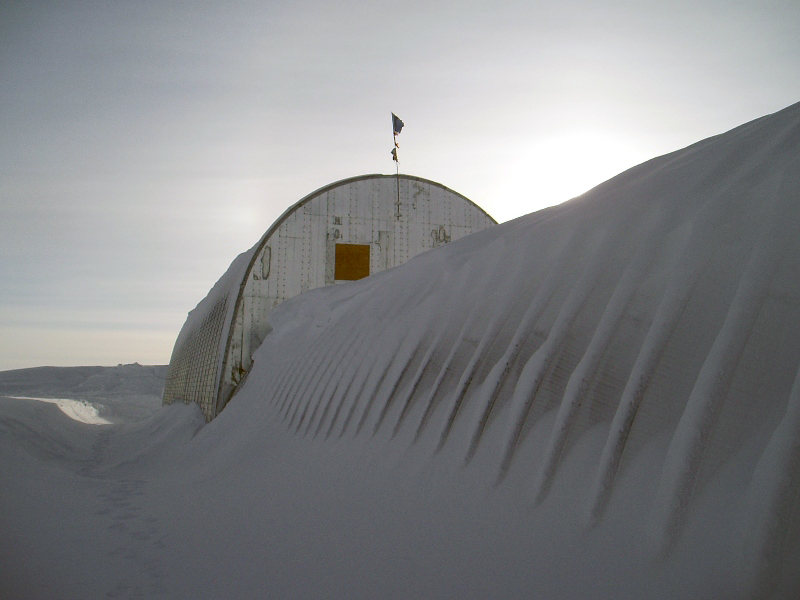
The arch facility at WAIS Divide at the beginning of the 2006-2007 field season. The arch wintered well. The end walls took one full day to access via shovels. The outside wall (the one away from the camp) was drifted in heavily. There was also a trailing drift downwind from the arch that is long (~150+ yards) and tall. Photo Credit: National Science Foundation
2005-2006 Field Season
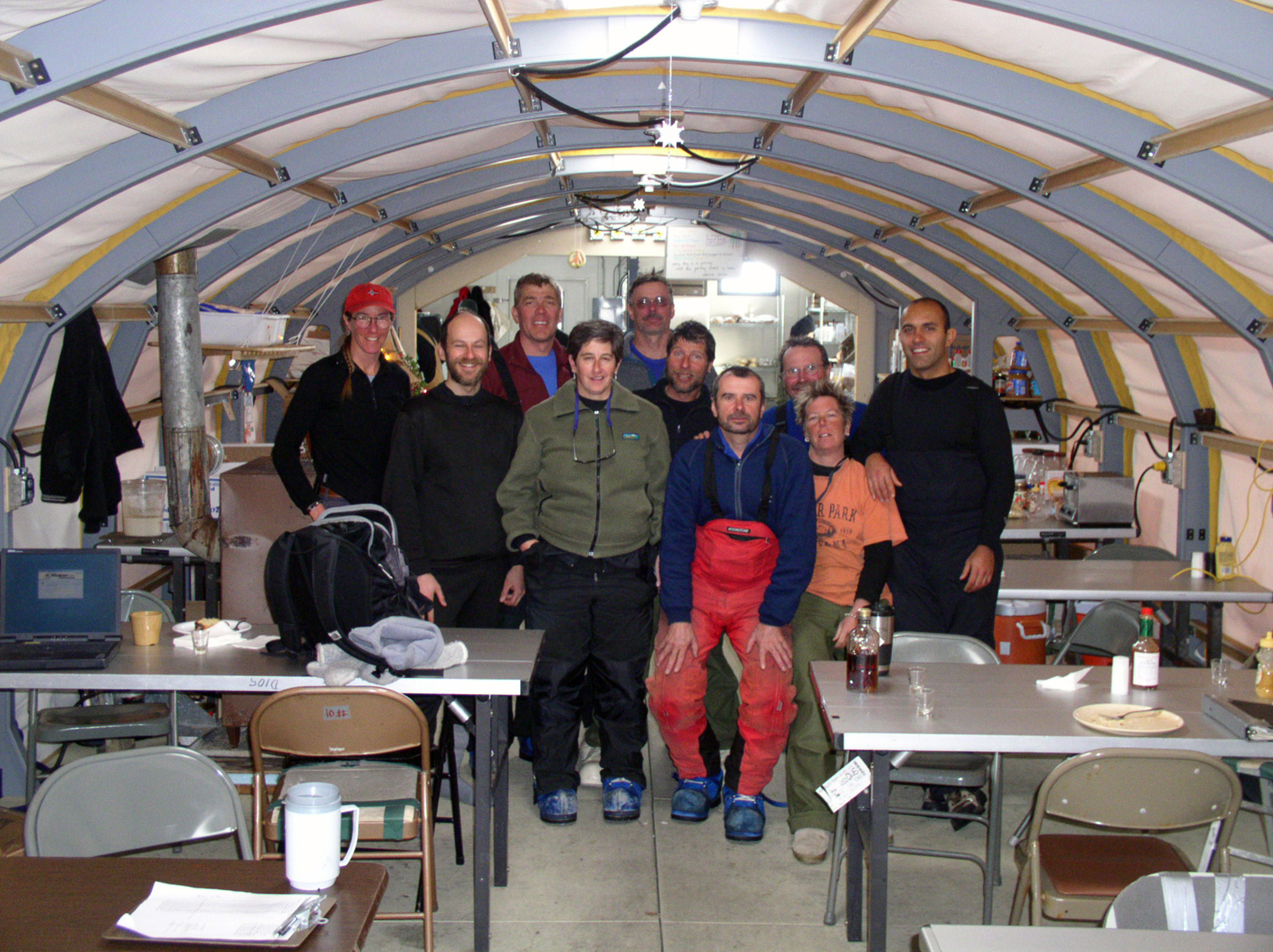
Toasting to a successful firn ice drilling field campaign. From left to right: Lou Albershardt (ICDS), Mark Battle (Bowdoin), Mark Dreier (U. Colorado), Julie Palais (NSF), Todd Sowers (PennState), Jay Kyne (ICDS), Mike Waskiewicz (ICDS), Terry Gacke (ICDS), Beth Bergeron (ICDS), Murat Aydin (U. California). Photo: Mark Dreier
Science Meetings
Core Processing Lines
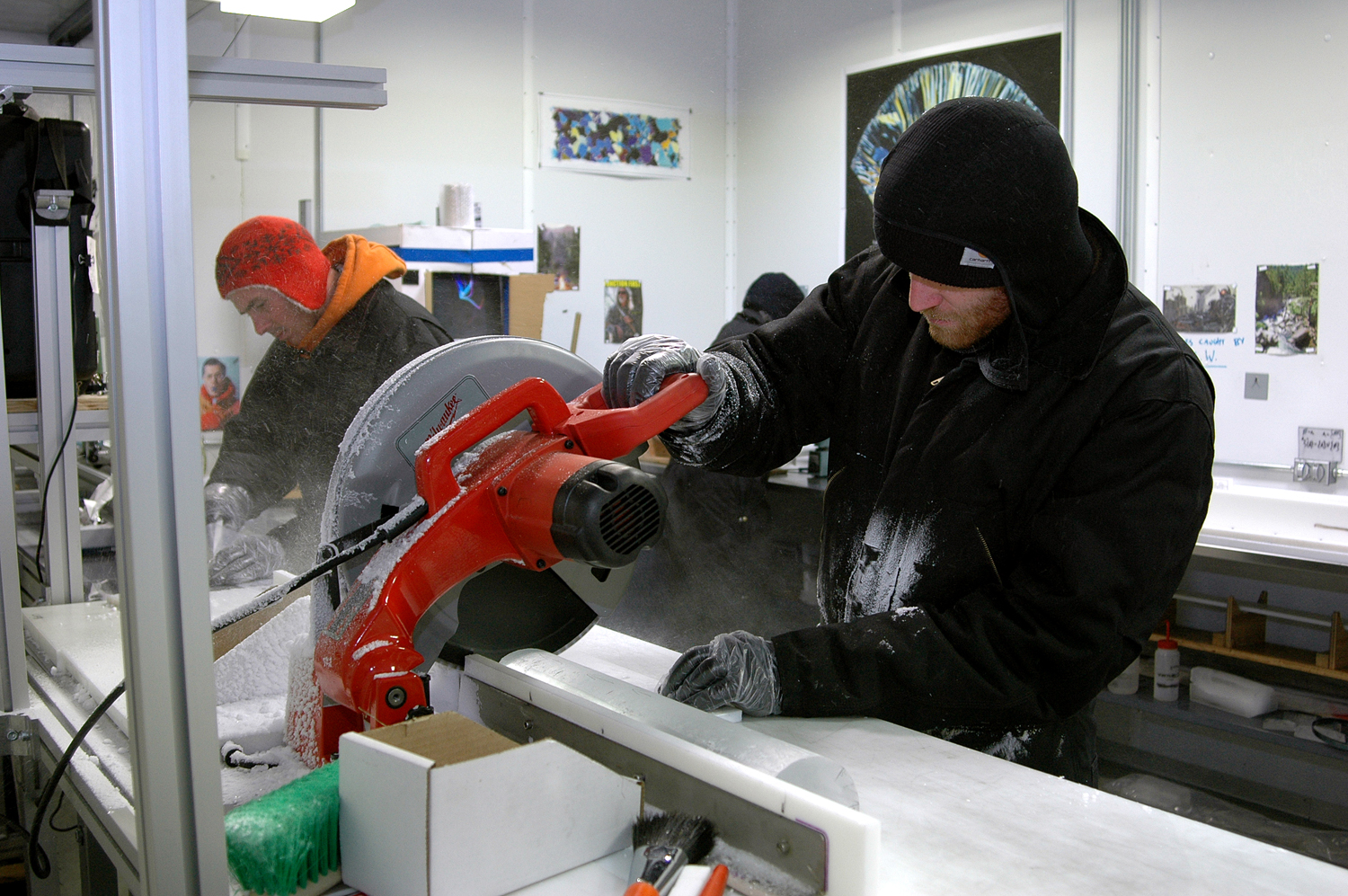
Logan Mitchell, from Oregon State University, saws a section of an ice core destined for gas measurements. The WAIS Divide researchers are particularly interested in measuring past concentrations of greenhouse gases like carbon dioxide and methane in the atmosphere. Photo Credit: Peter Rejcek/National Science Foundation
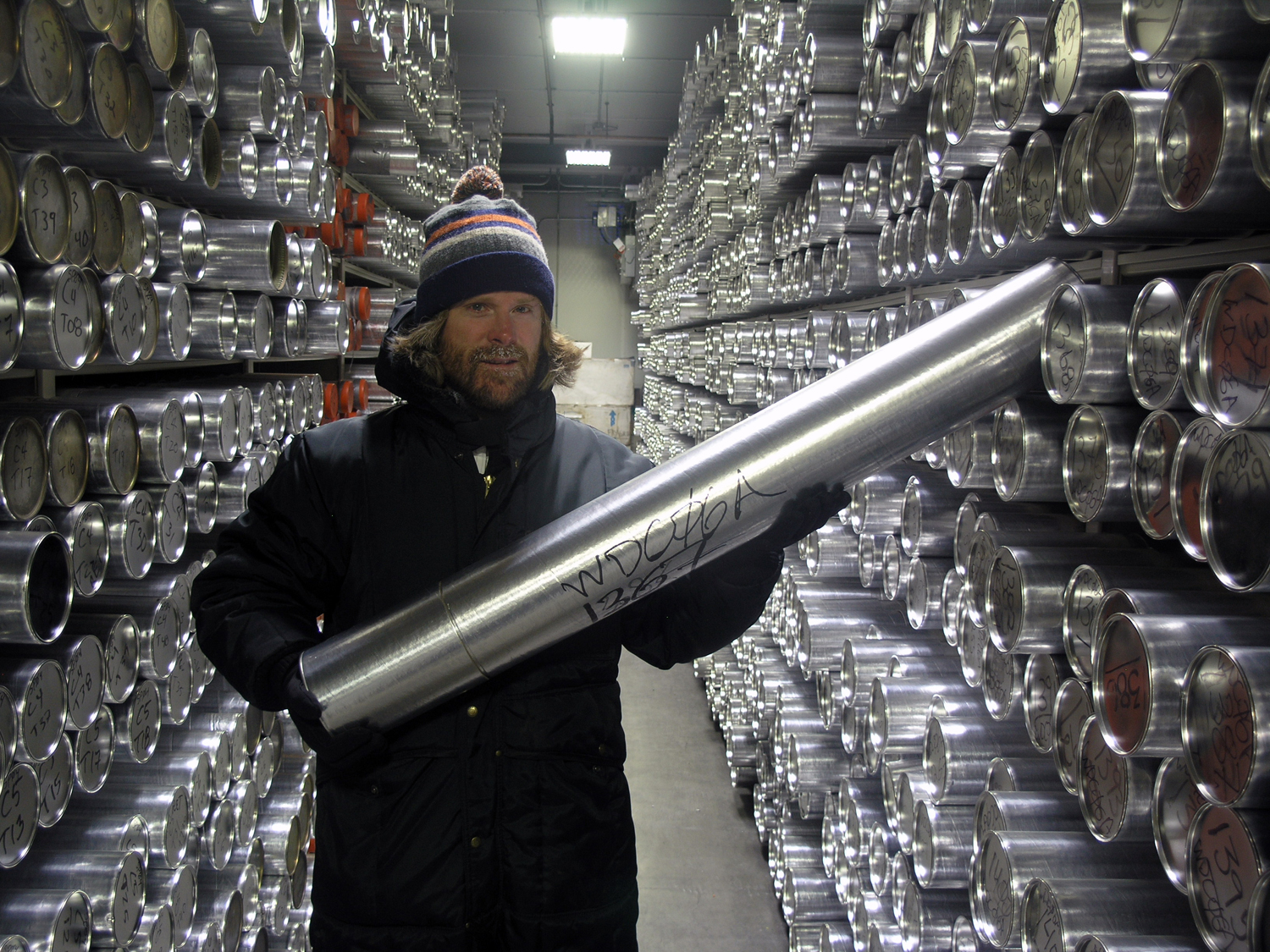
A National Ice Core Laboratory (NICL) staff member holds a 1-meter-long section of the WAIS Divide ice core. All 3,405 meters of the WAIS Divide ice core are in 1-meter-long sections and are stored in NICL's main archive freezer, which is held at a temperature of -36 degrees Celcius. Photo Credit: Peter Rejcek/National Science Foundation
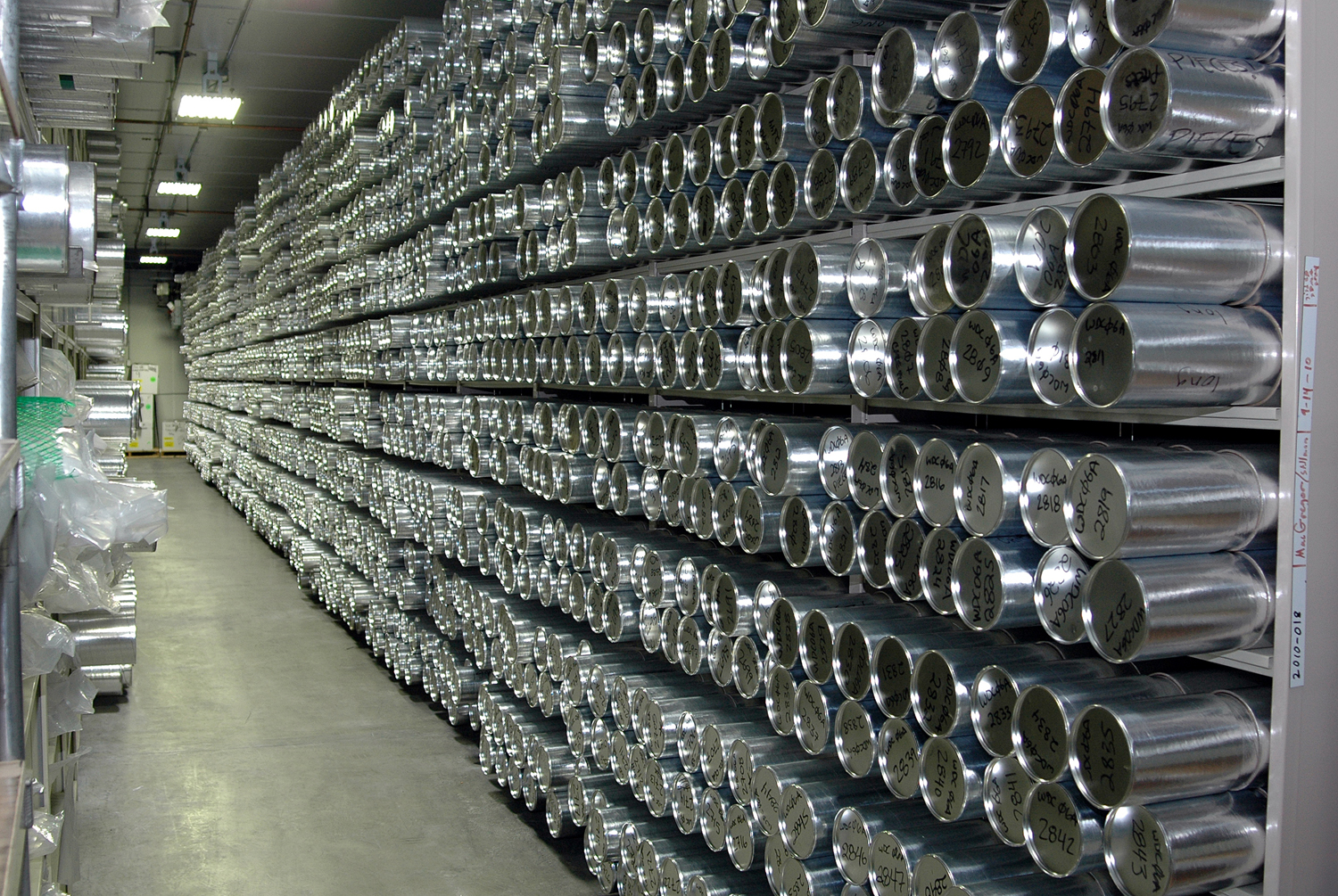
Each silver tube on these shelves contains a 1-meter-long section of the WAIS Divide ice core. This repository is at the National Ice Core Laboratory (NICL) in Lakewood, Colorado. The NICL freezer is kept at -36 degrees C to preserve the integrity of the ice. To learn more about NICL visit the NICL website. Photo Credit: Peter Rejcek/National Science Foundation
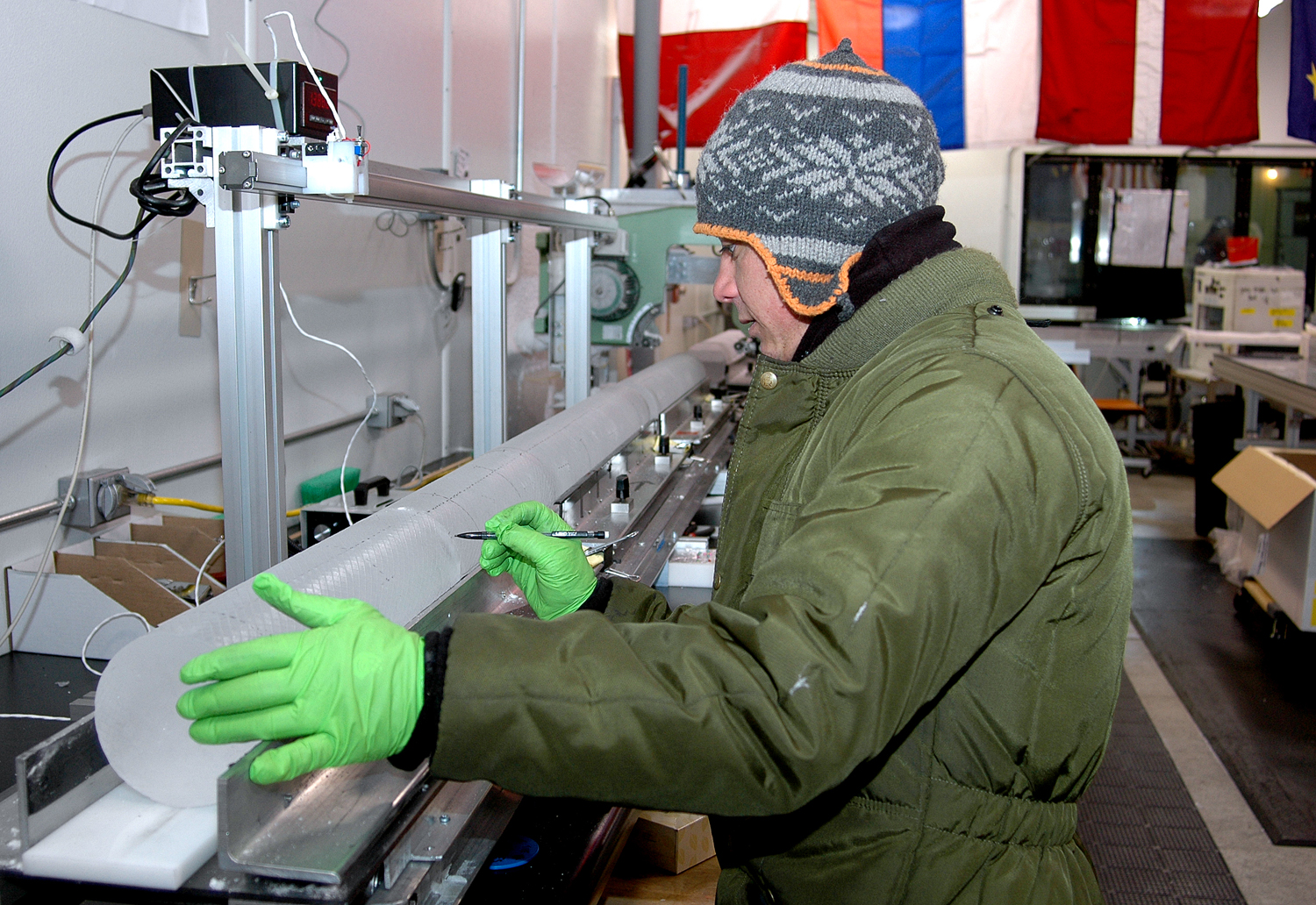
Science technician Tommy Cox measures a section of the WAIS Divide ice core as it begins its journey down the 2010 core processing line at the National Ice Core Lab near Denver, CO. The technicians will cut the ice so it can be sent to labs around the country for analysis. Photo Credit: Peter Rejcek/National Science Foundation

